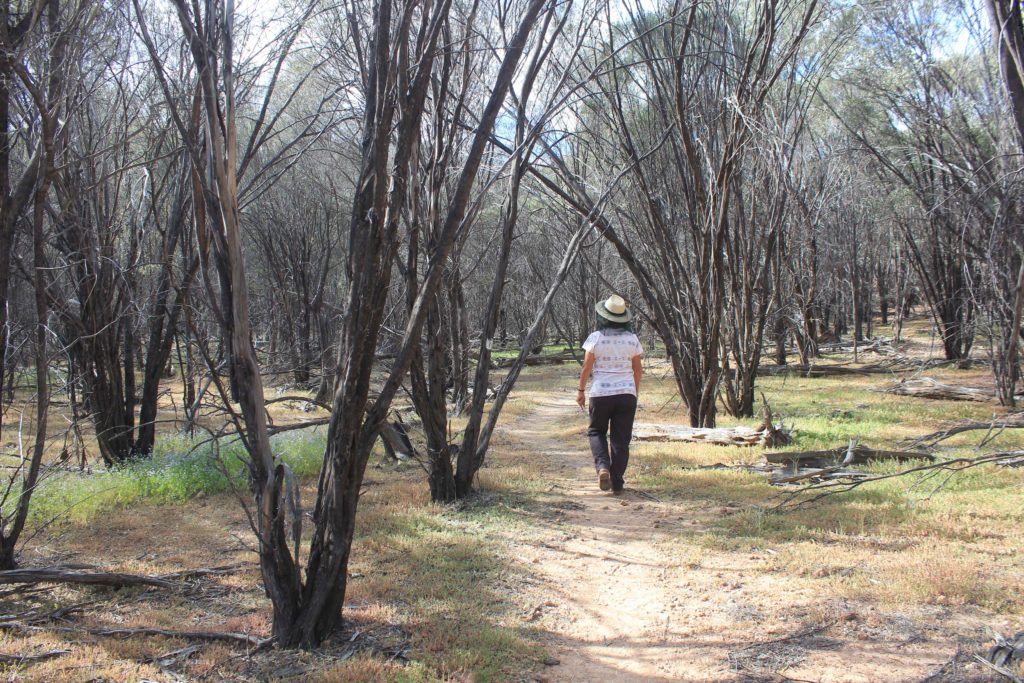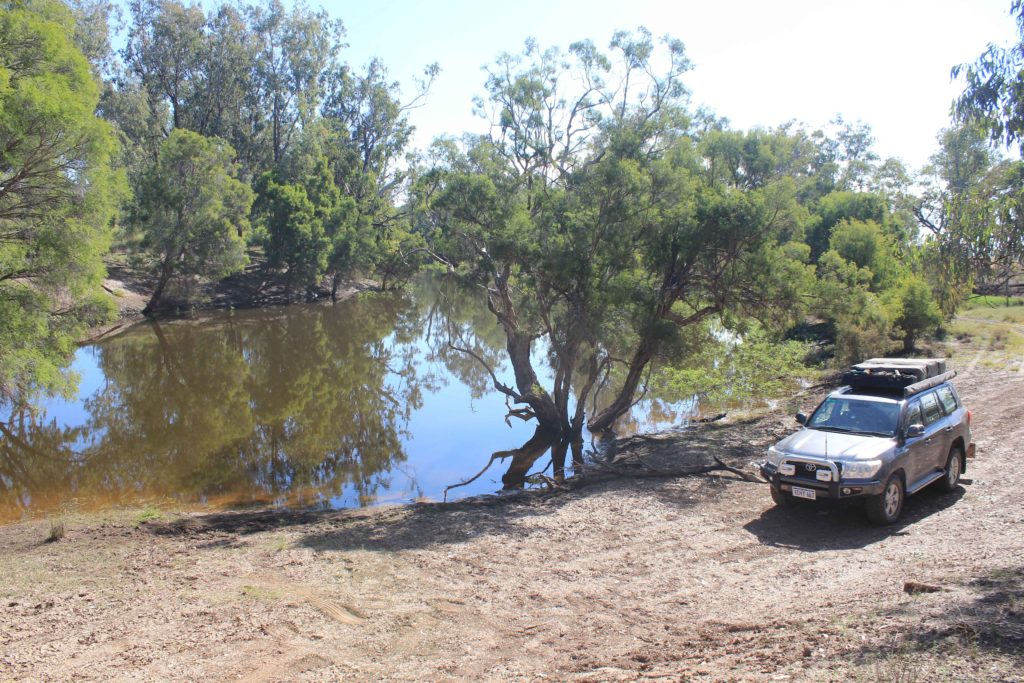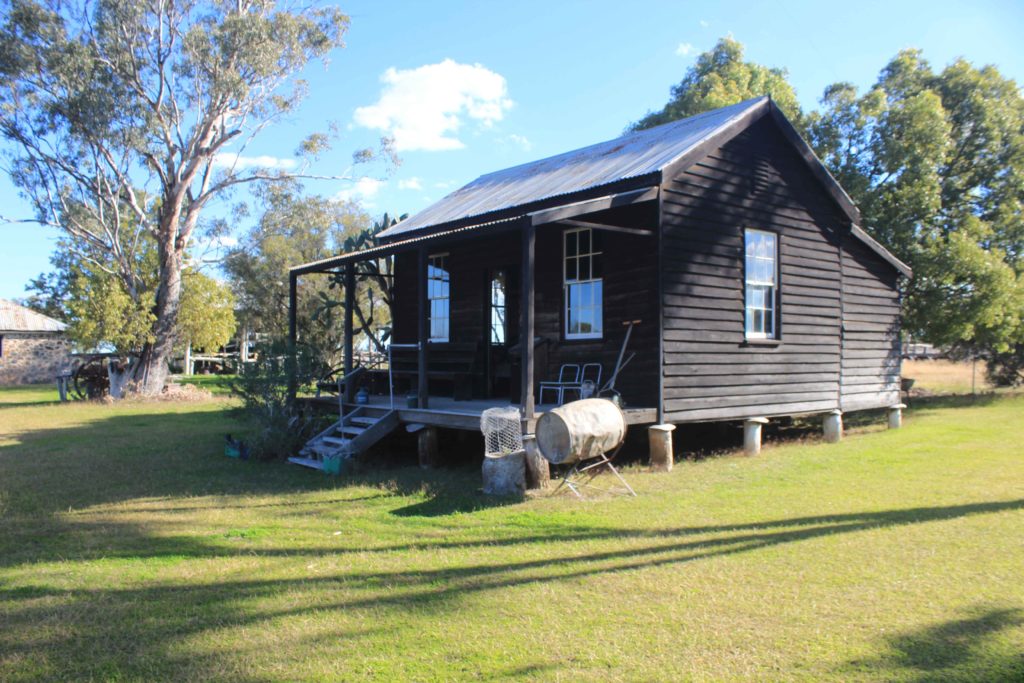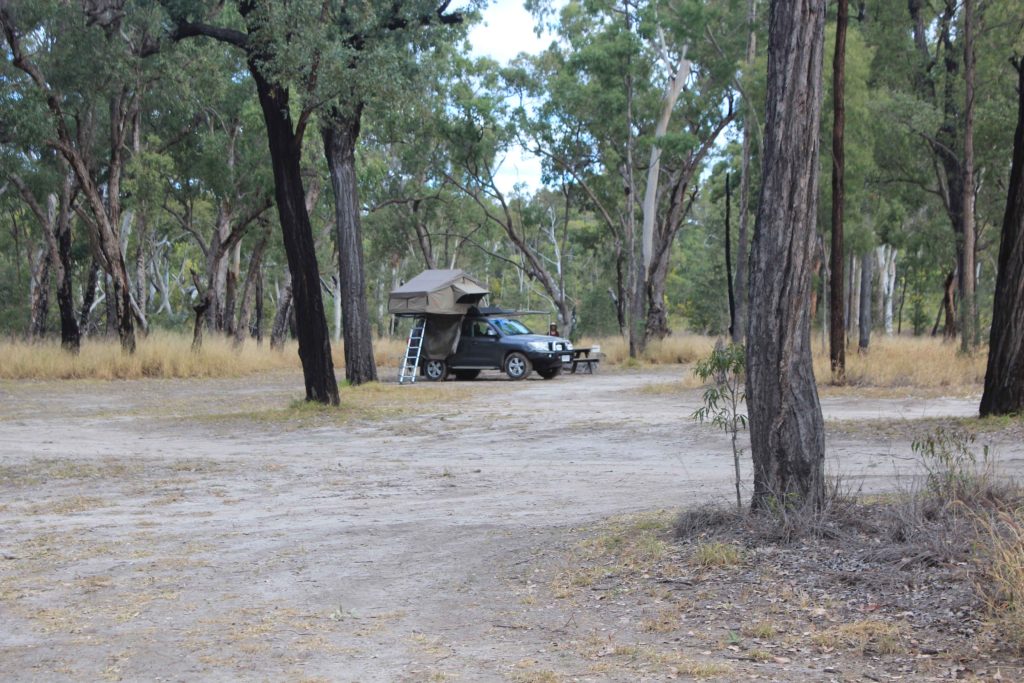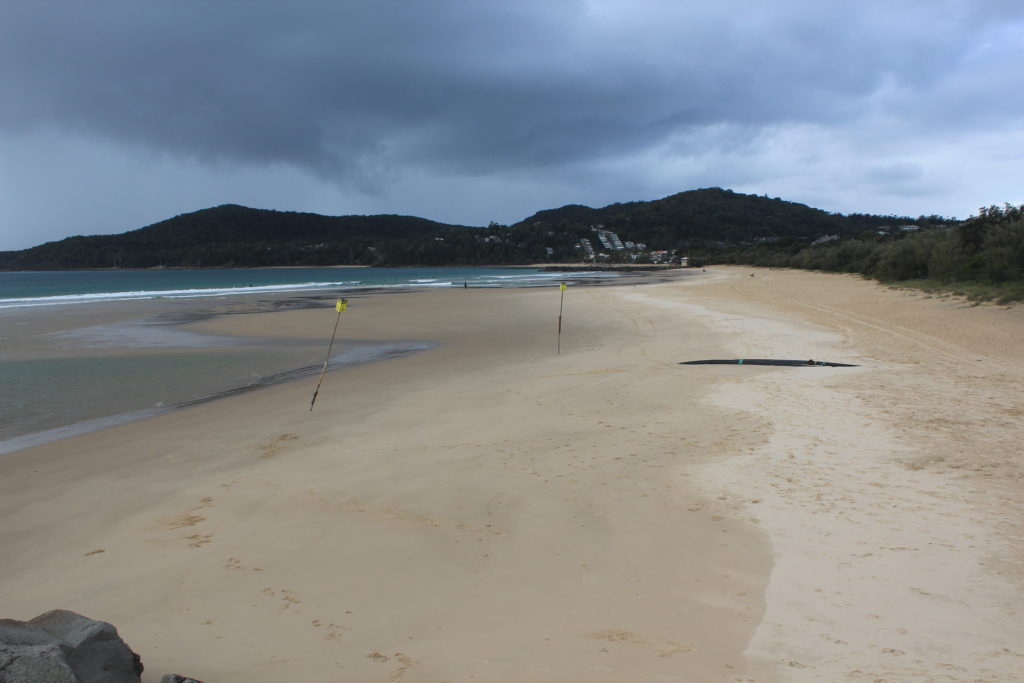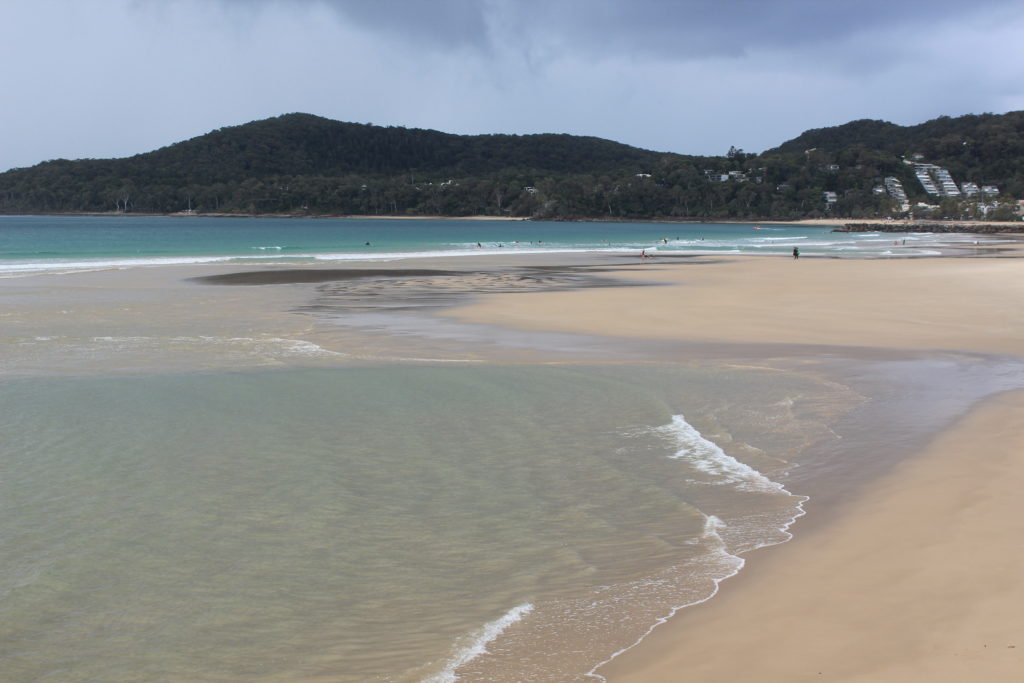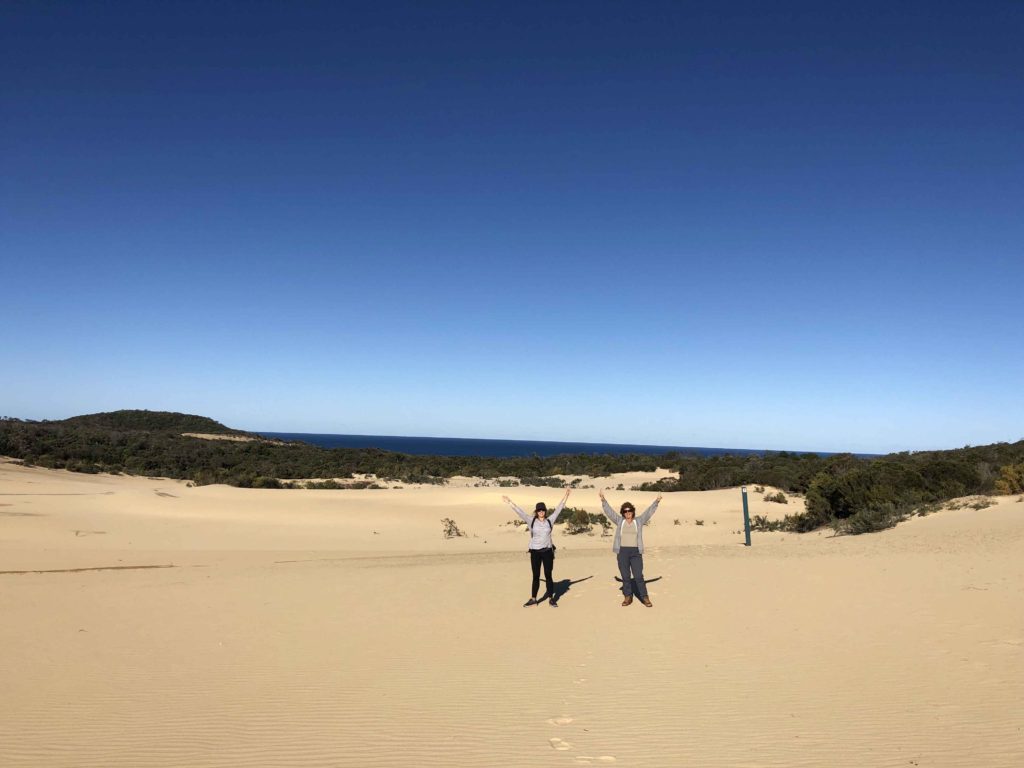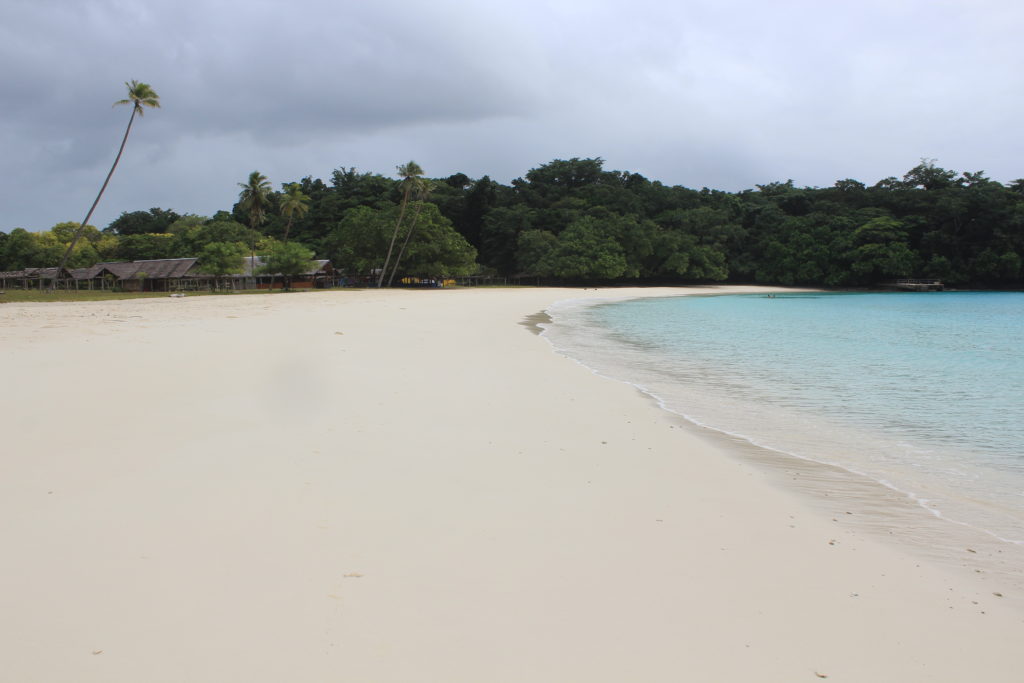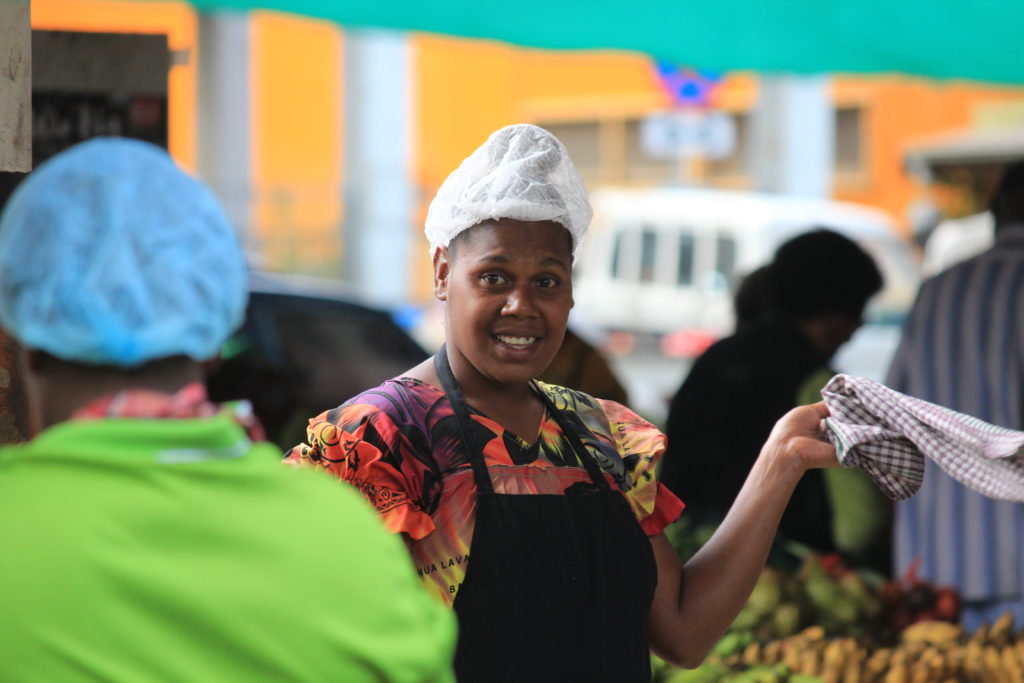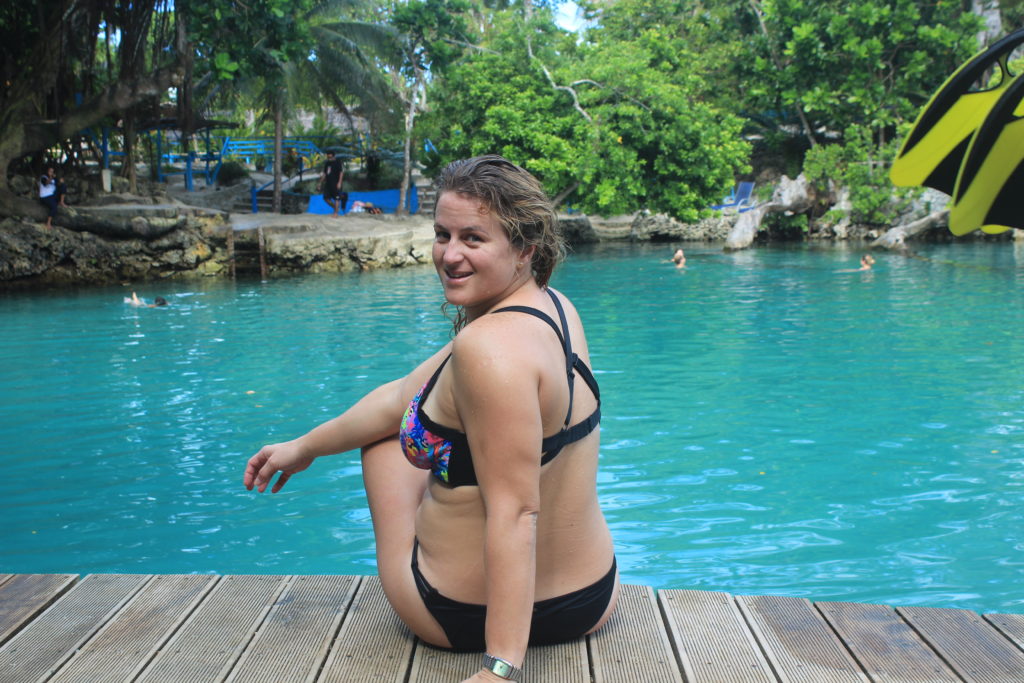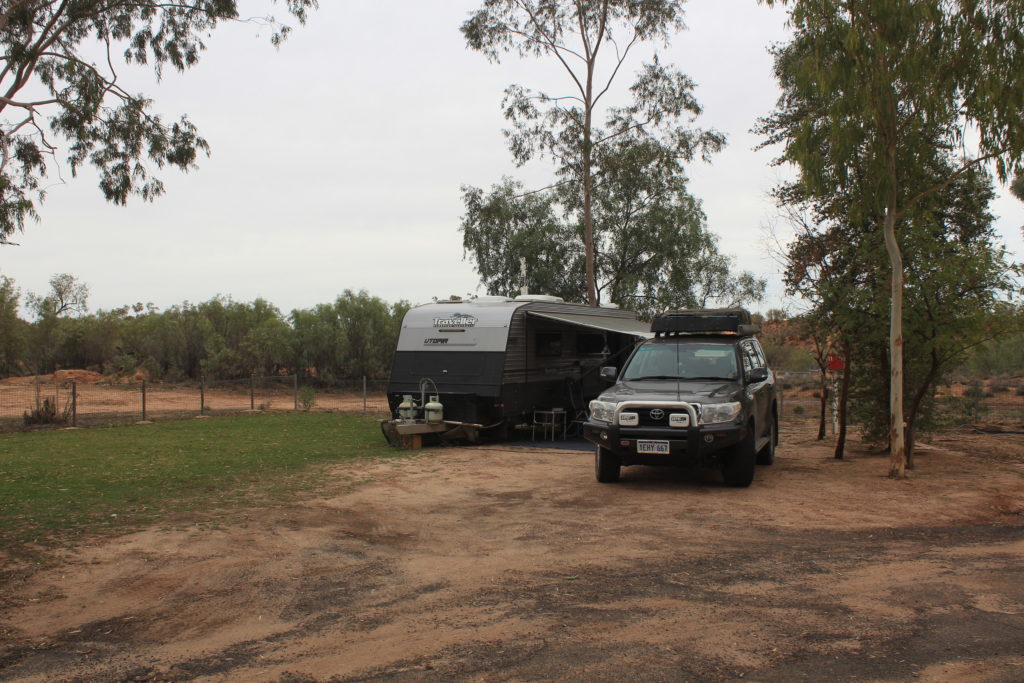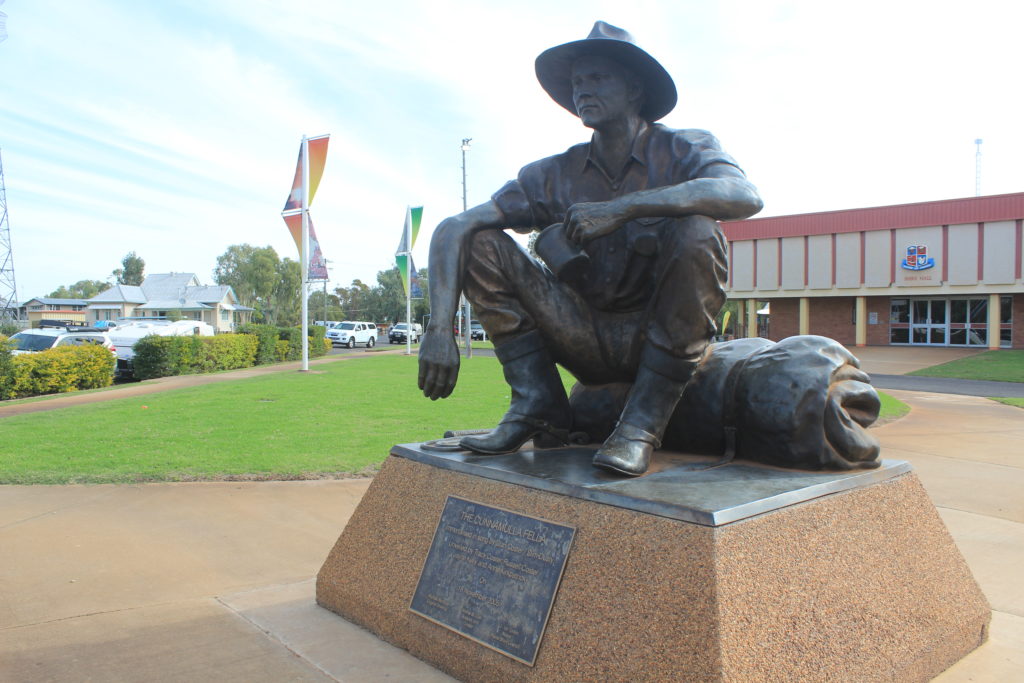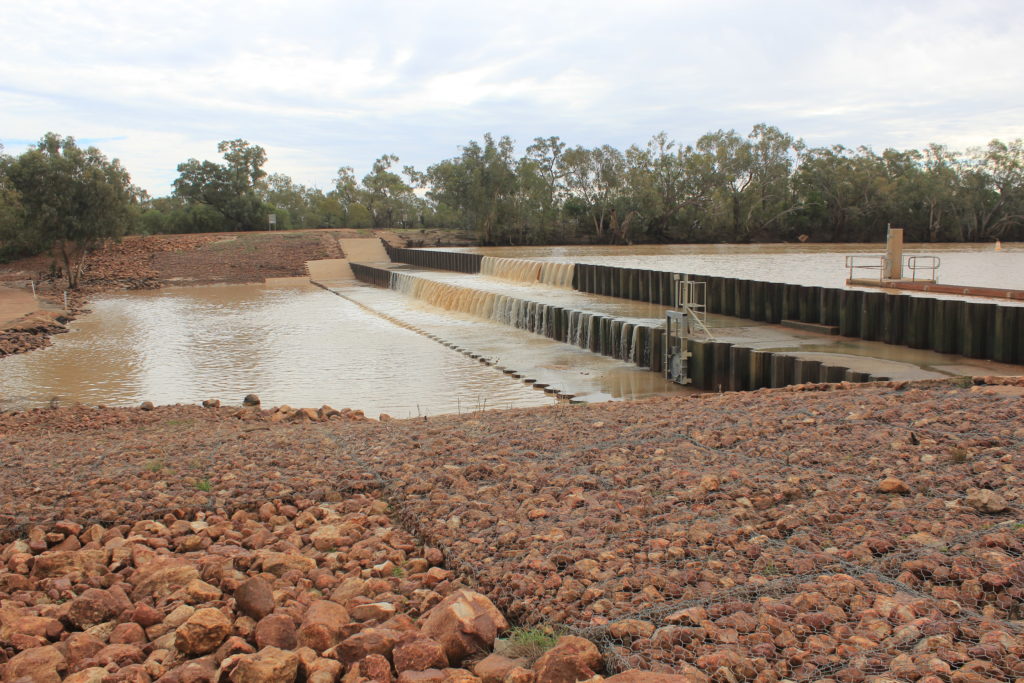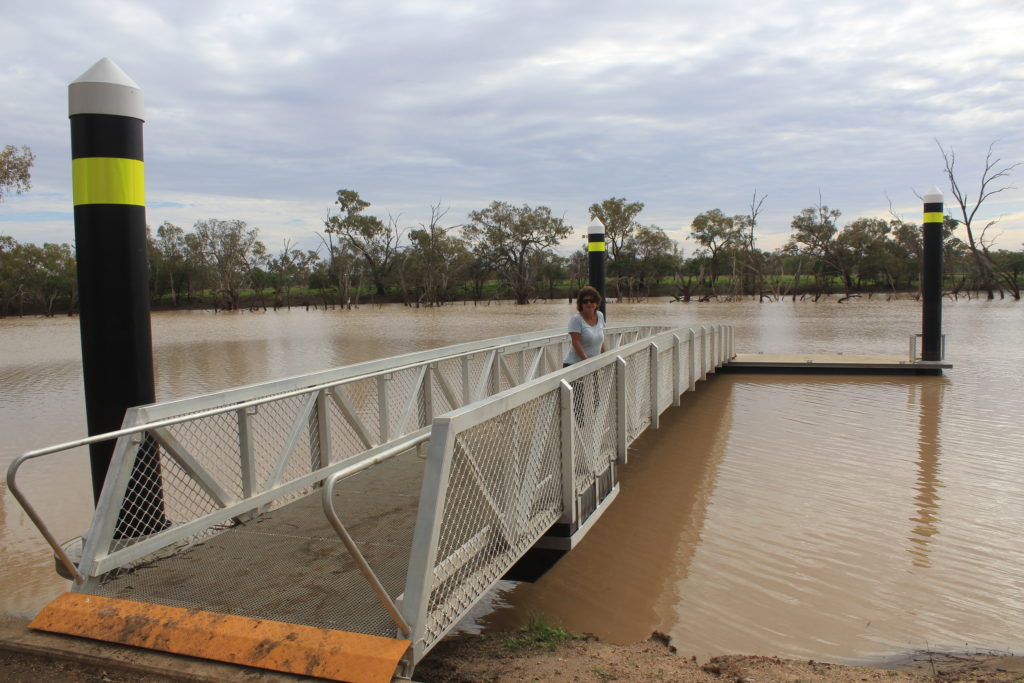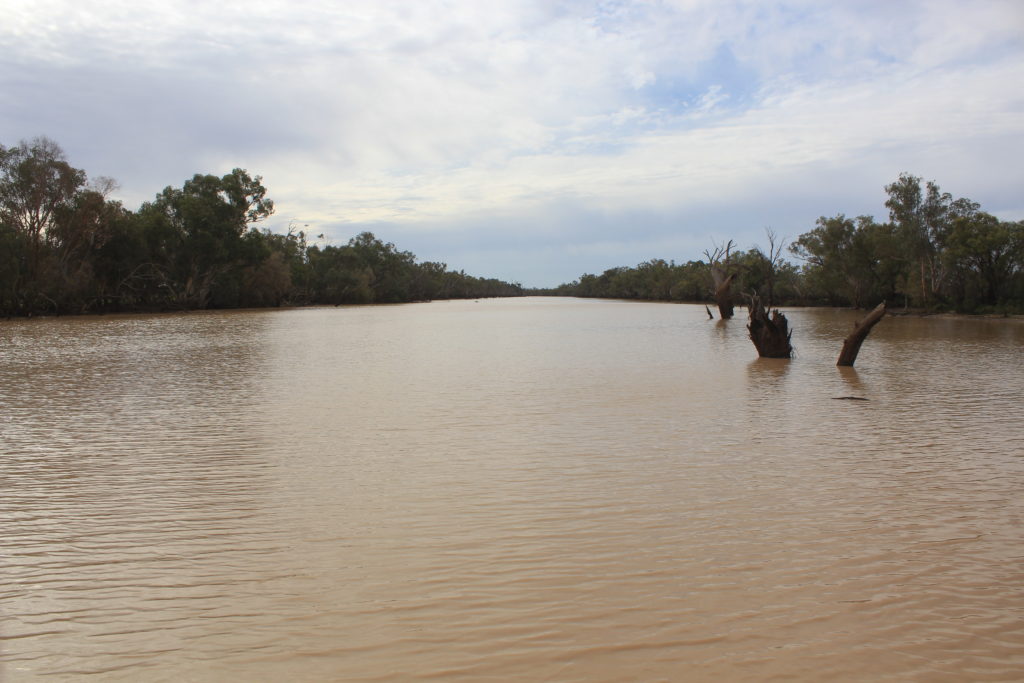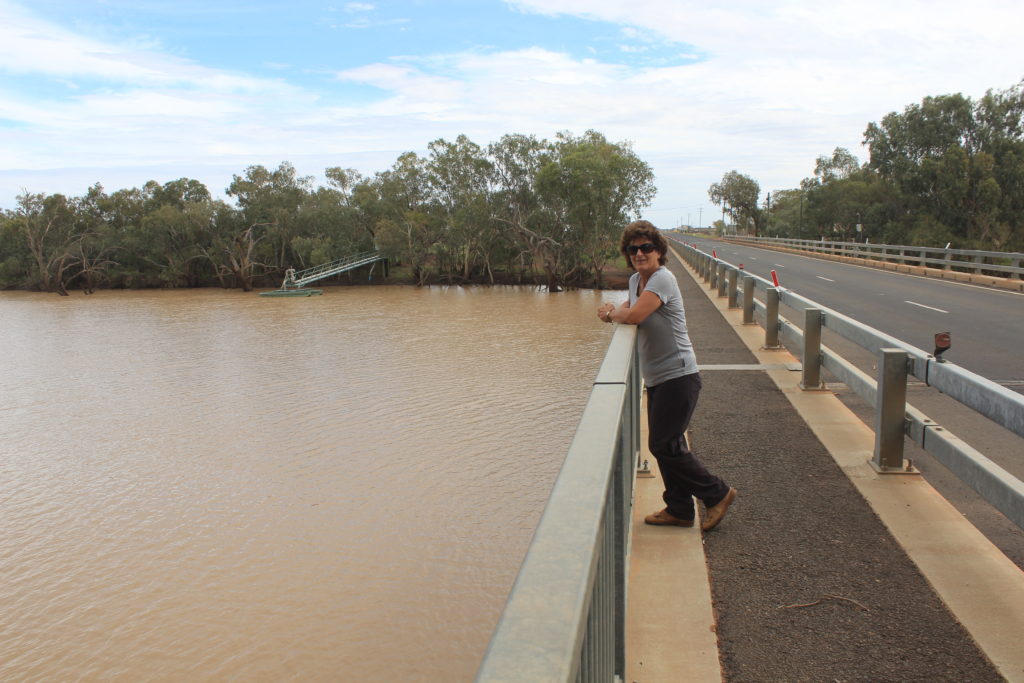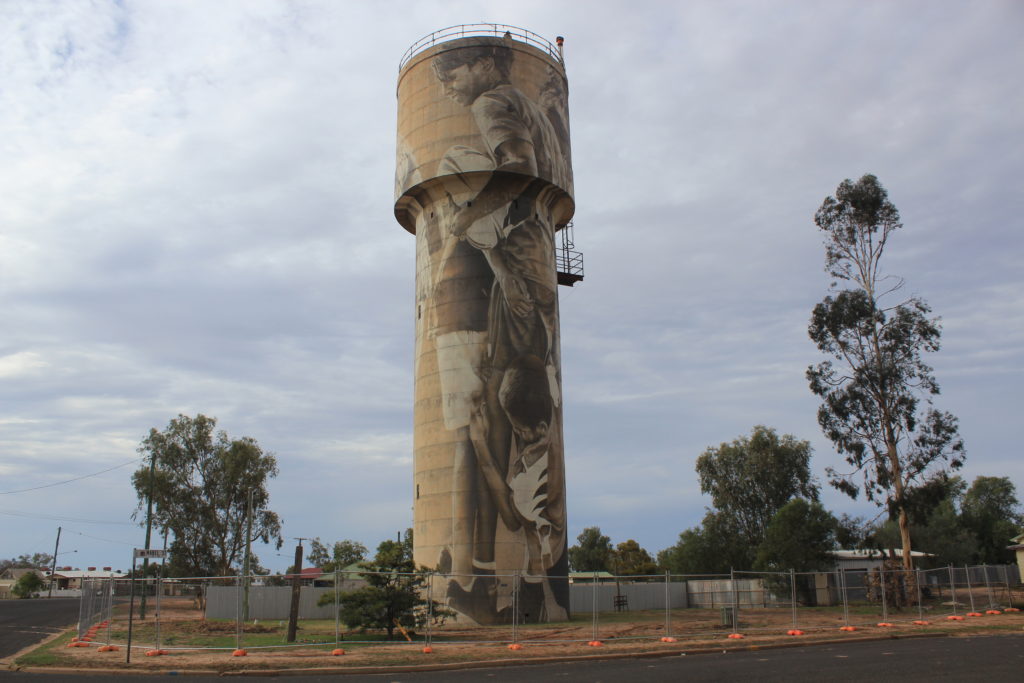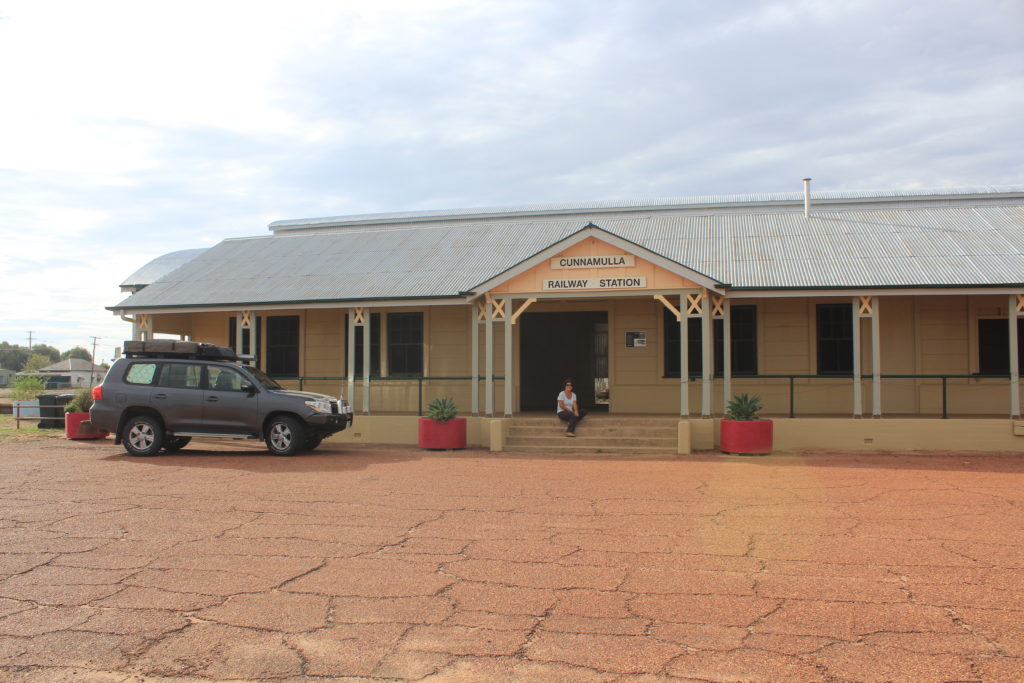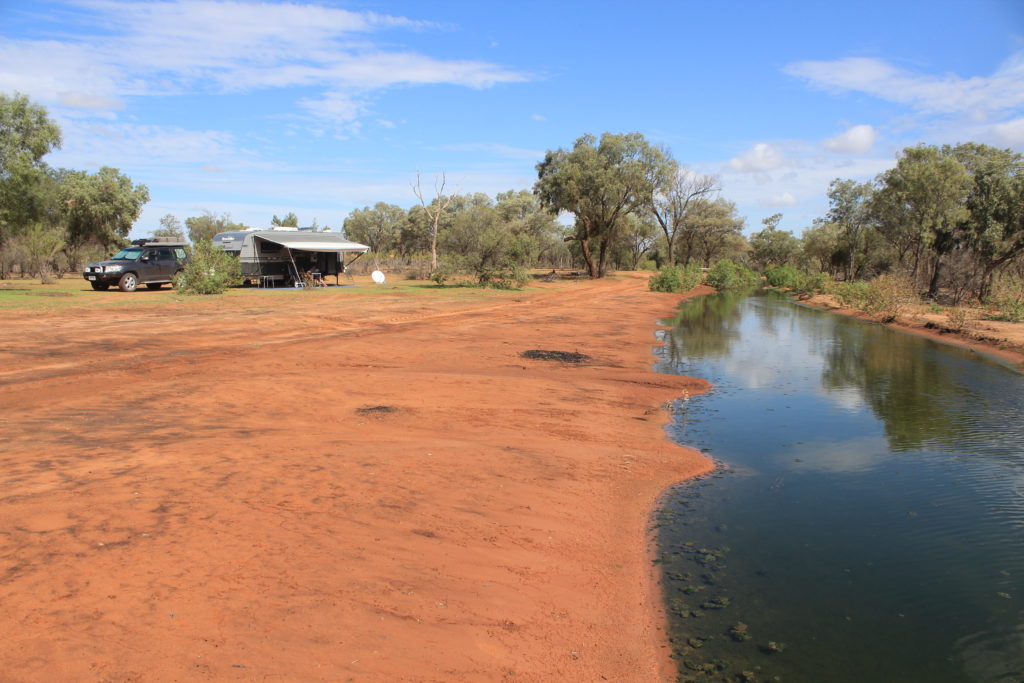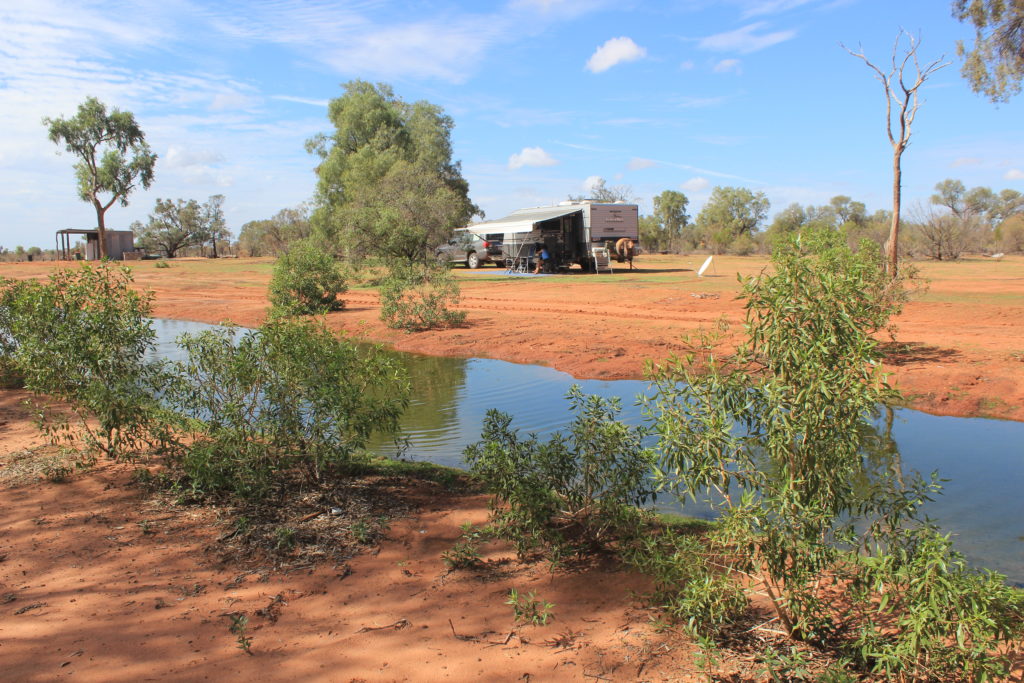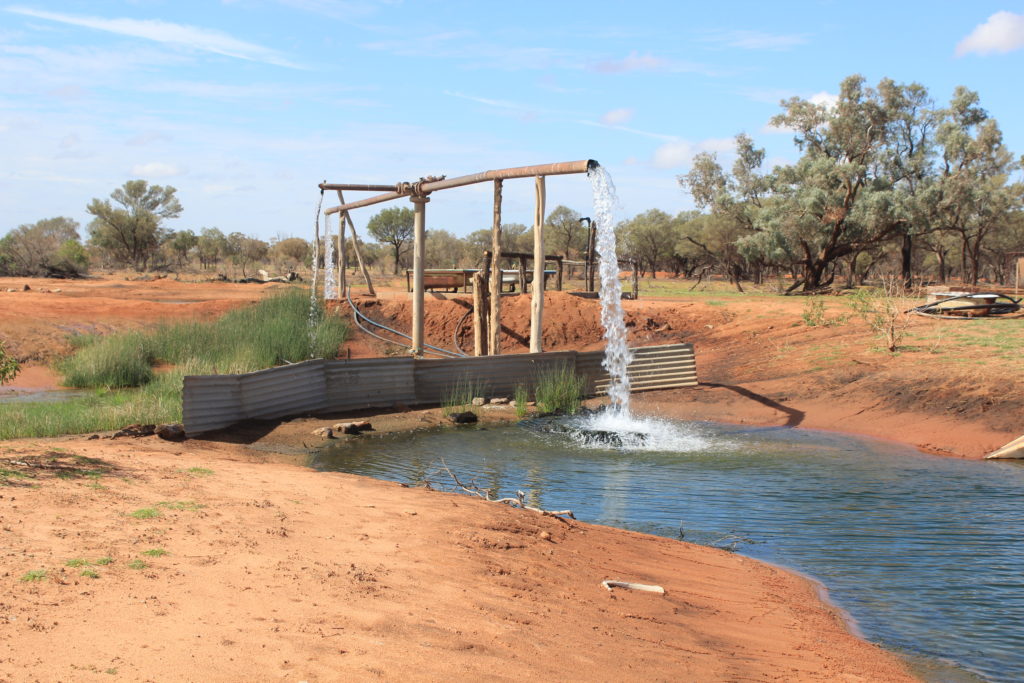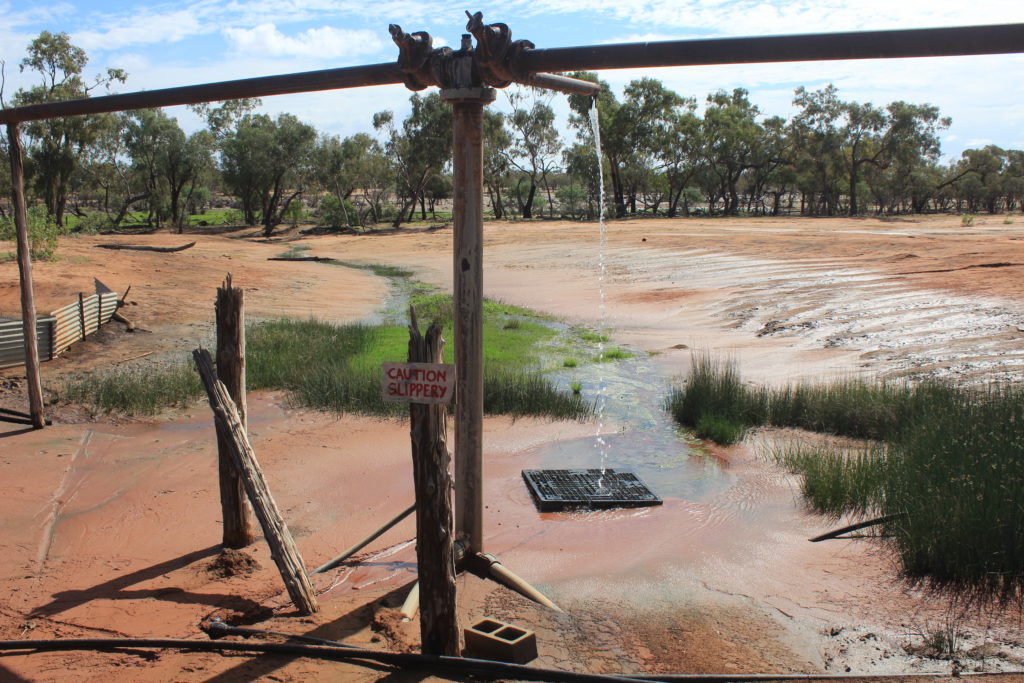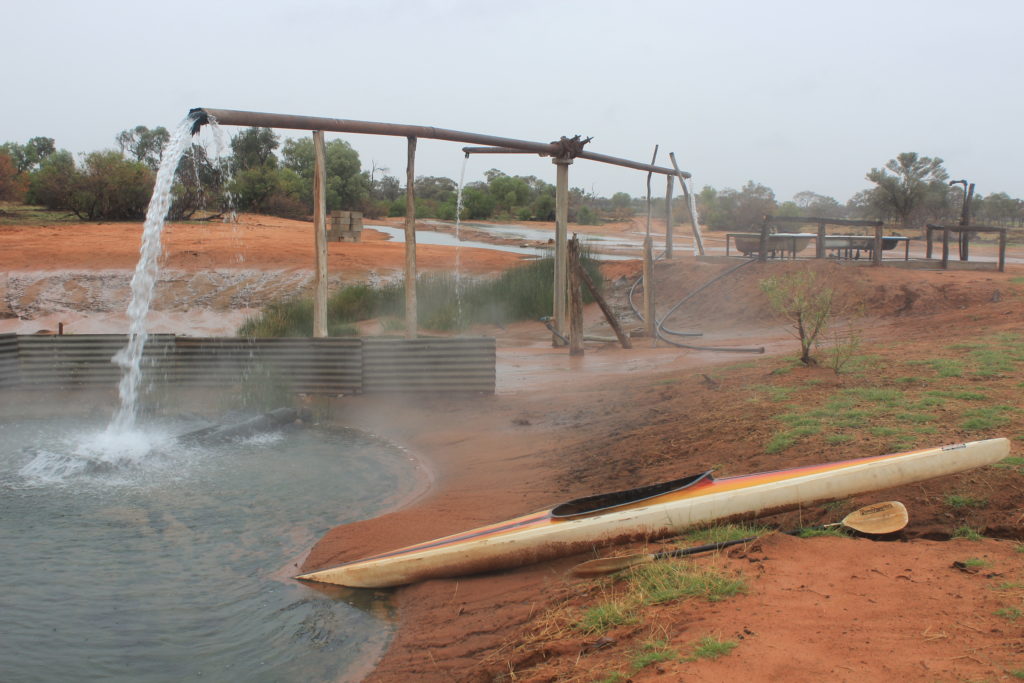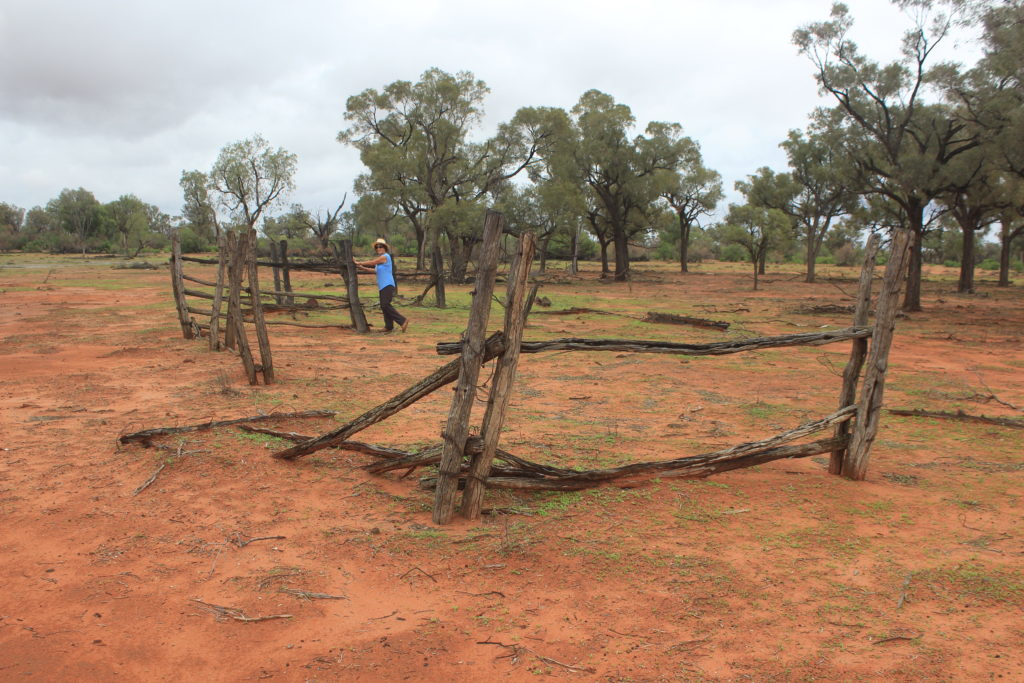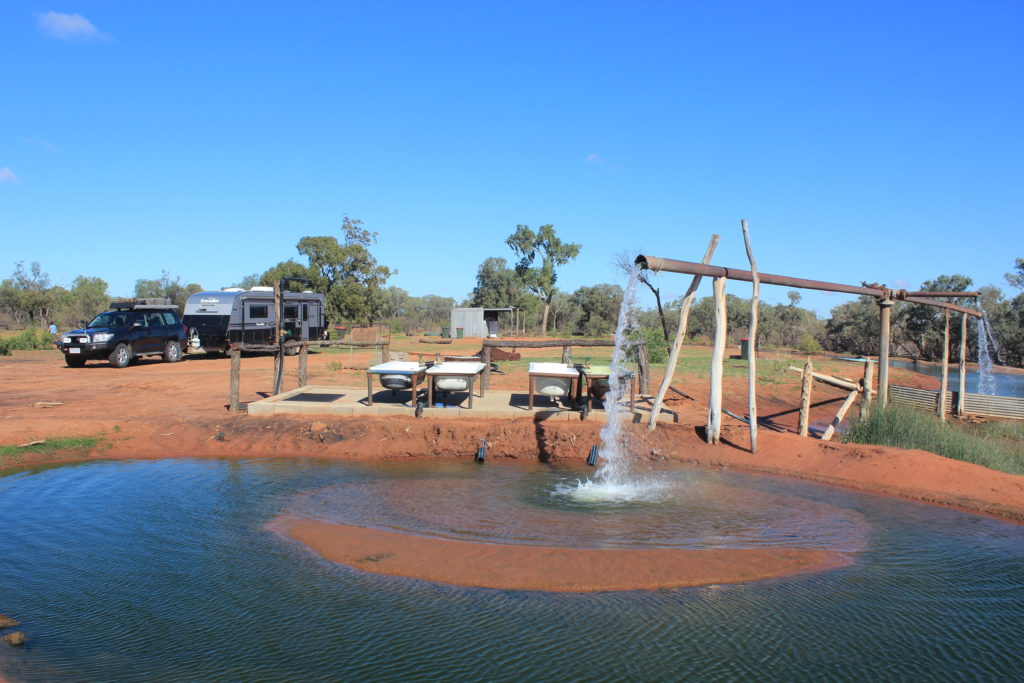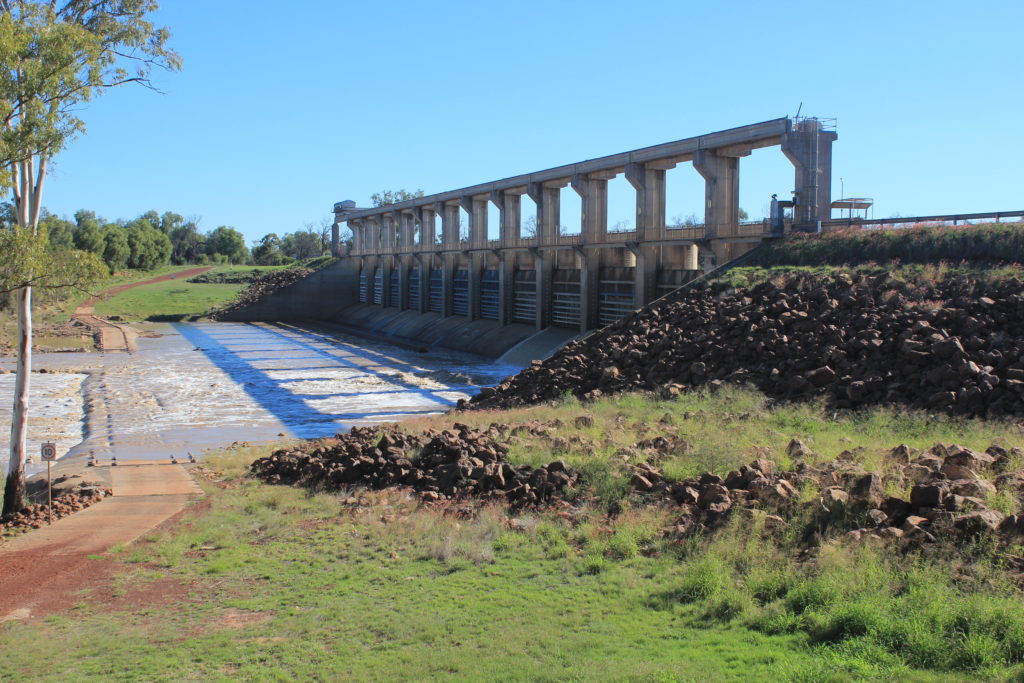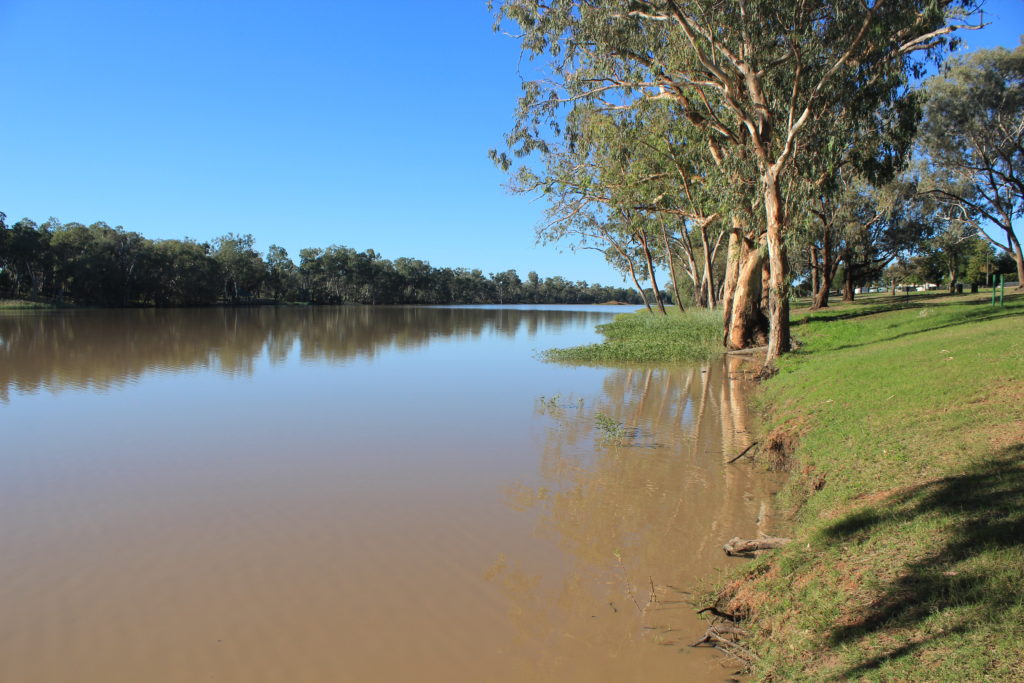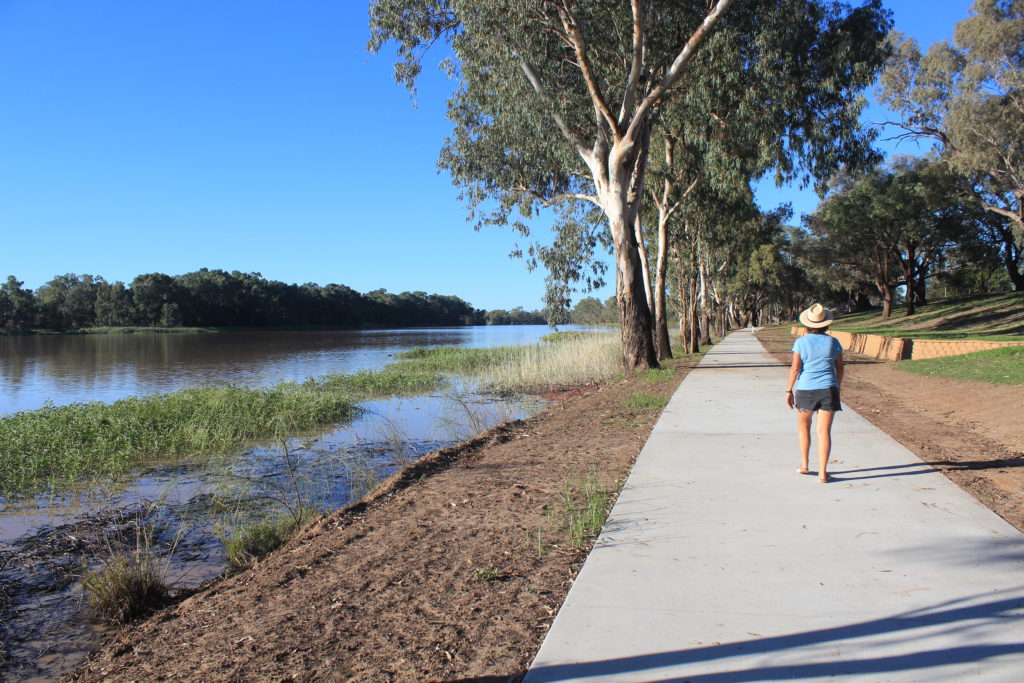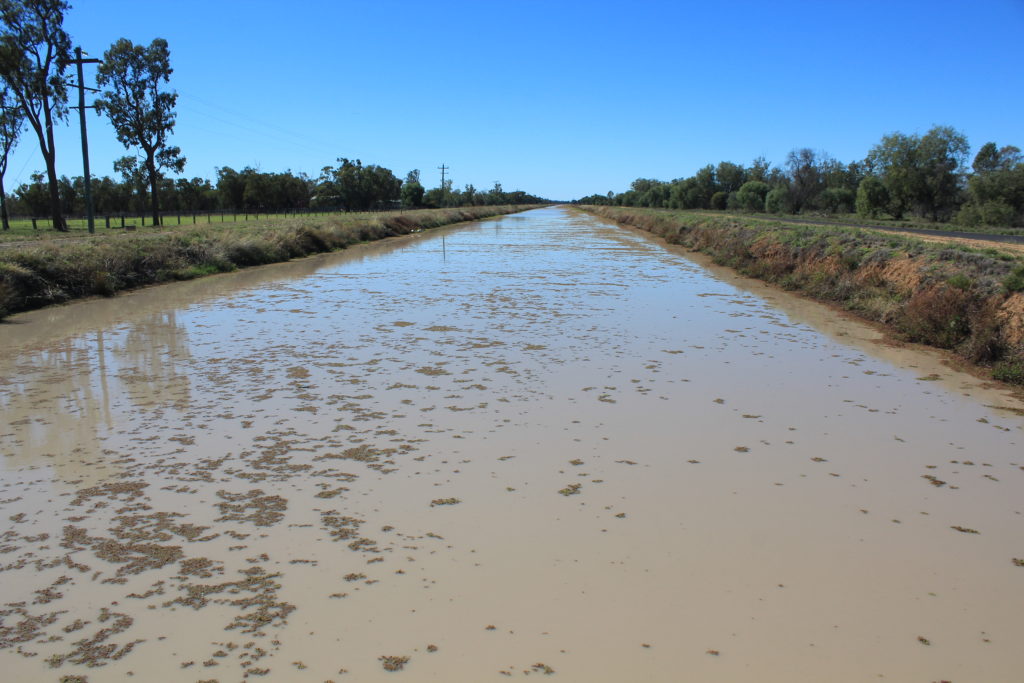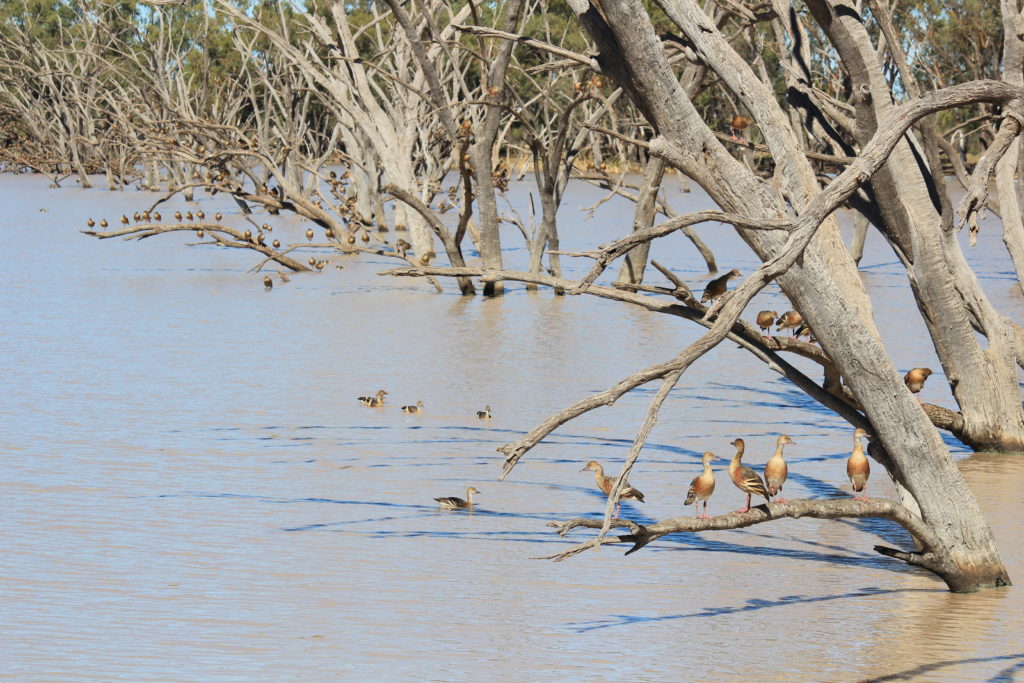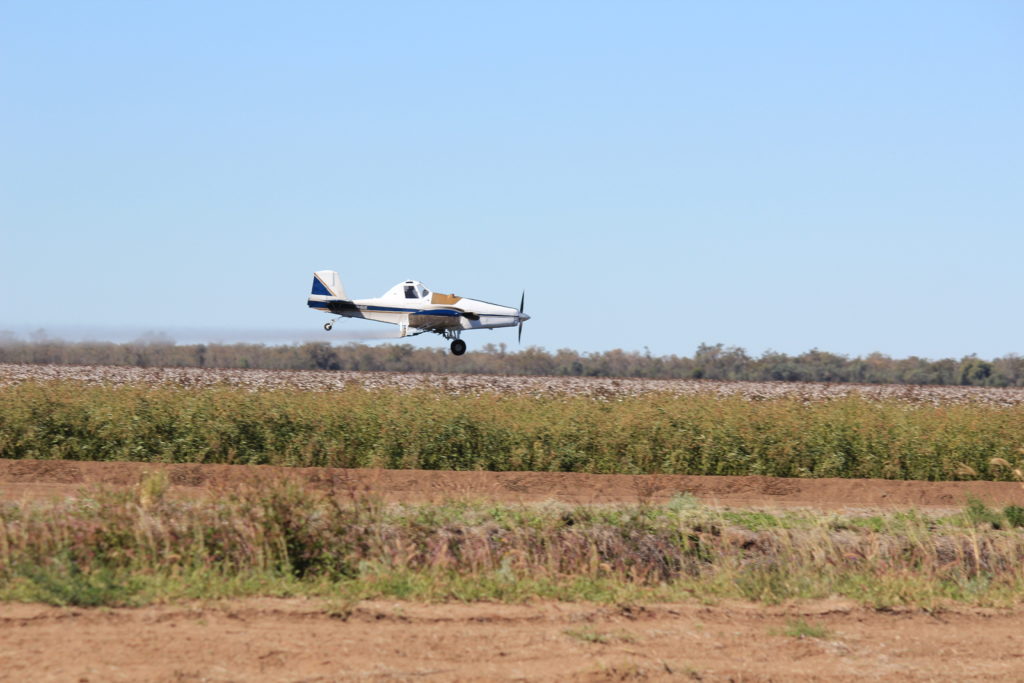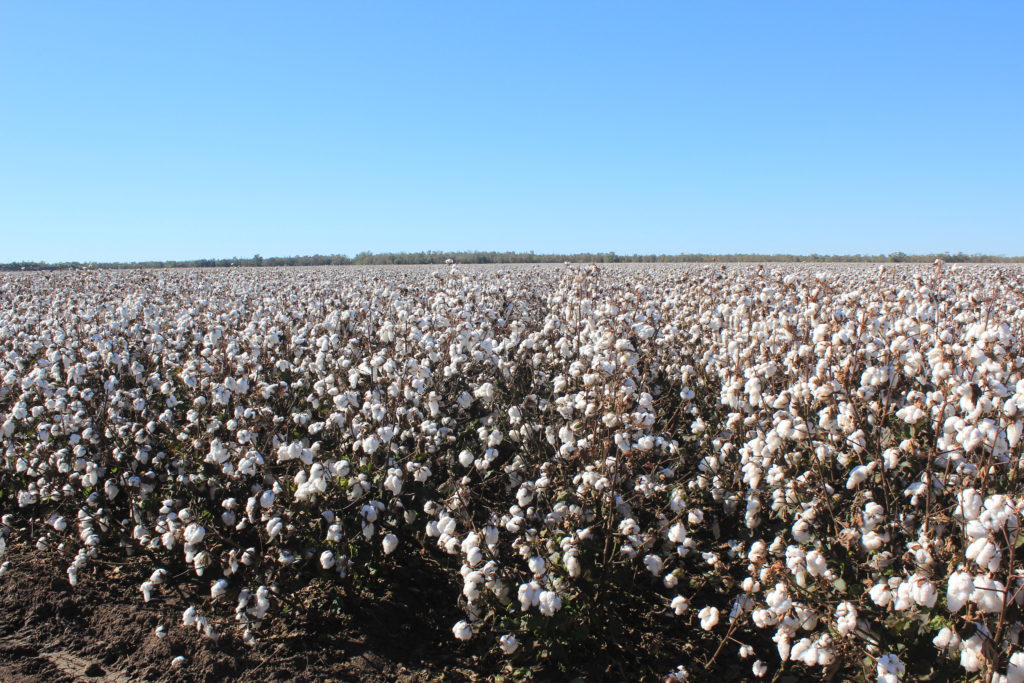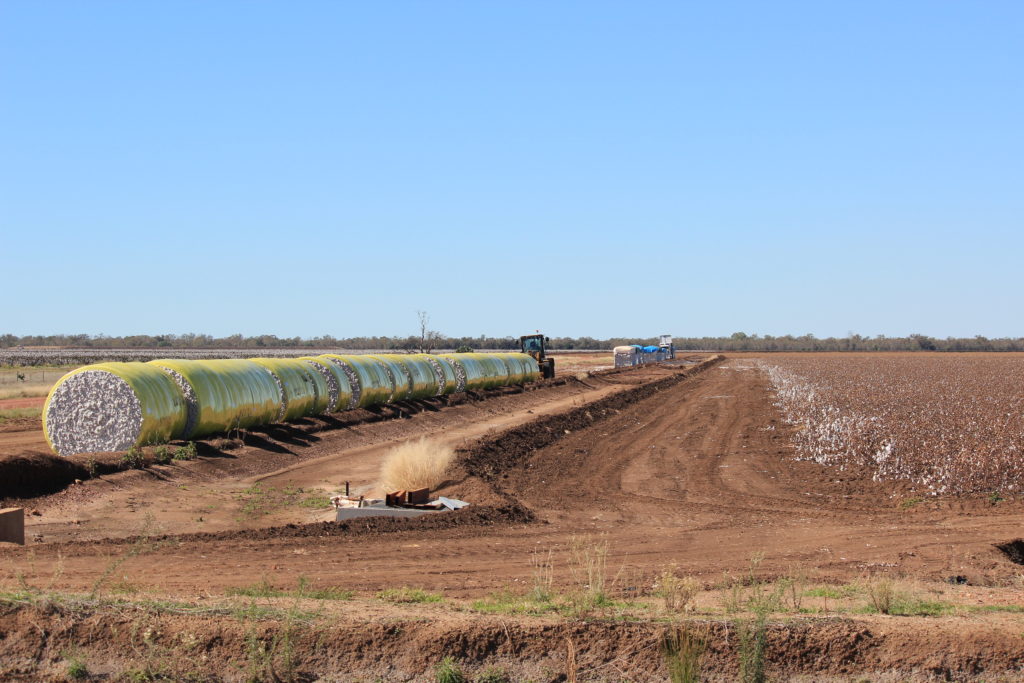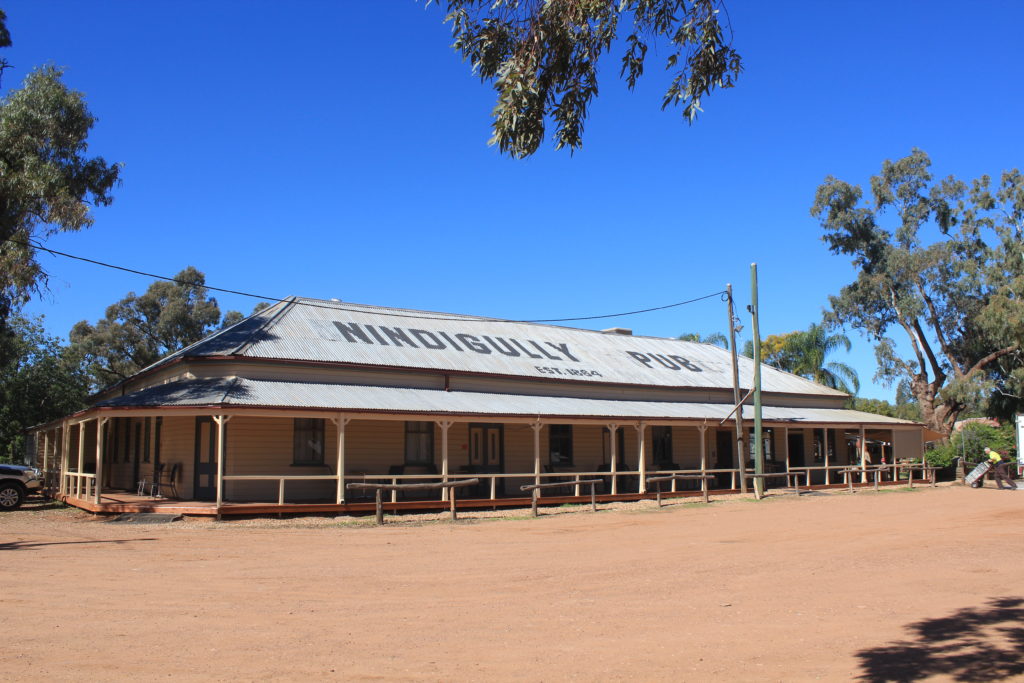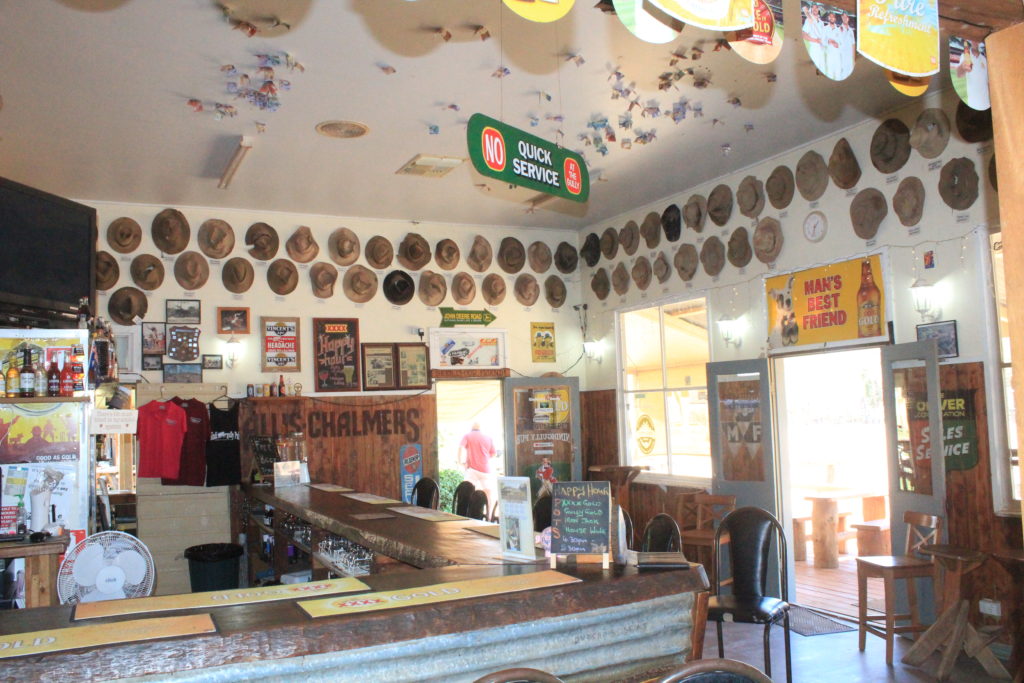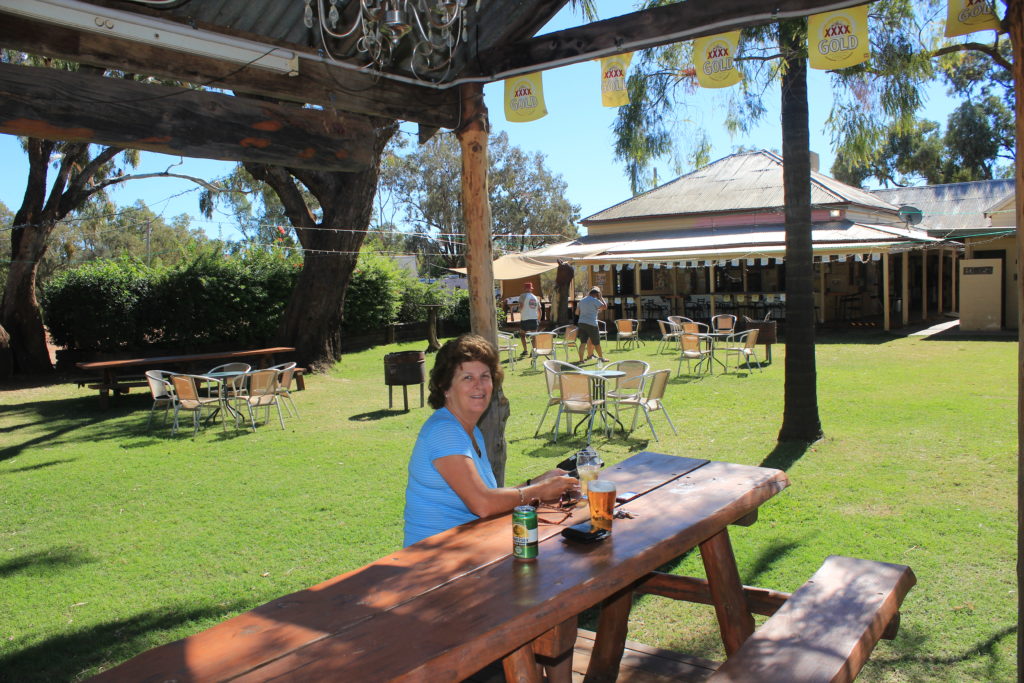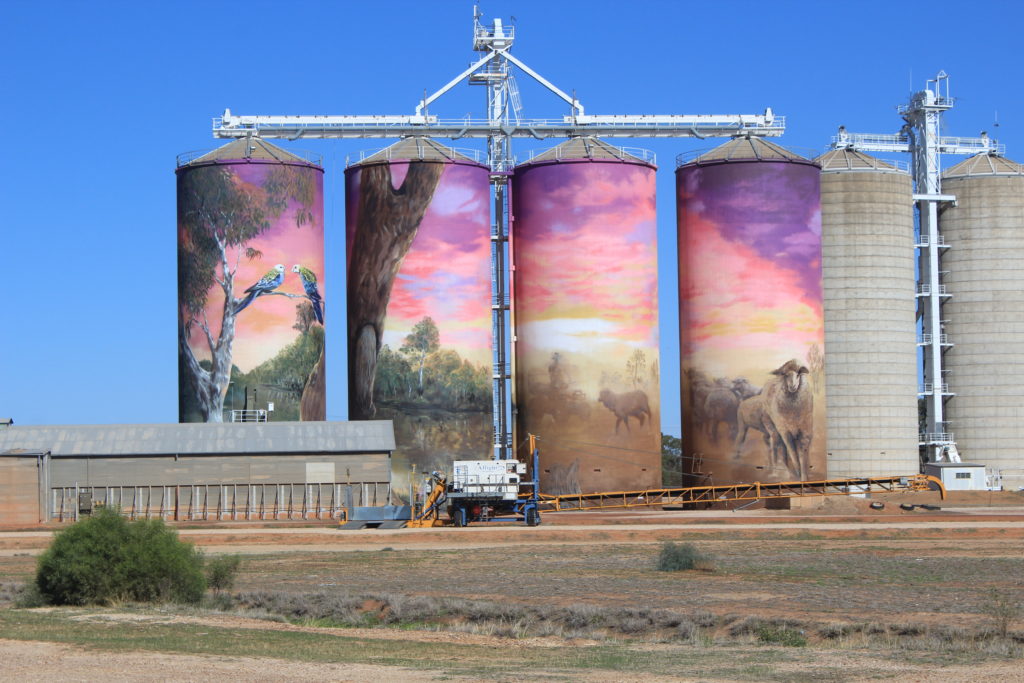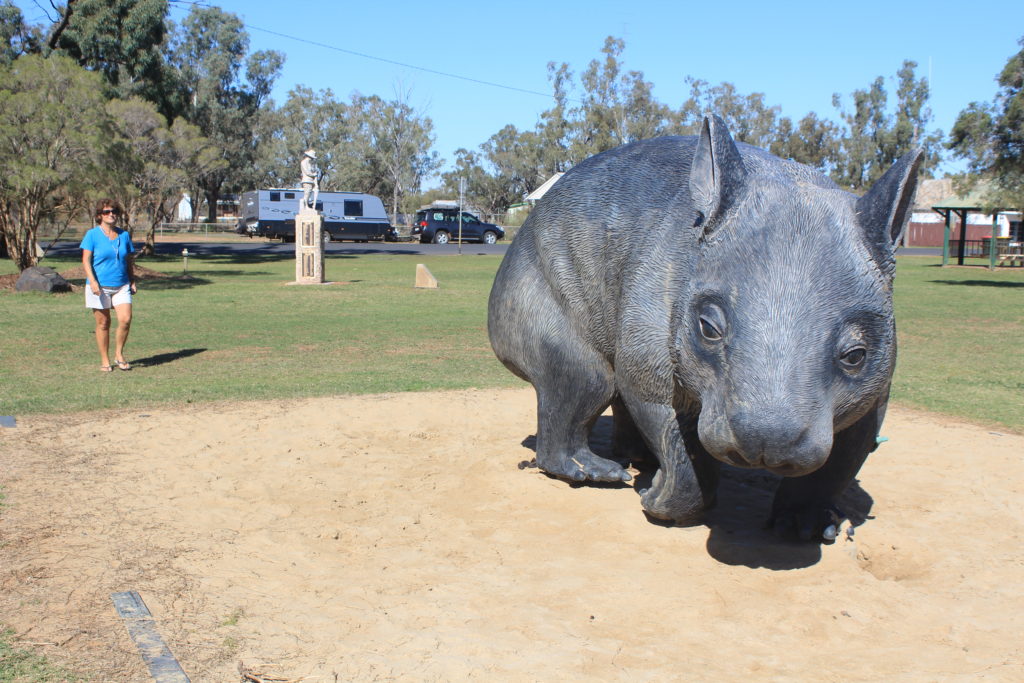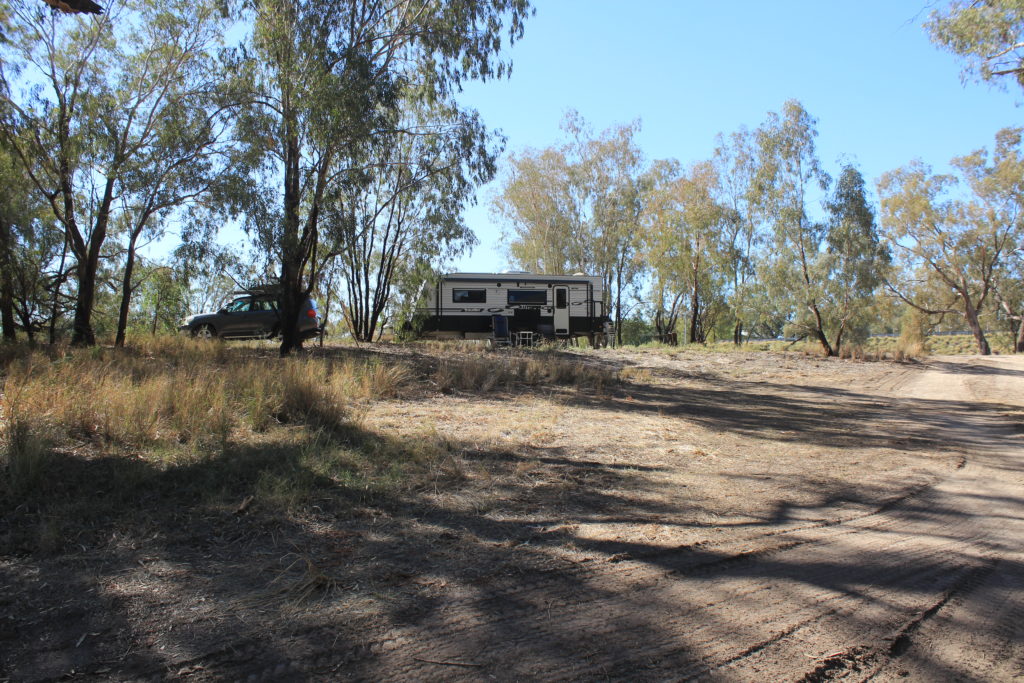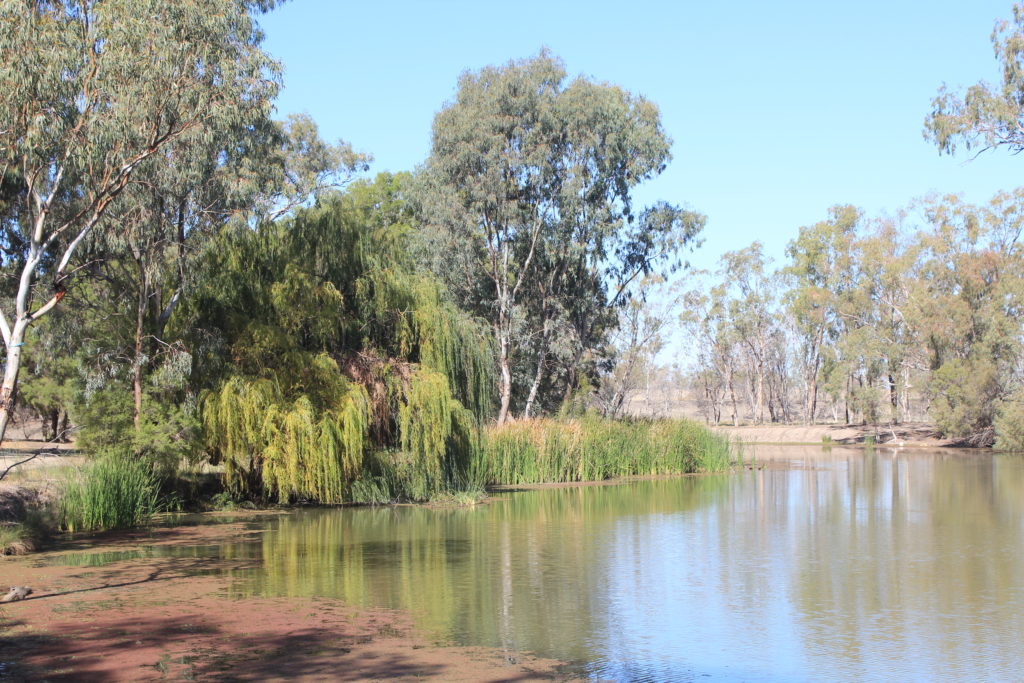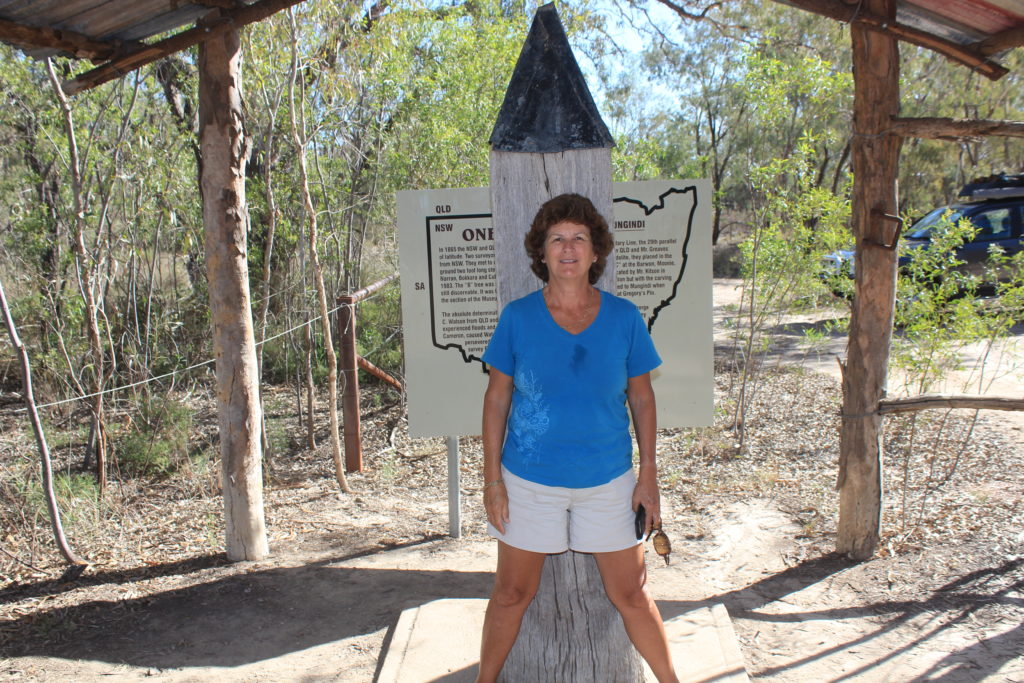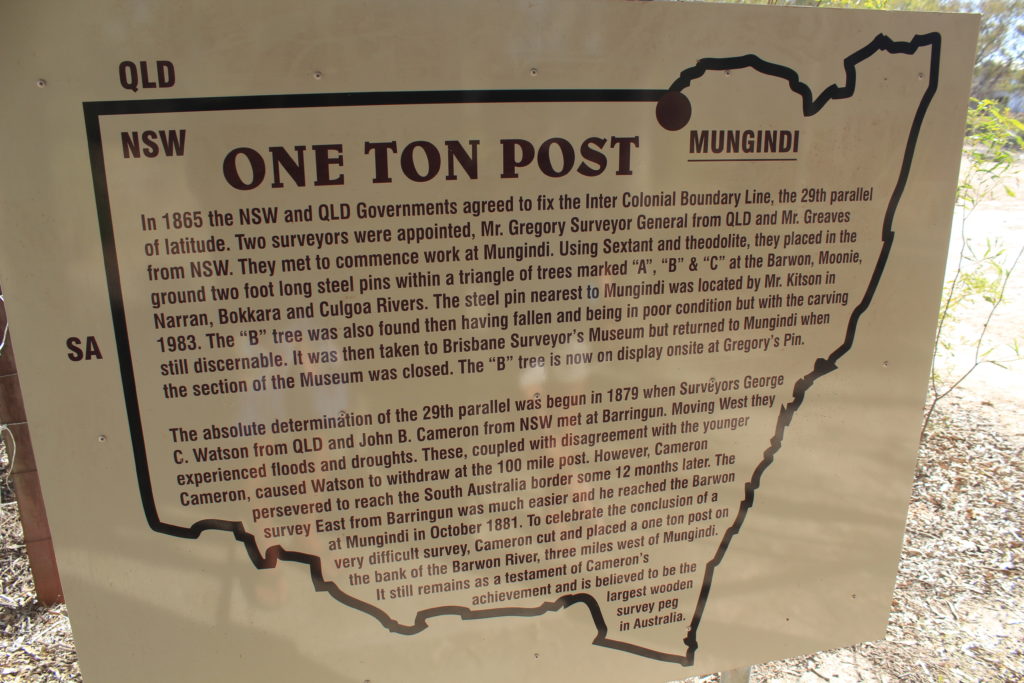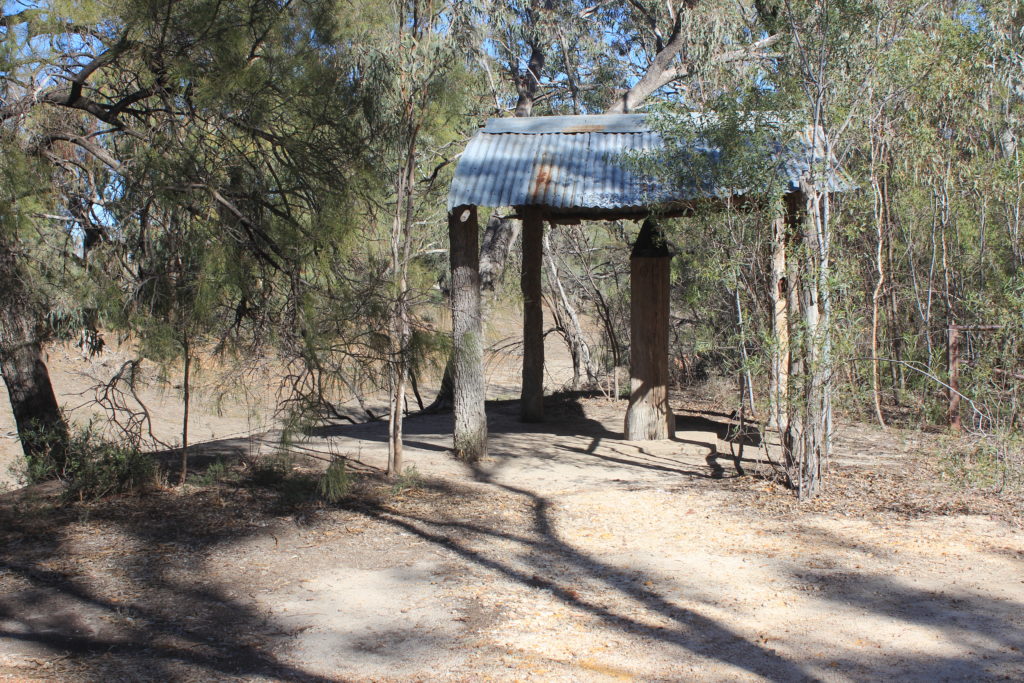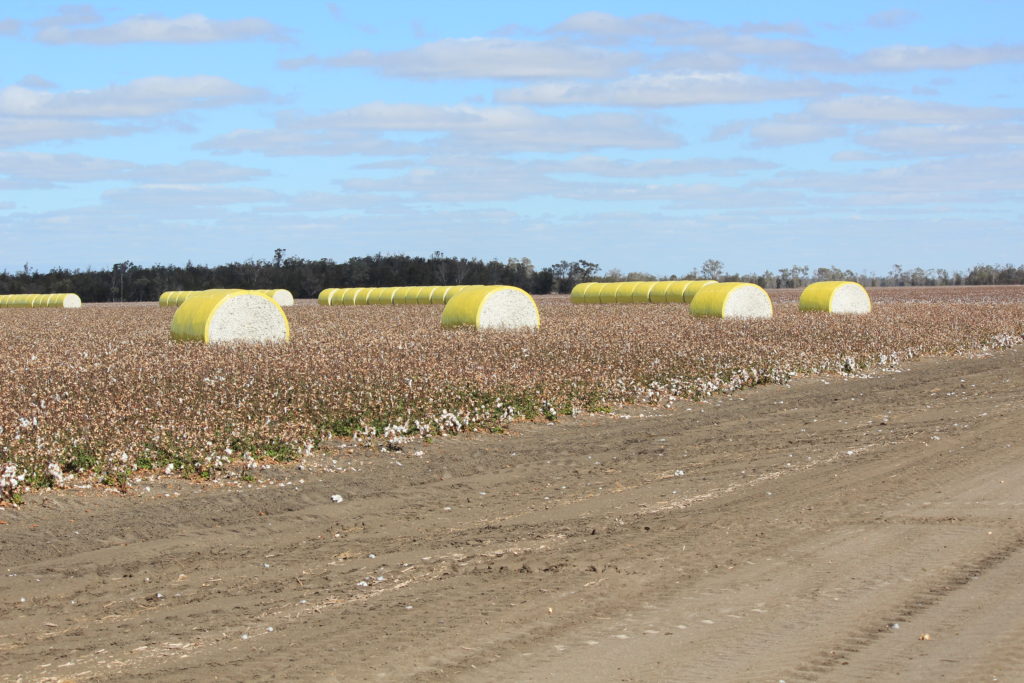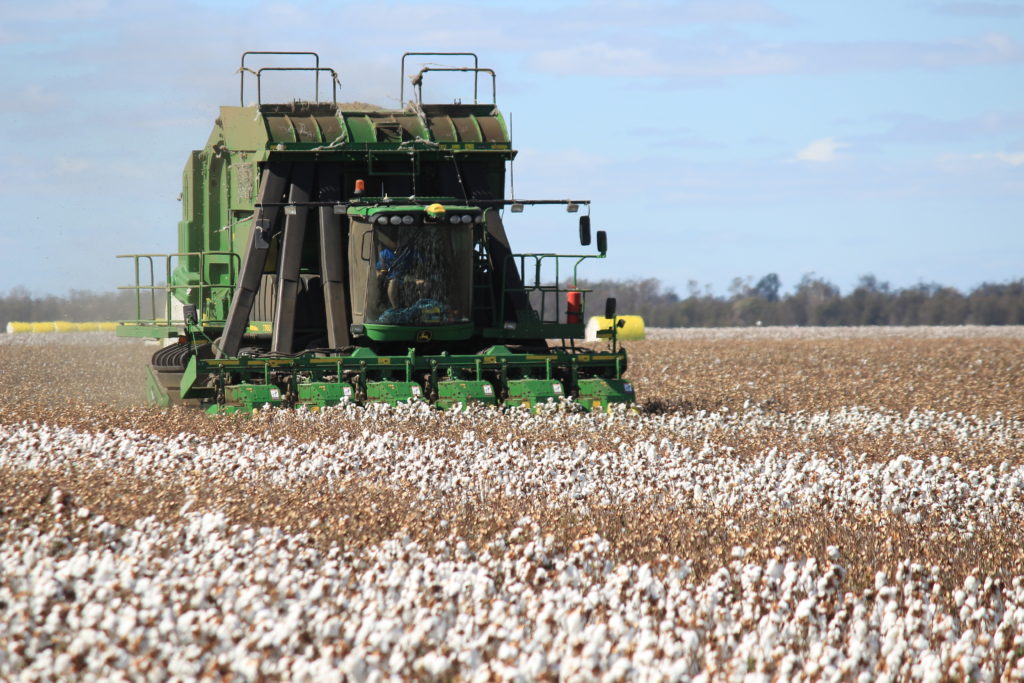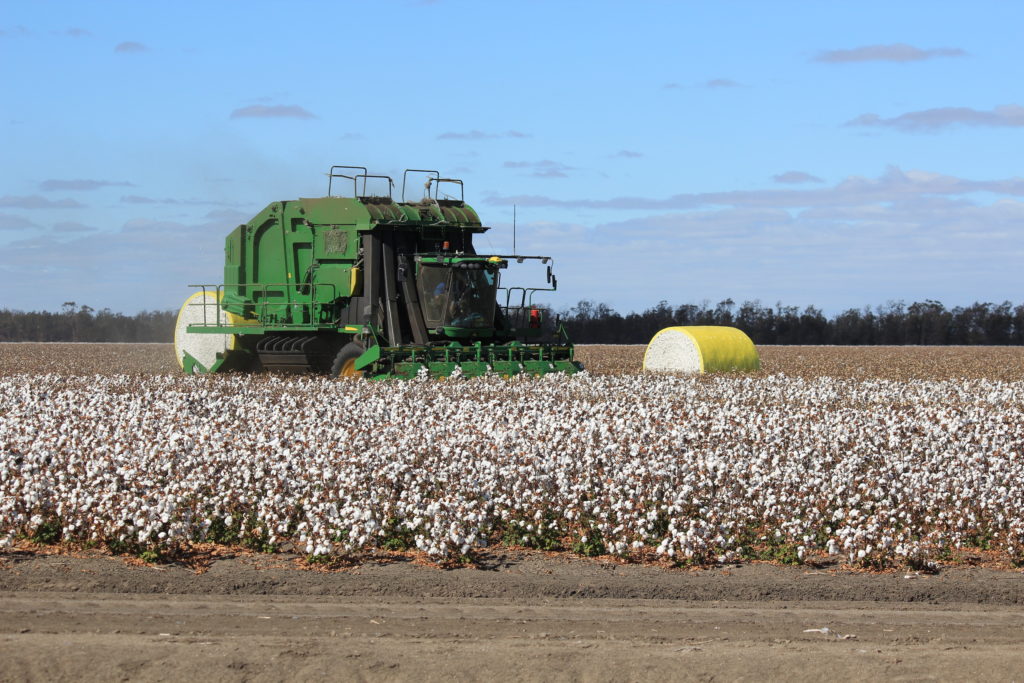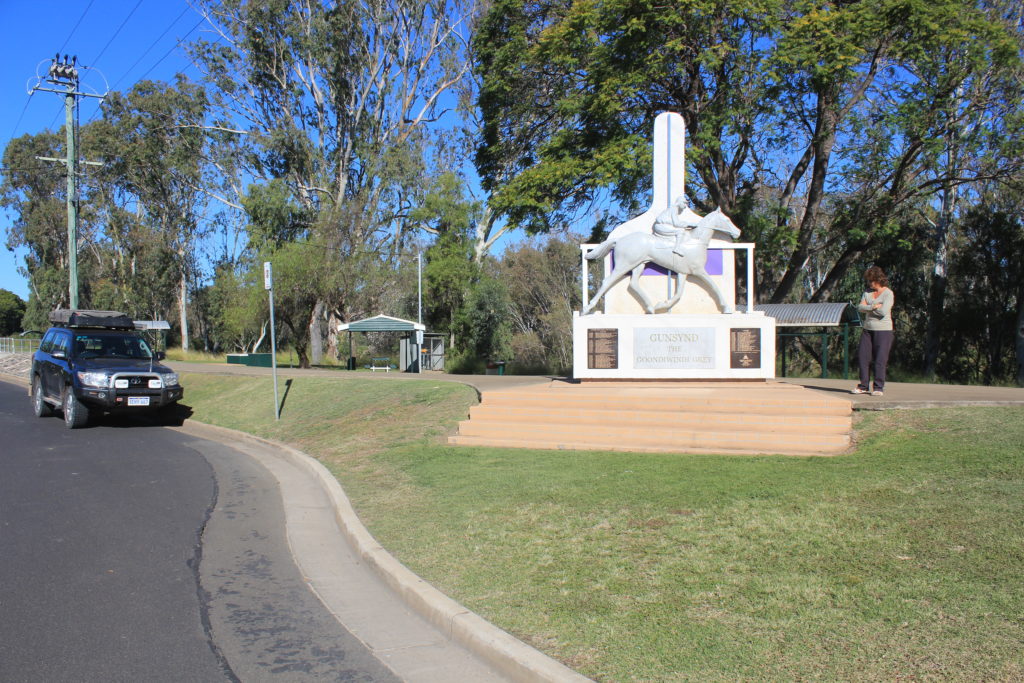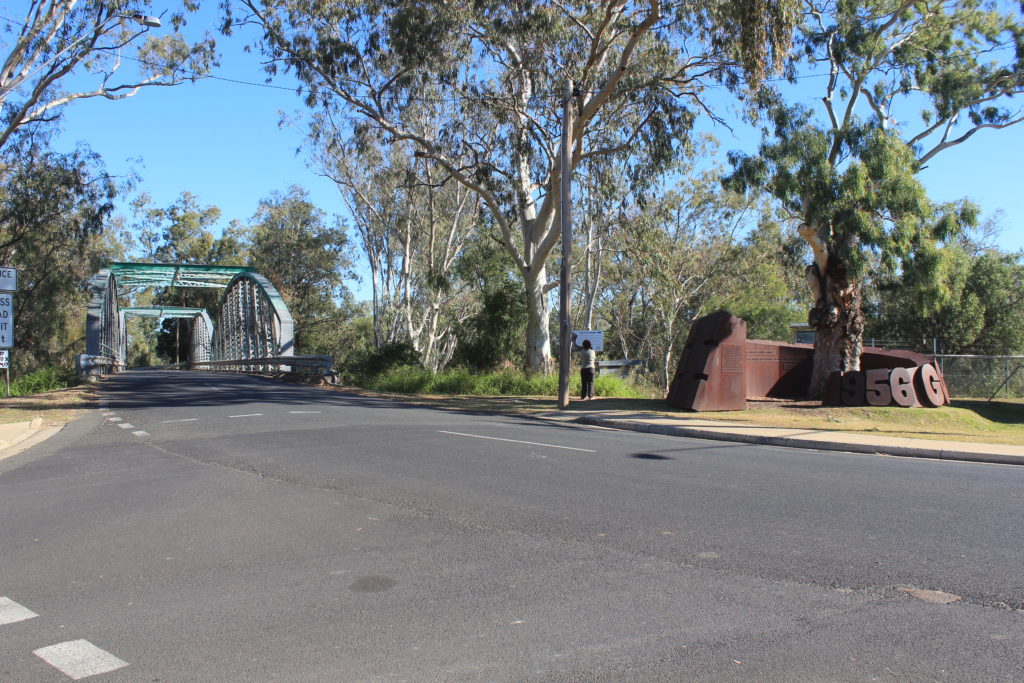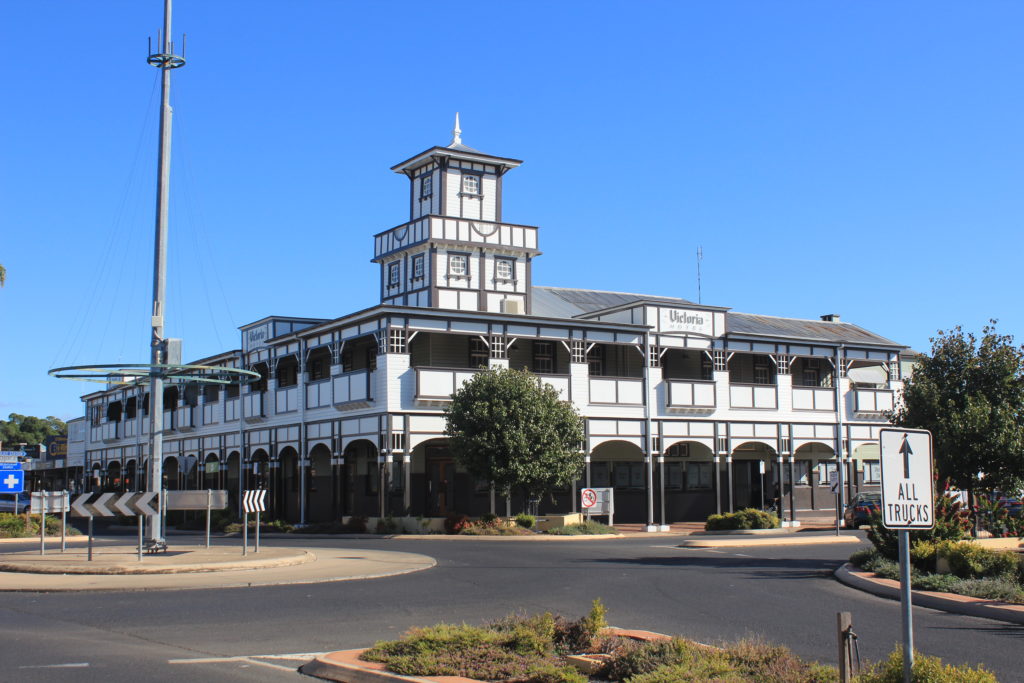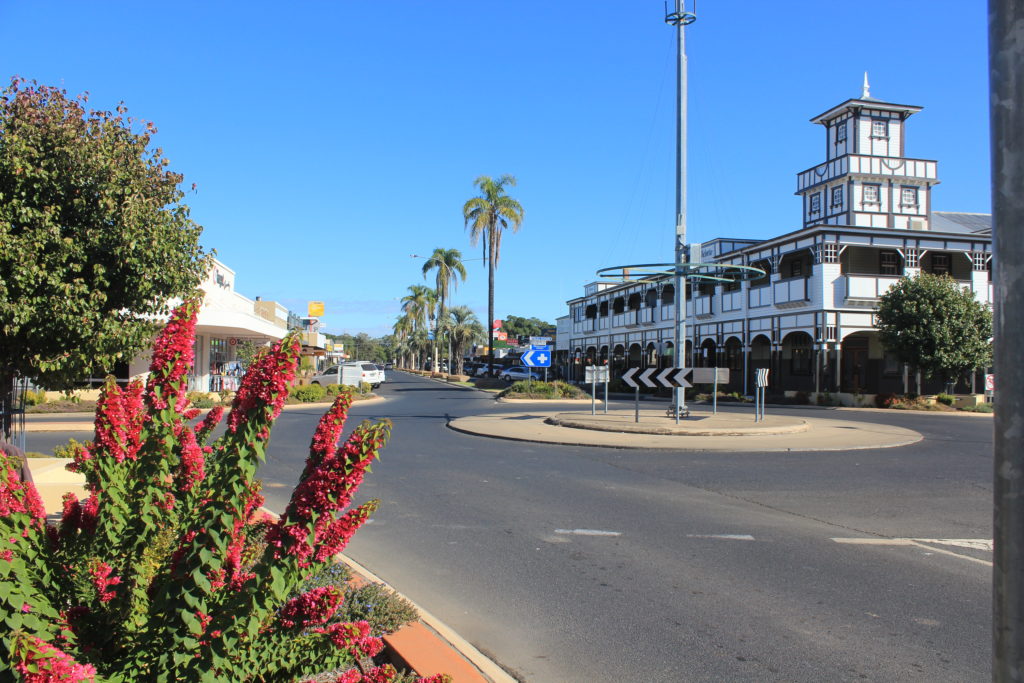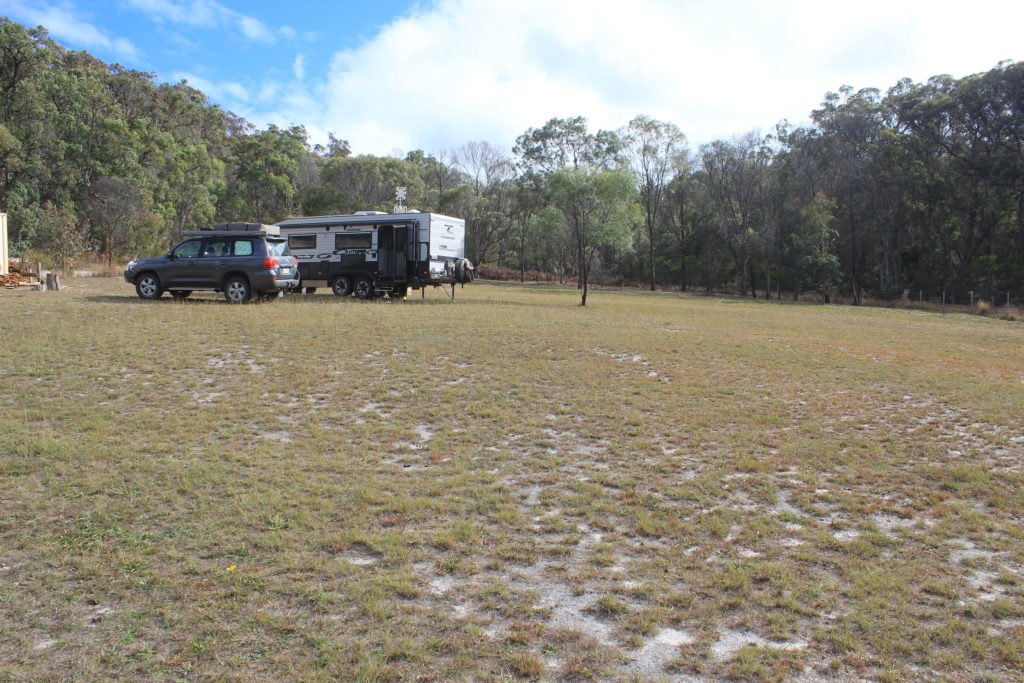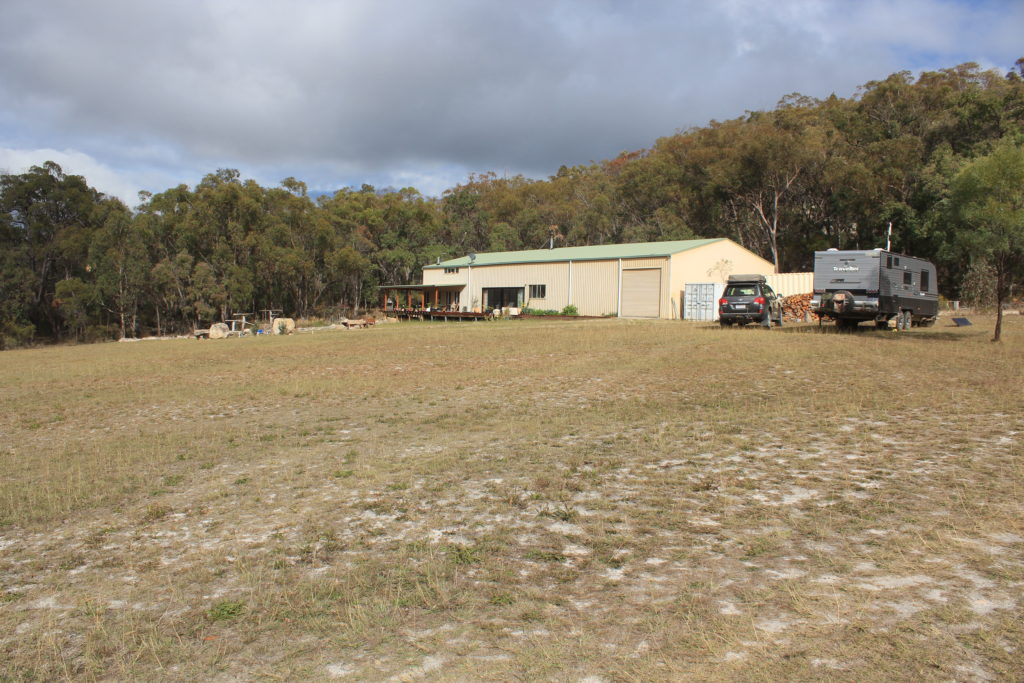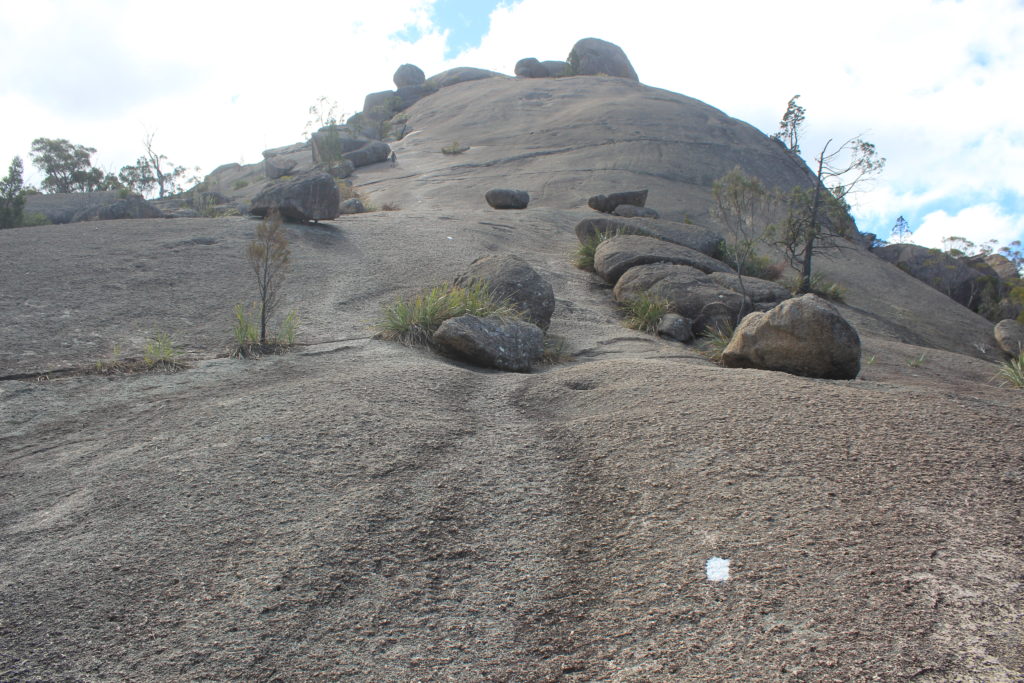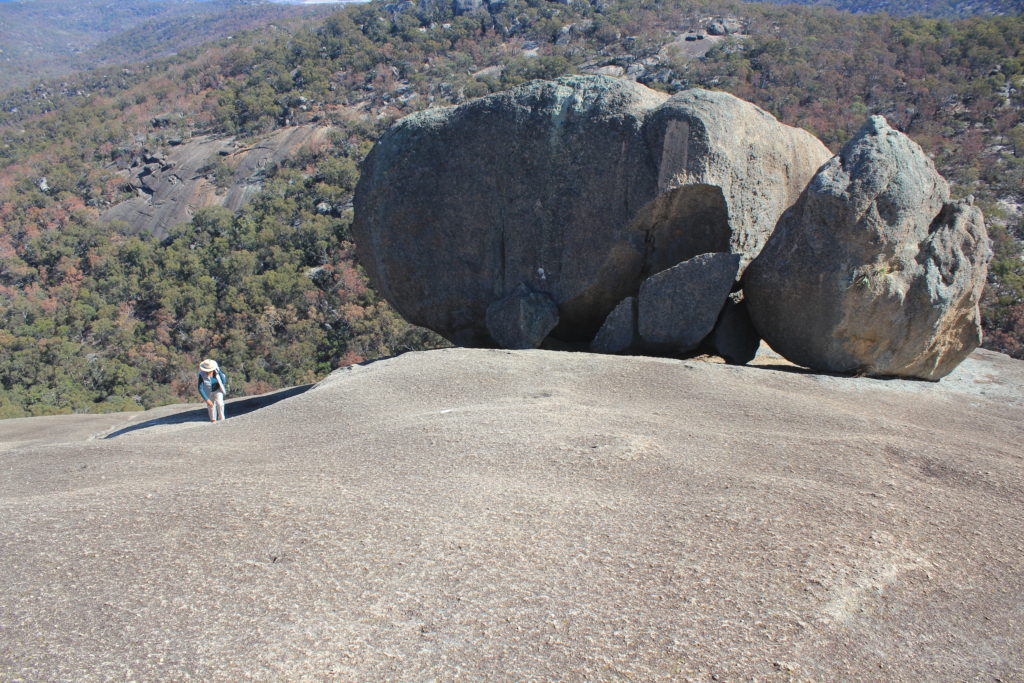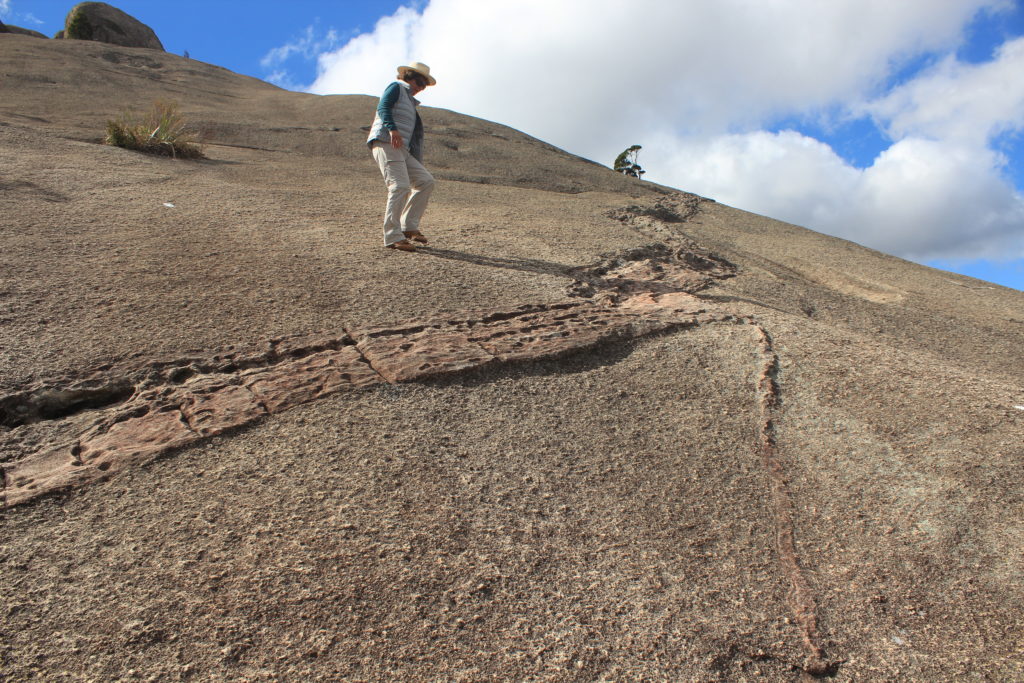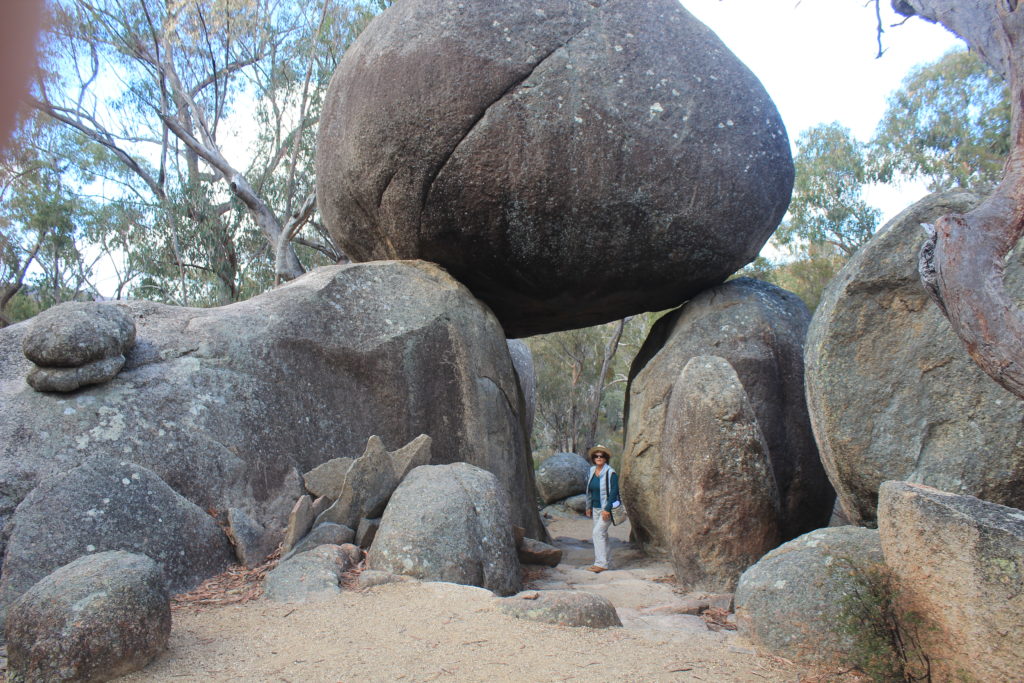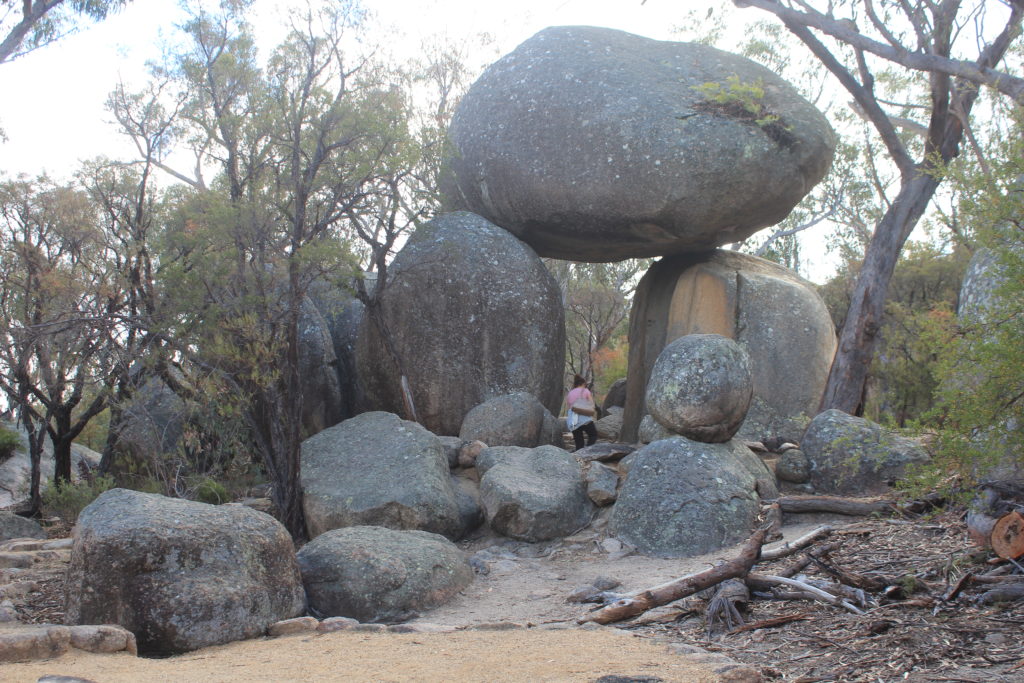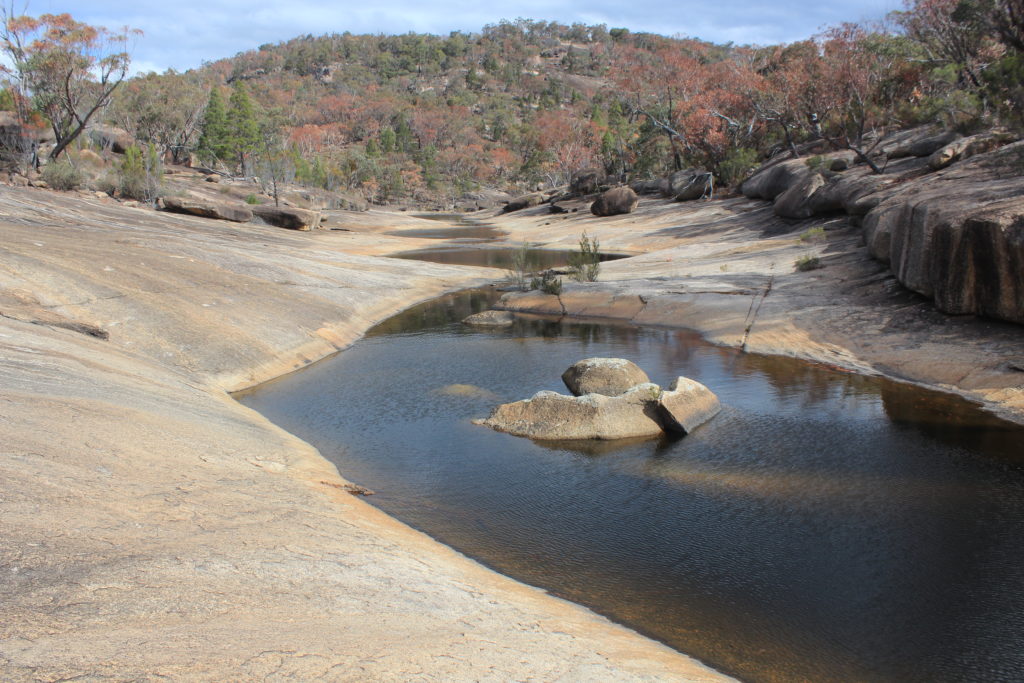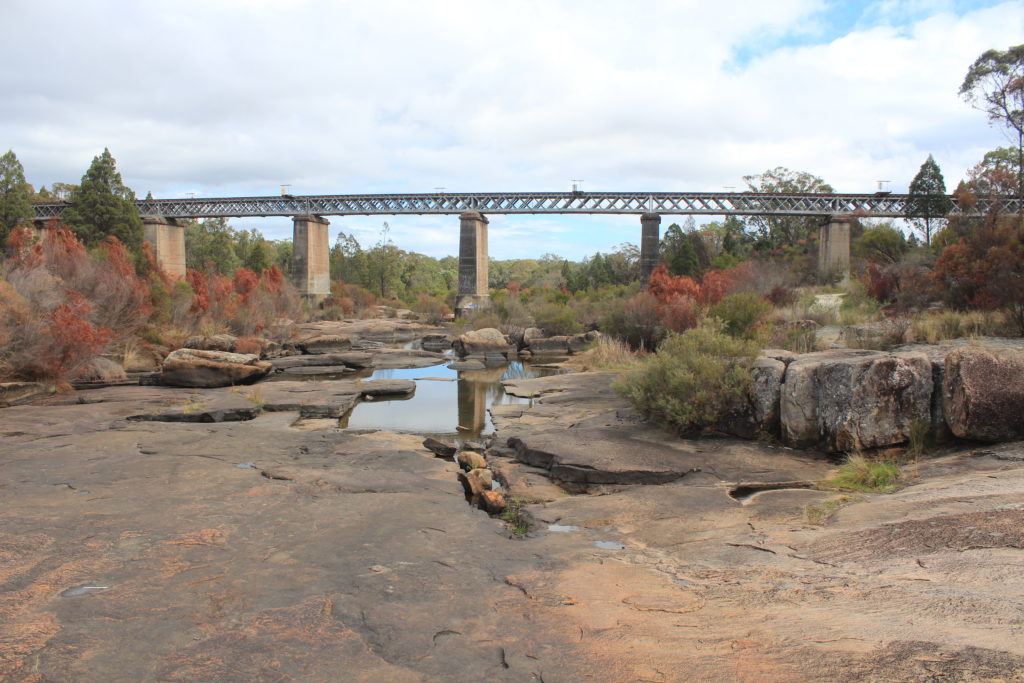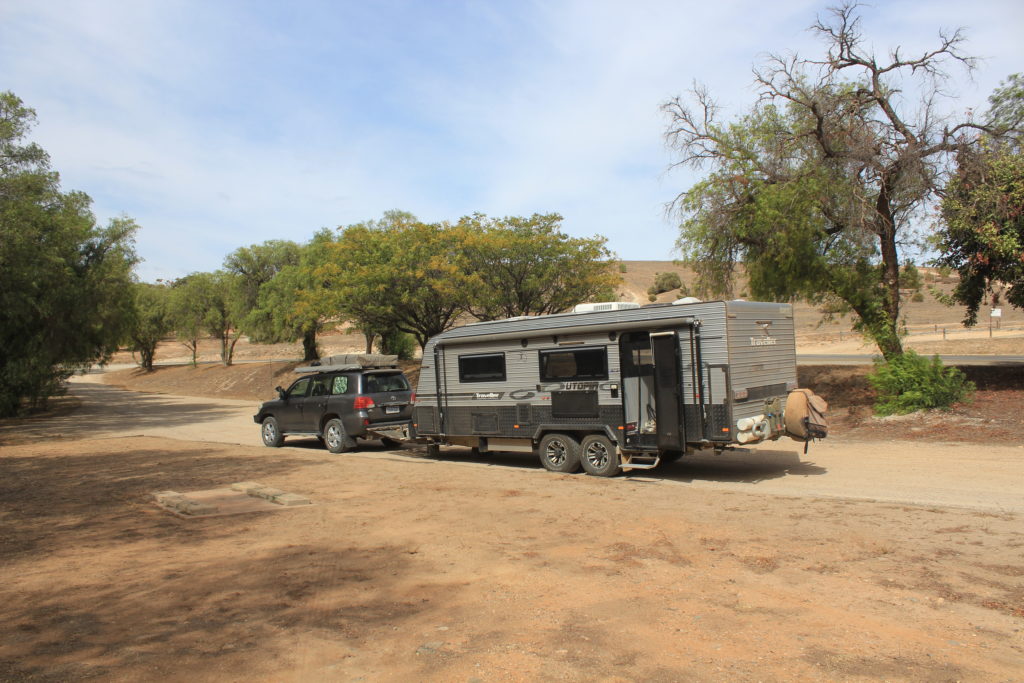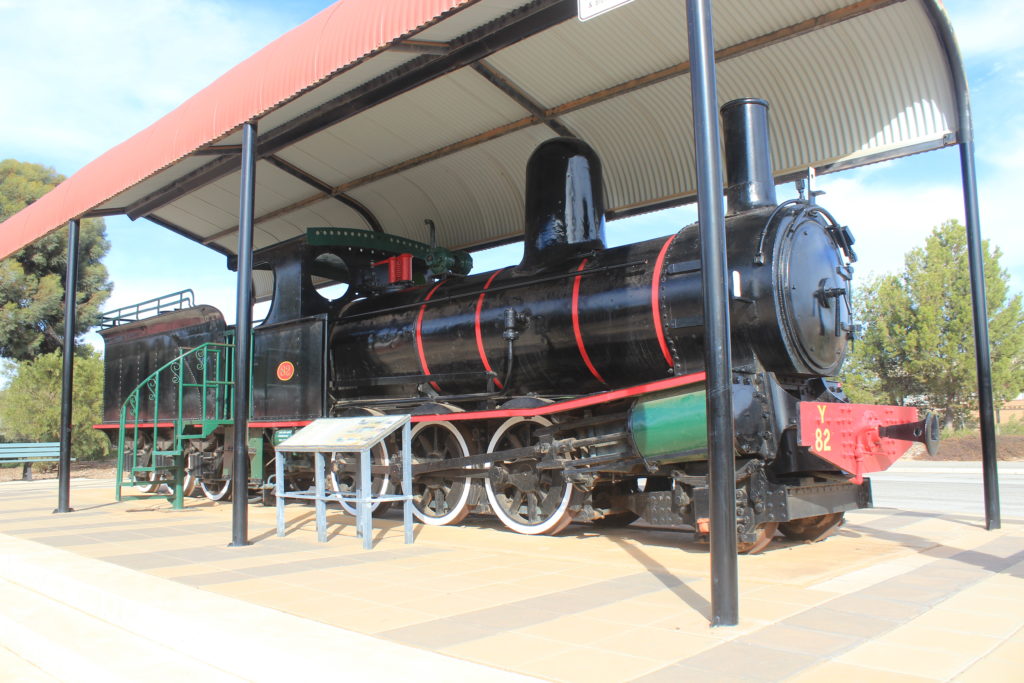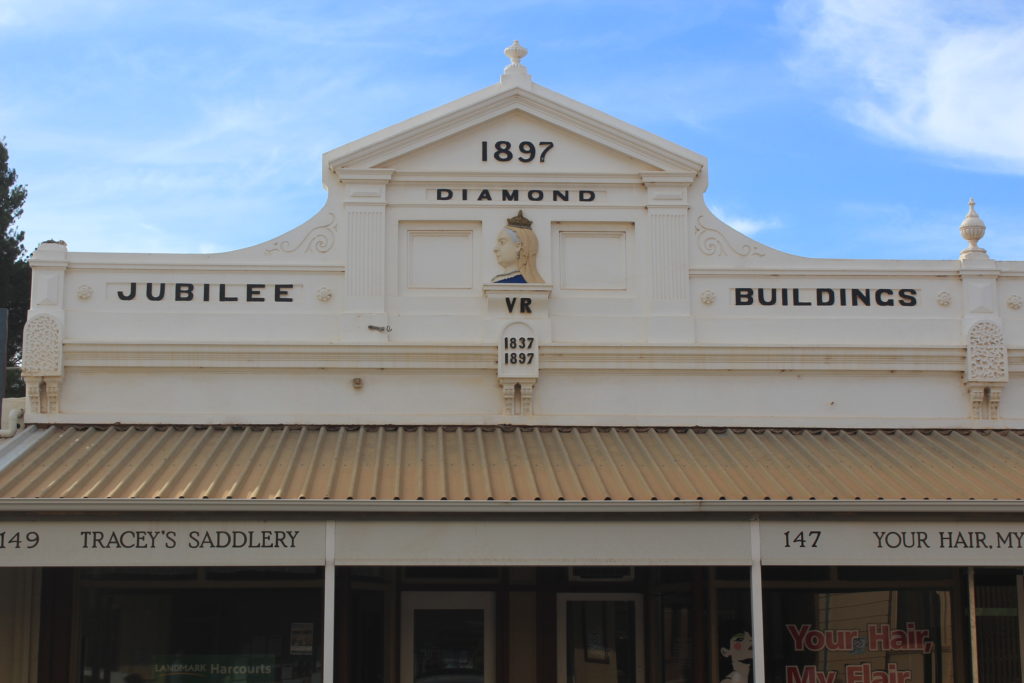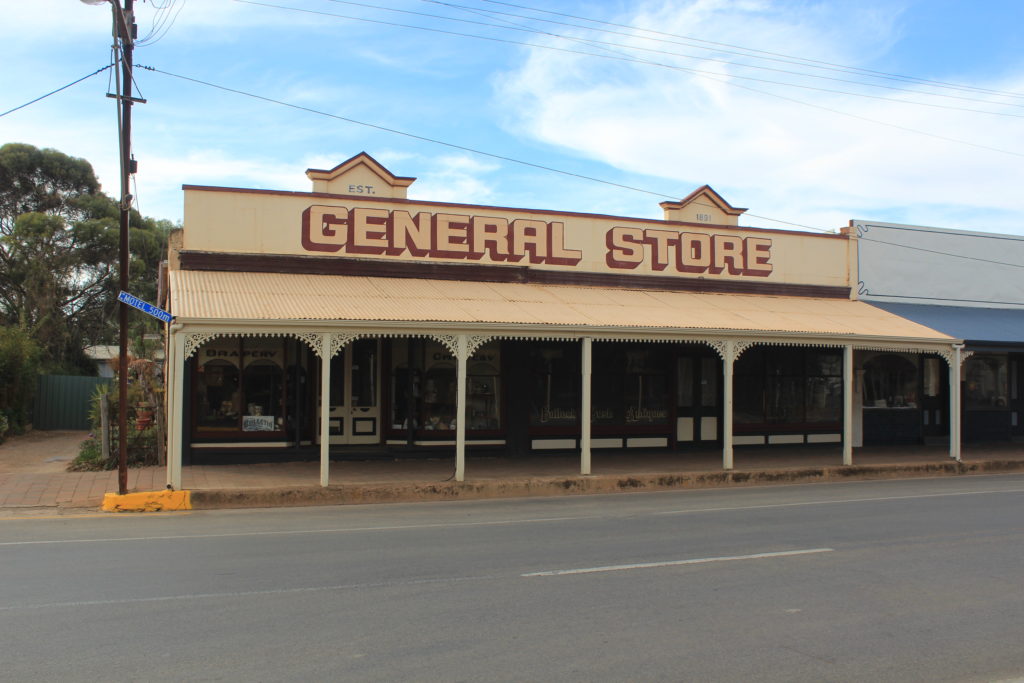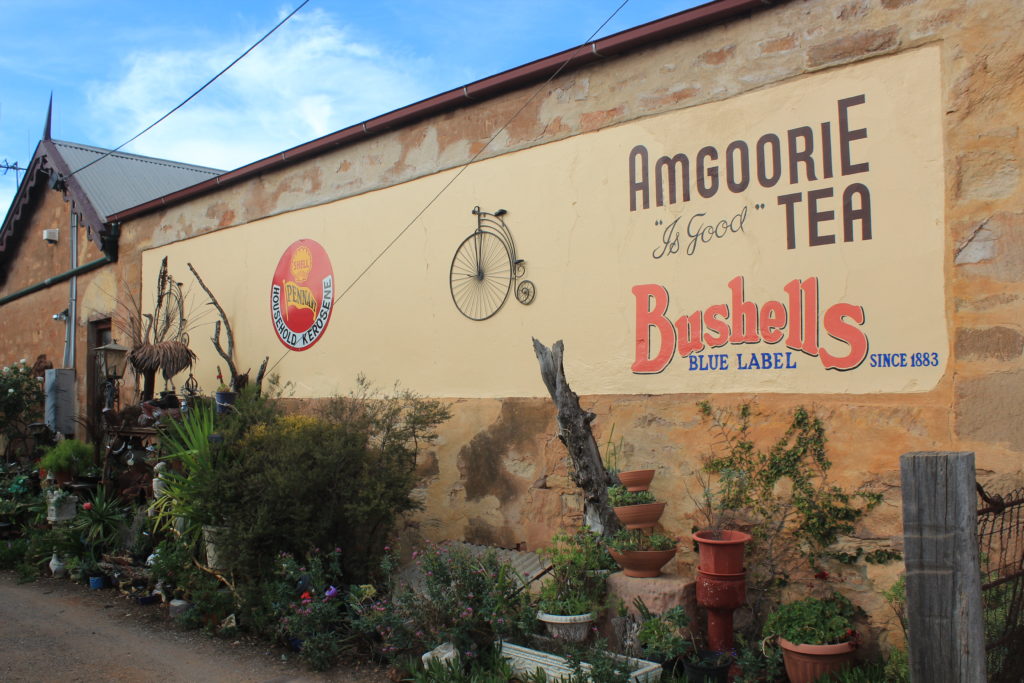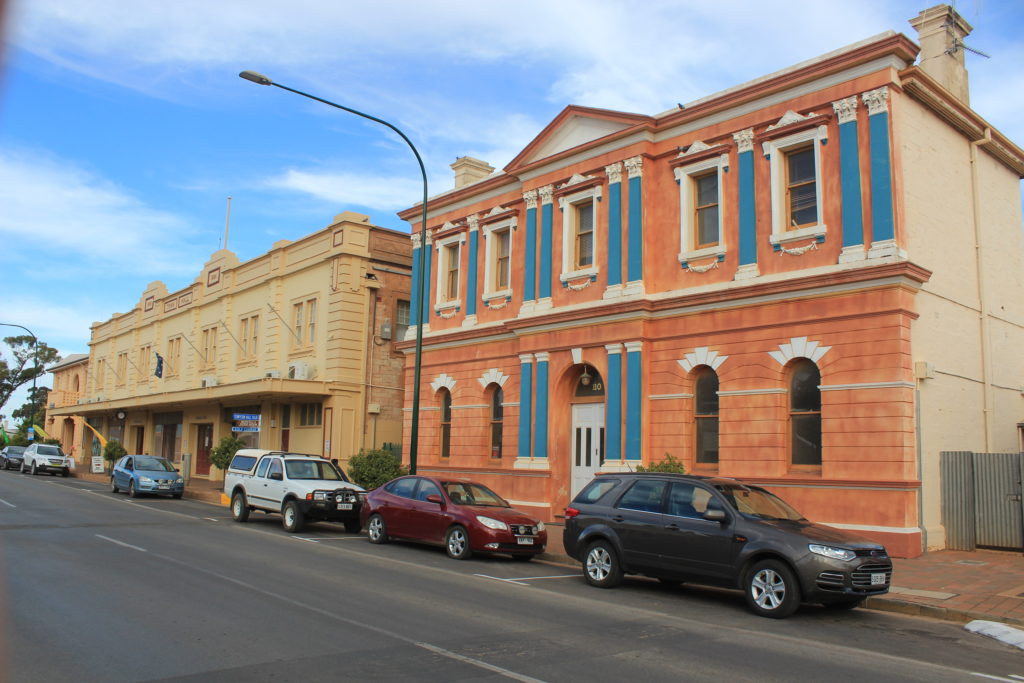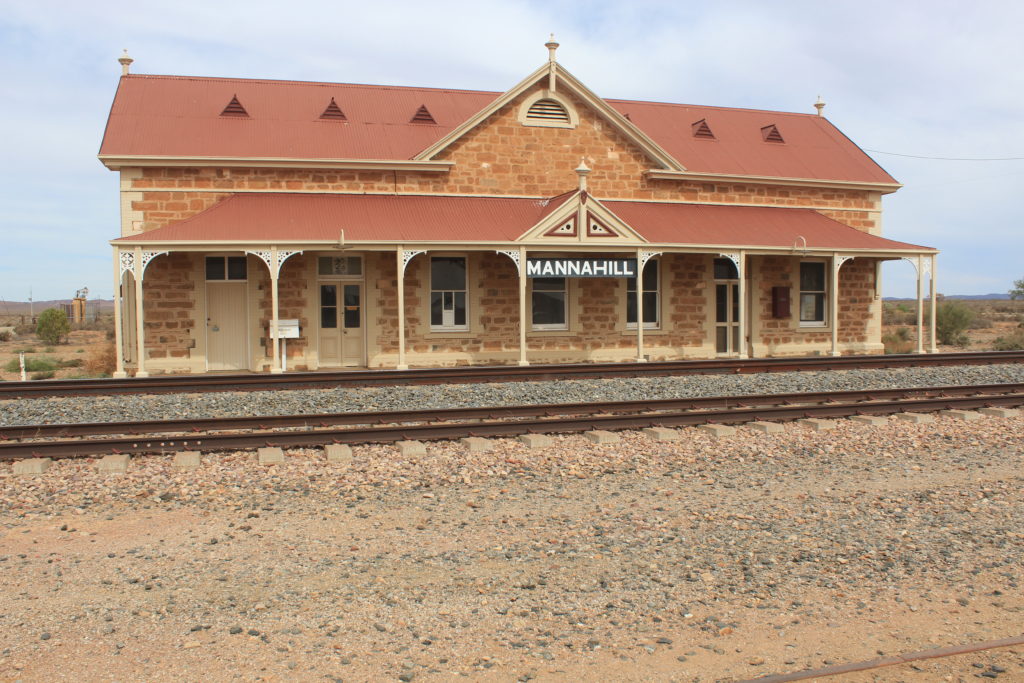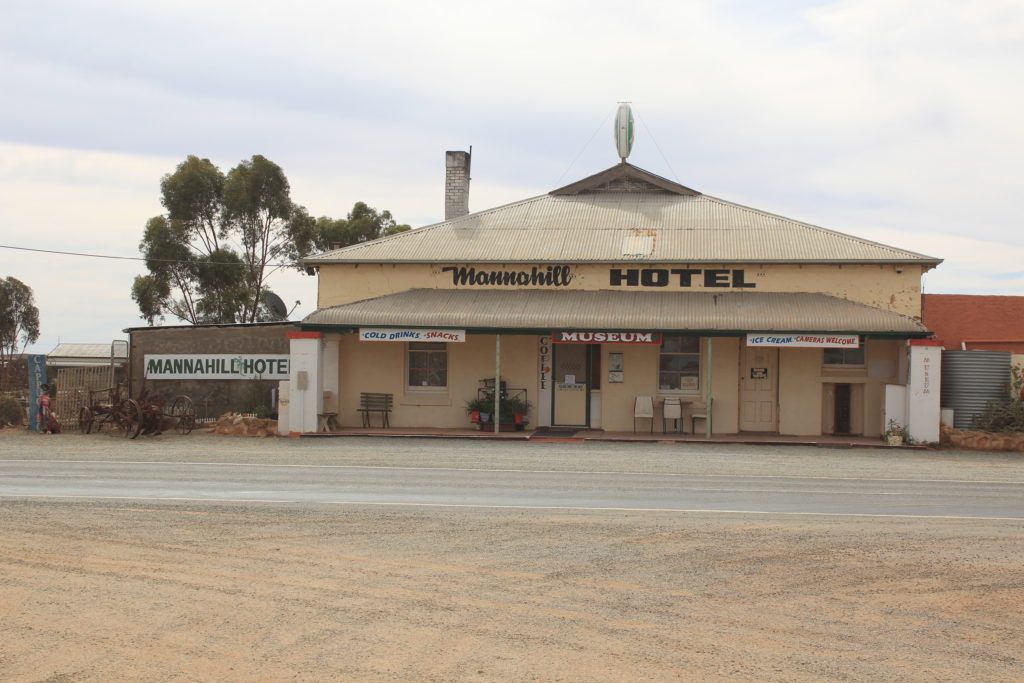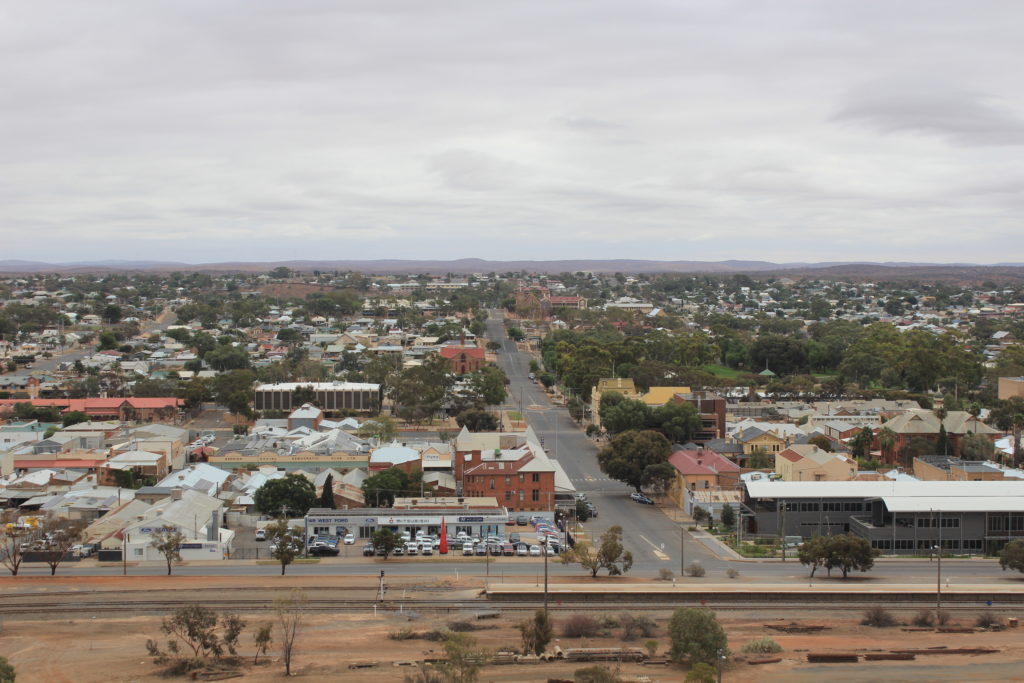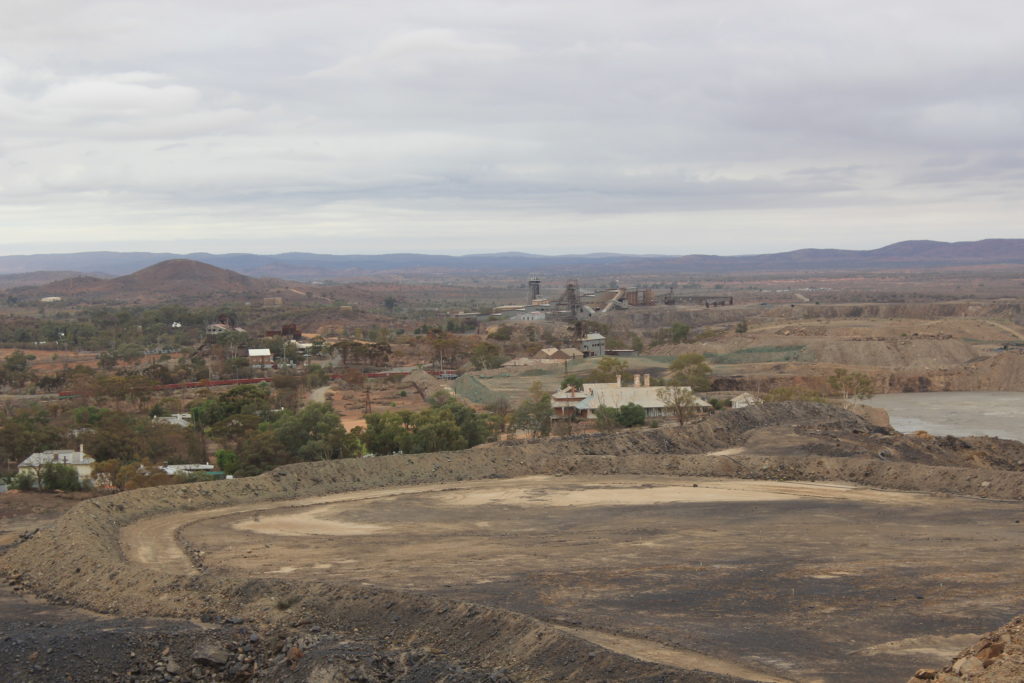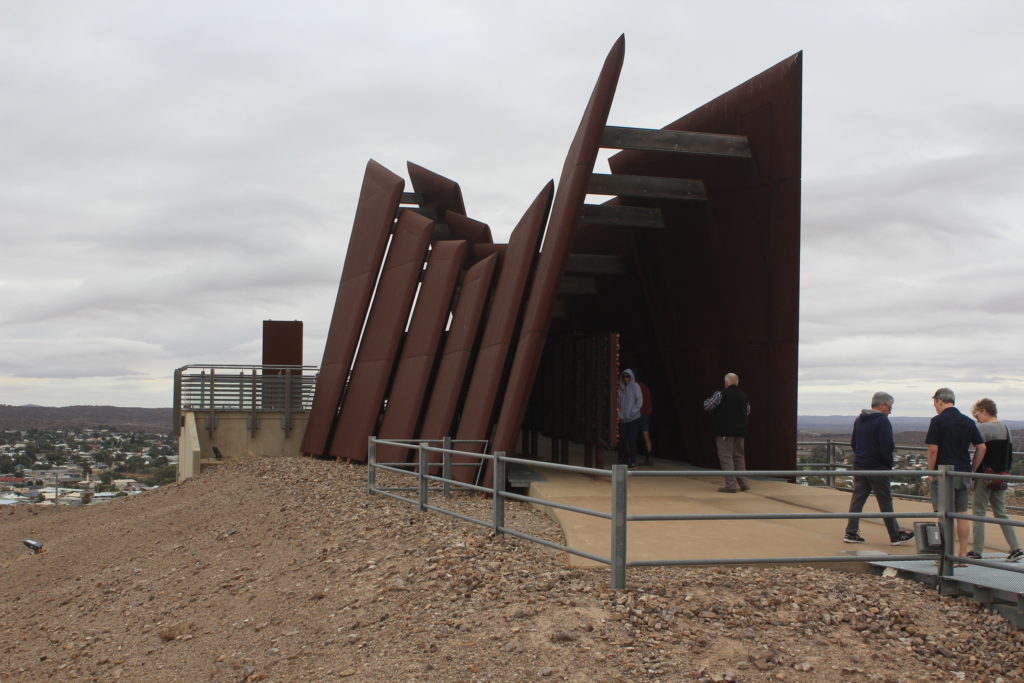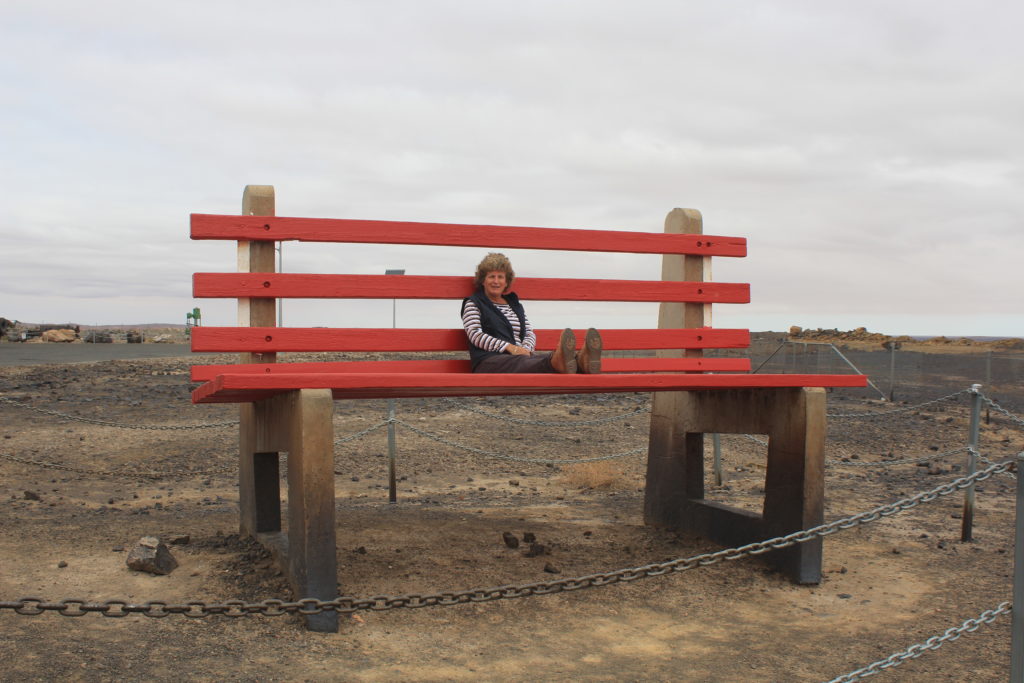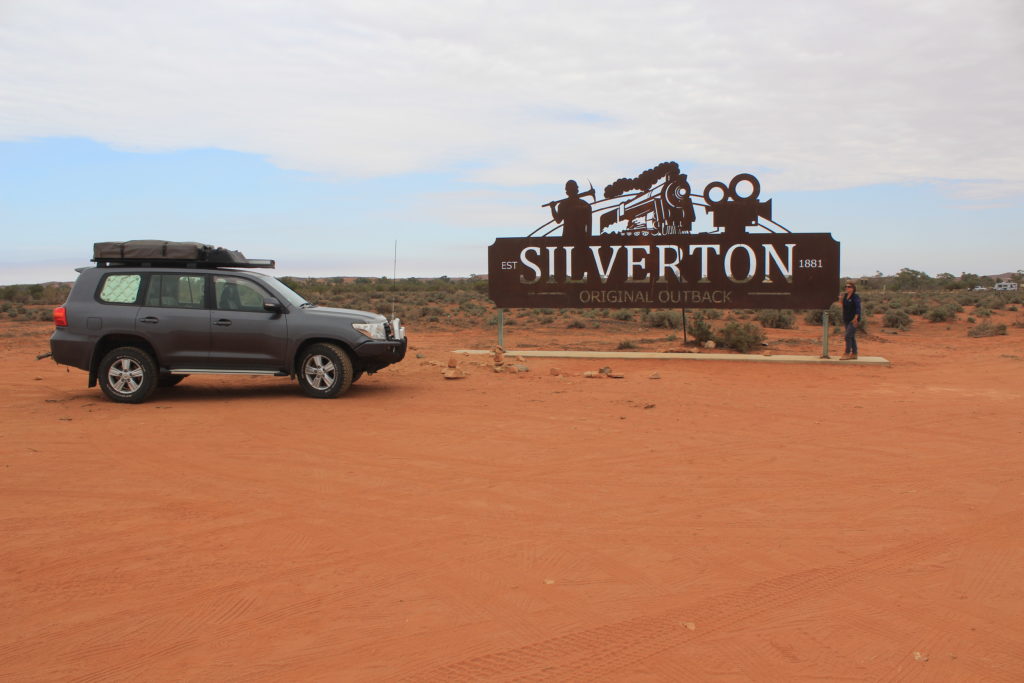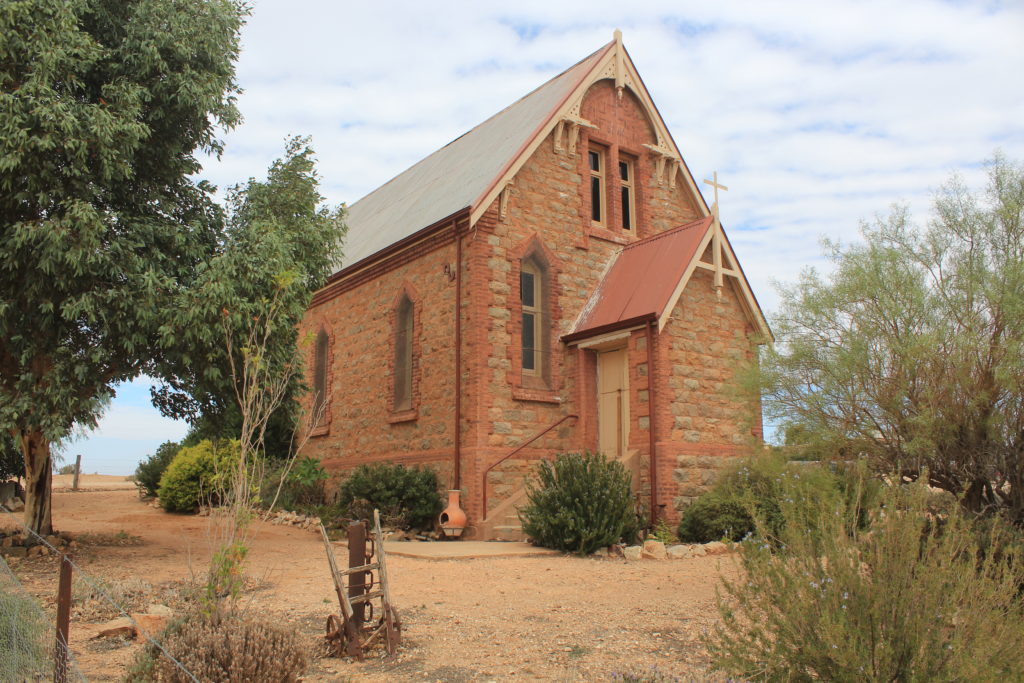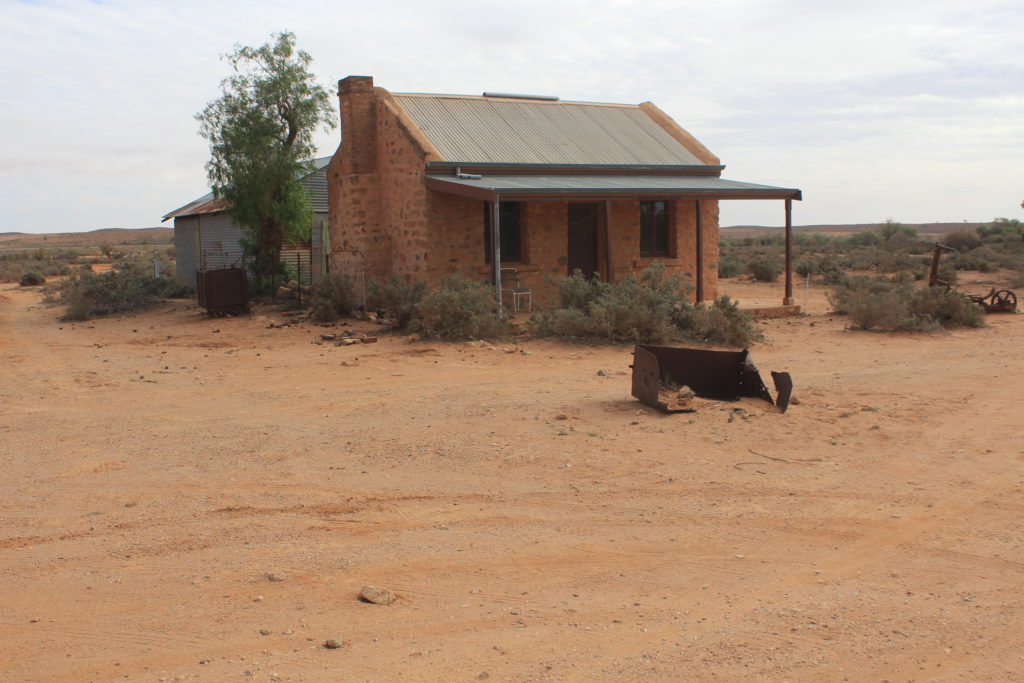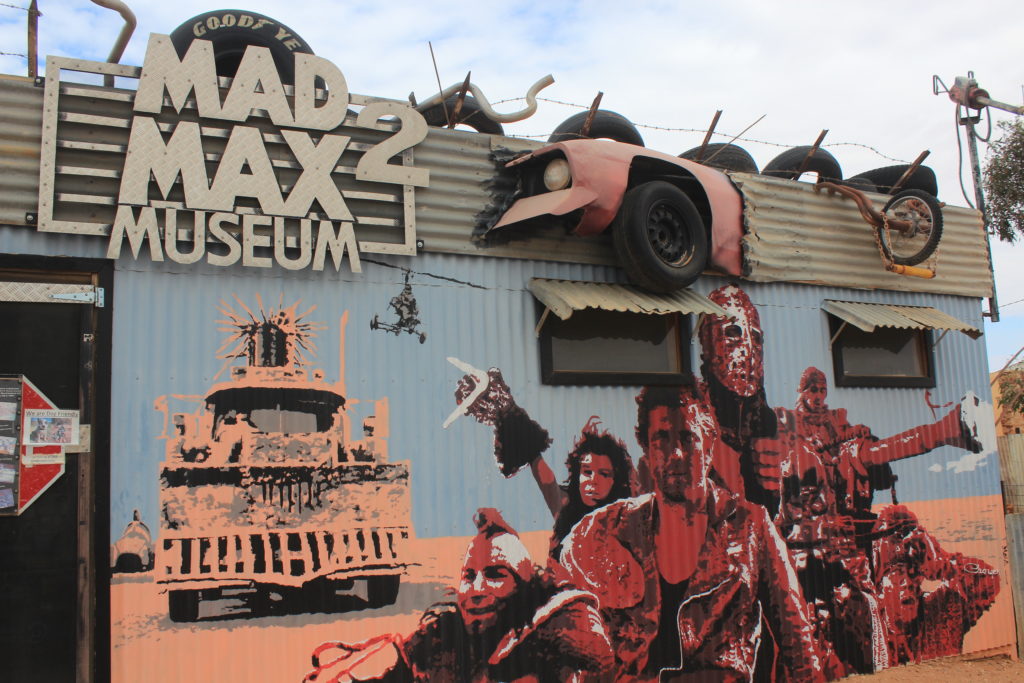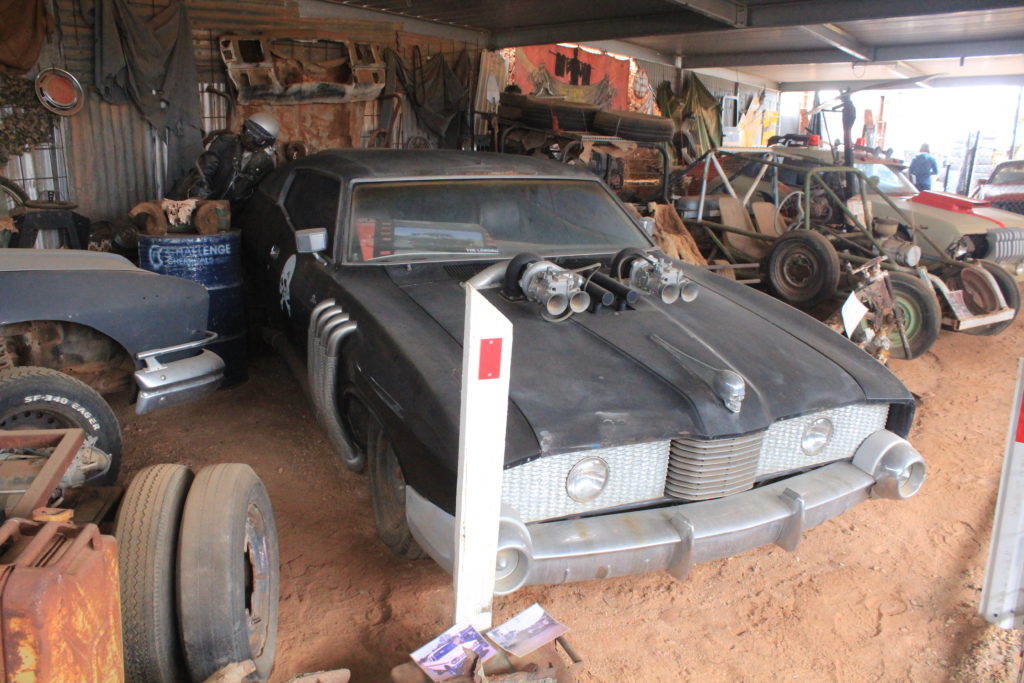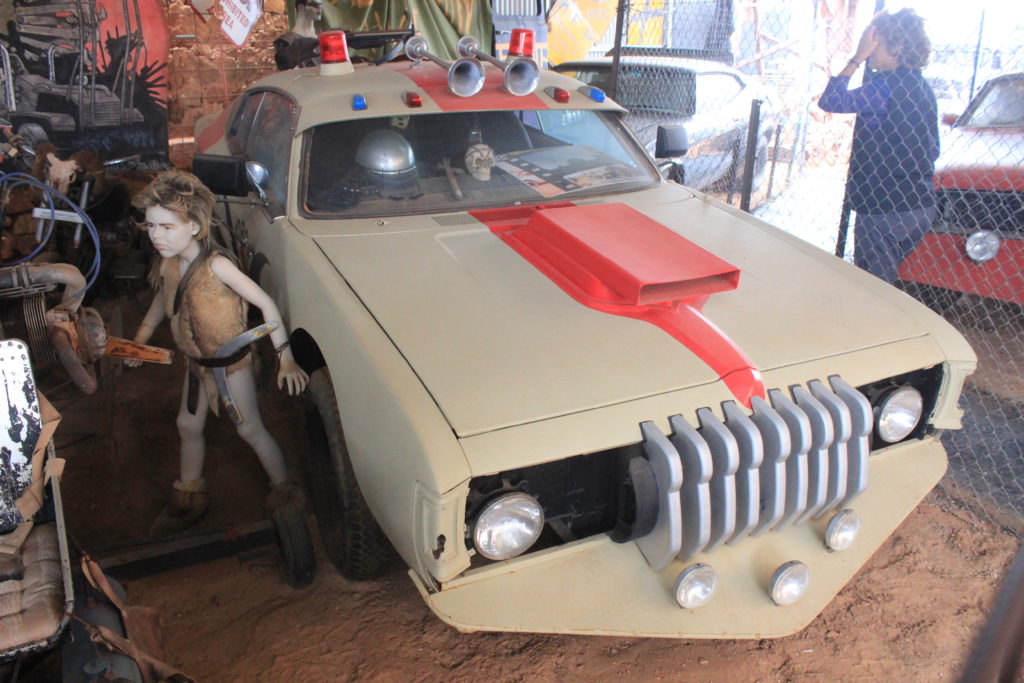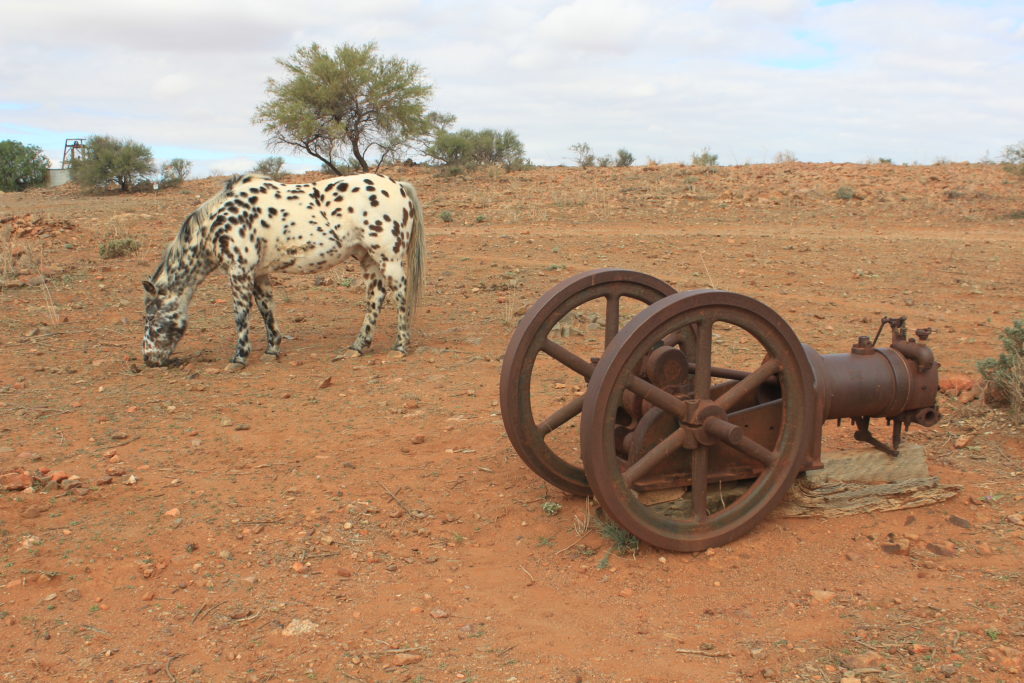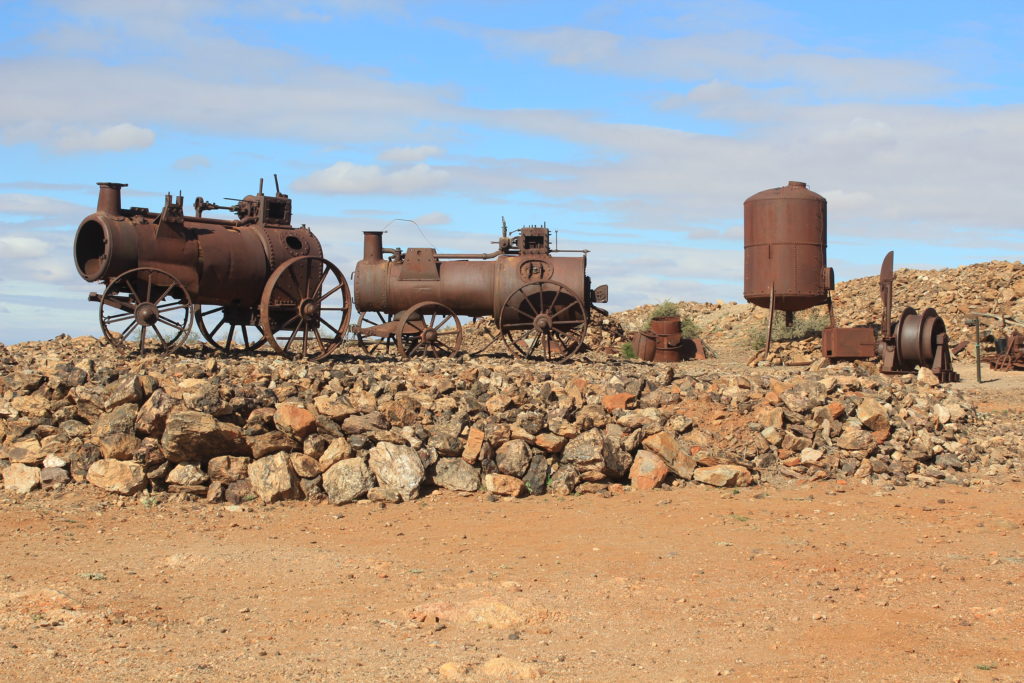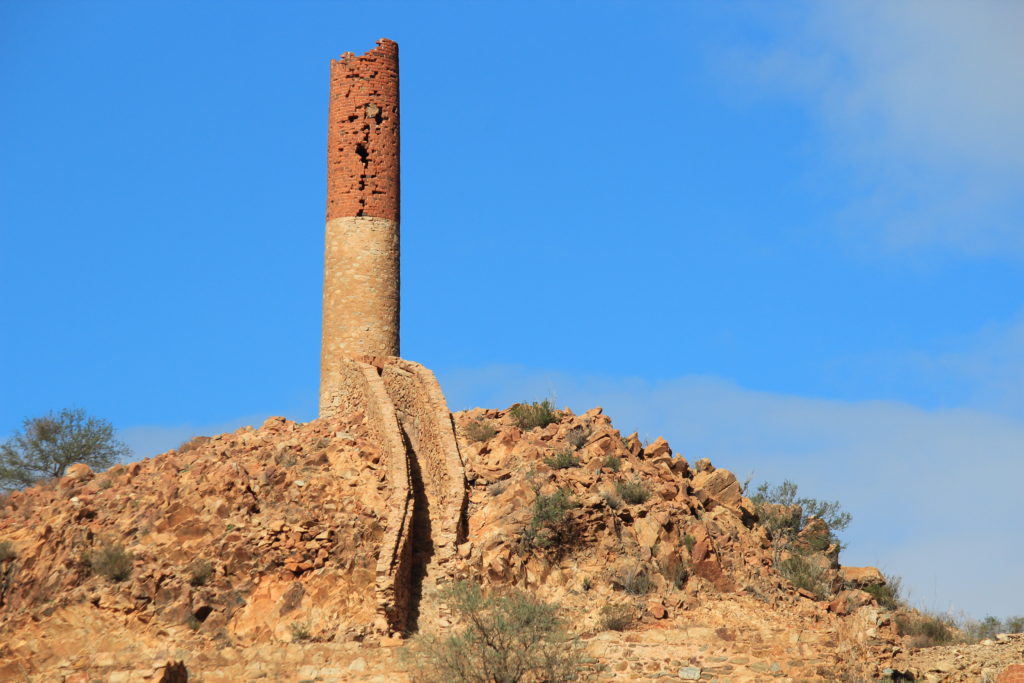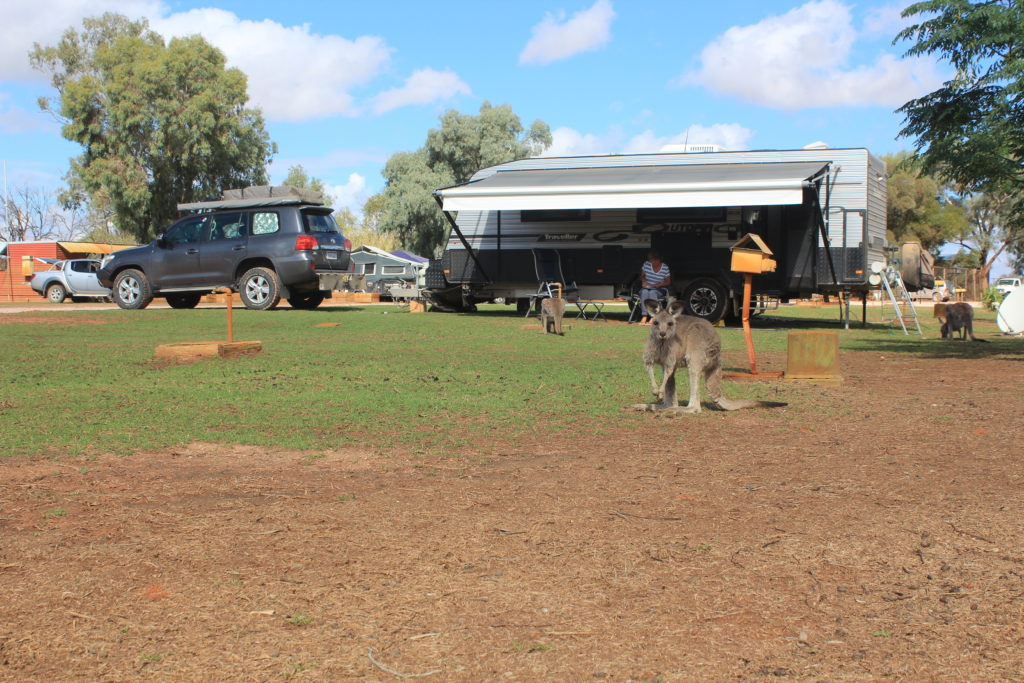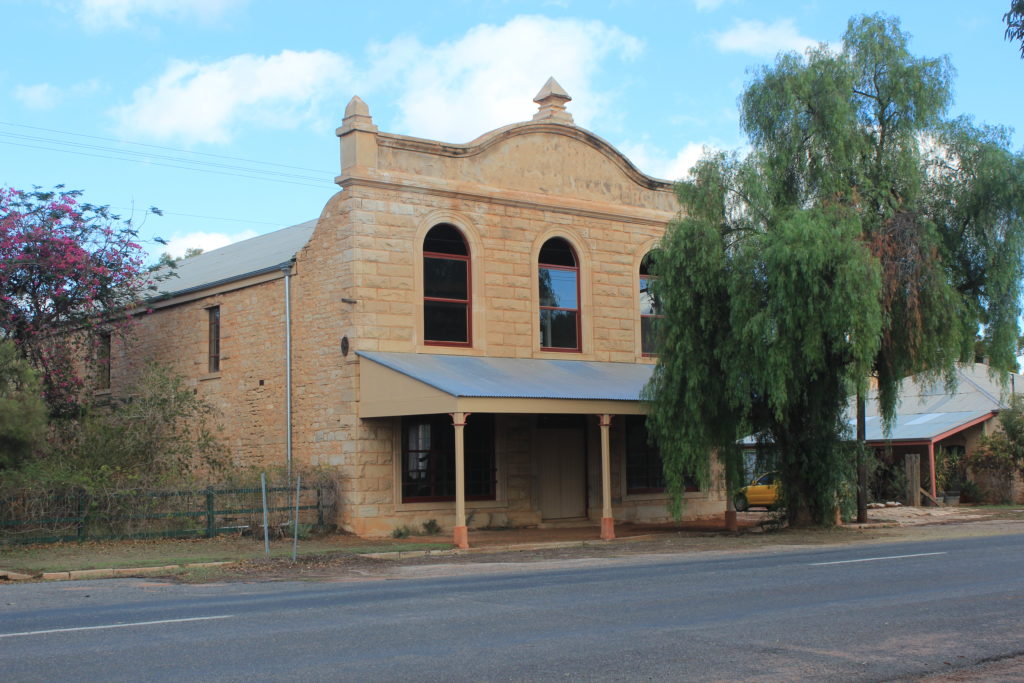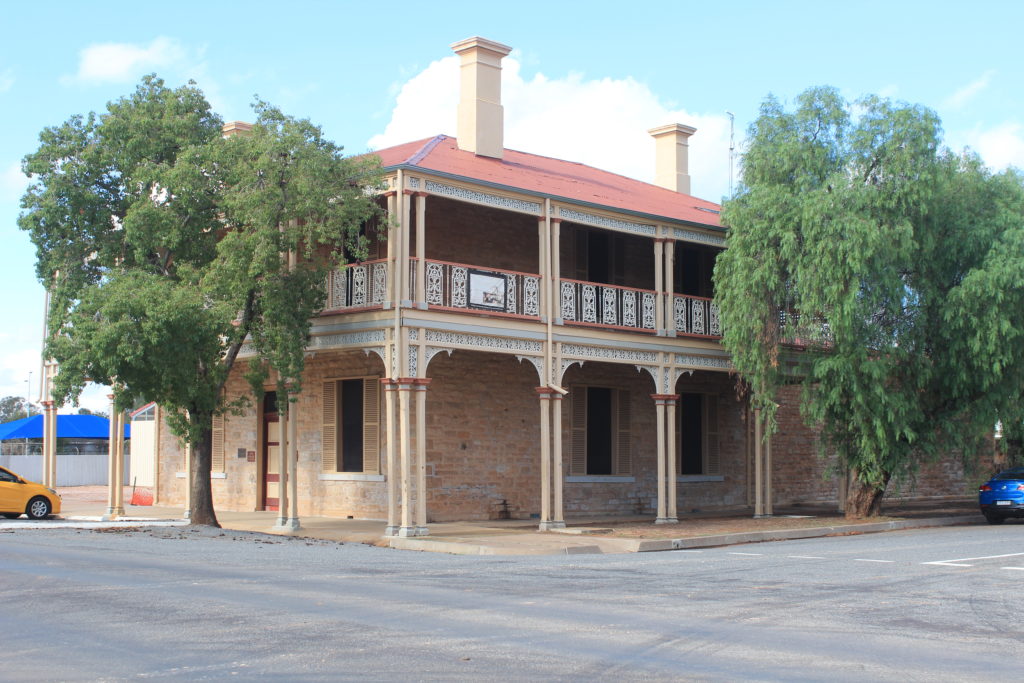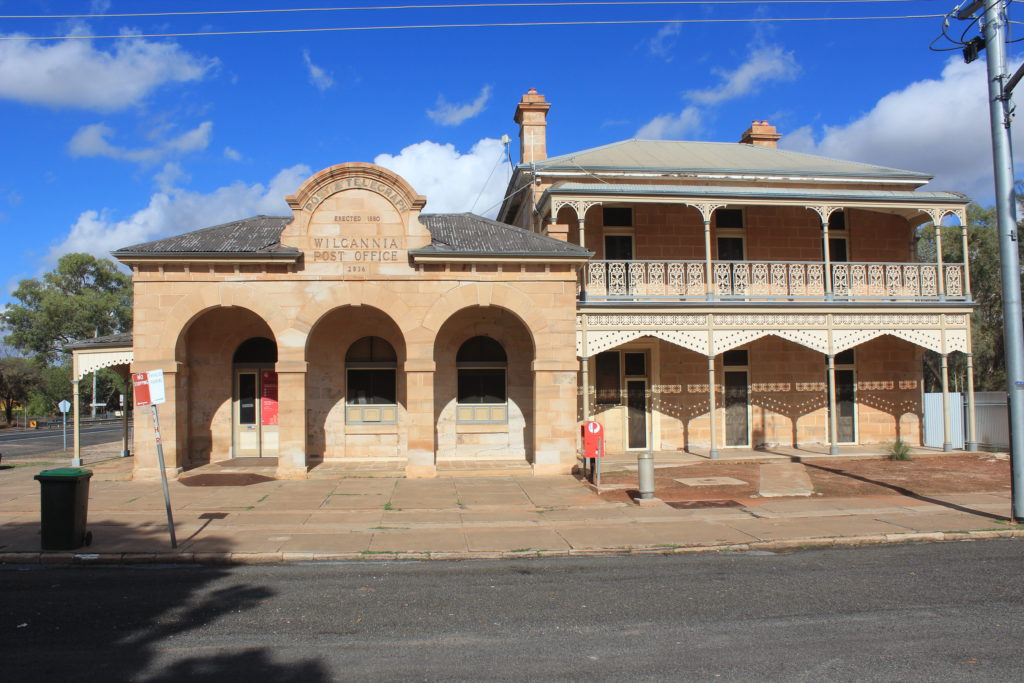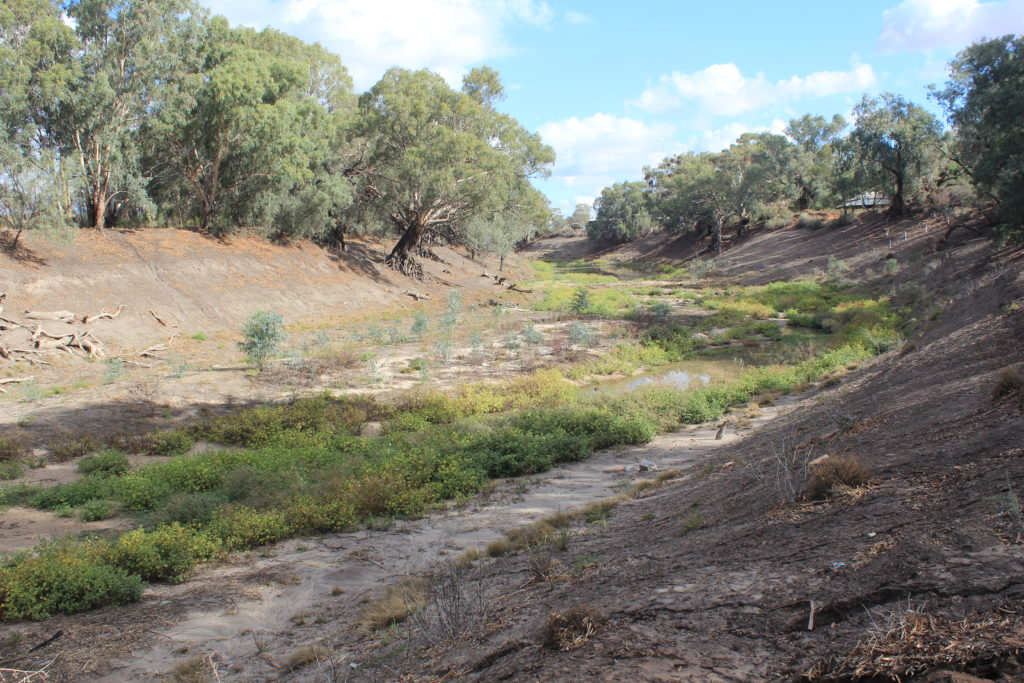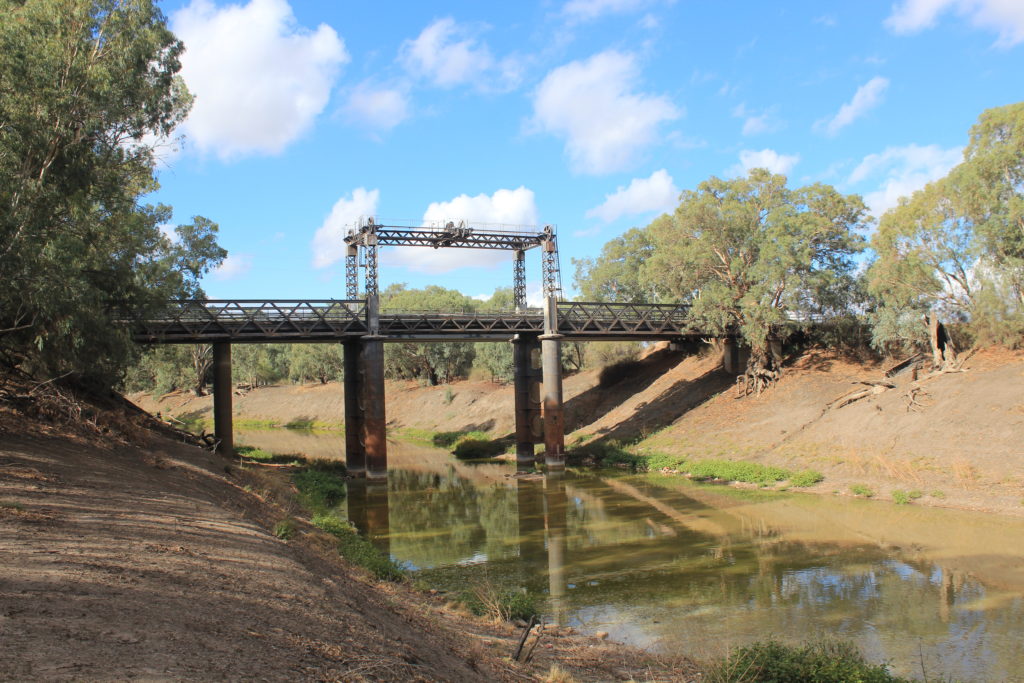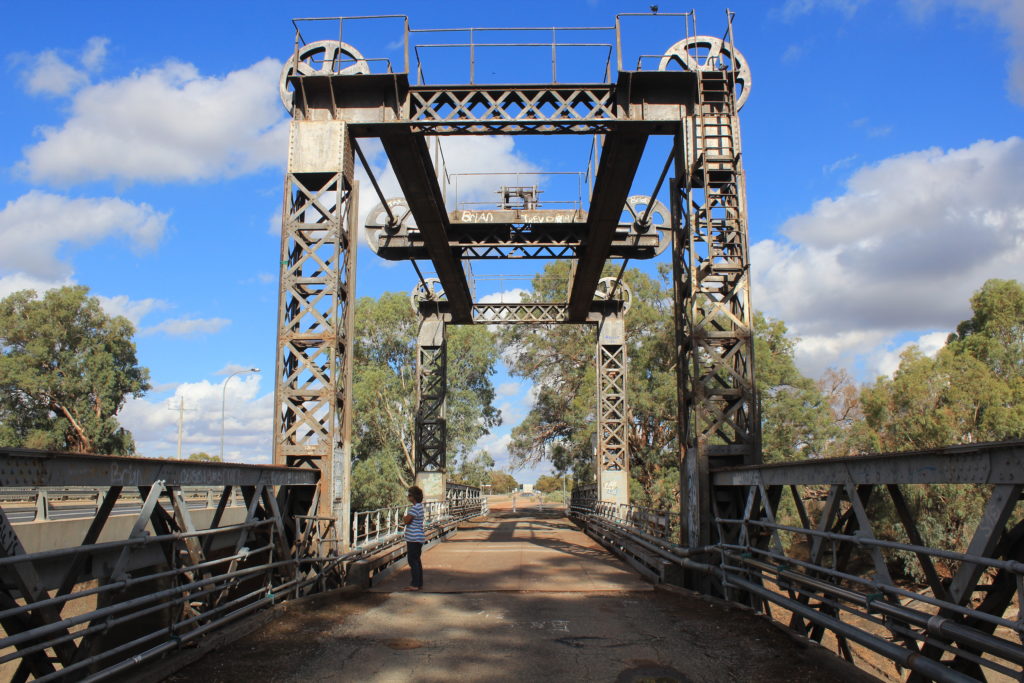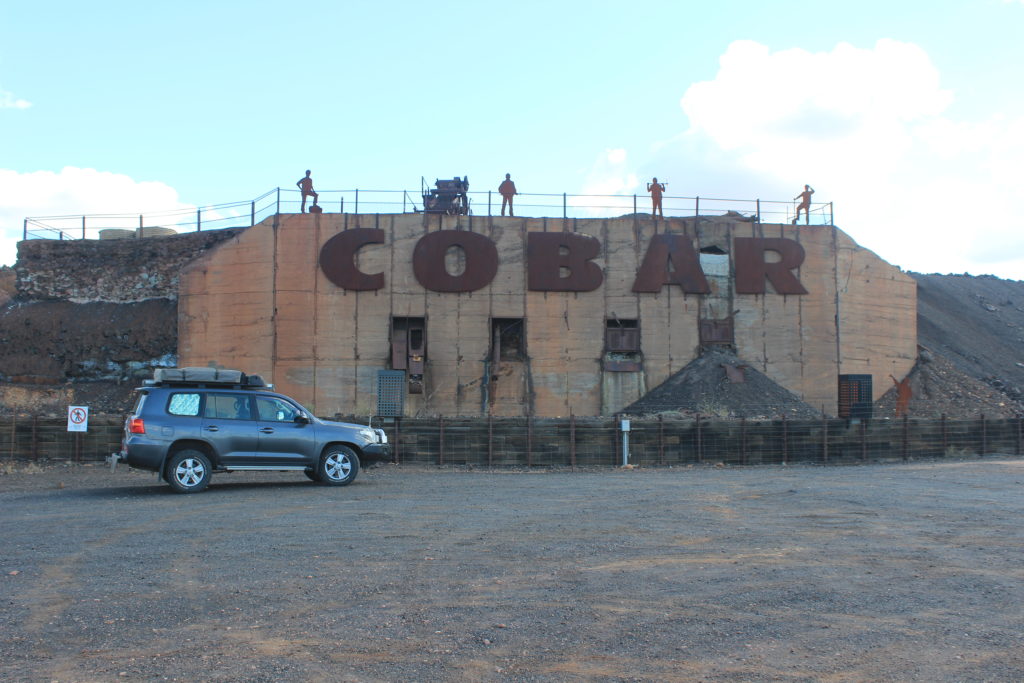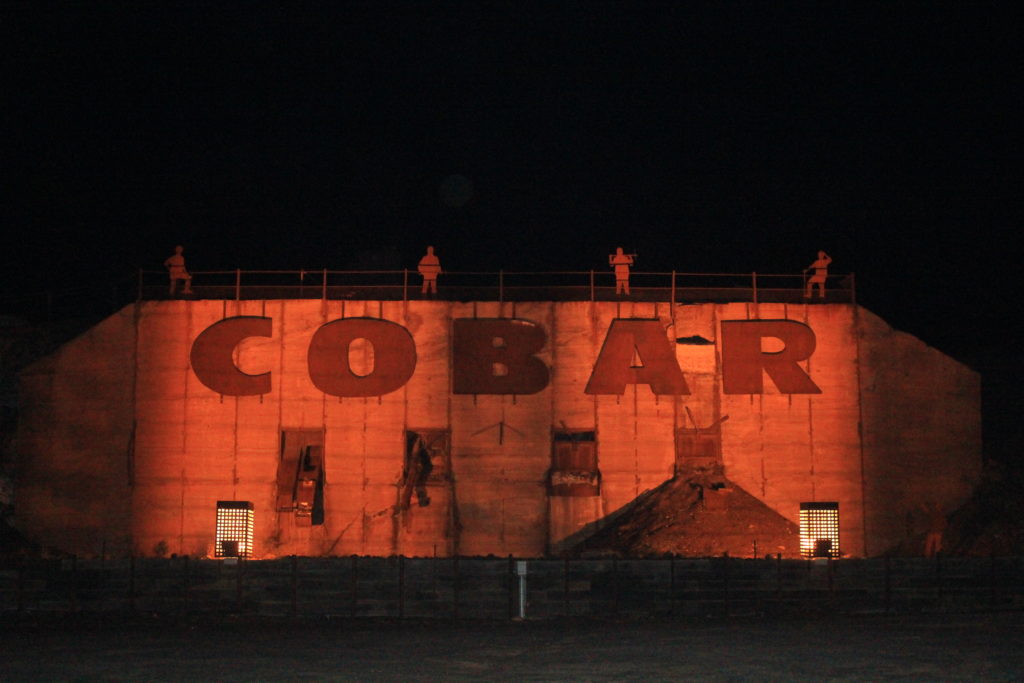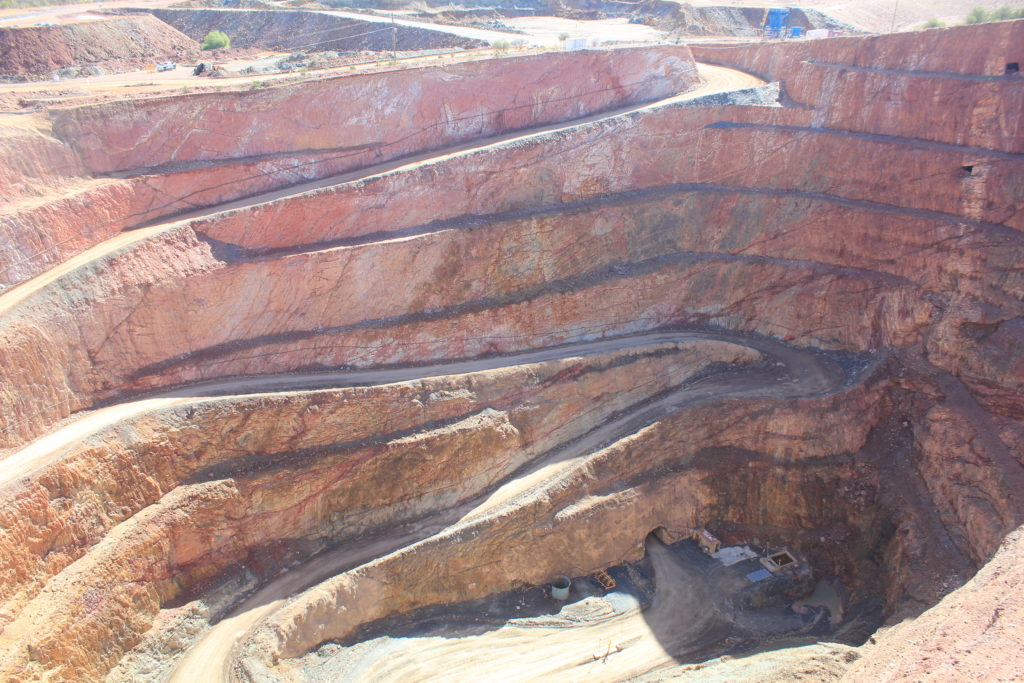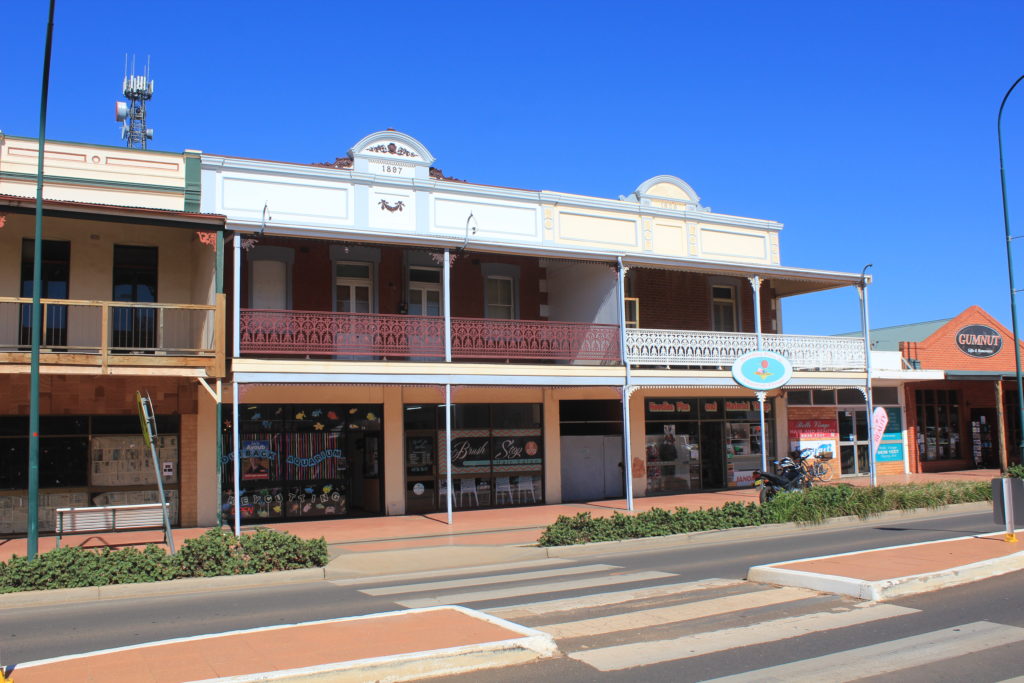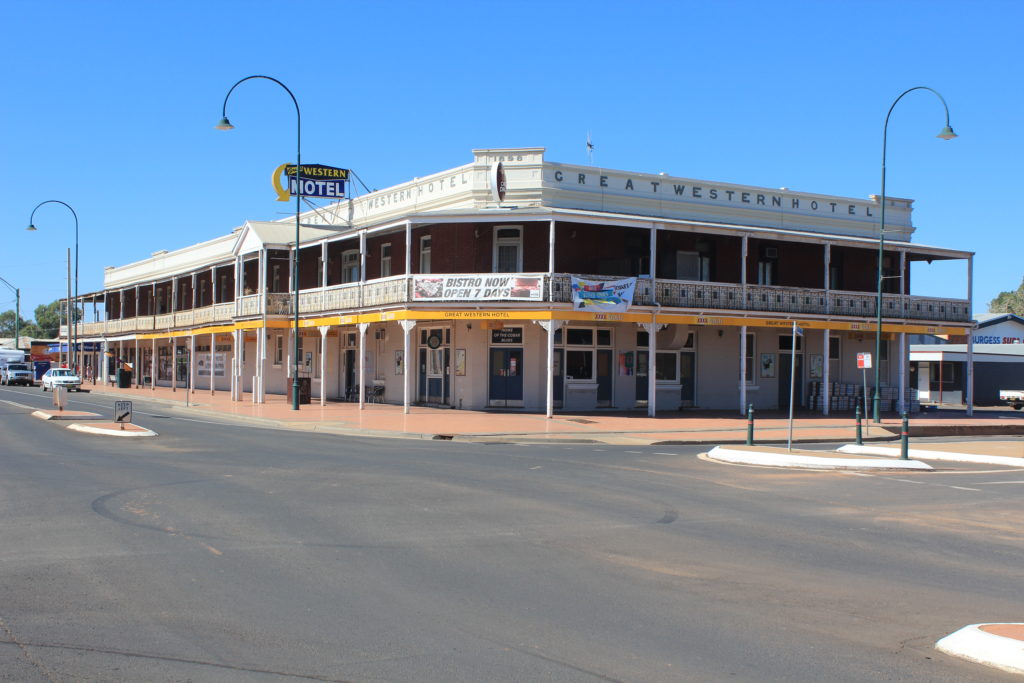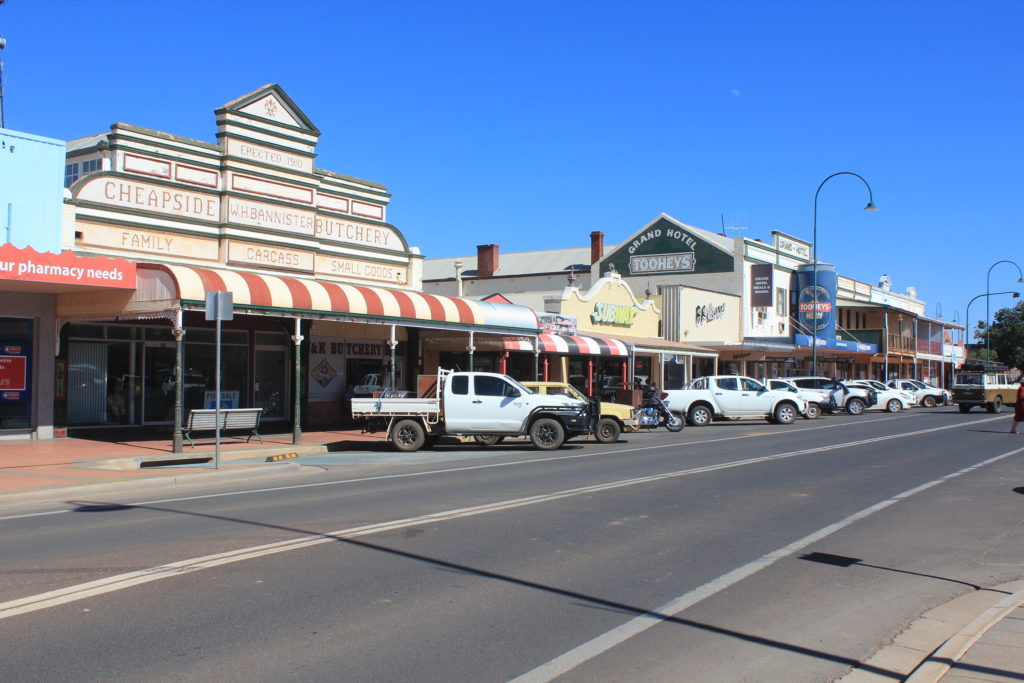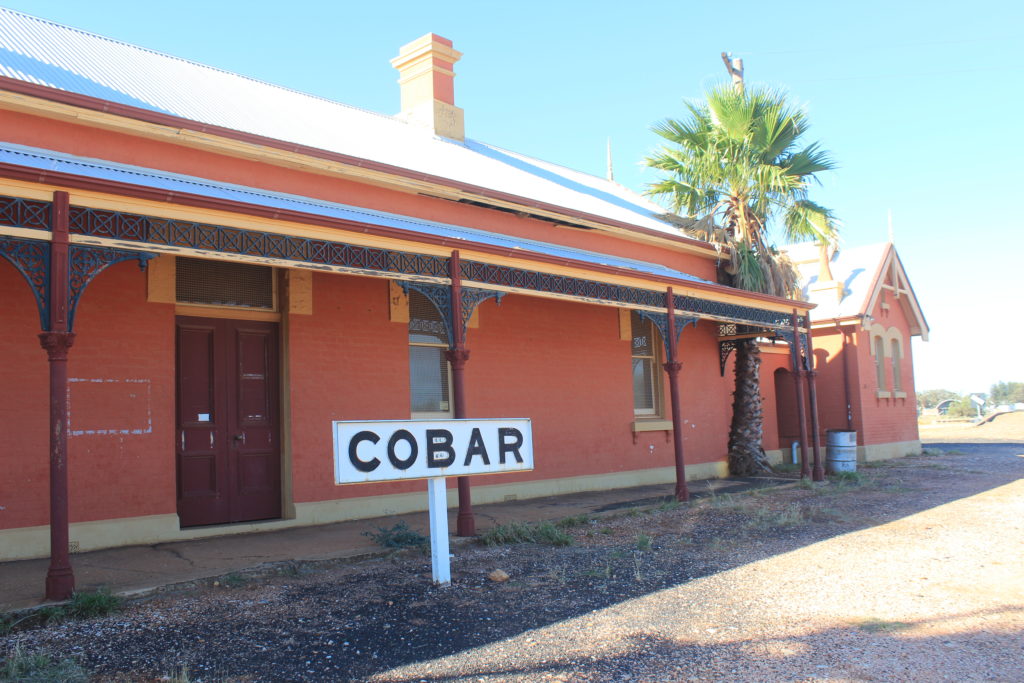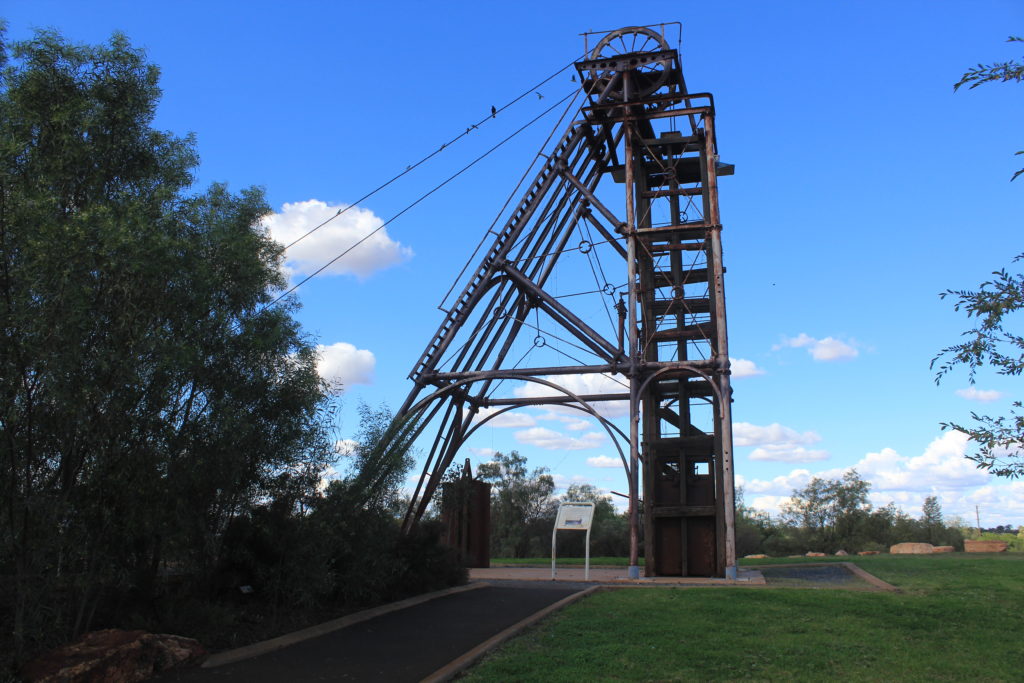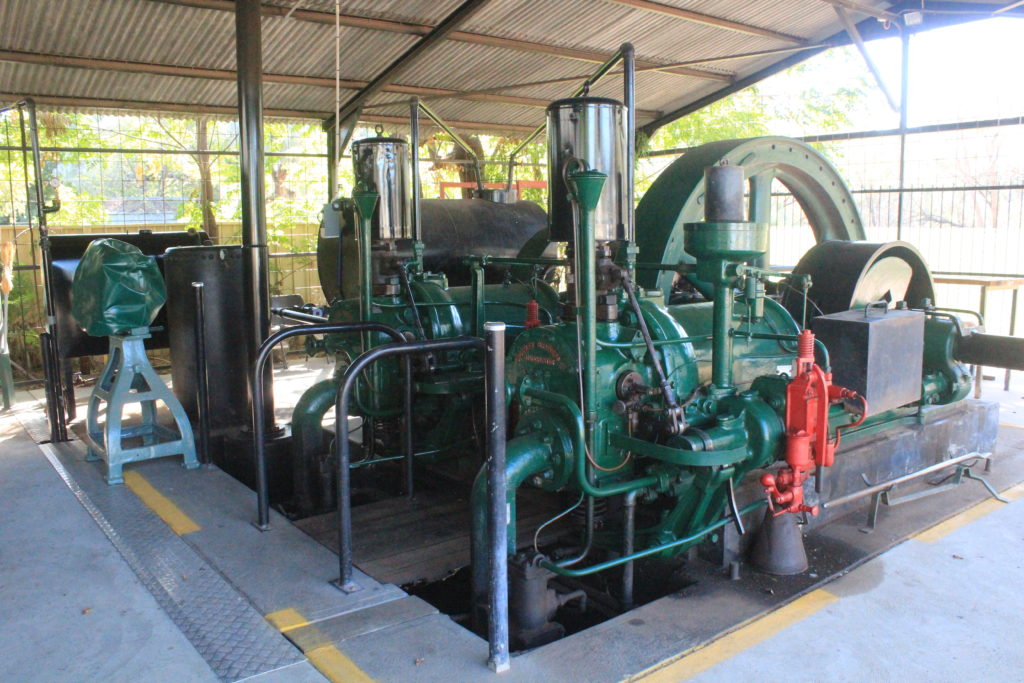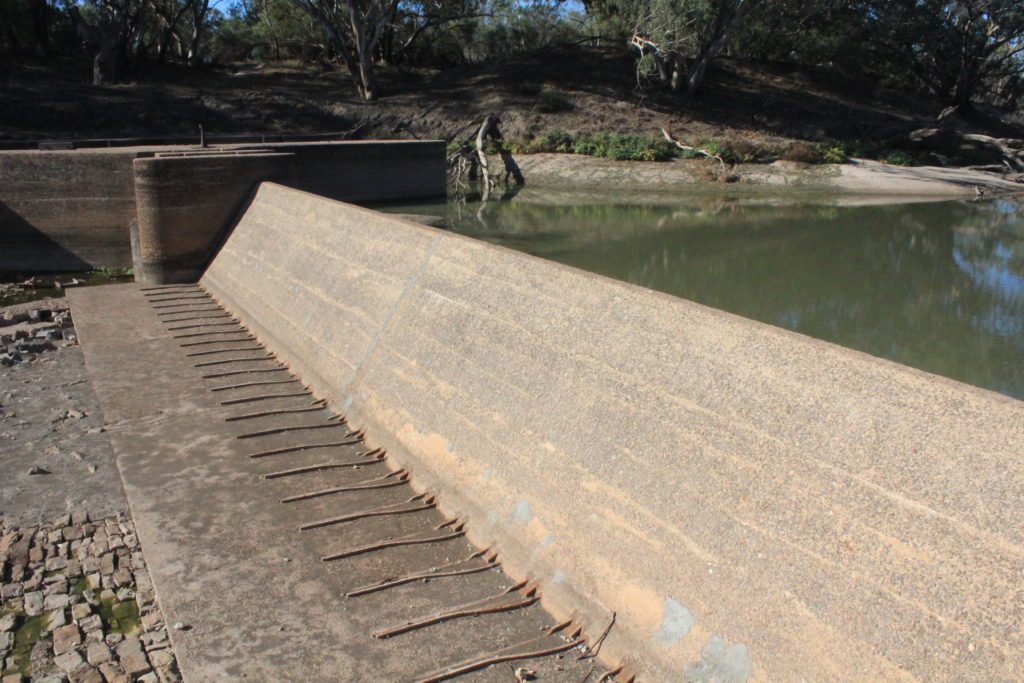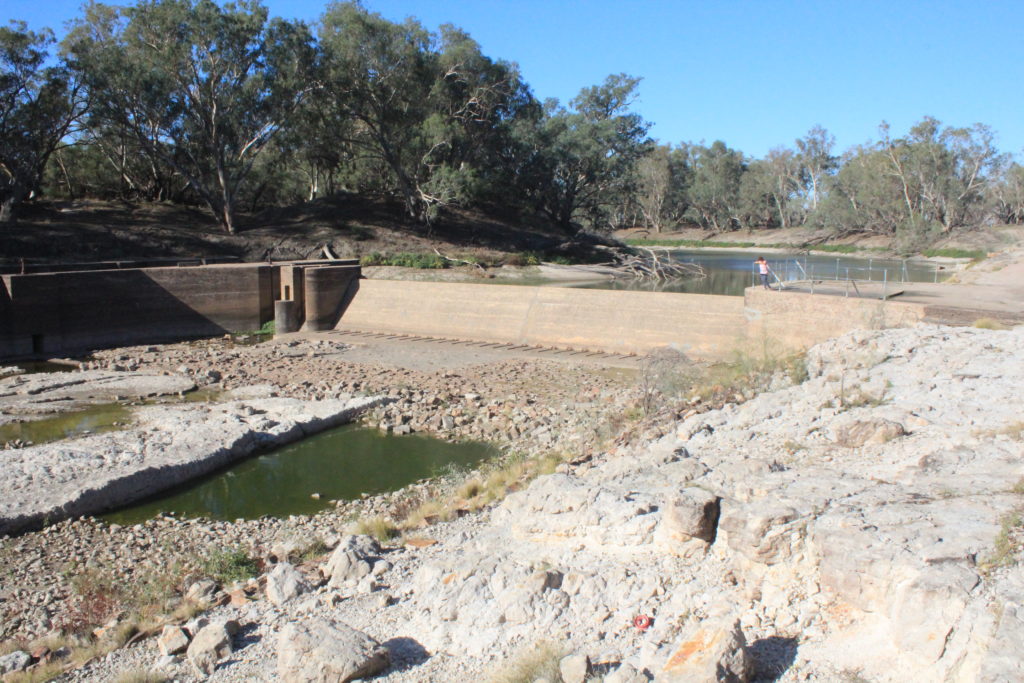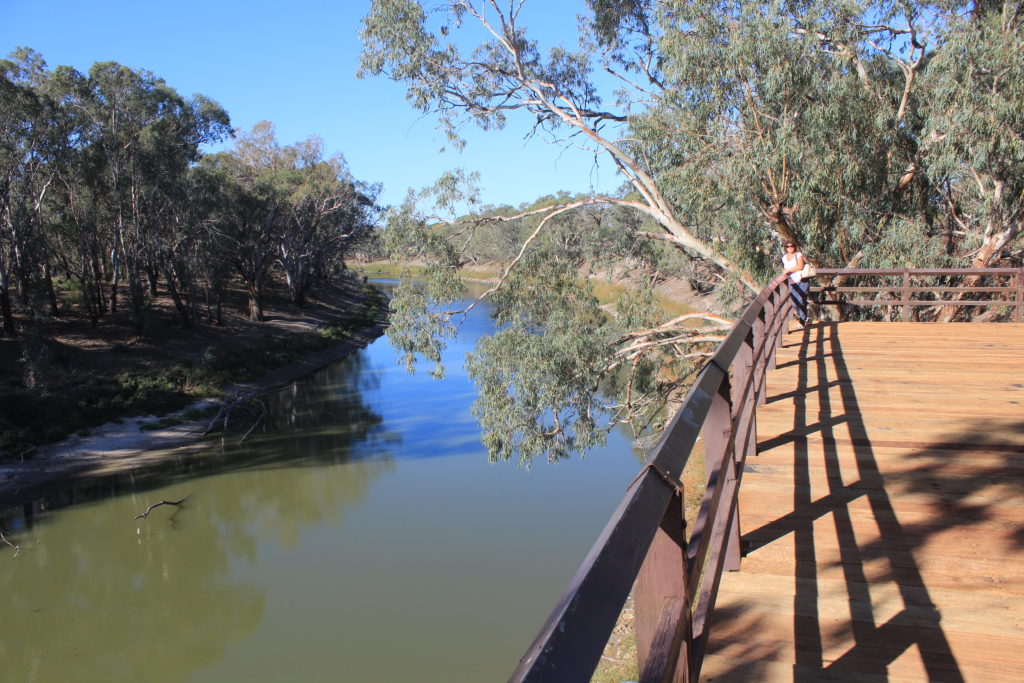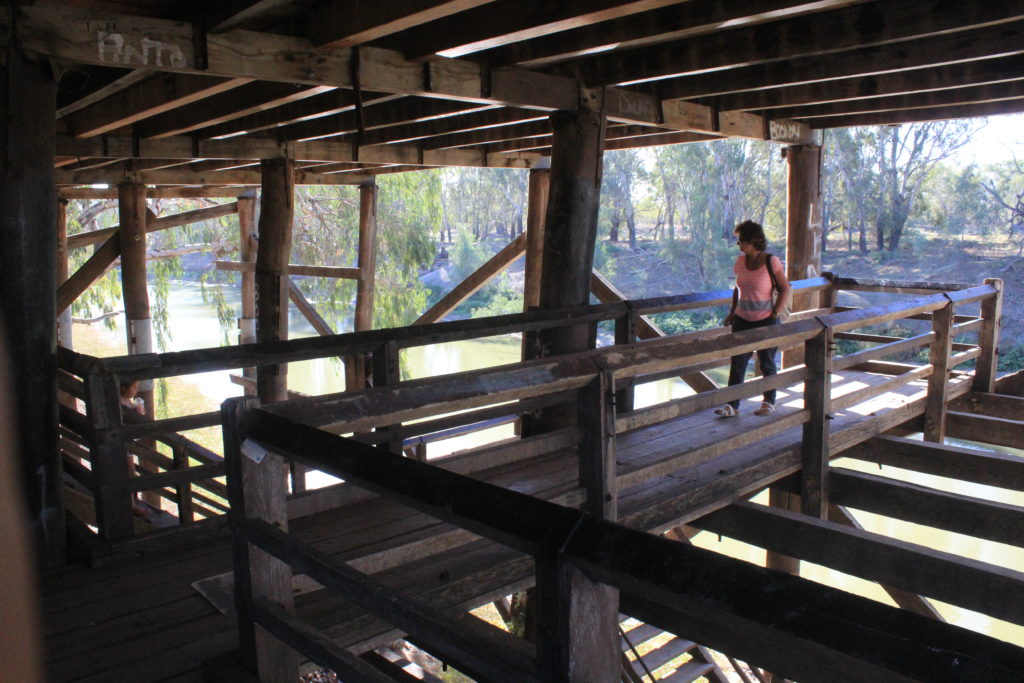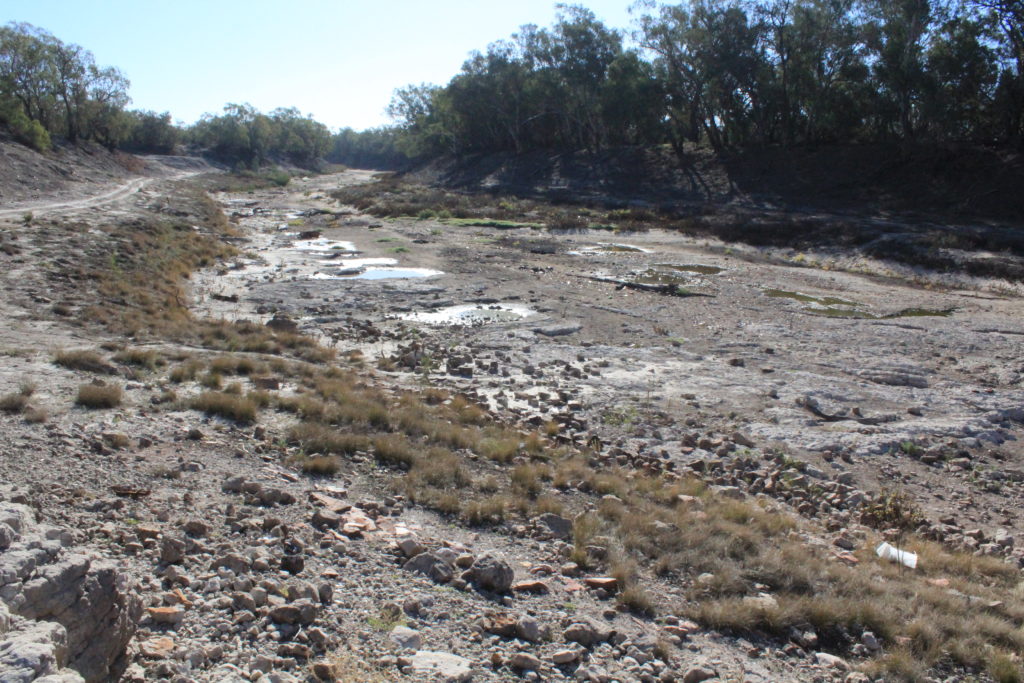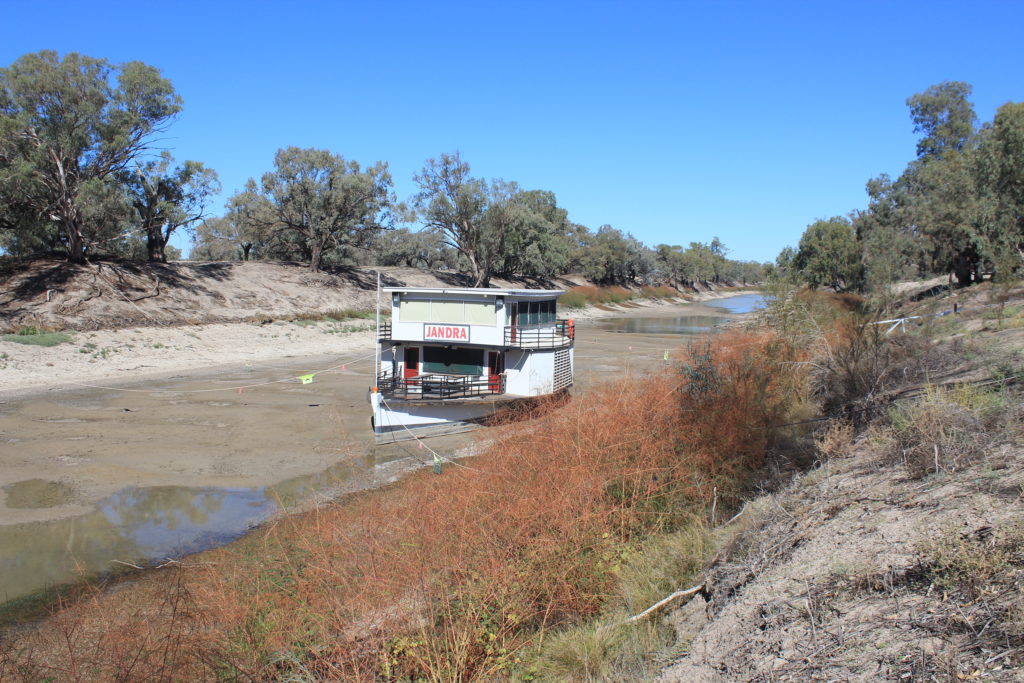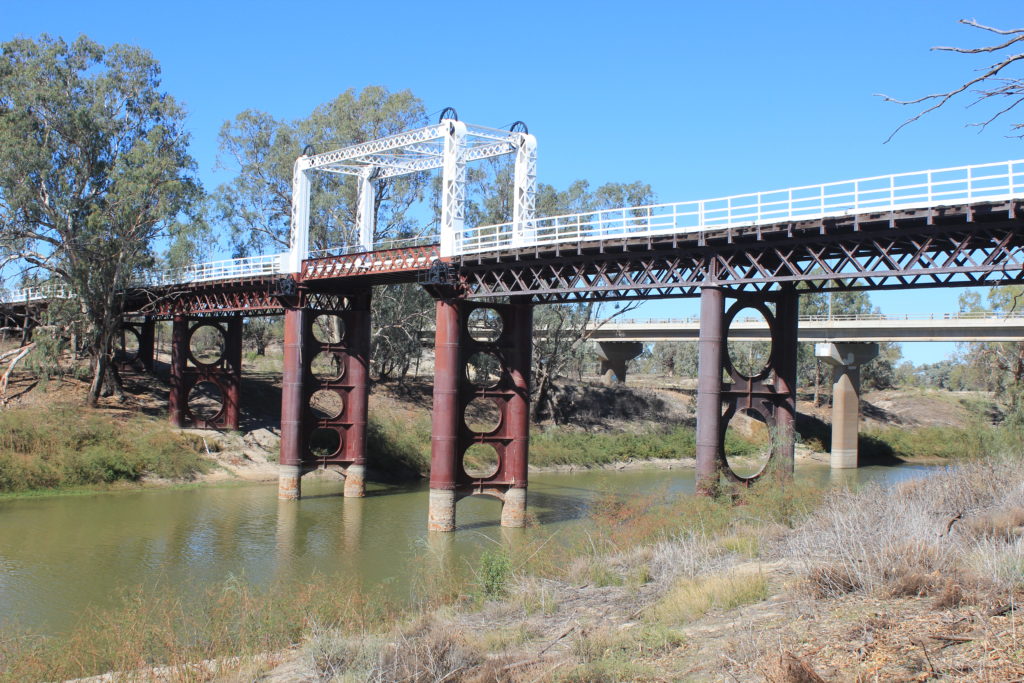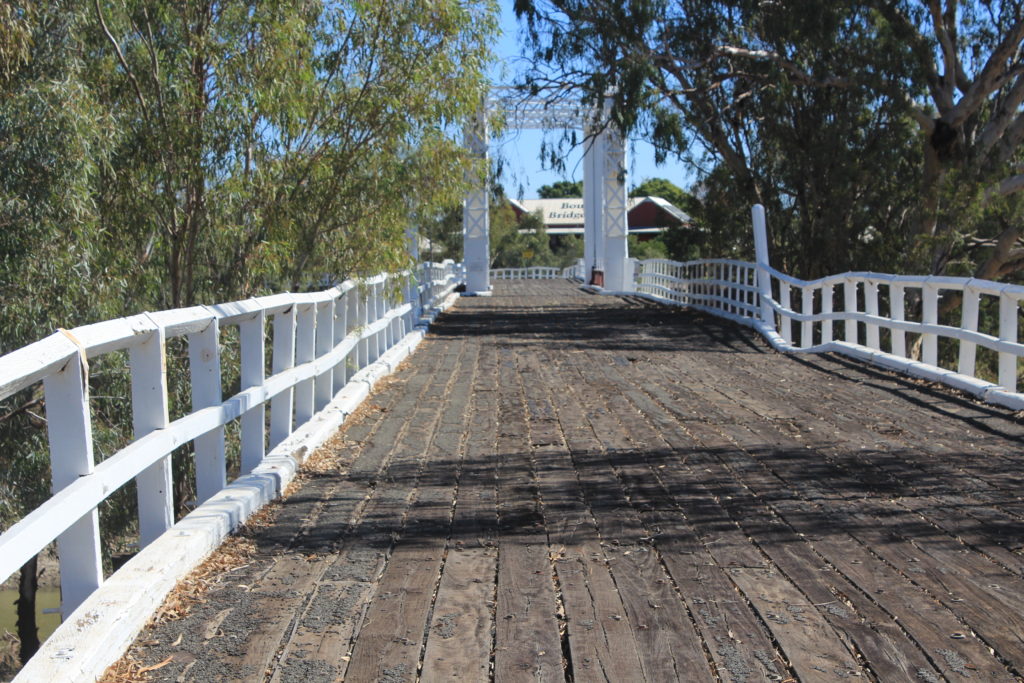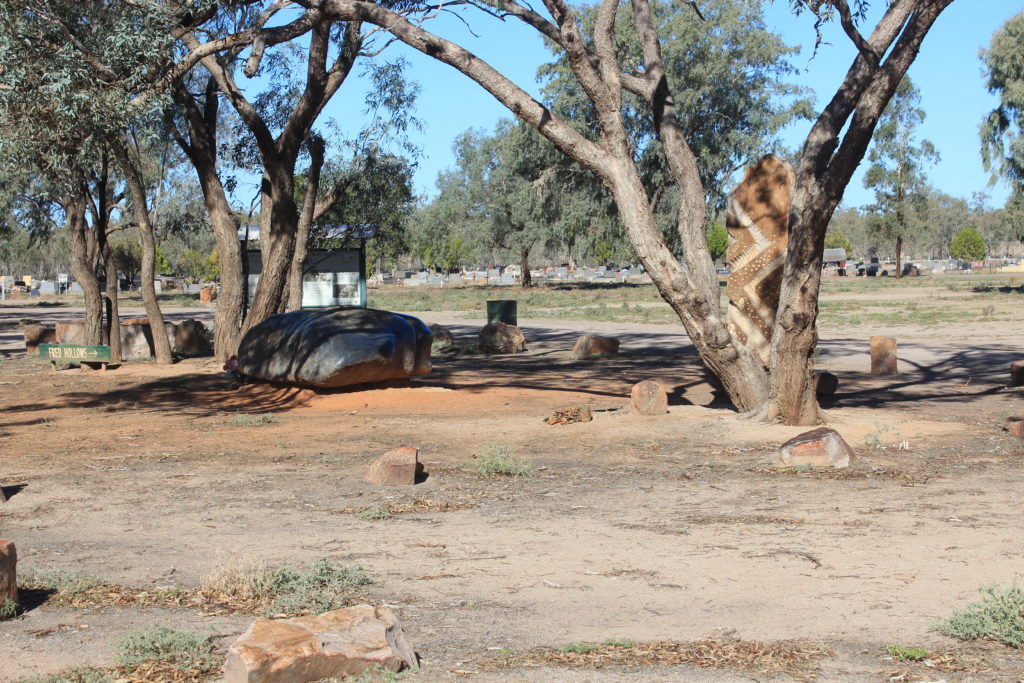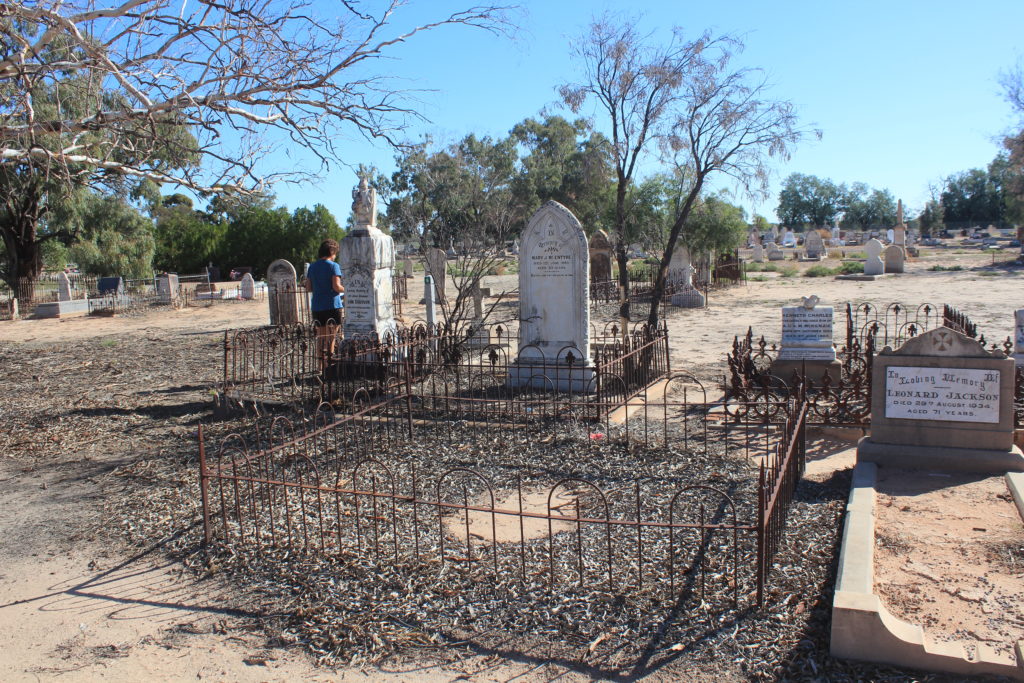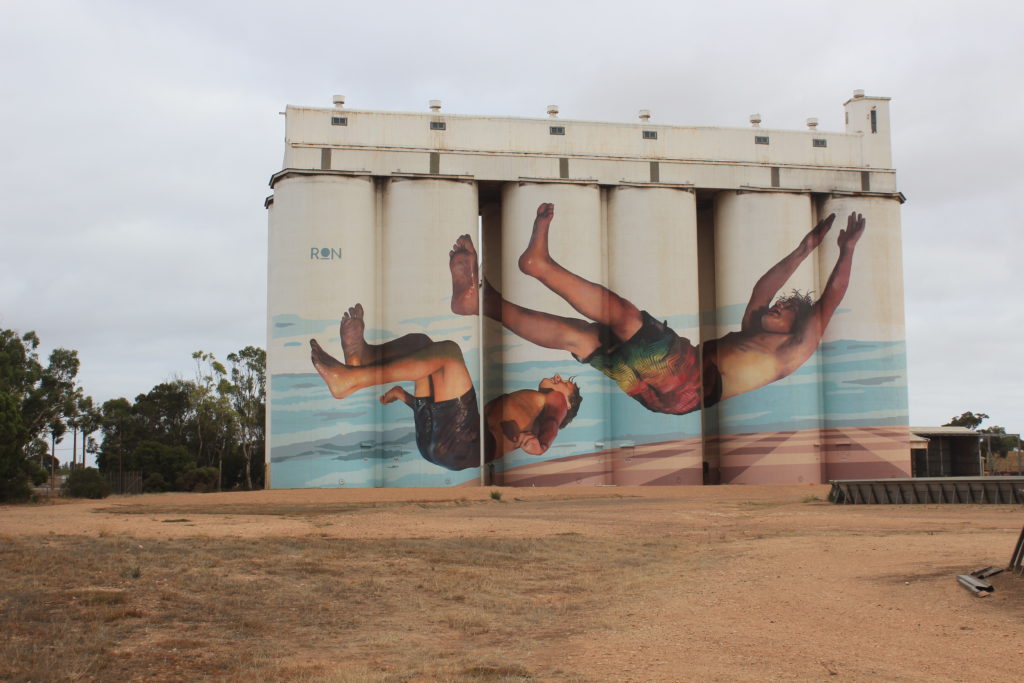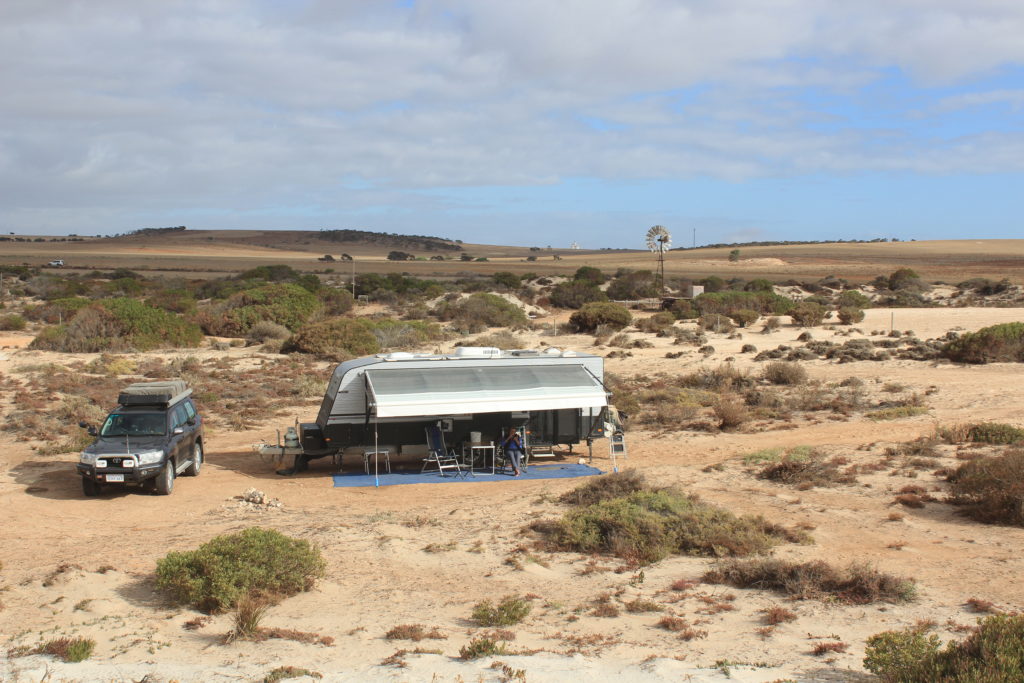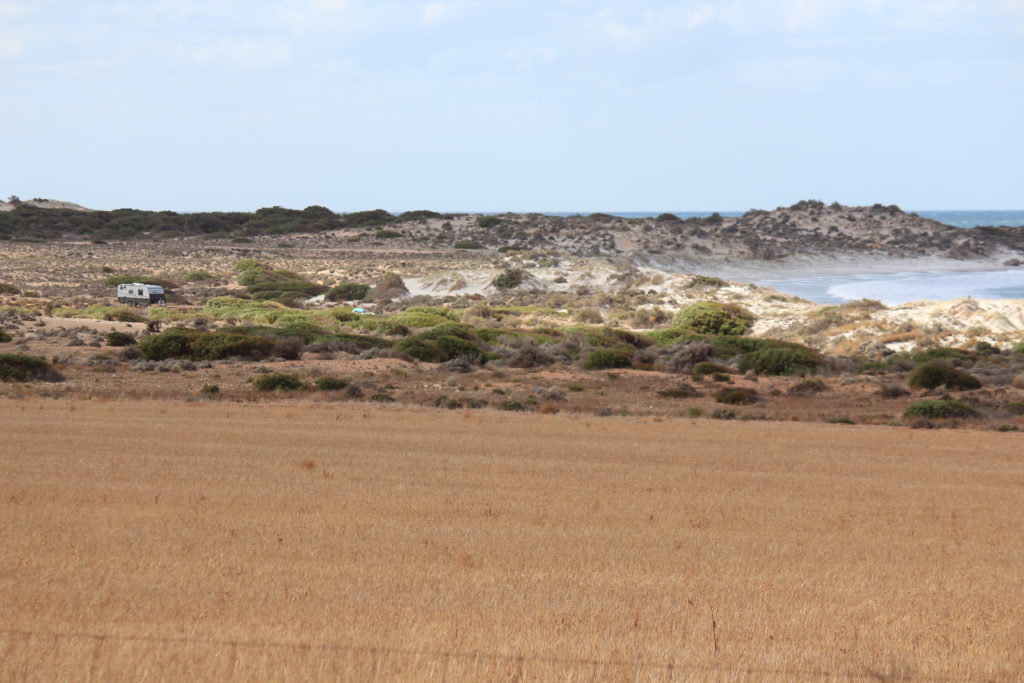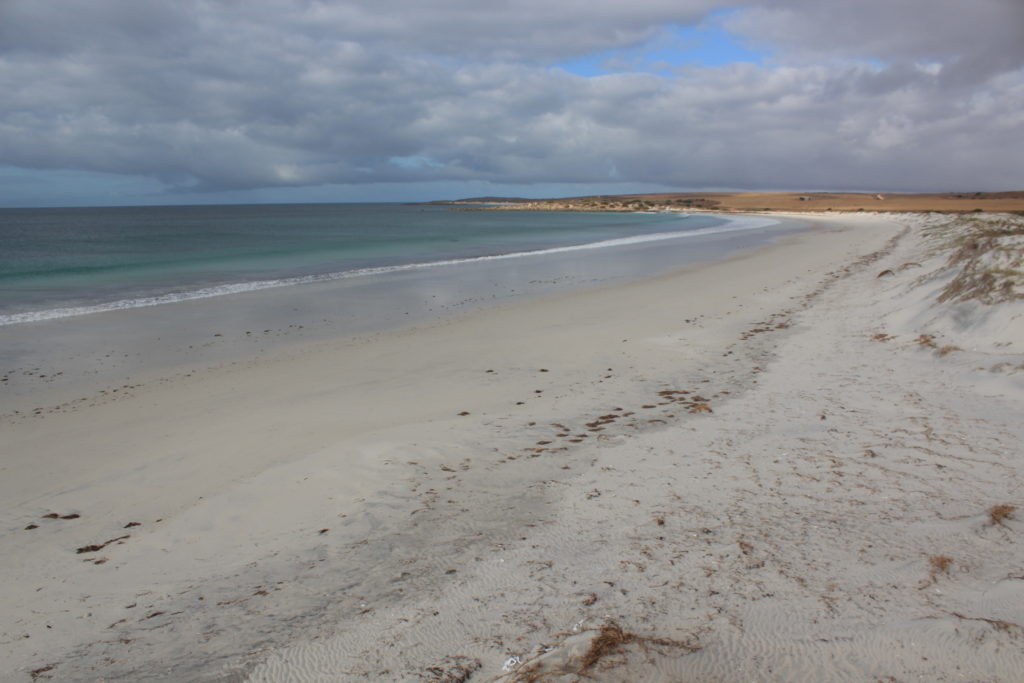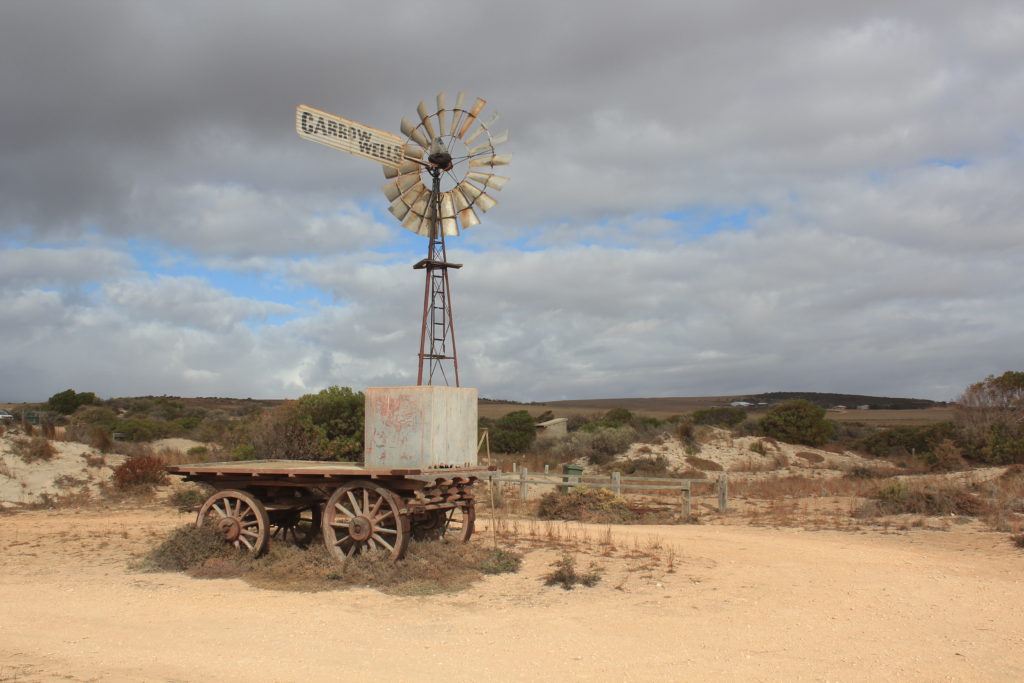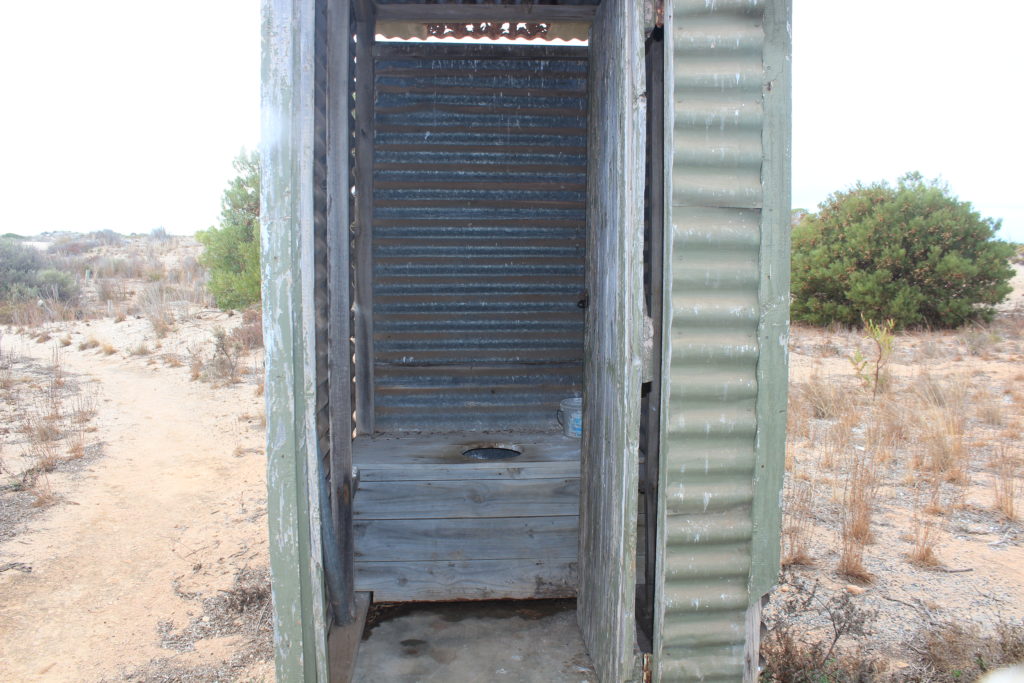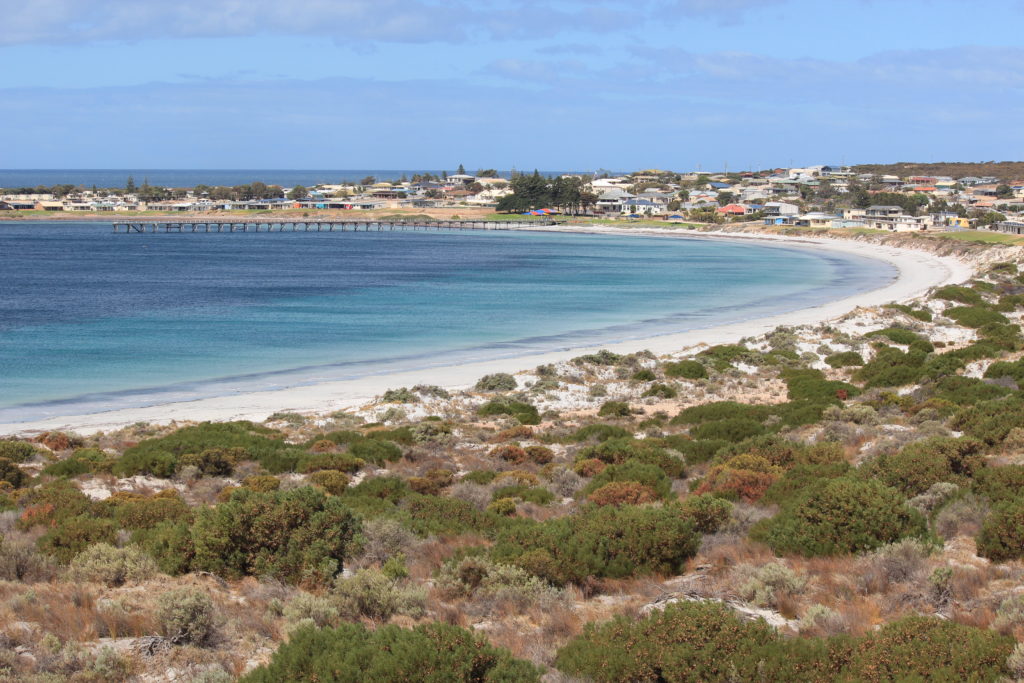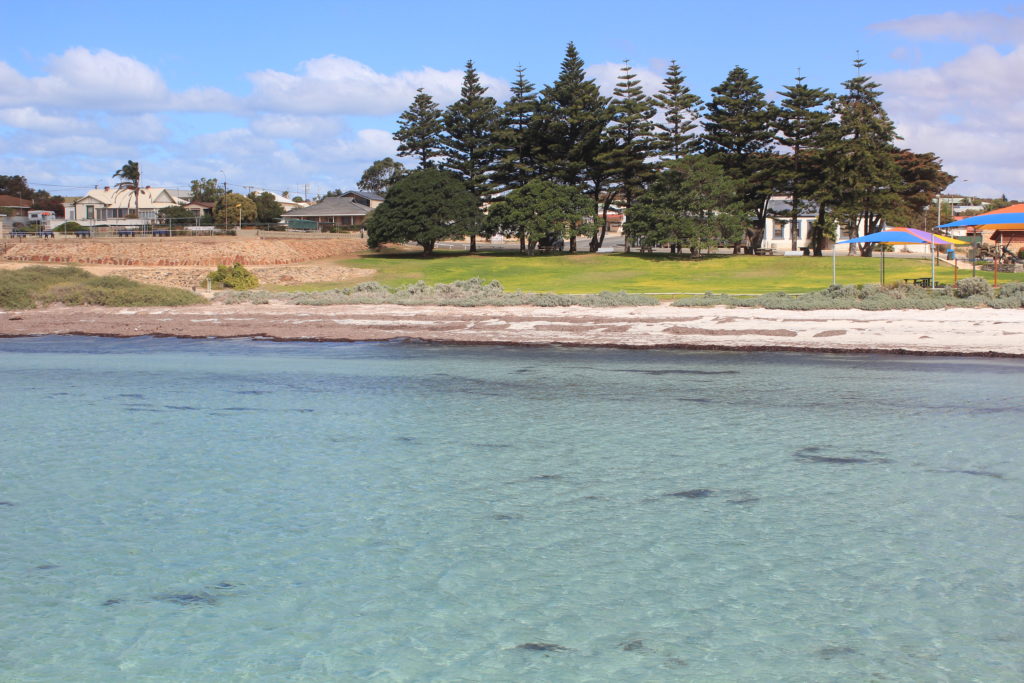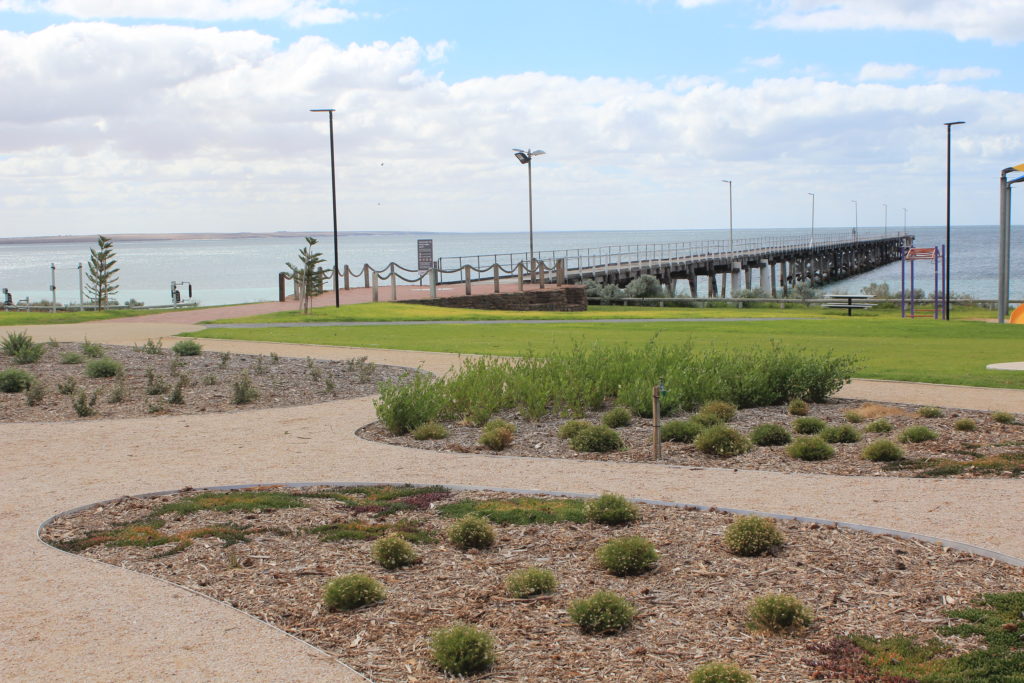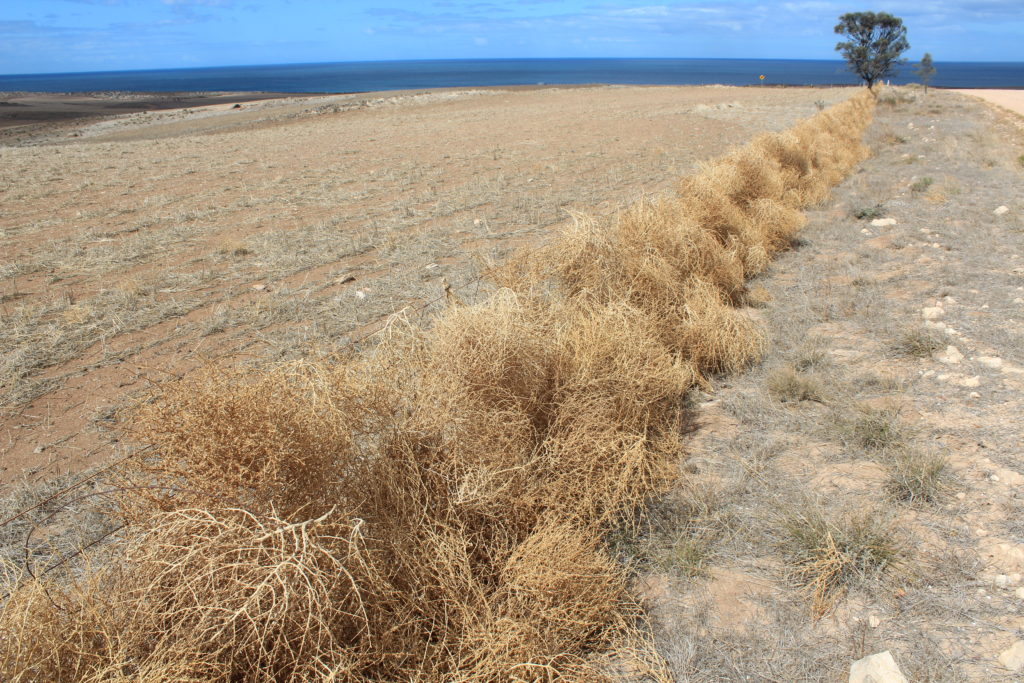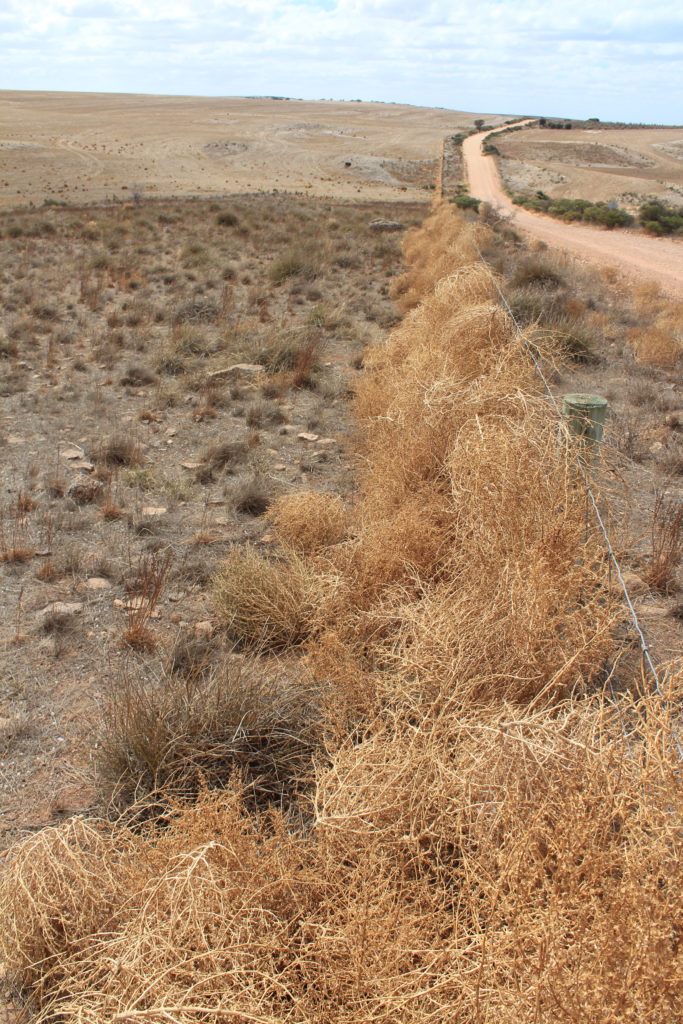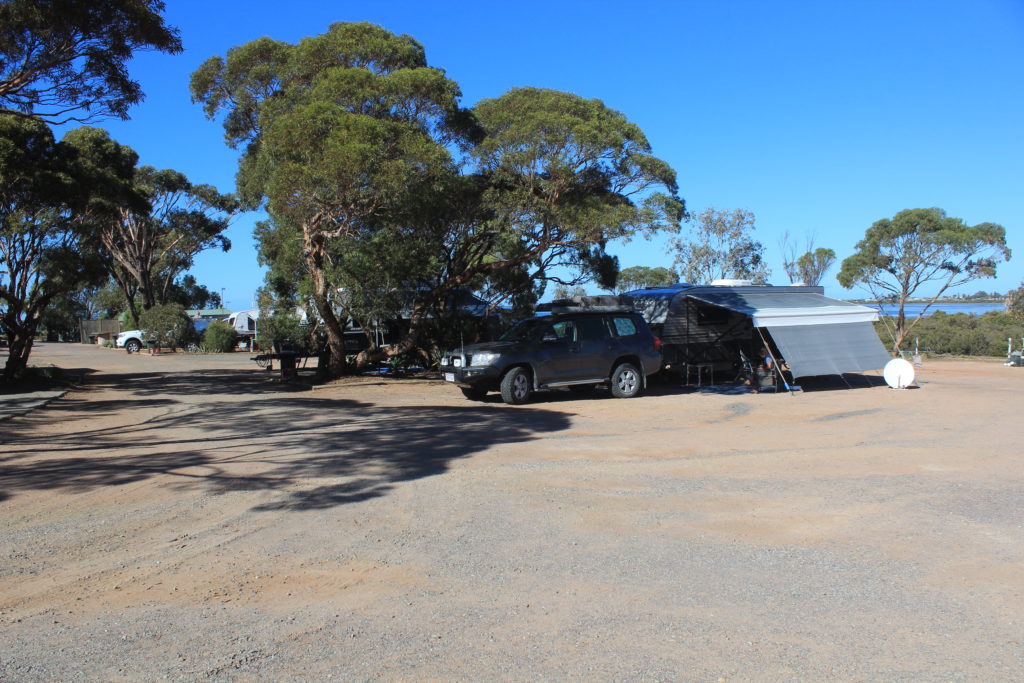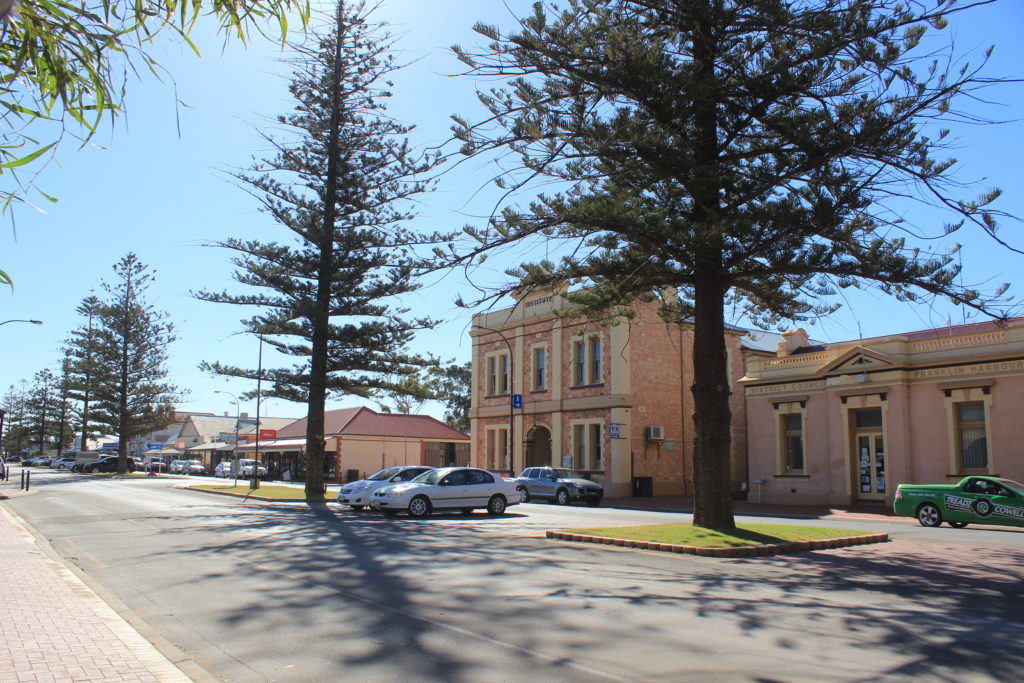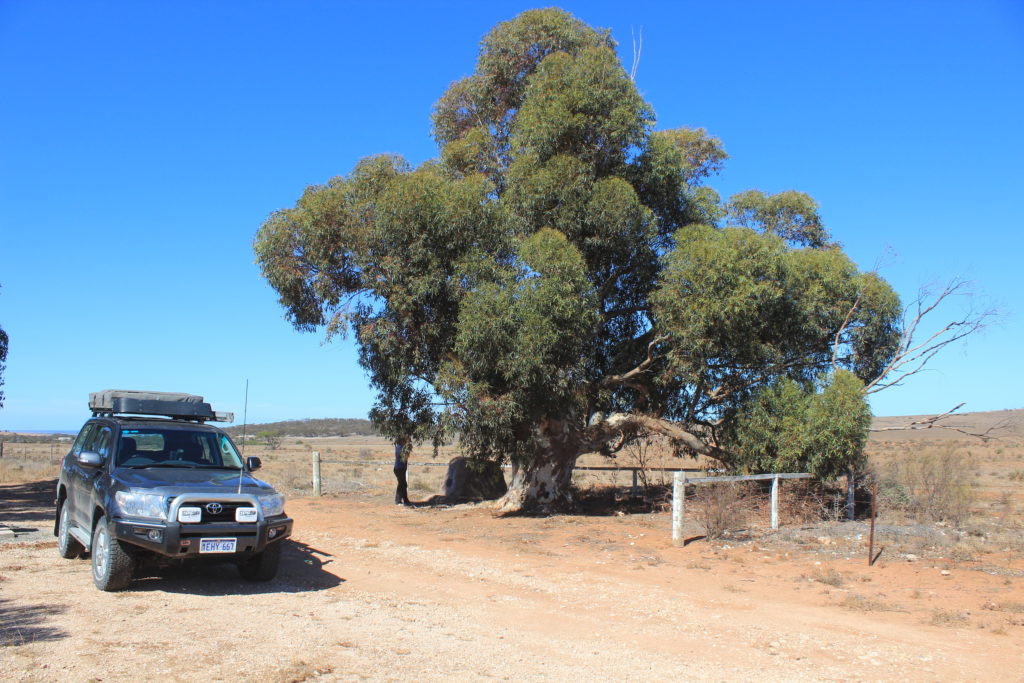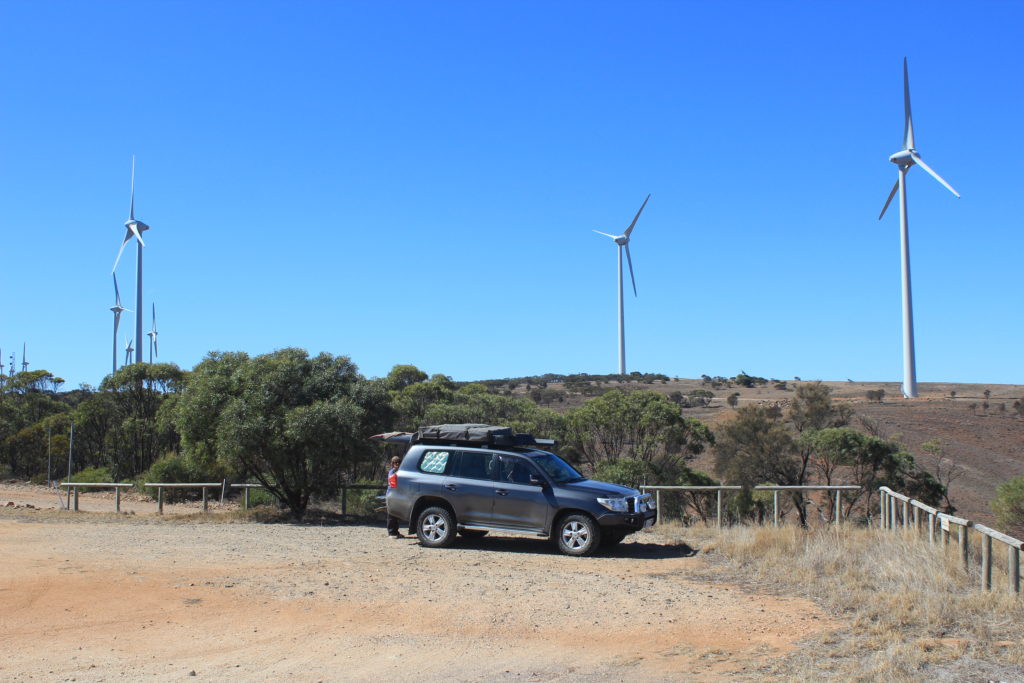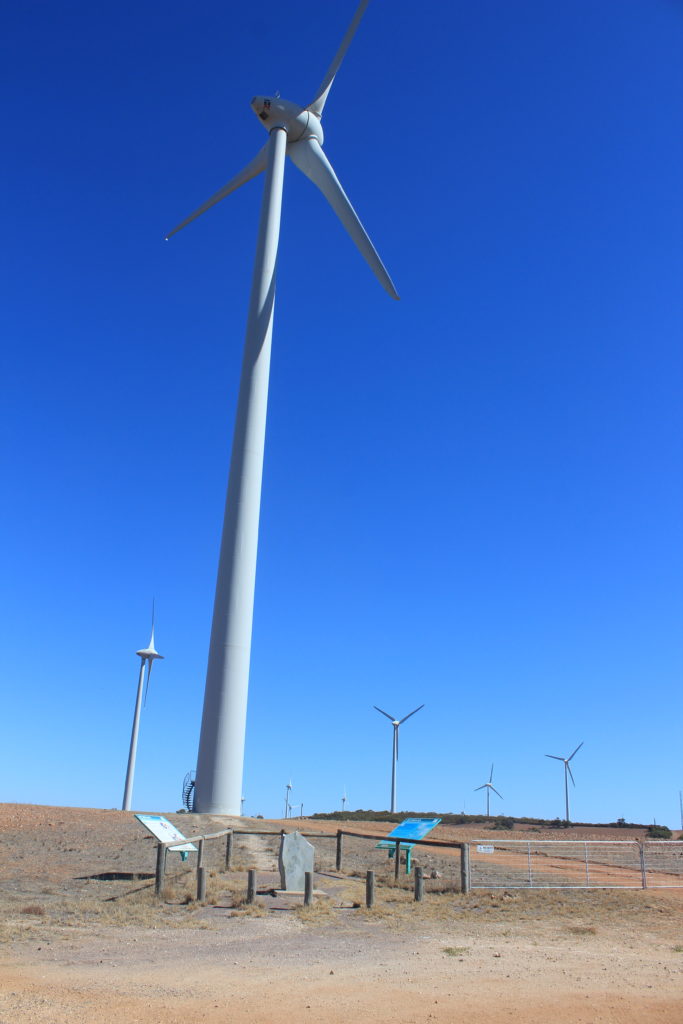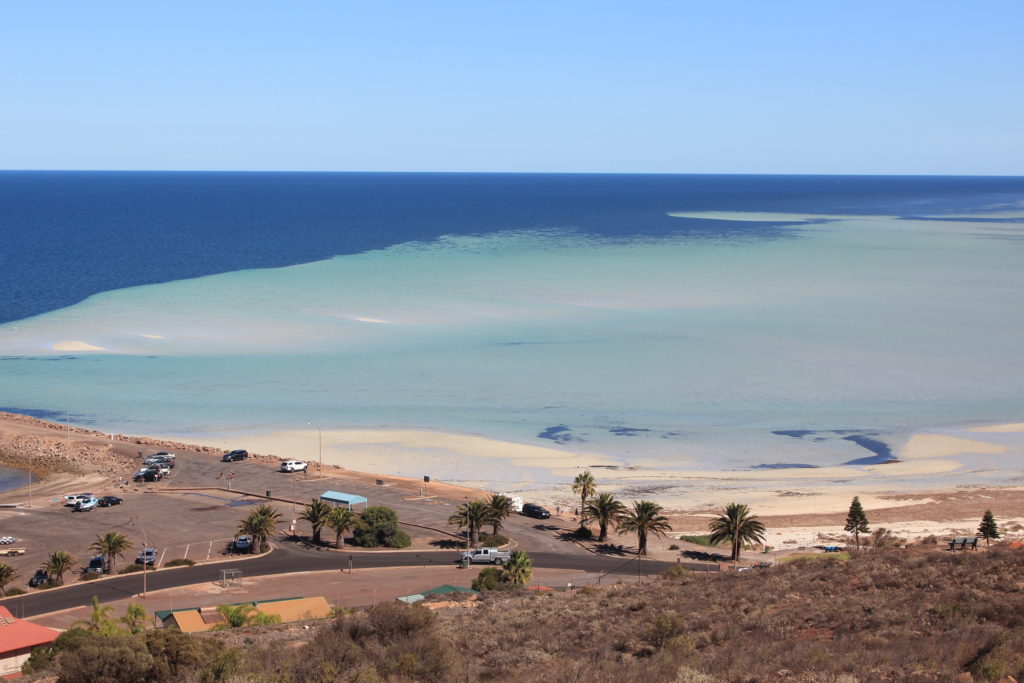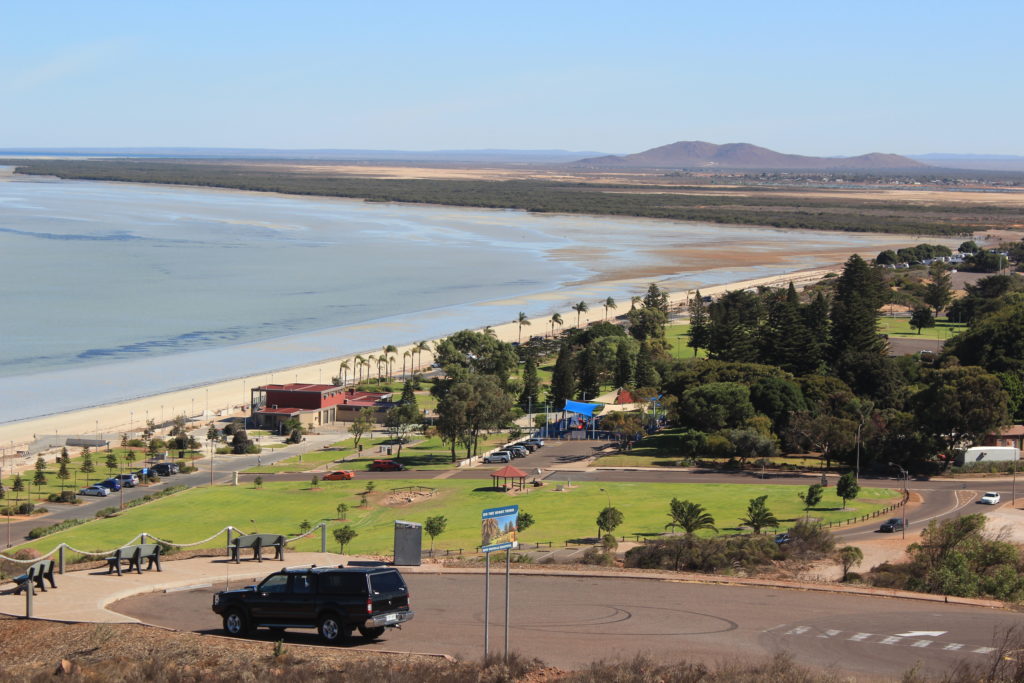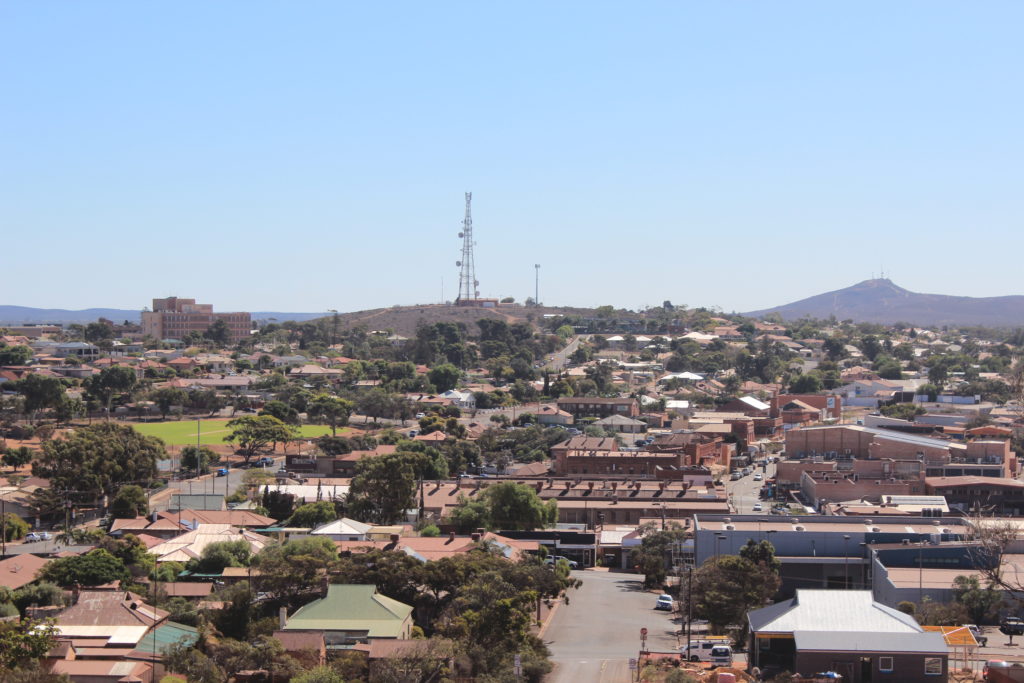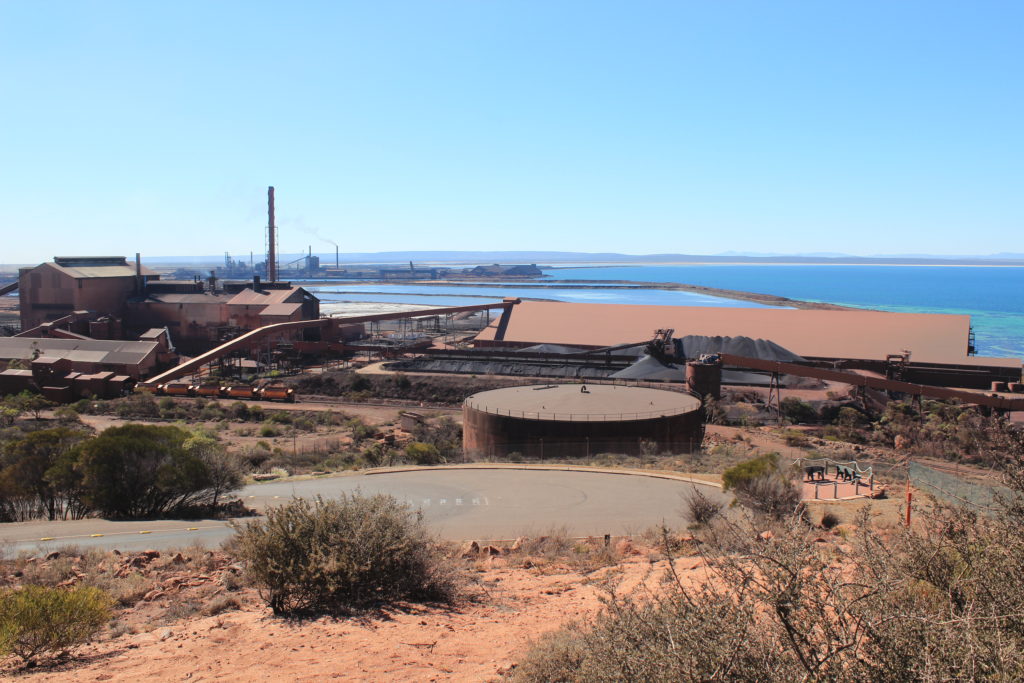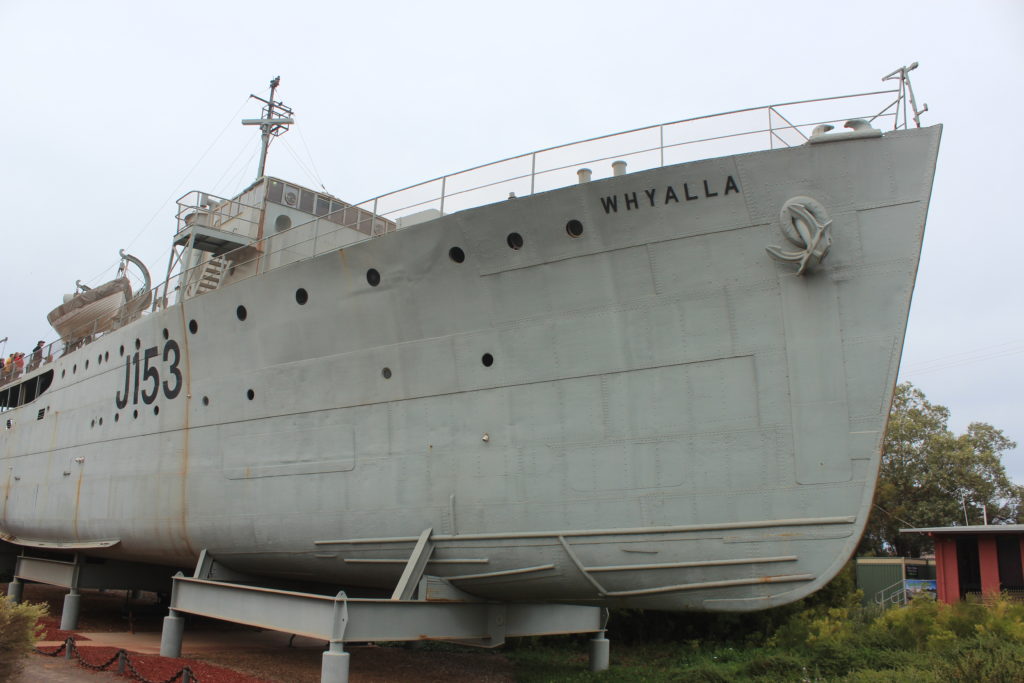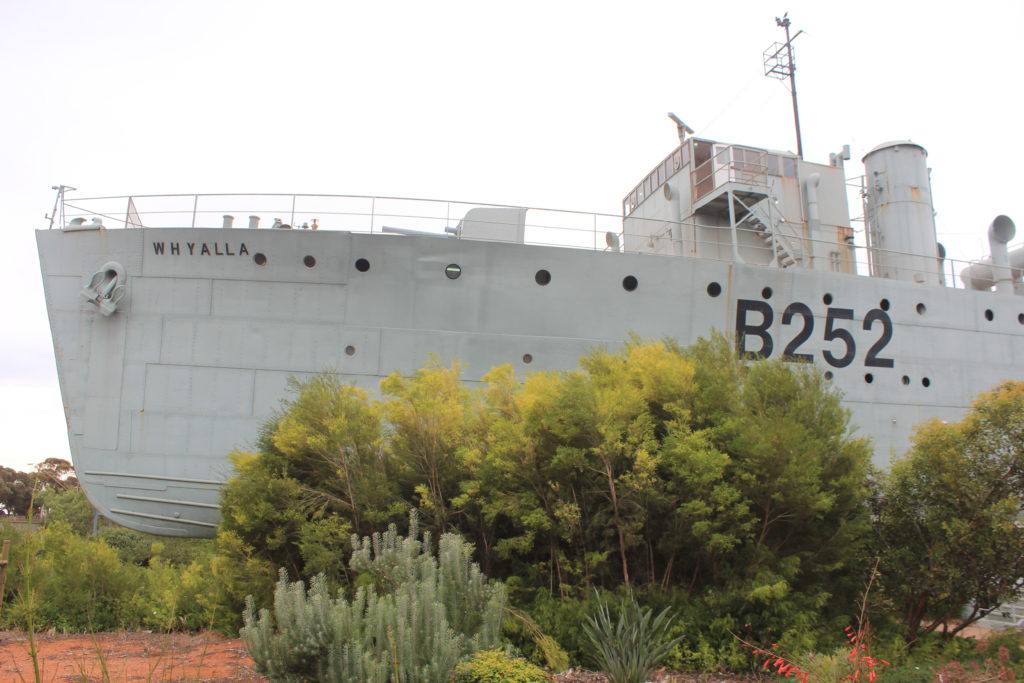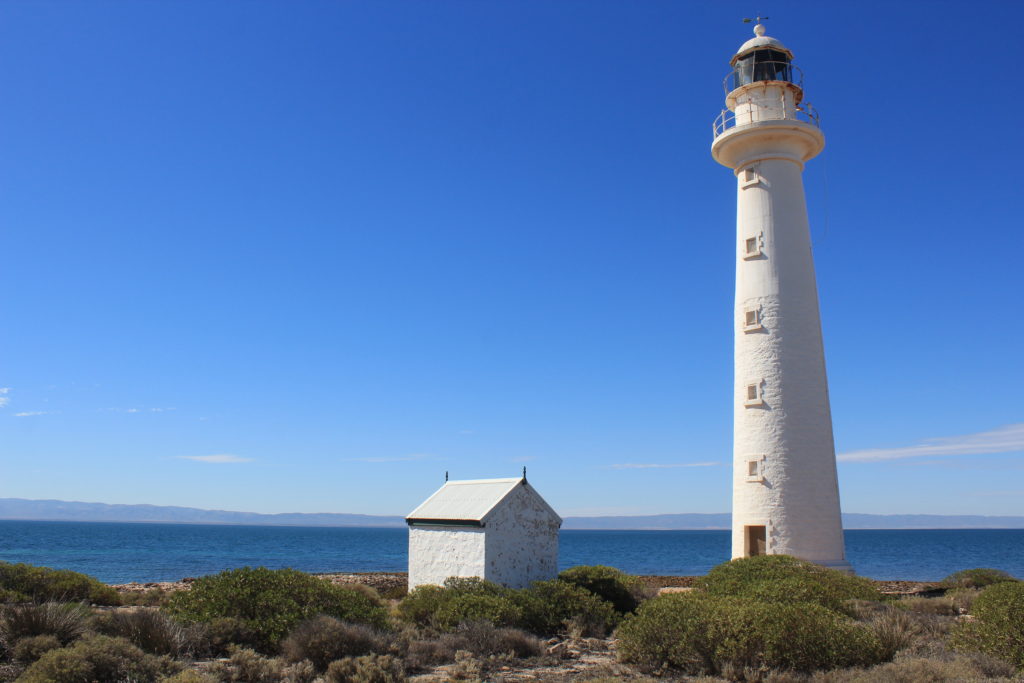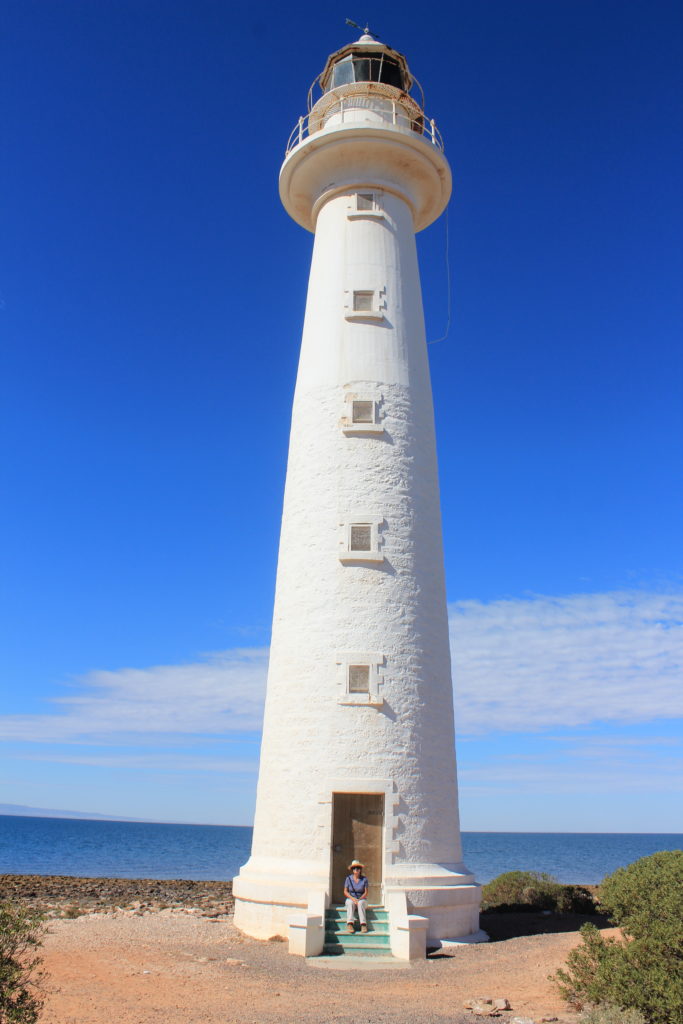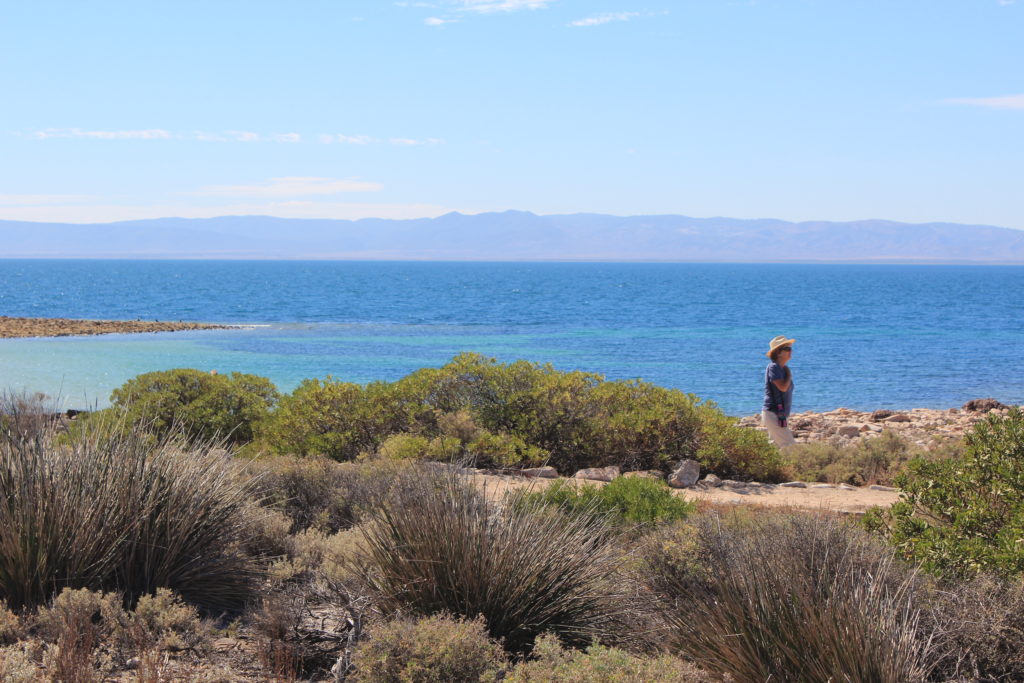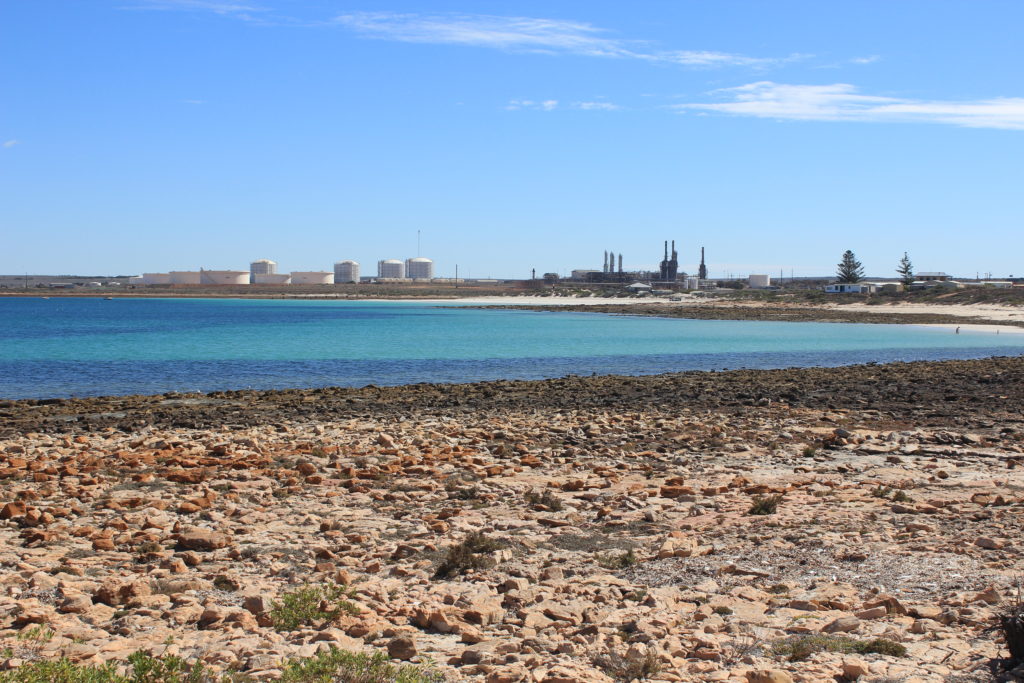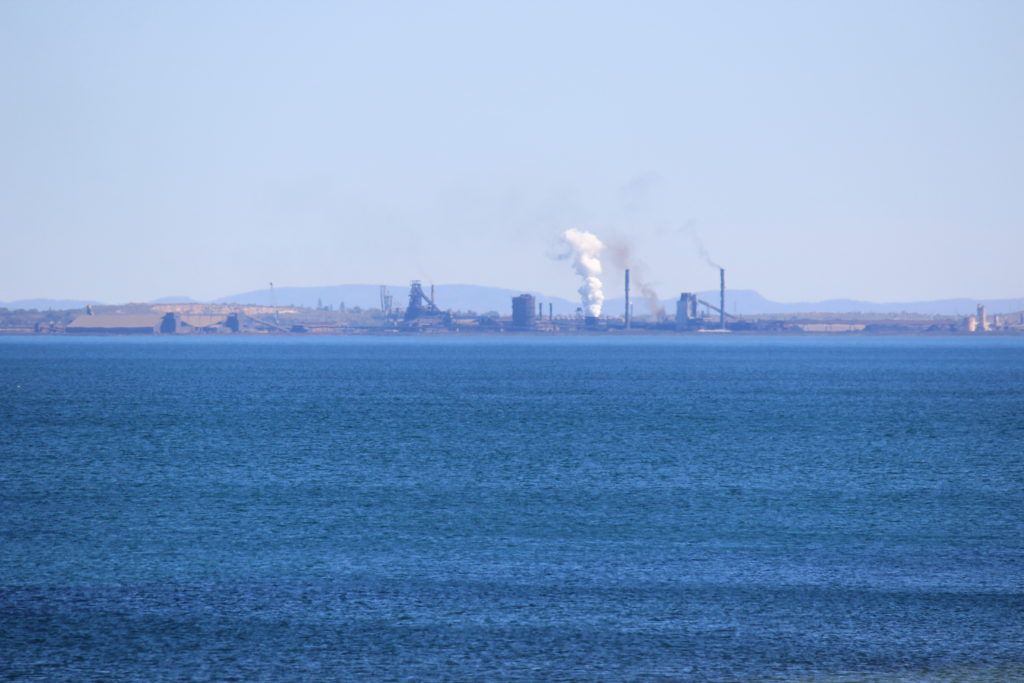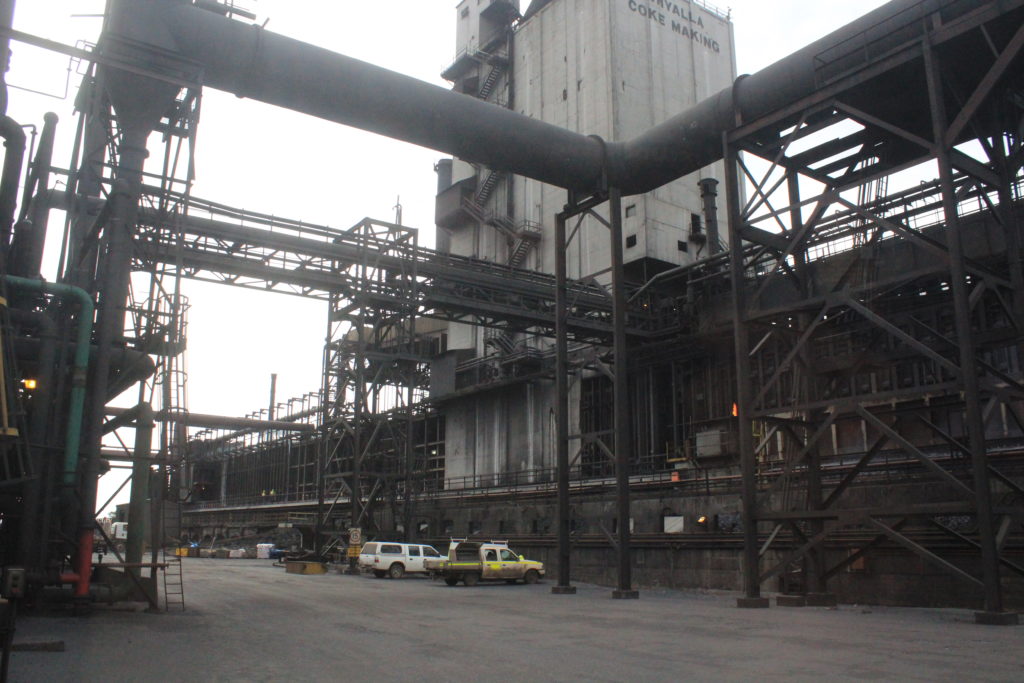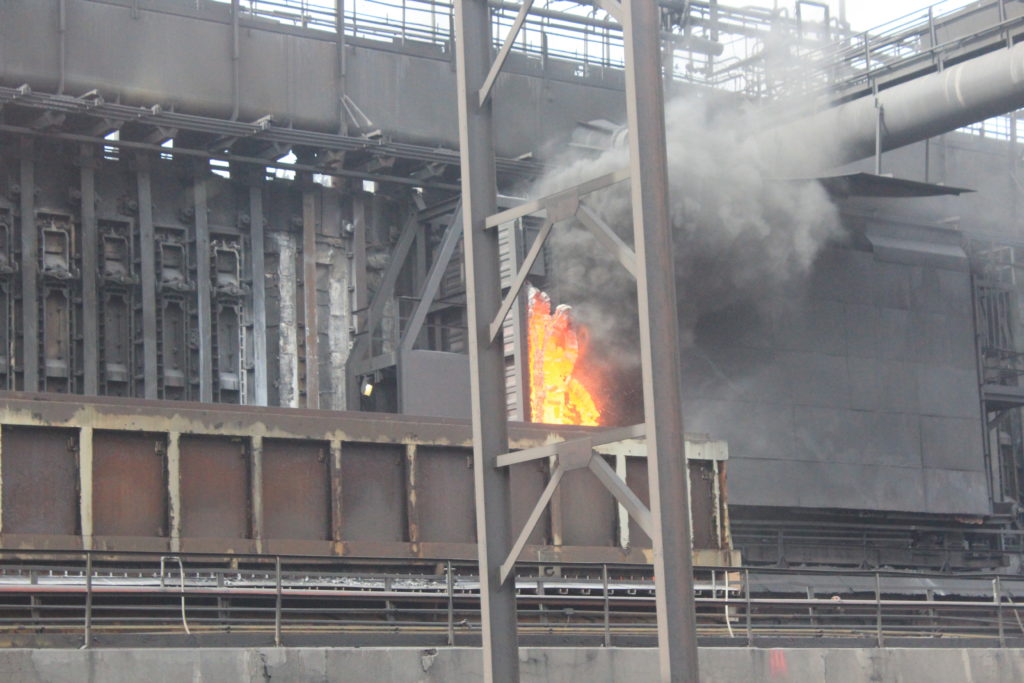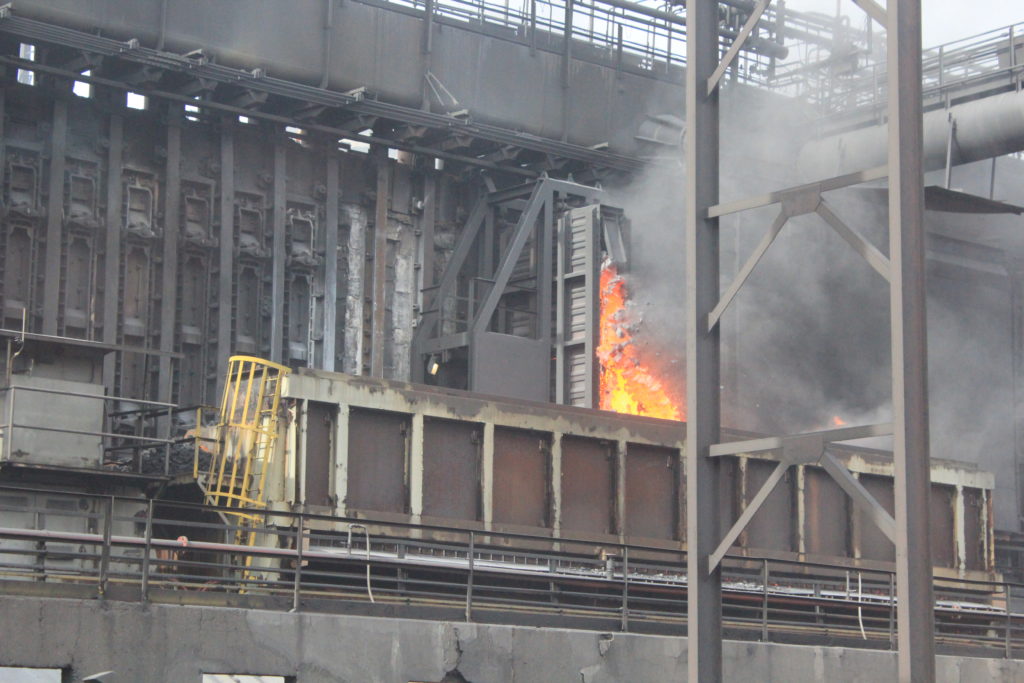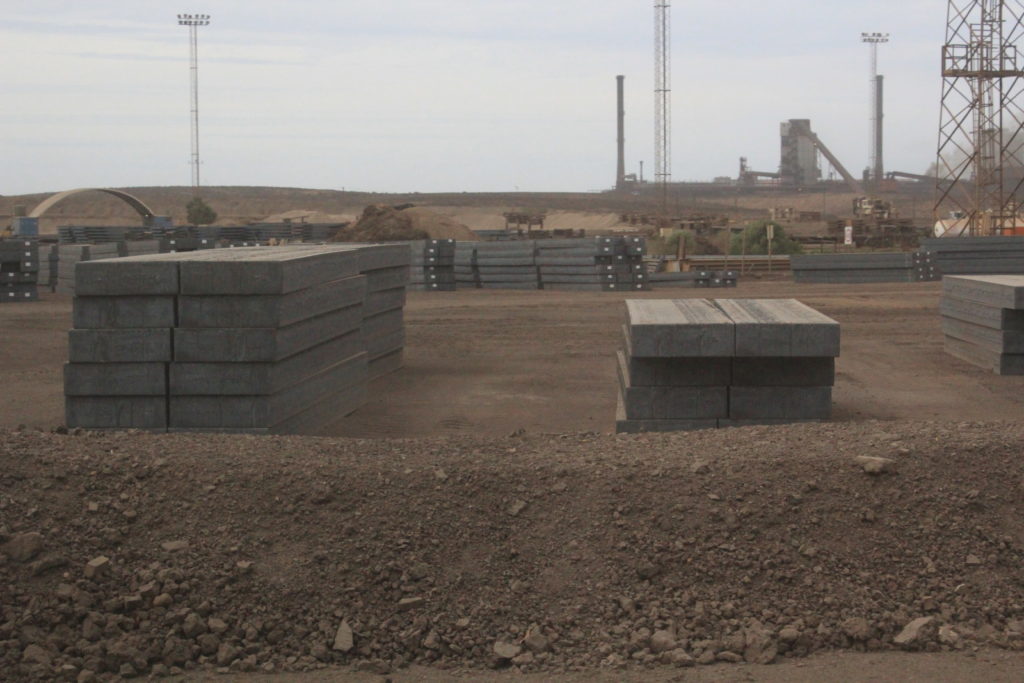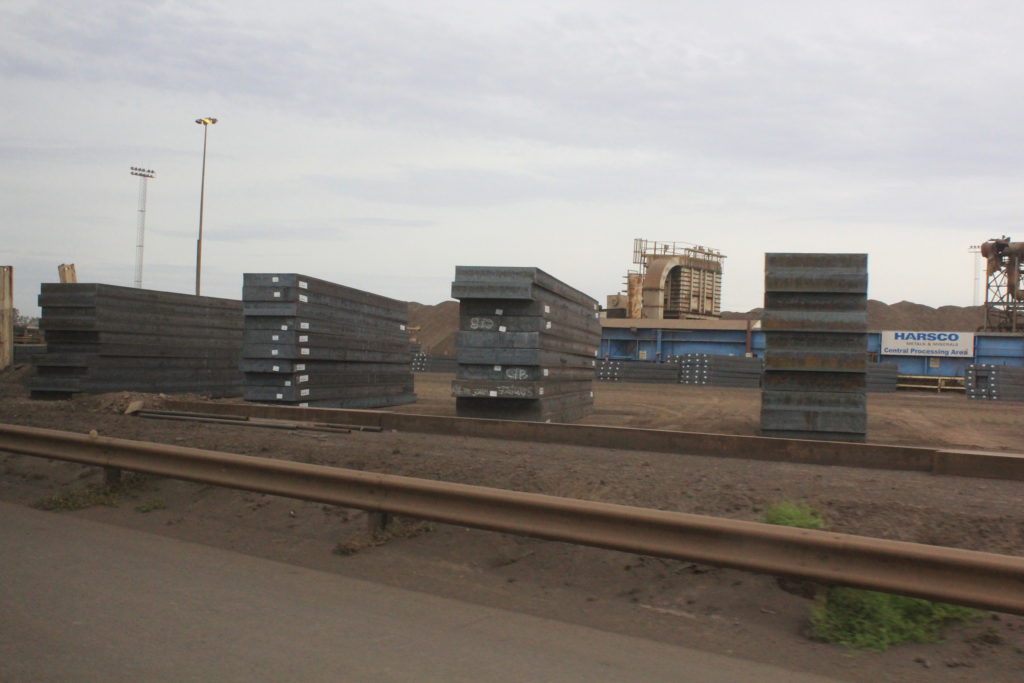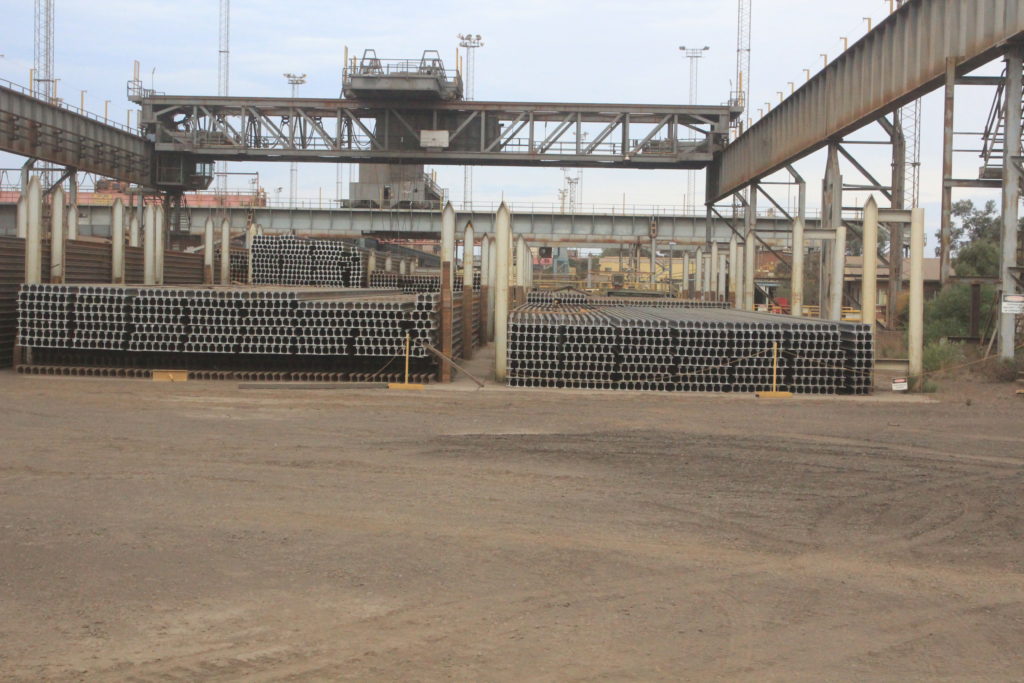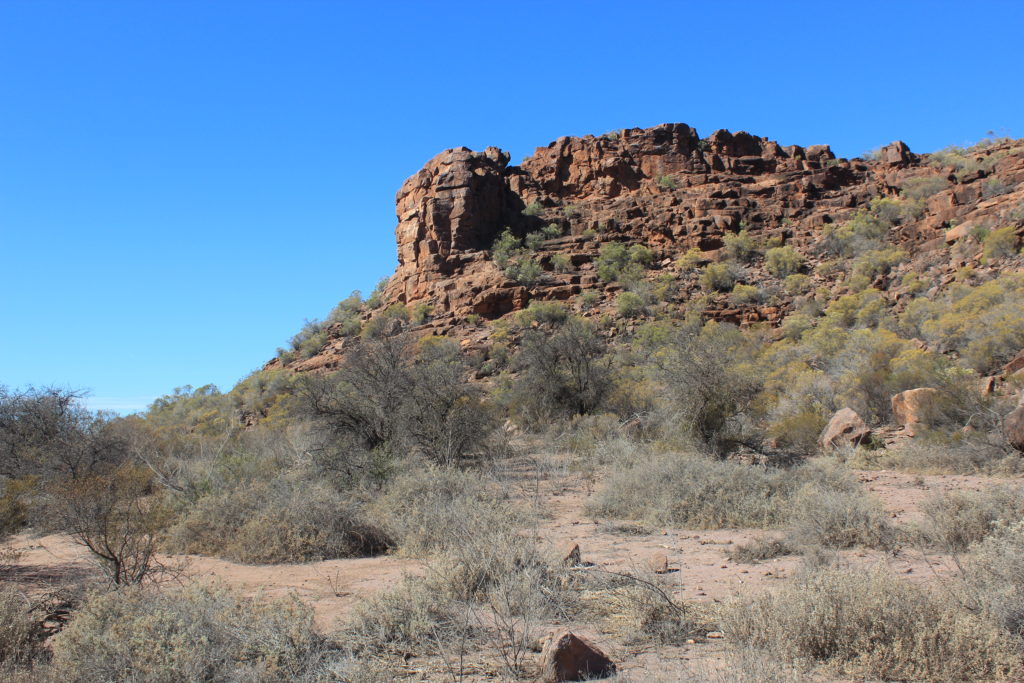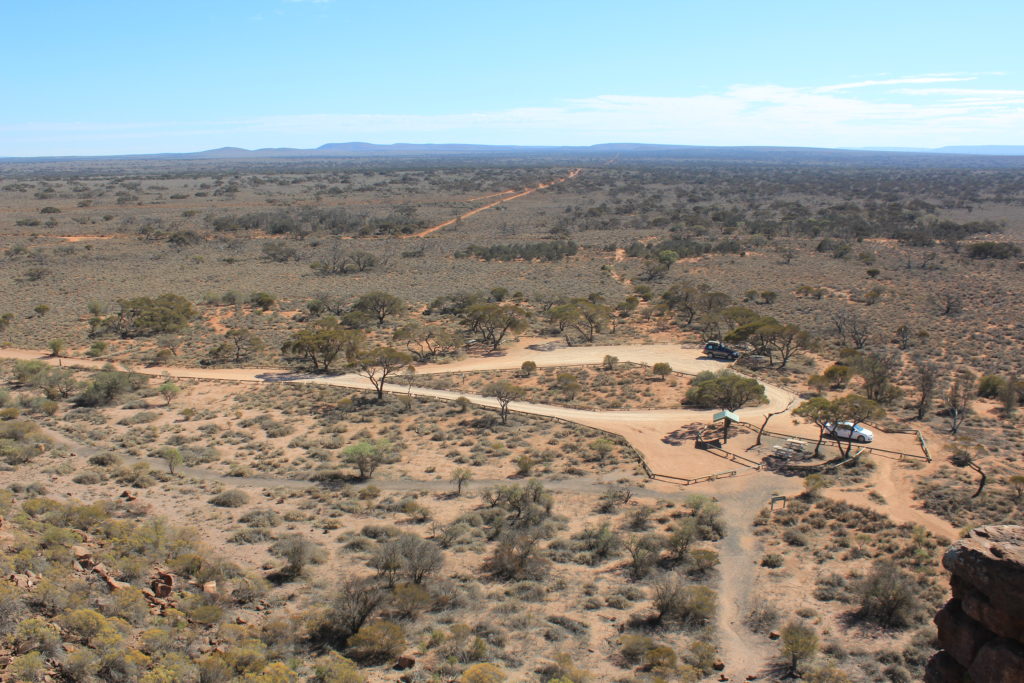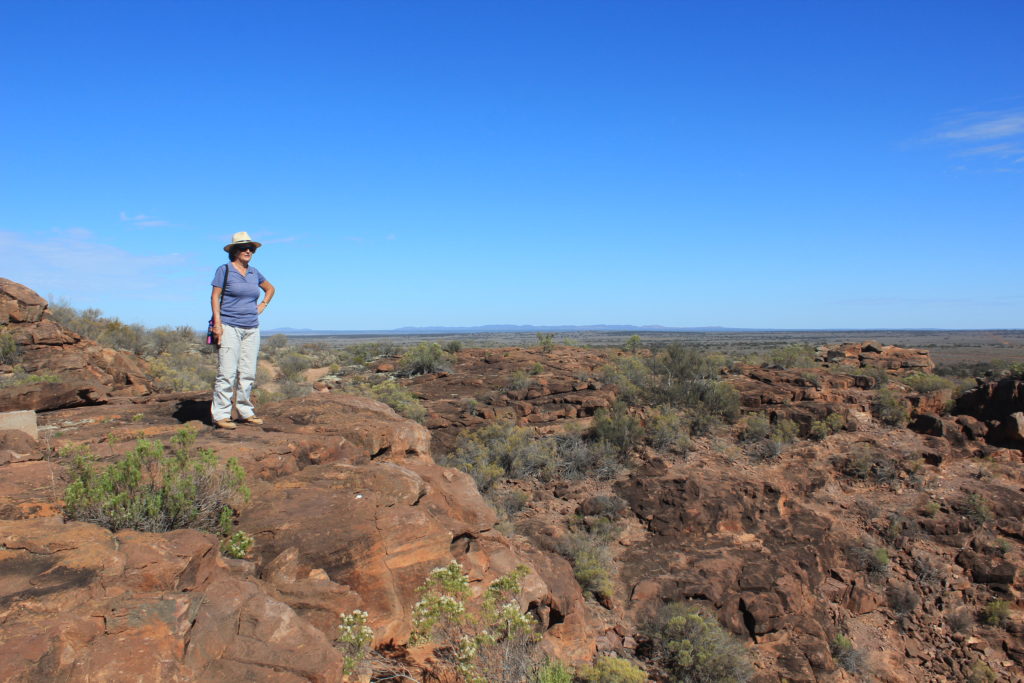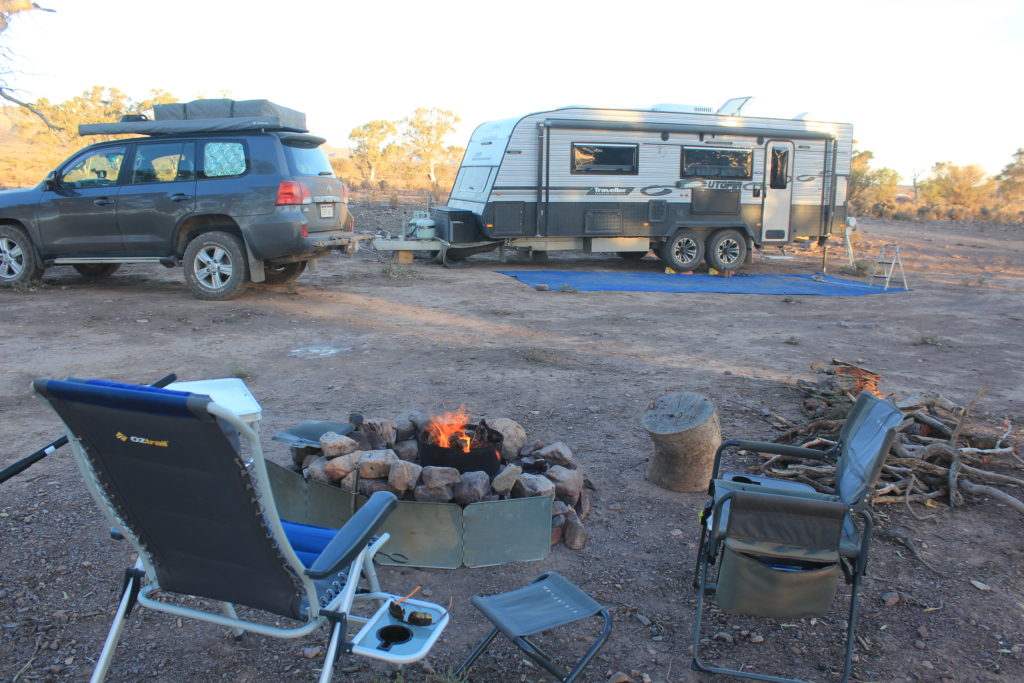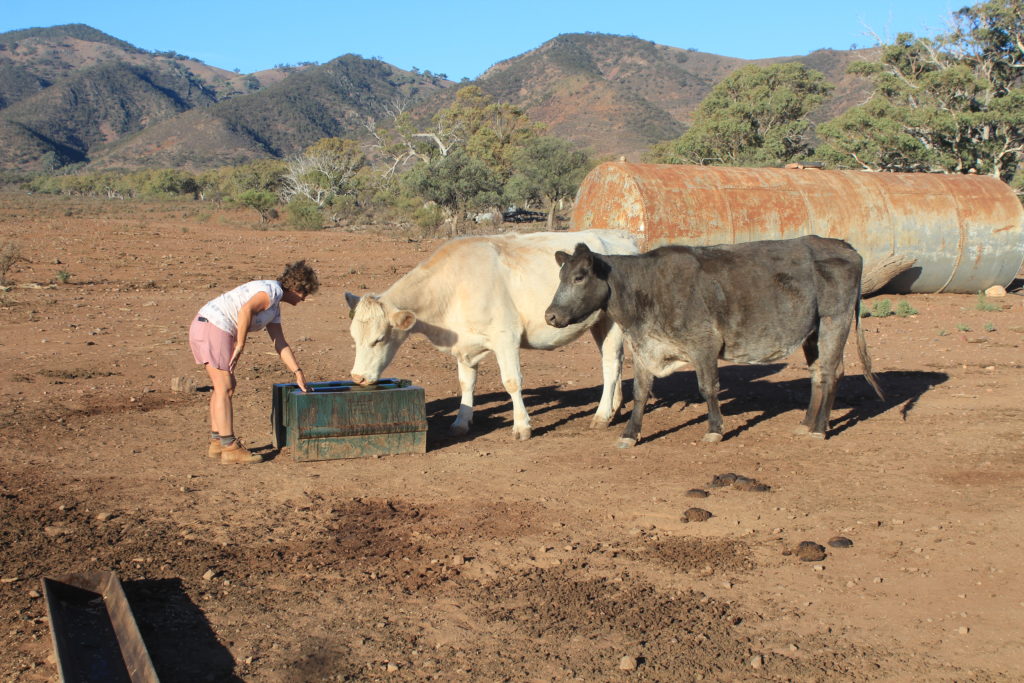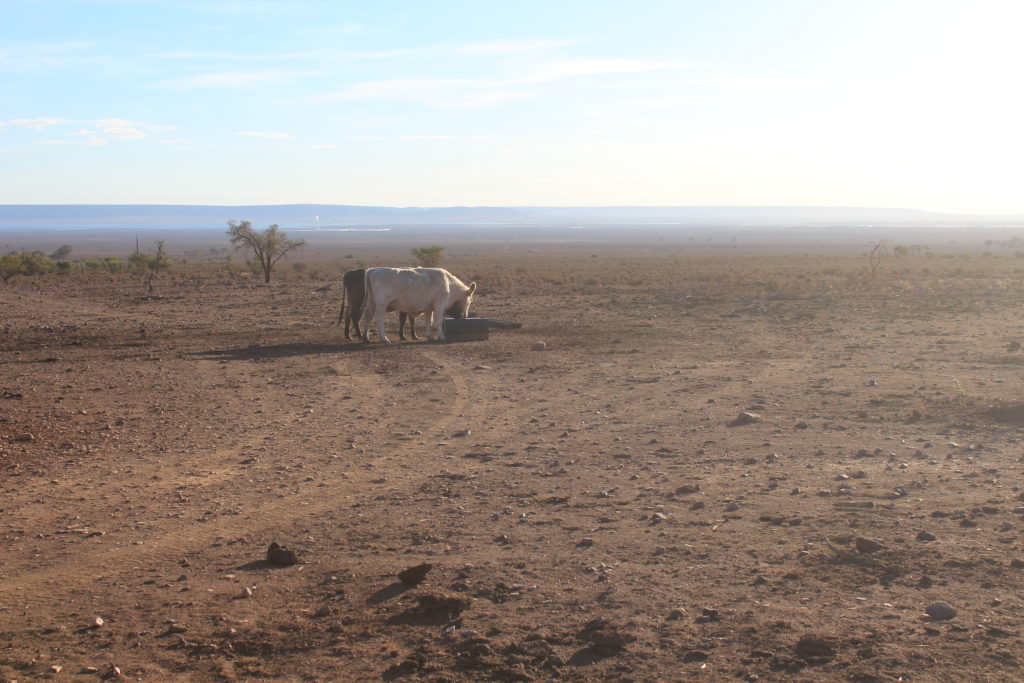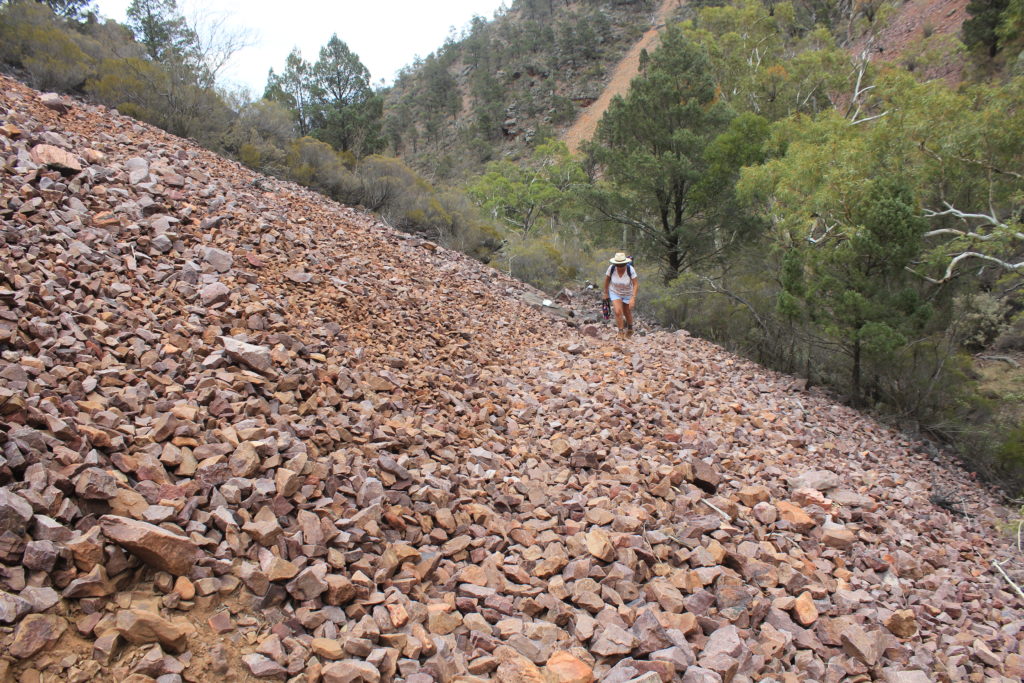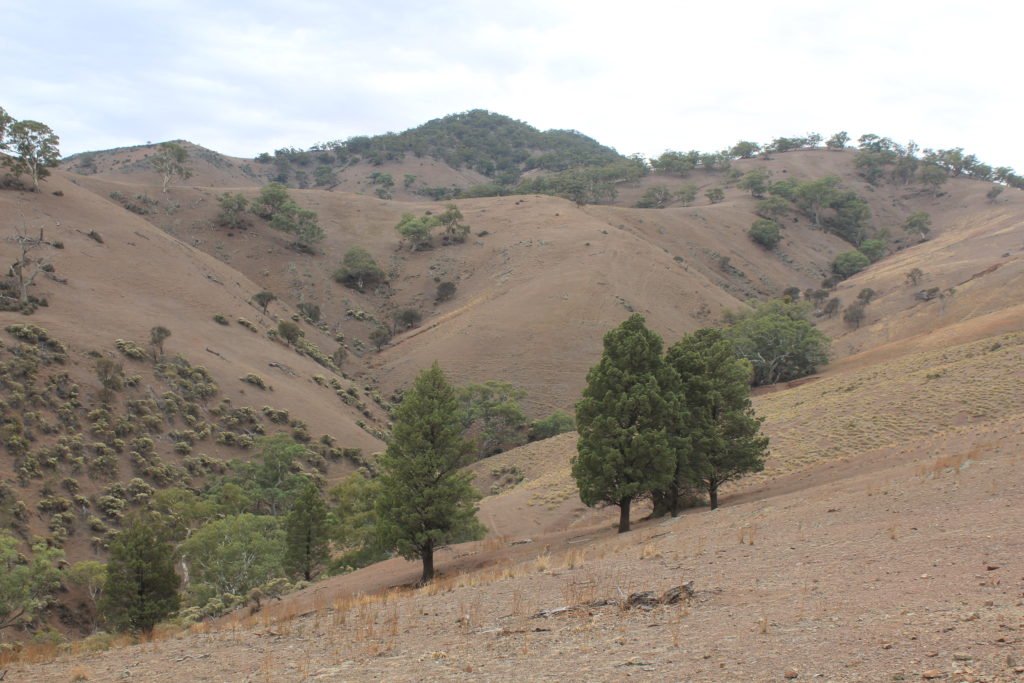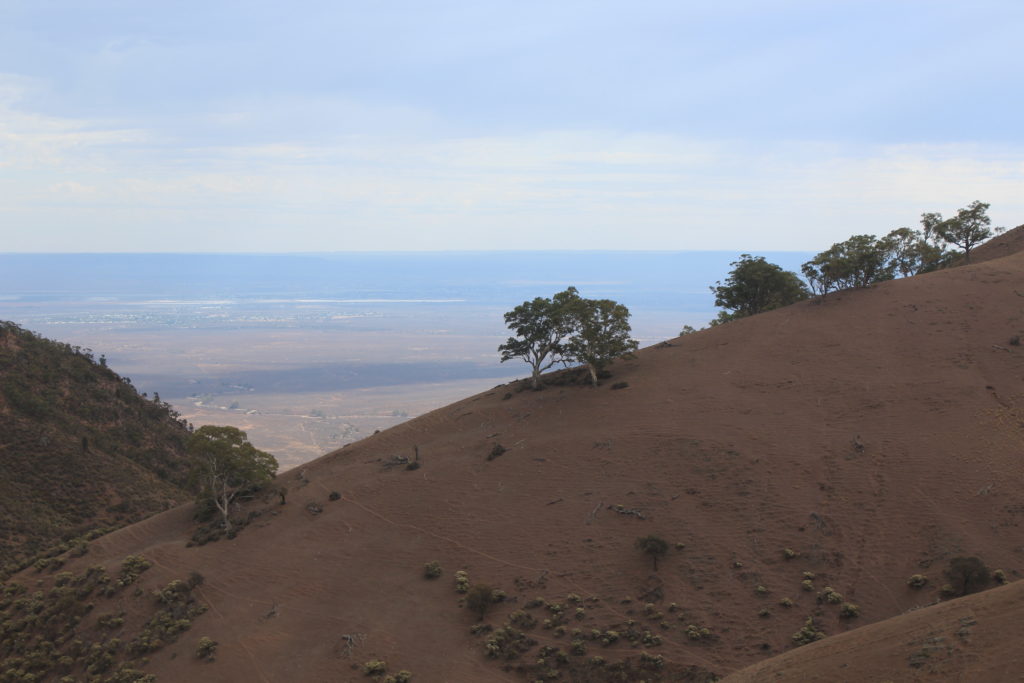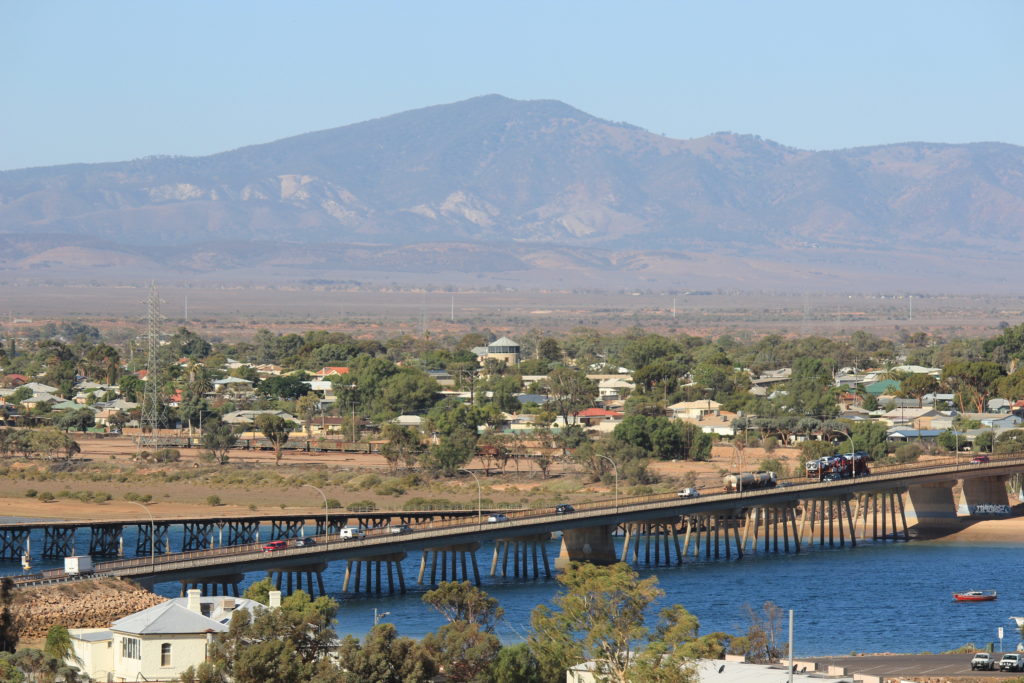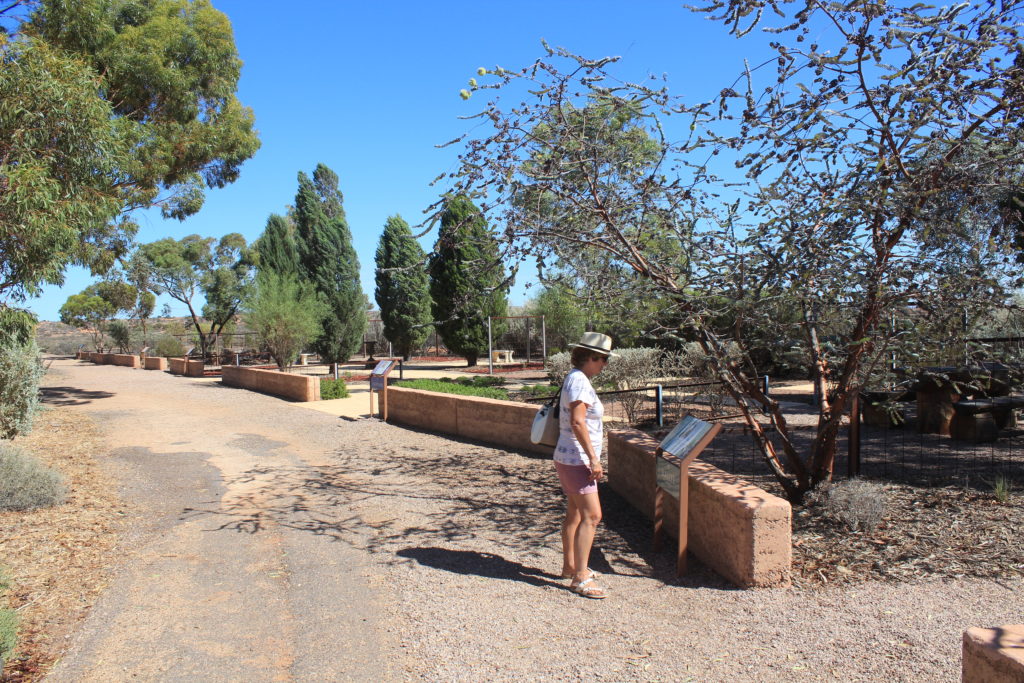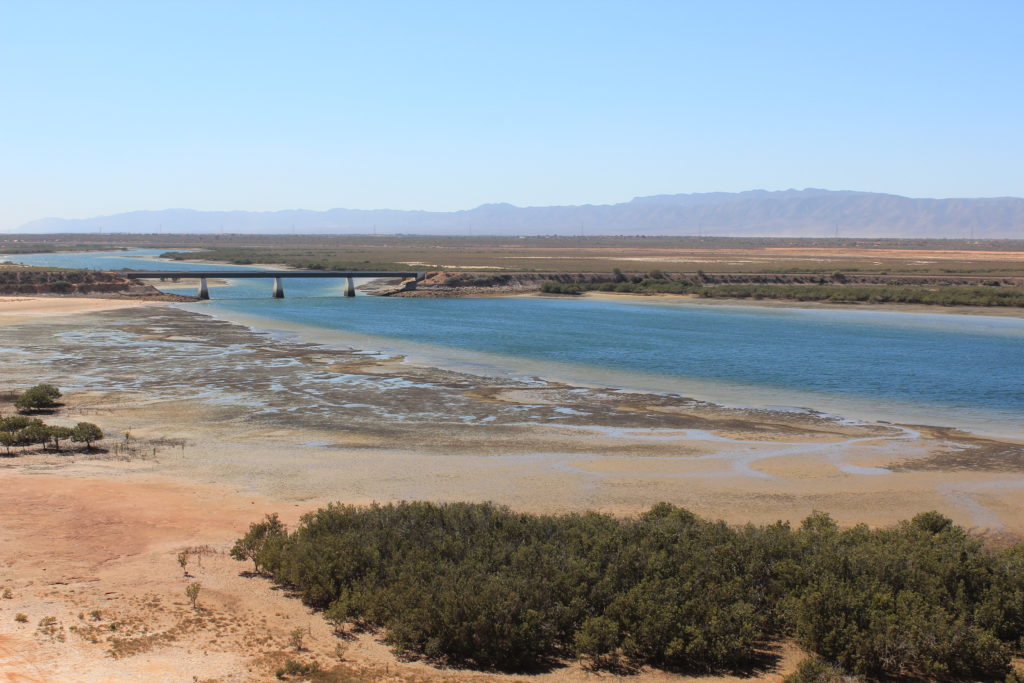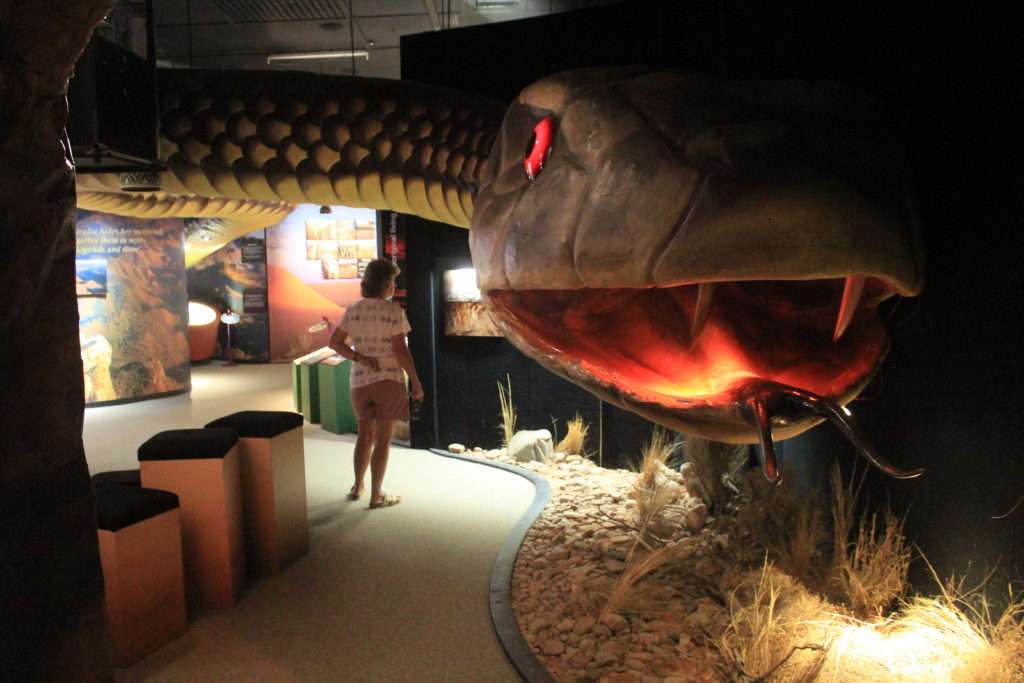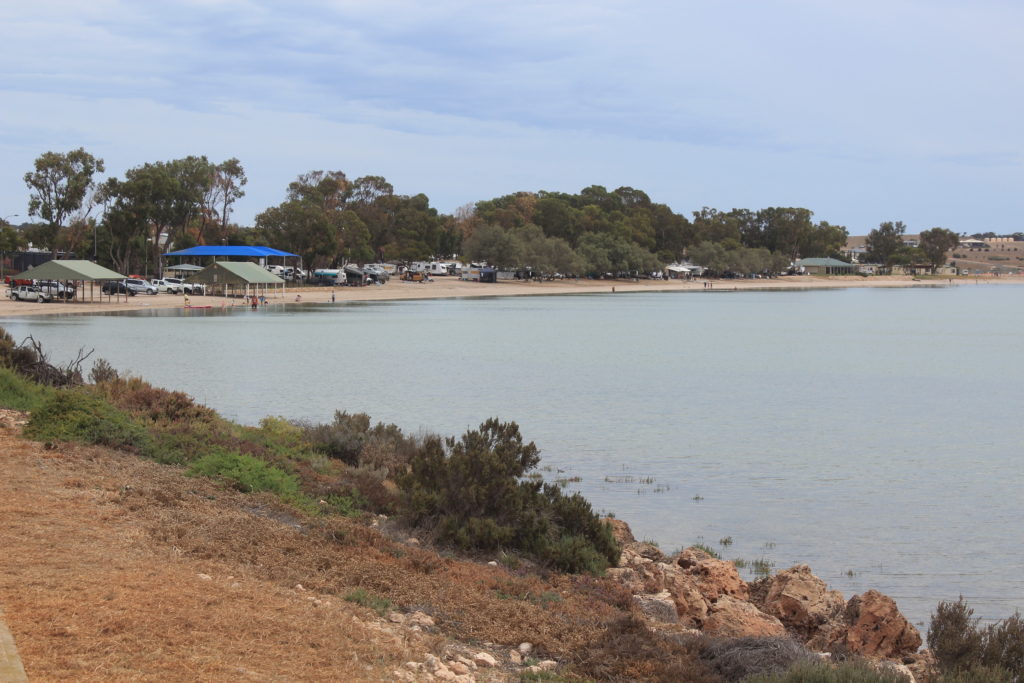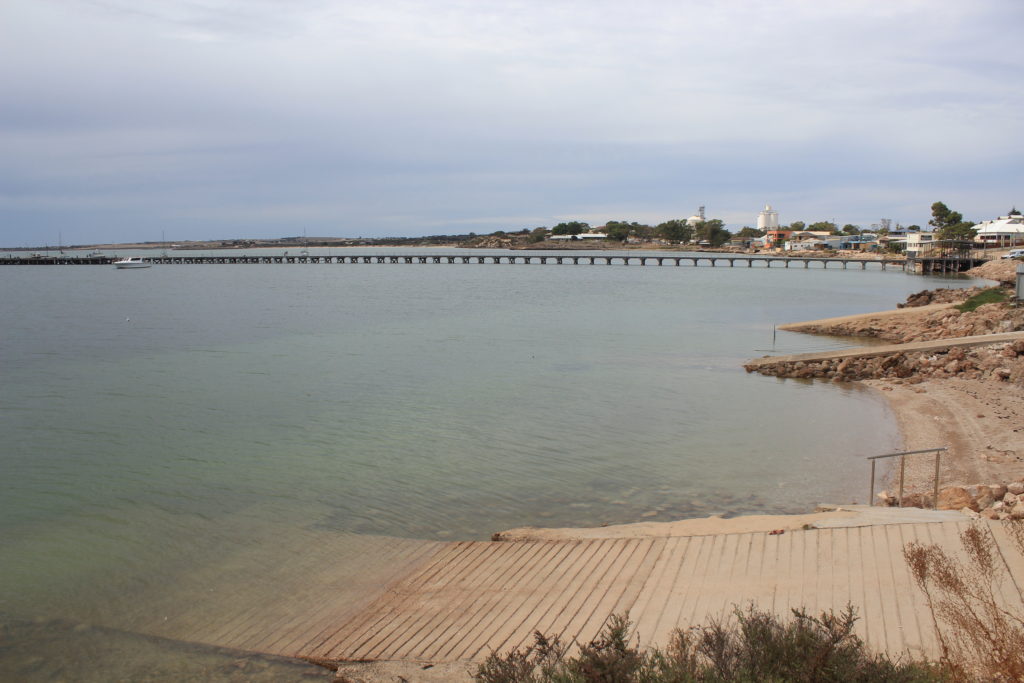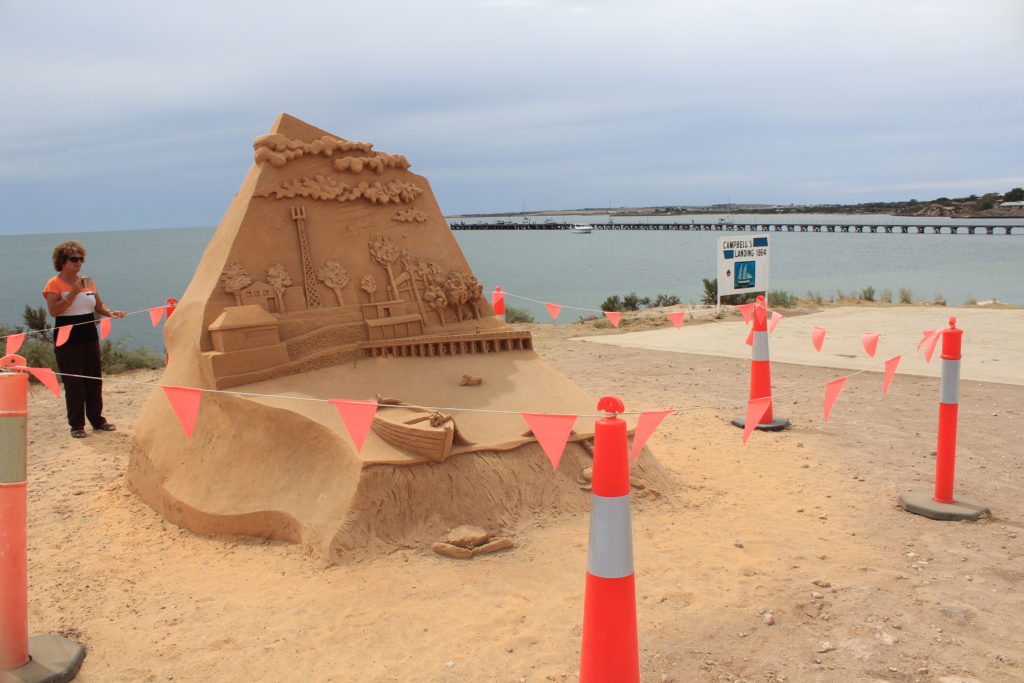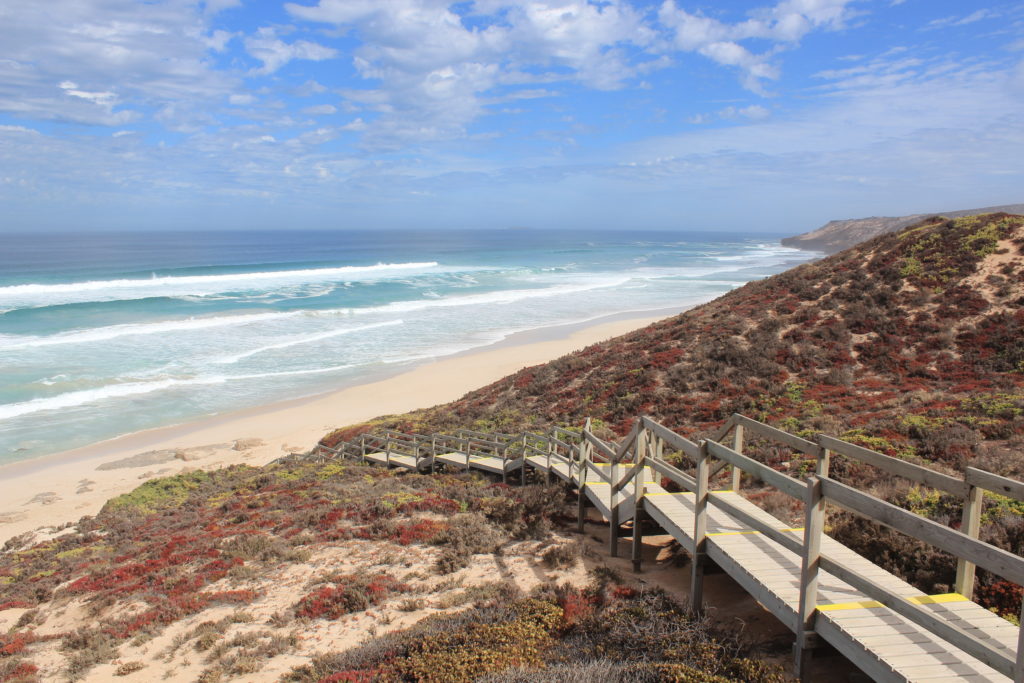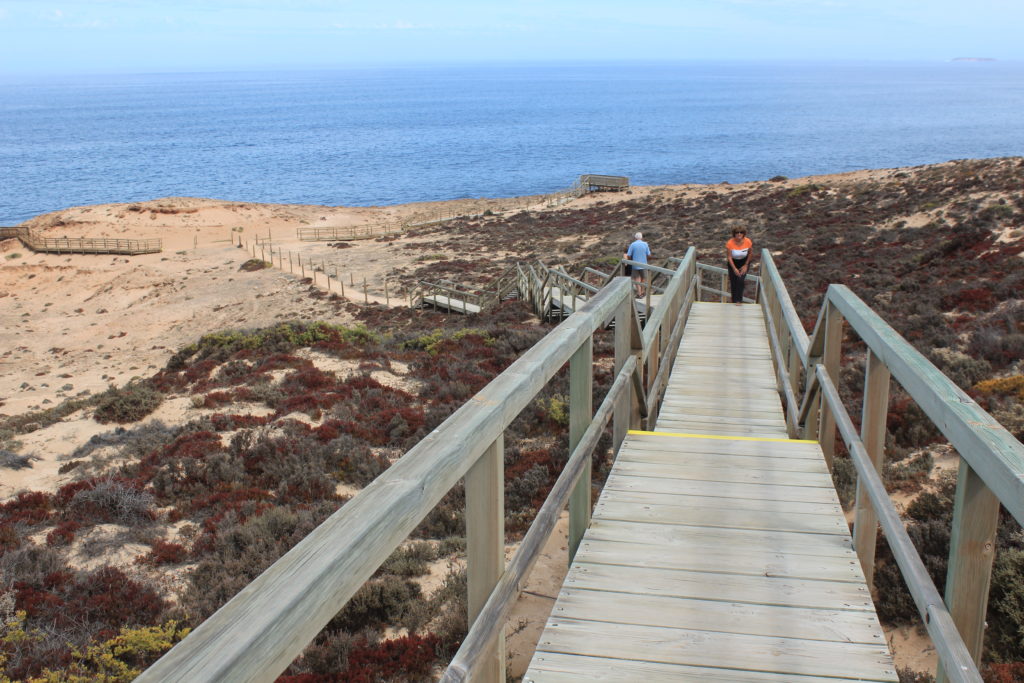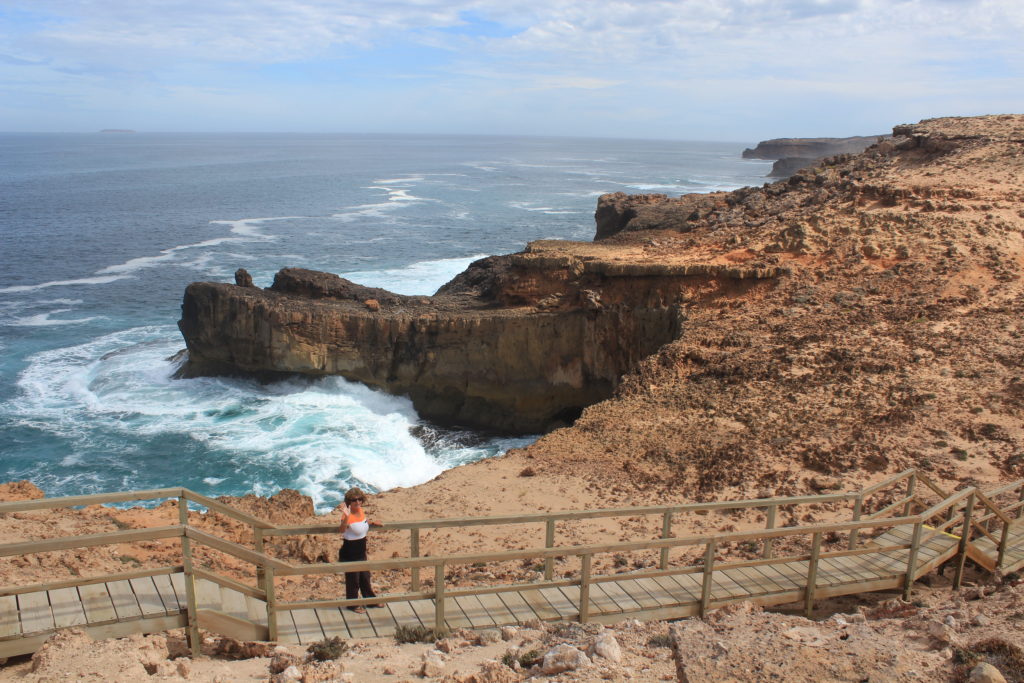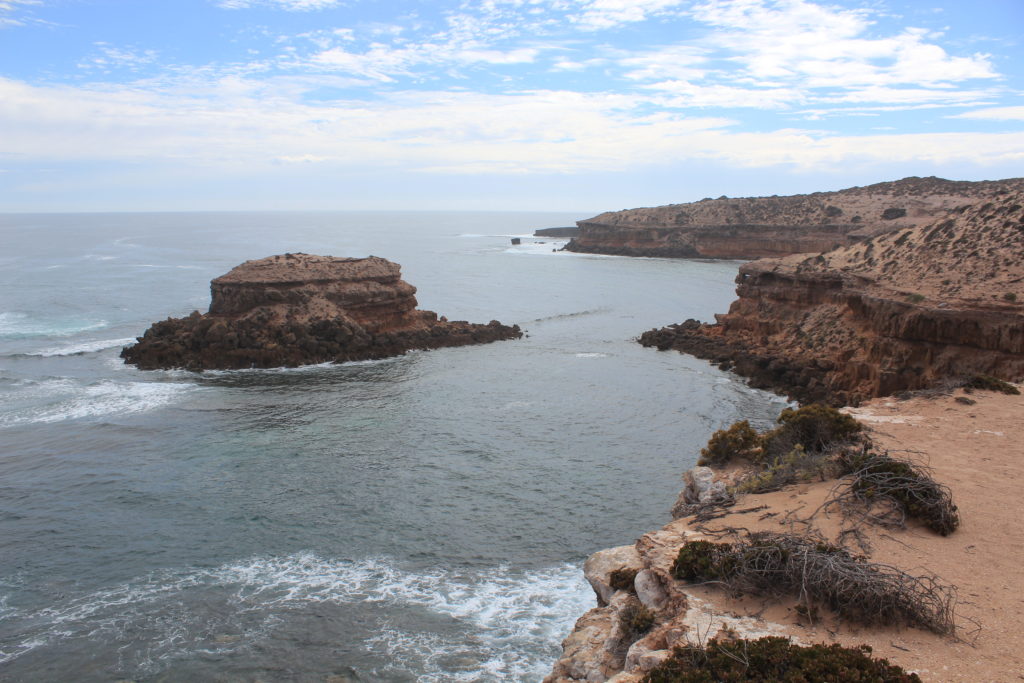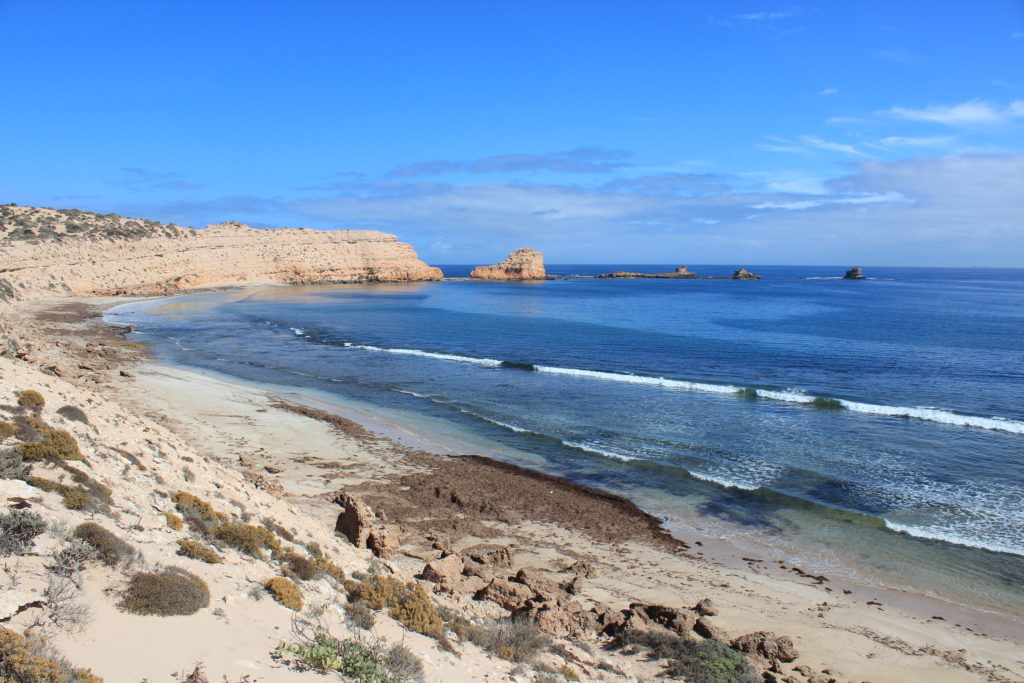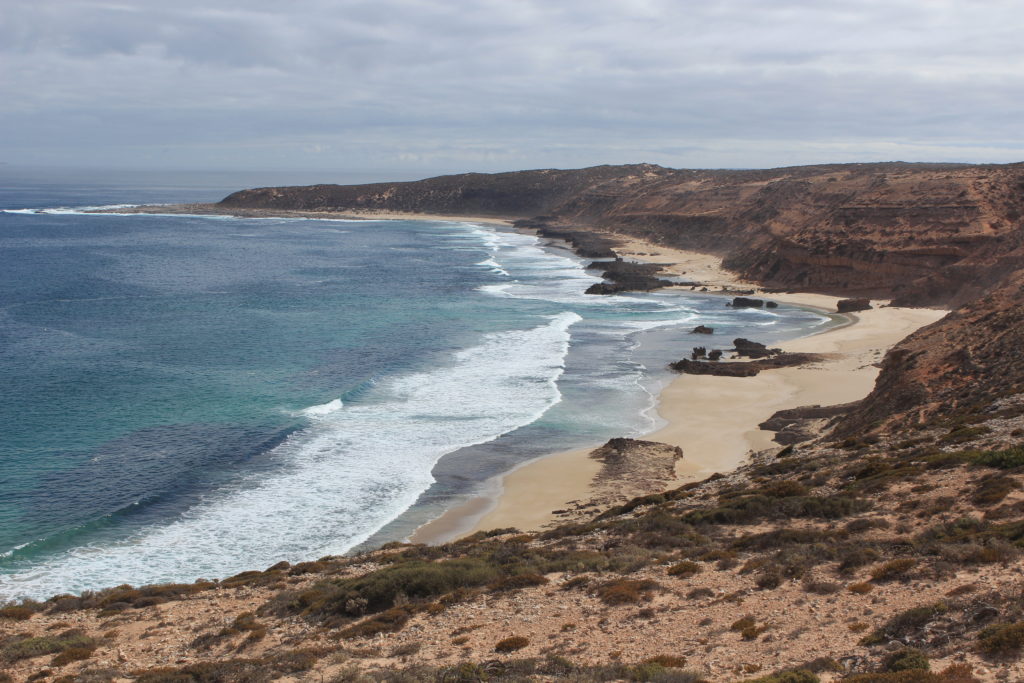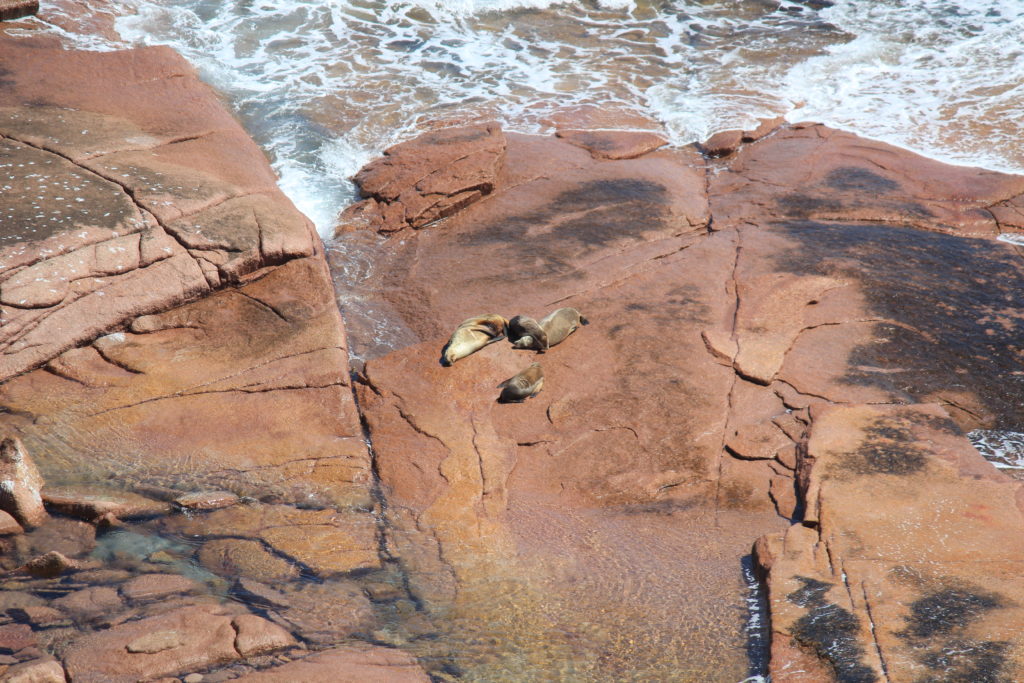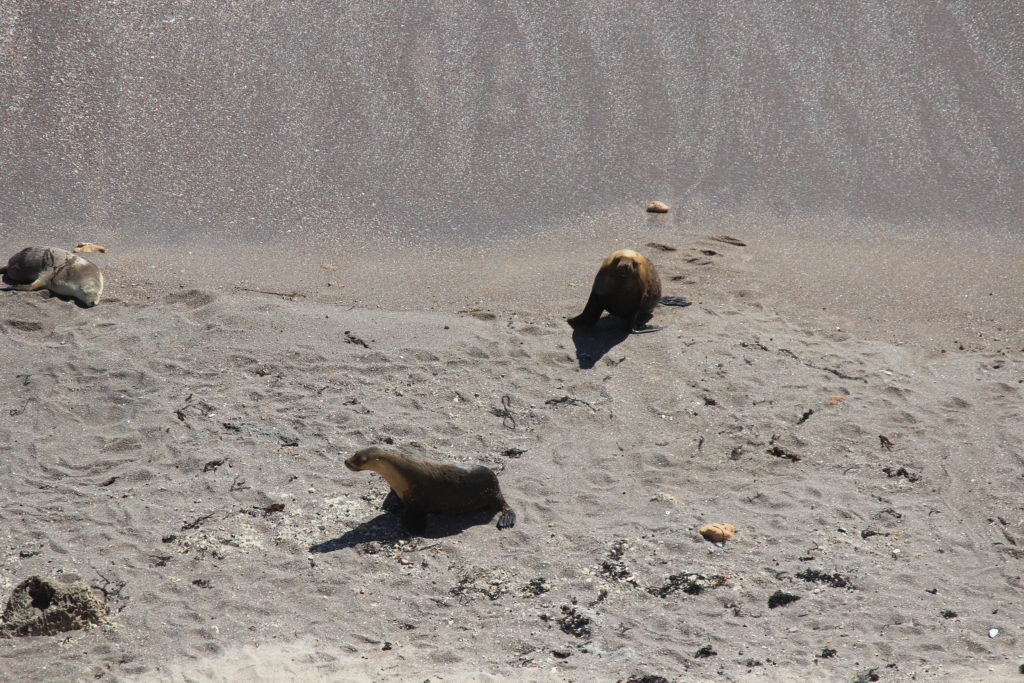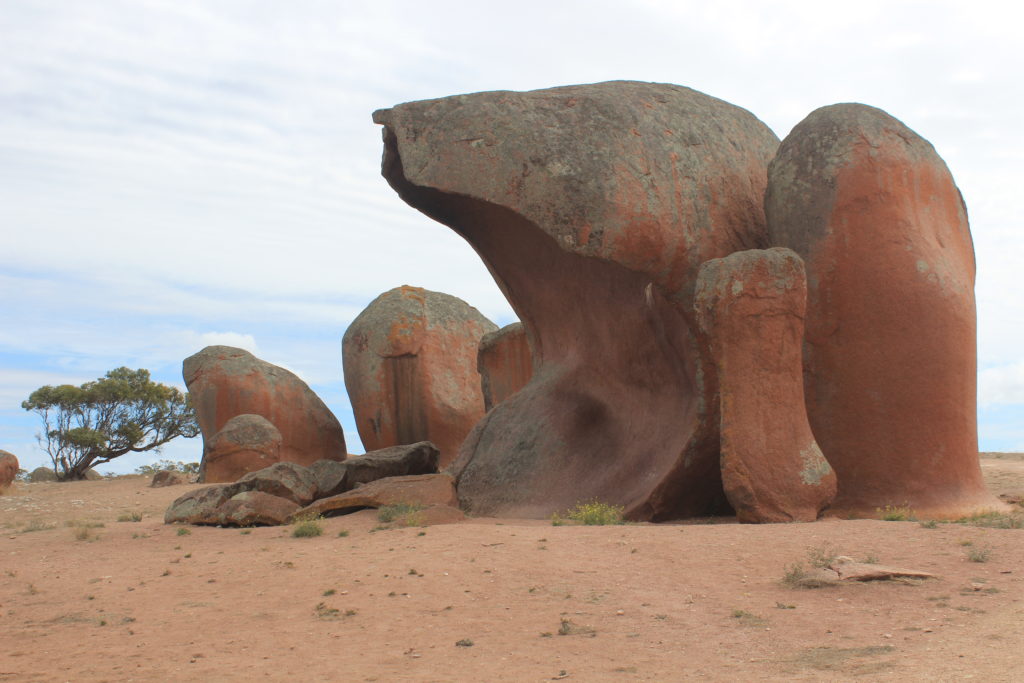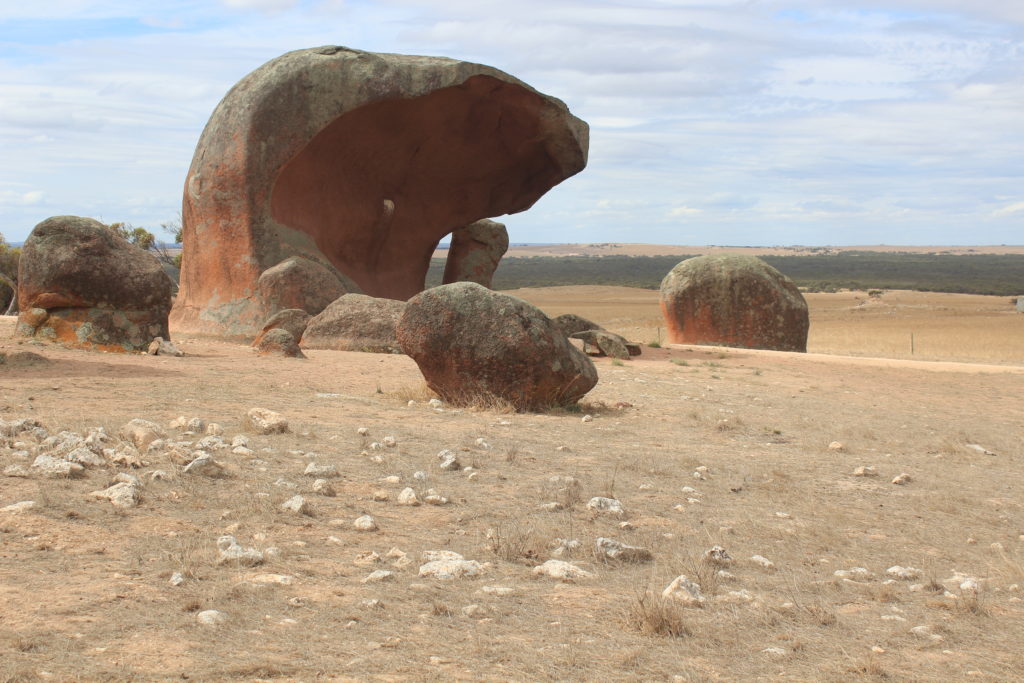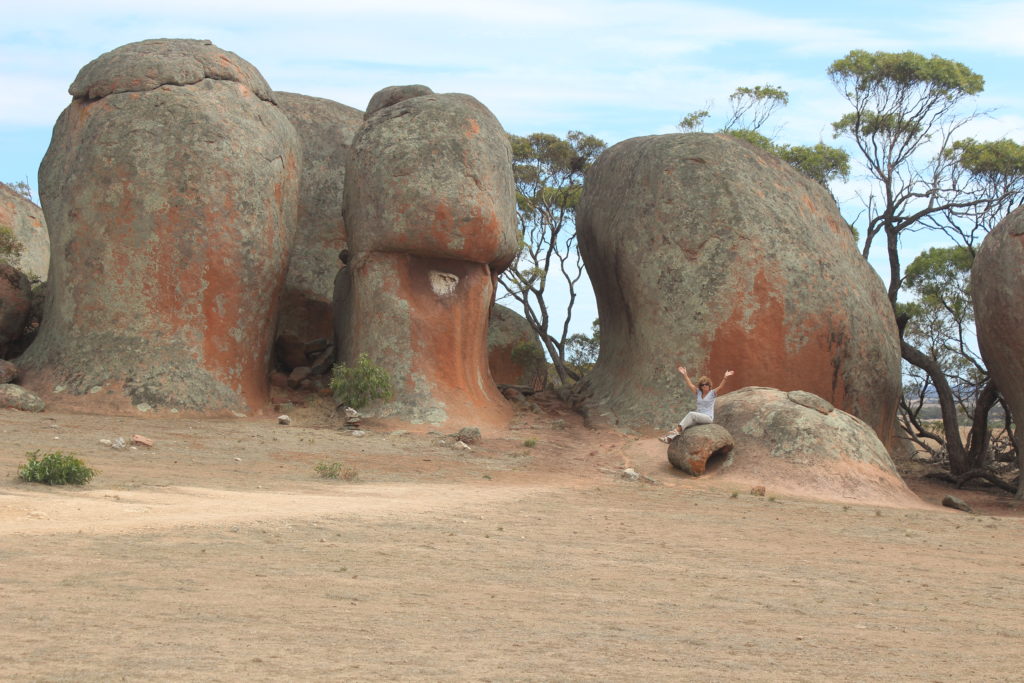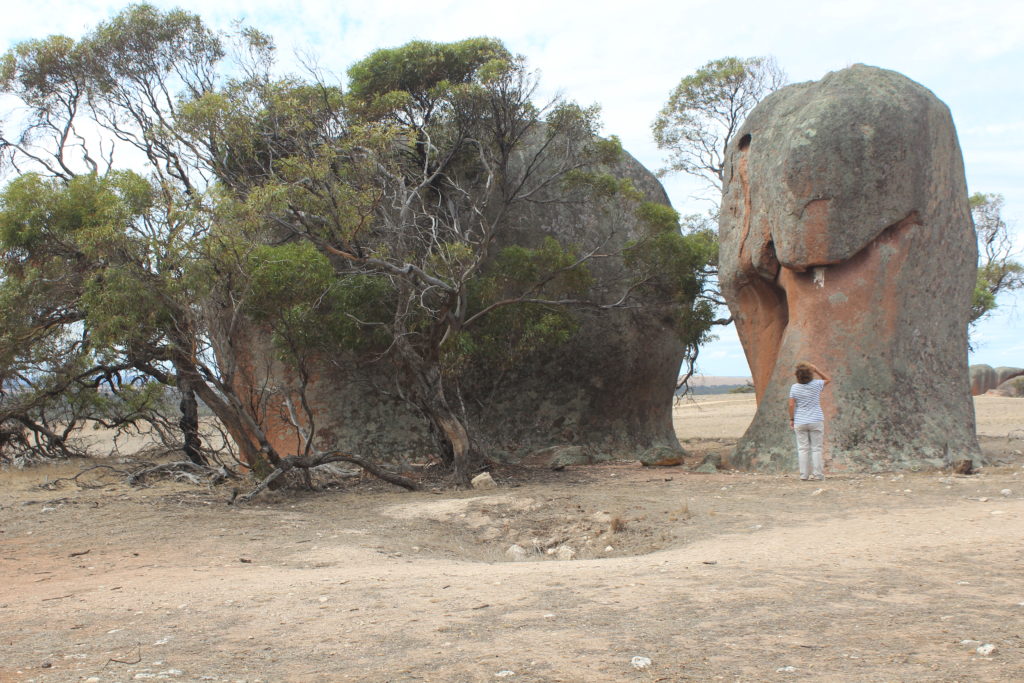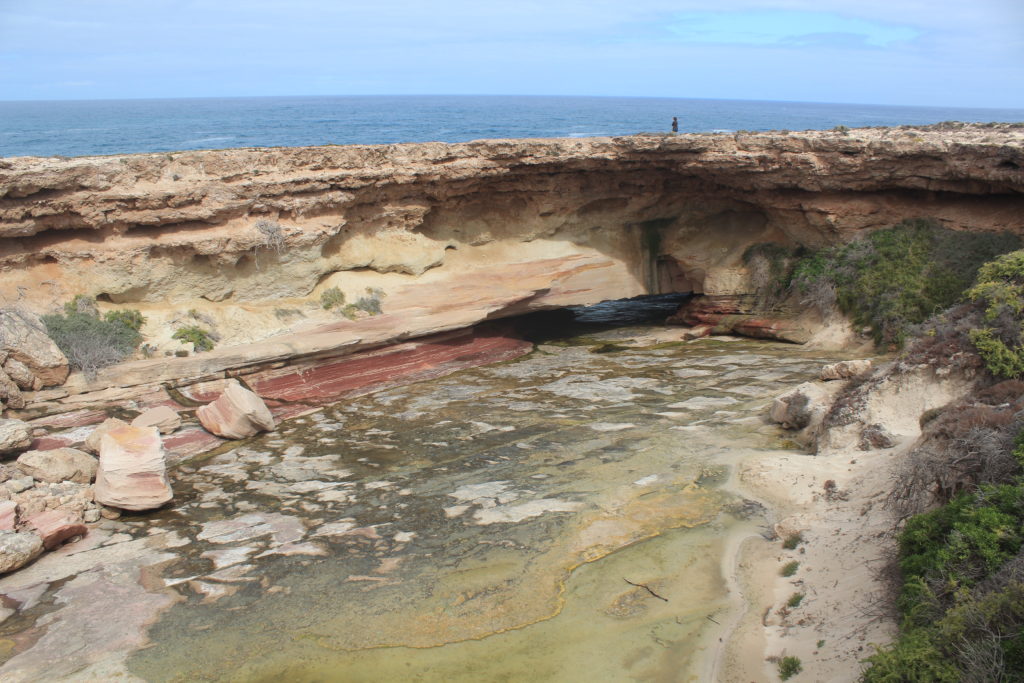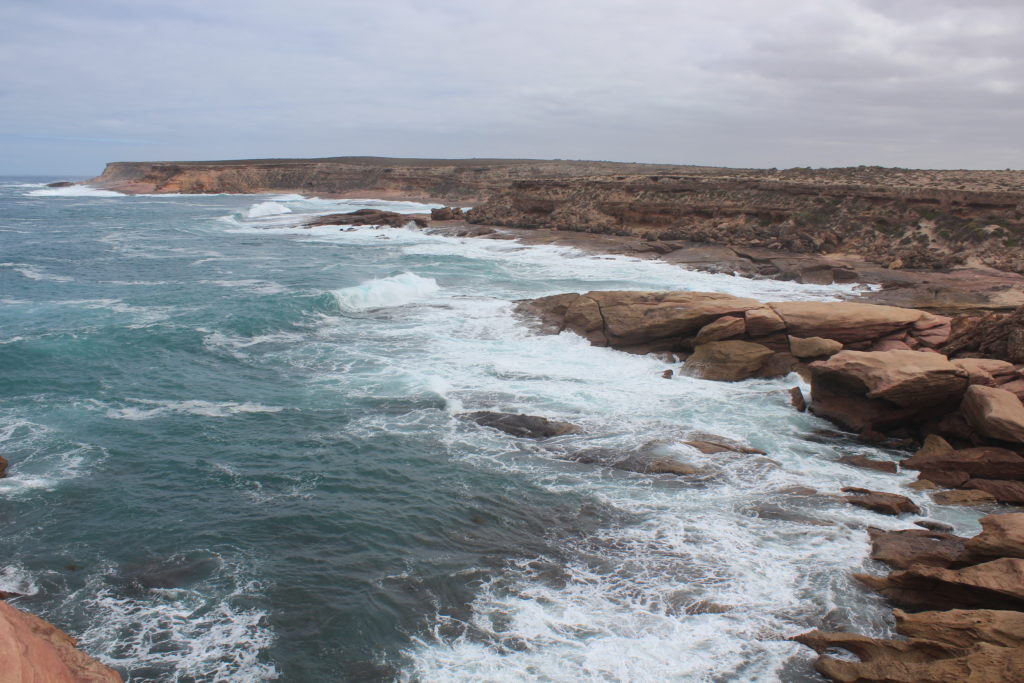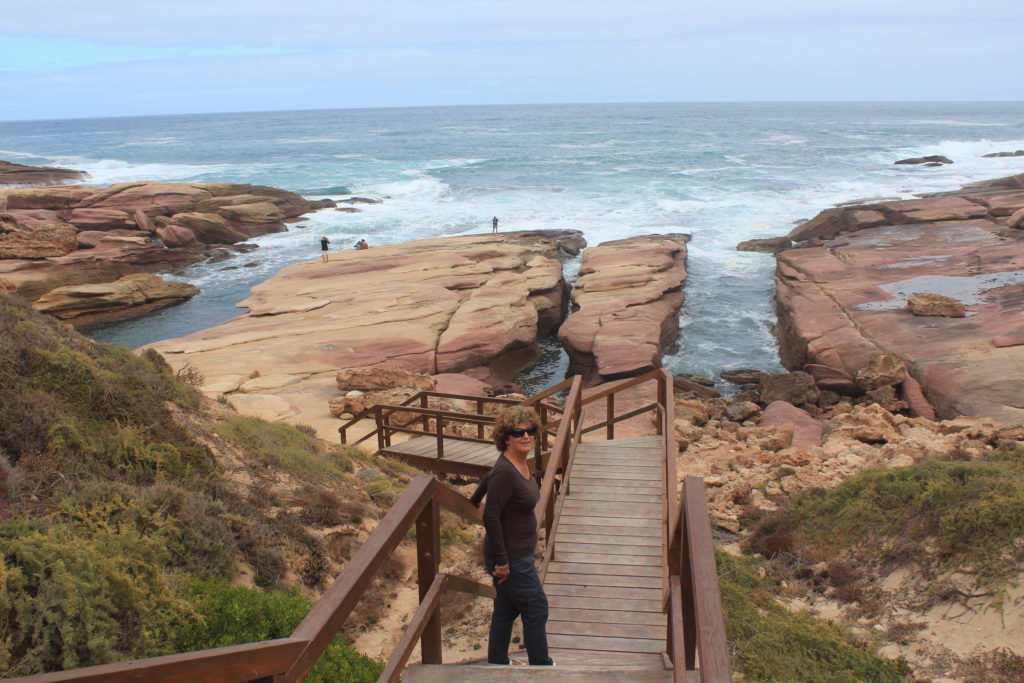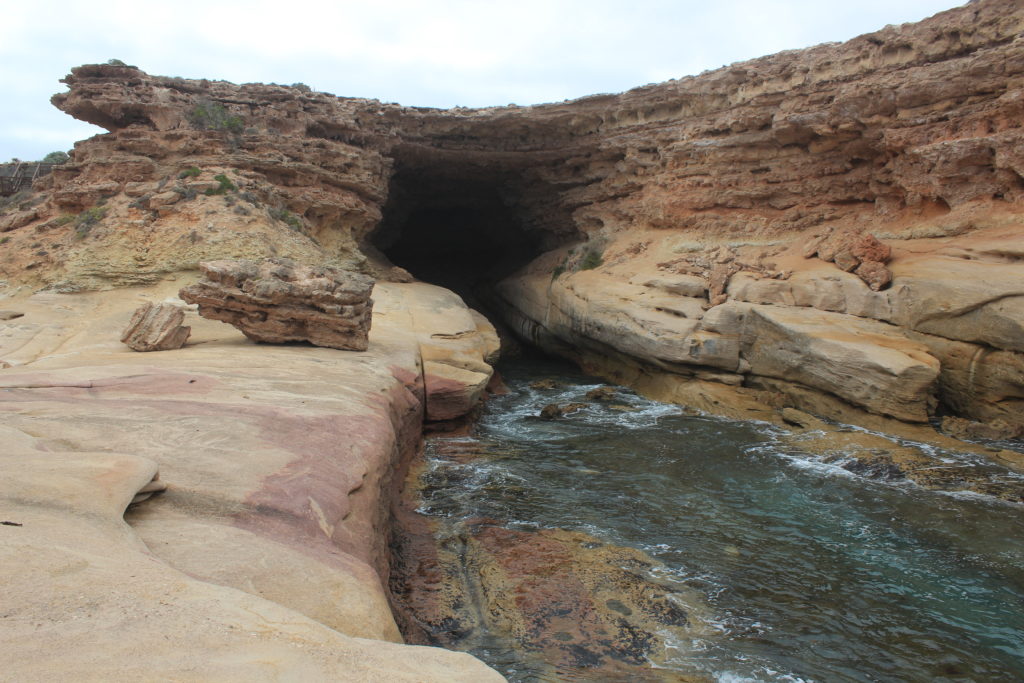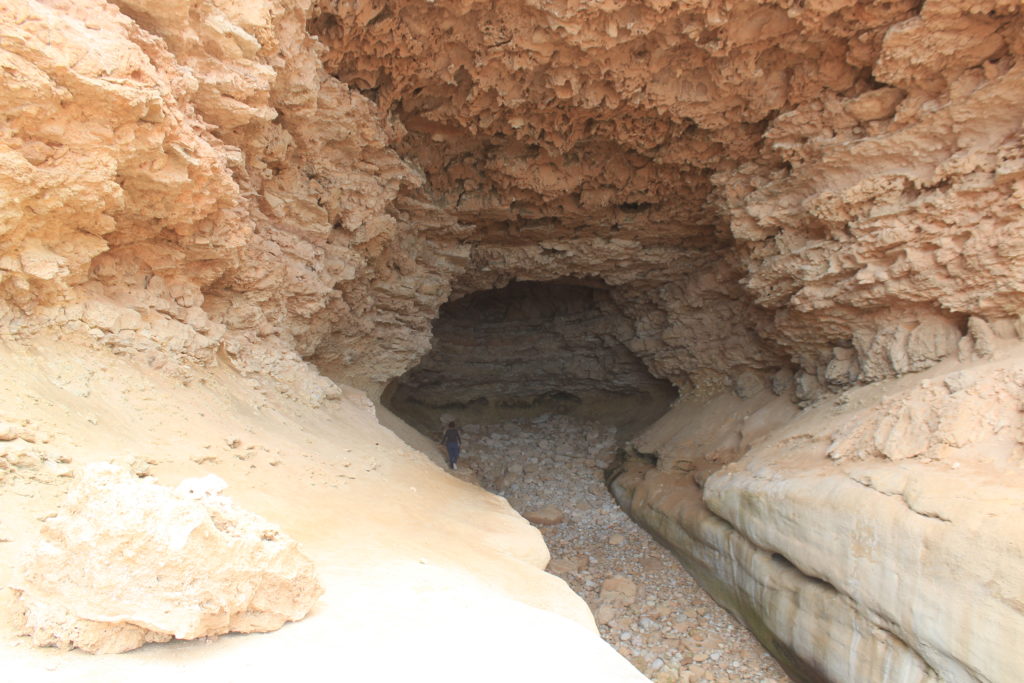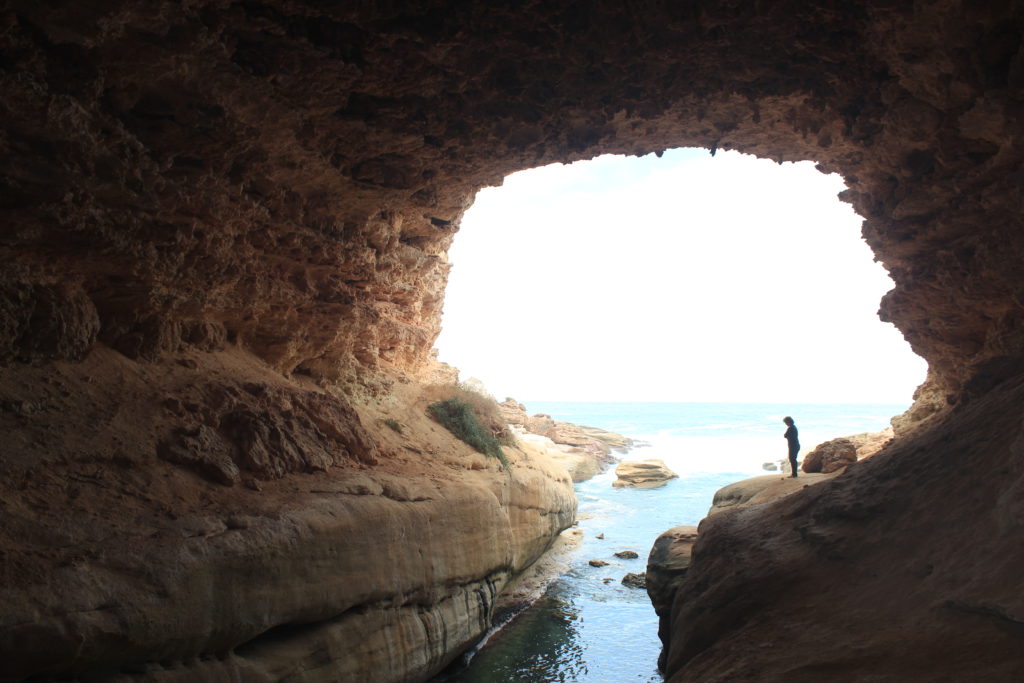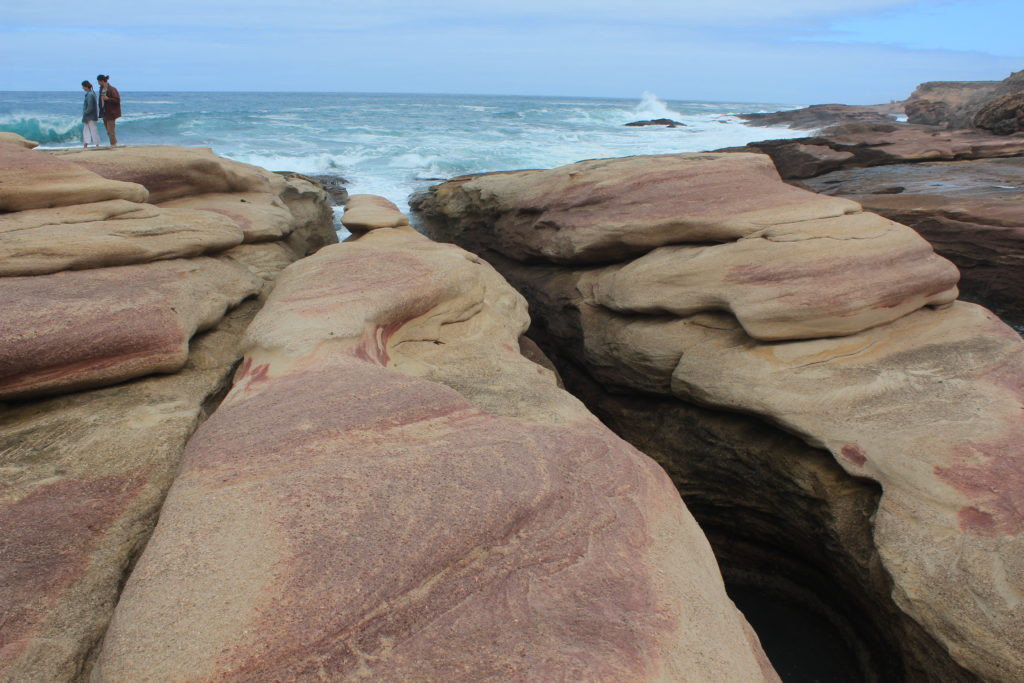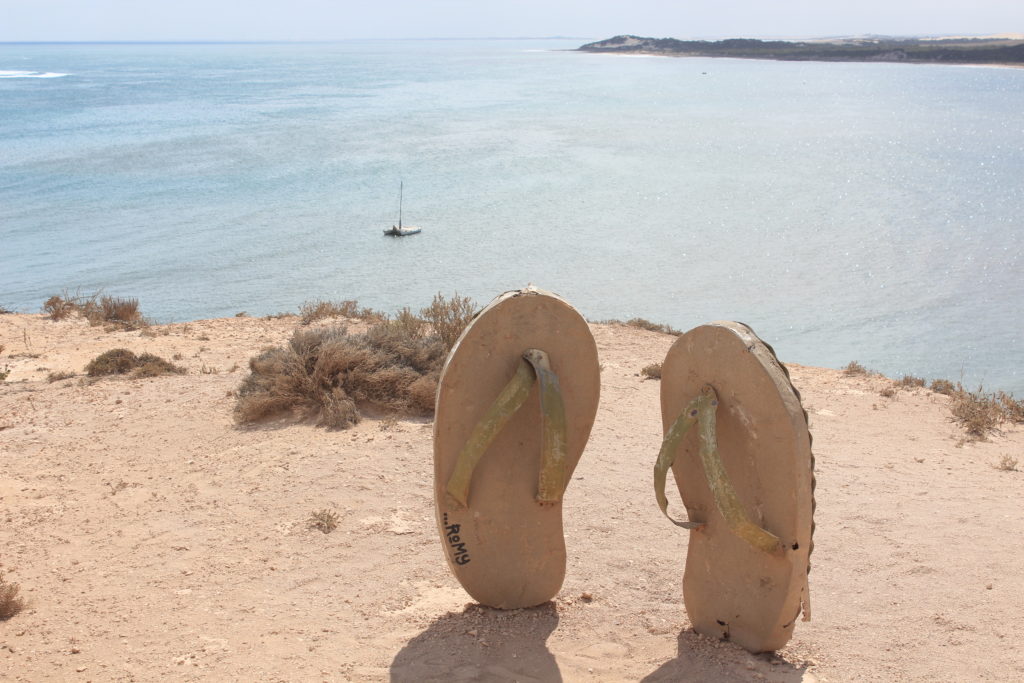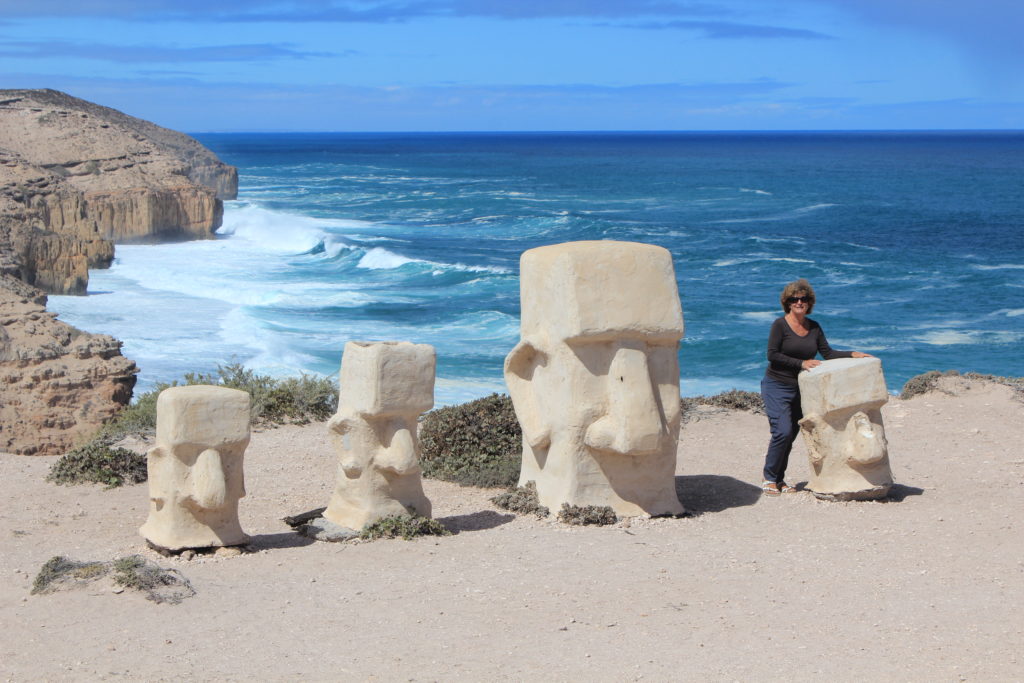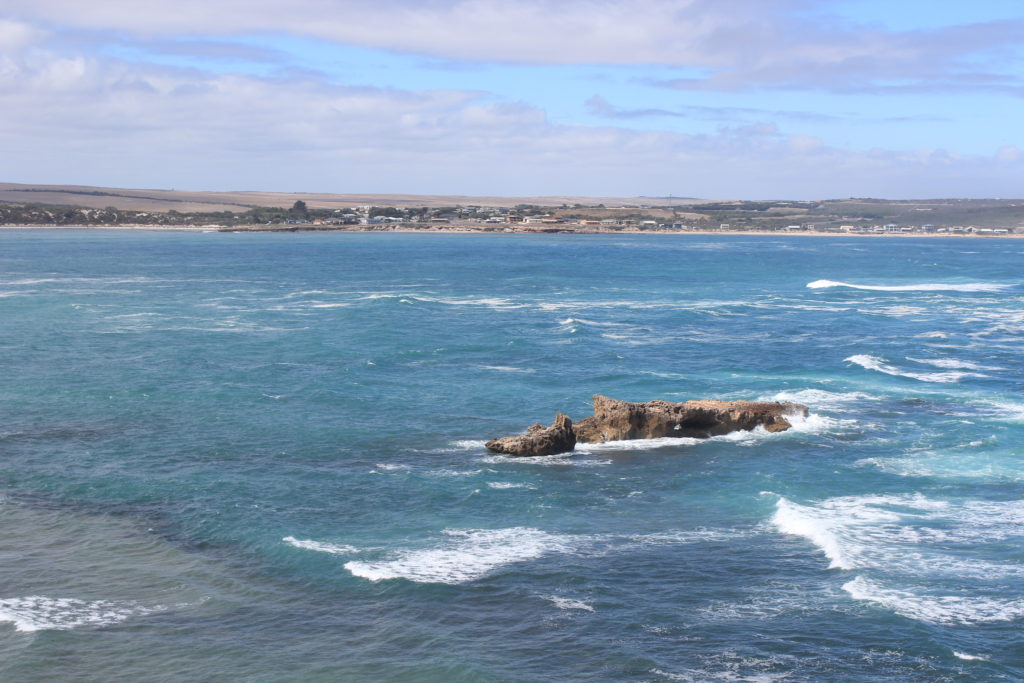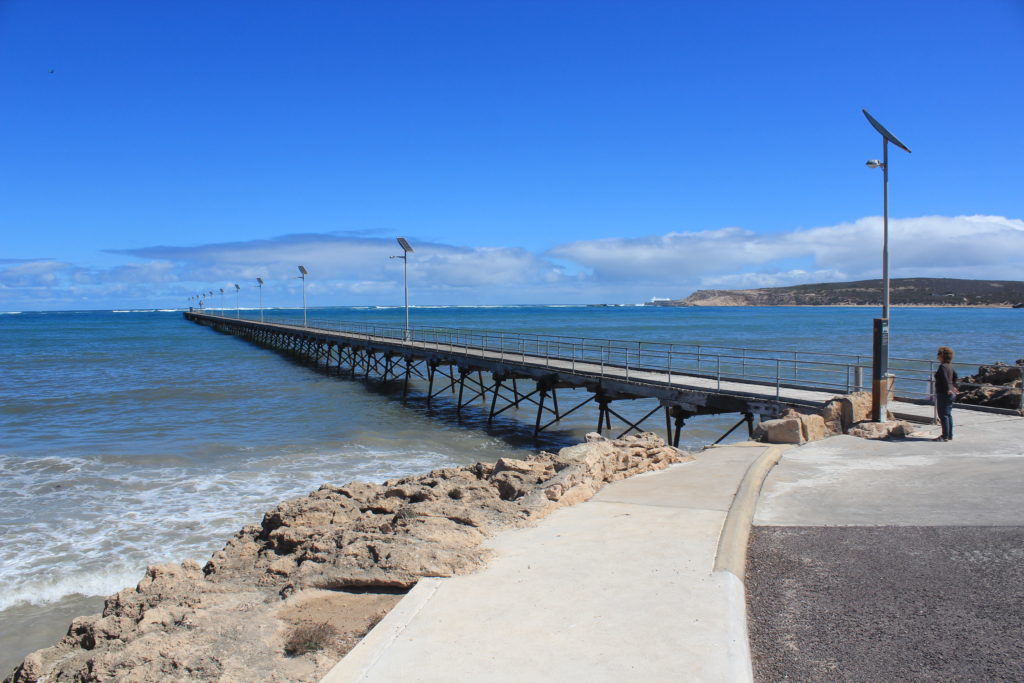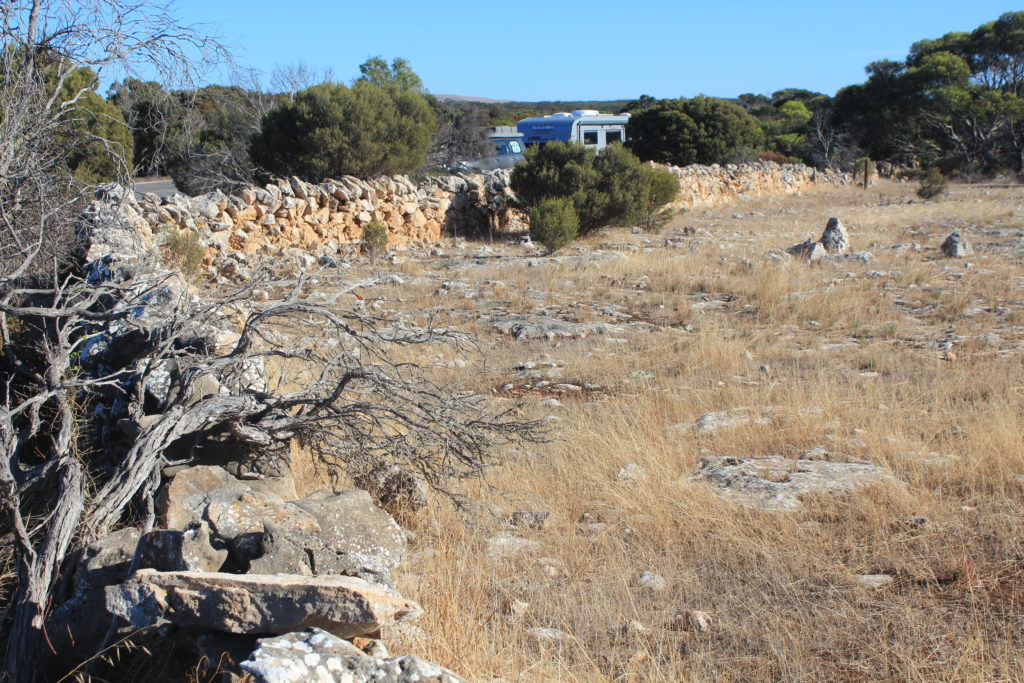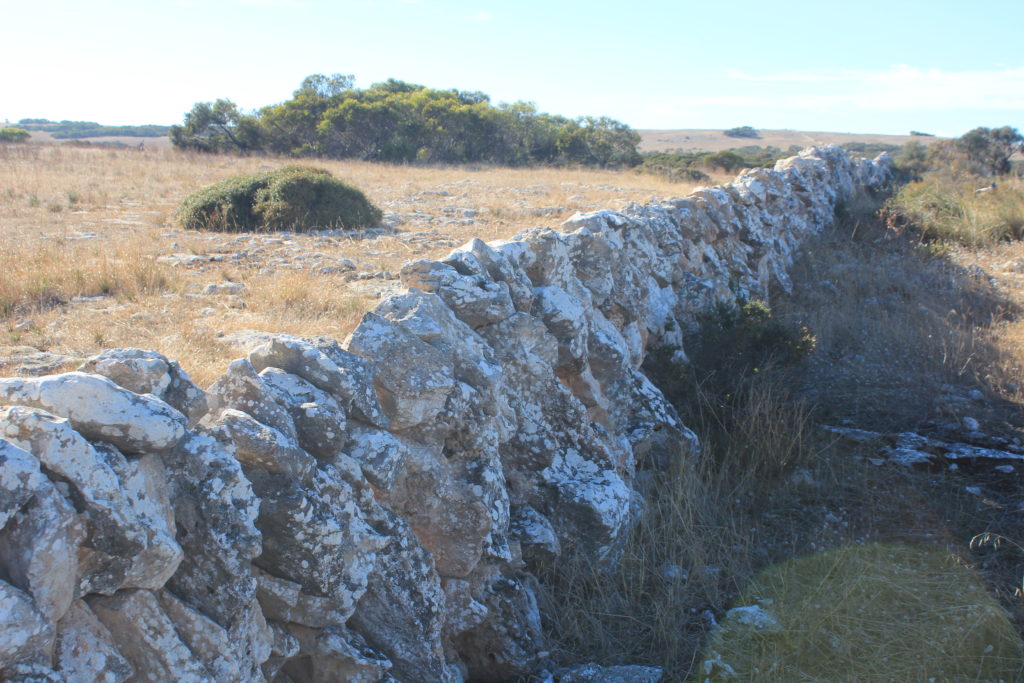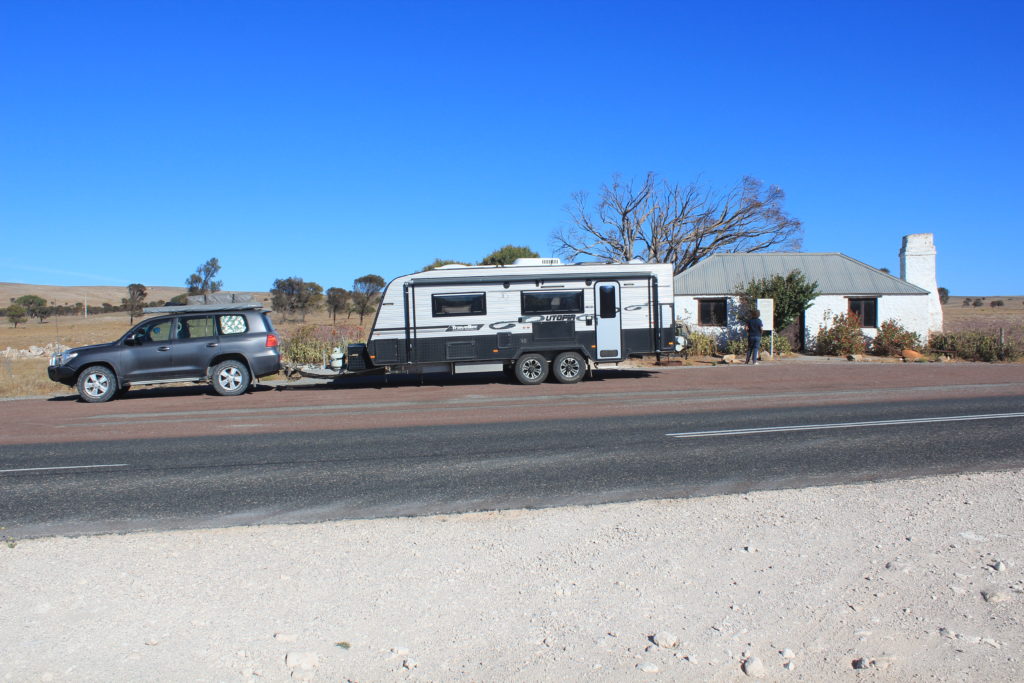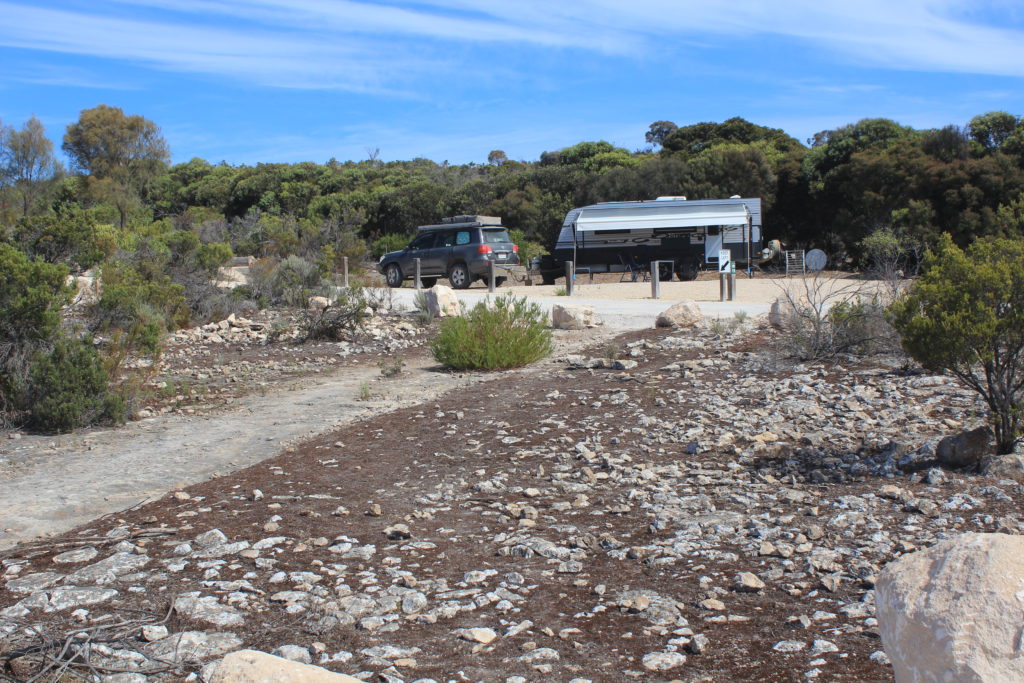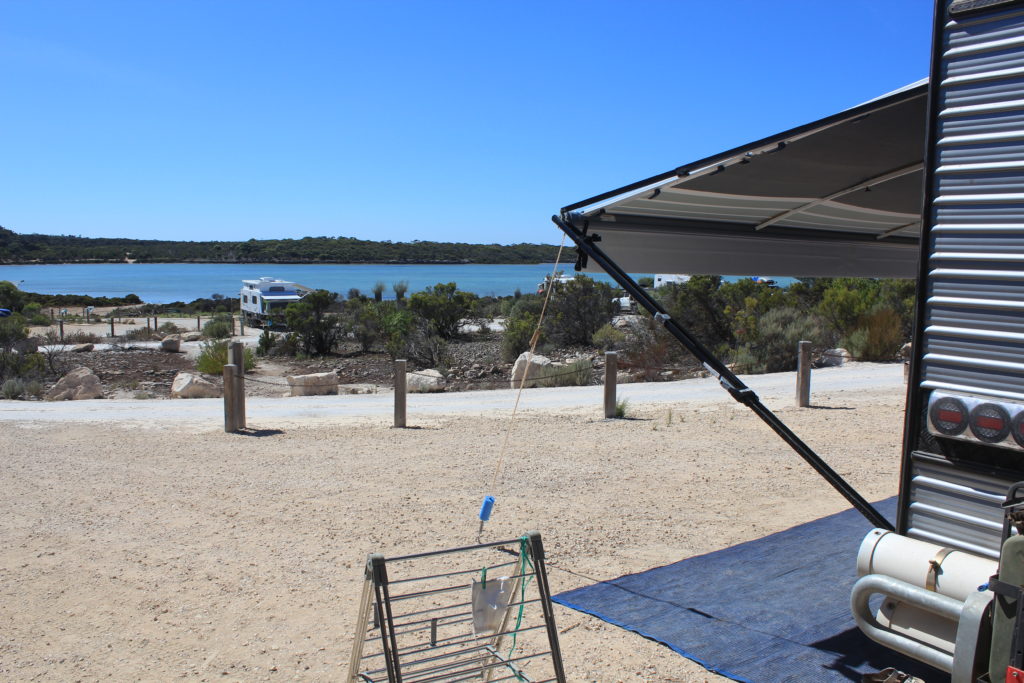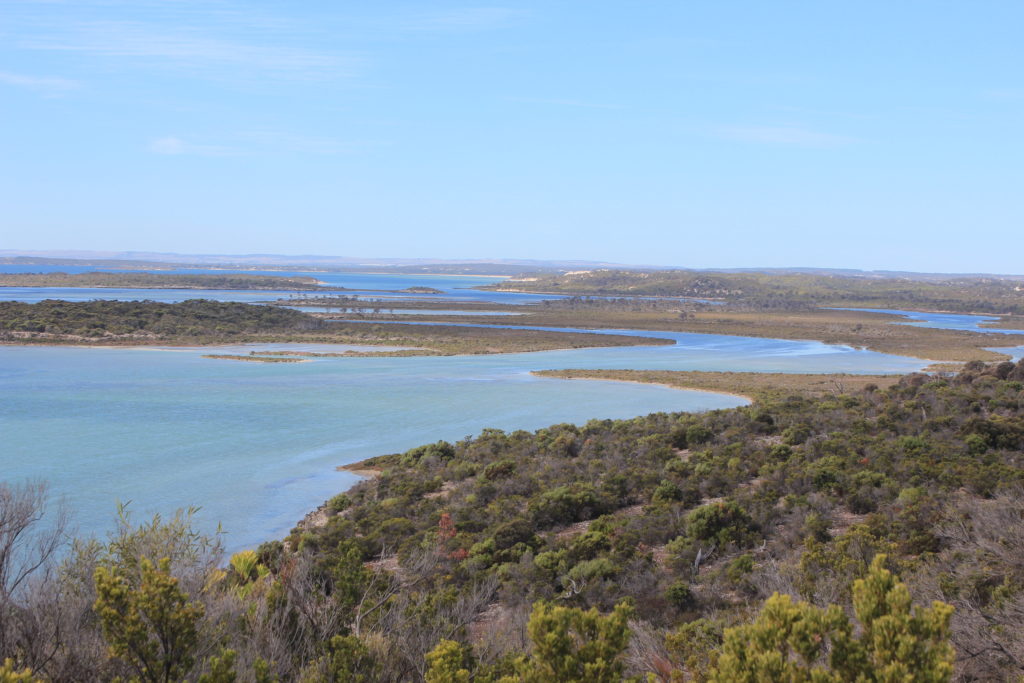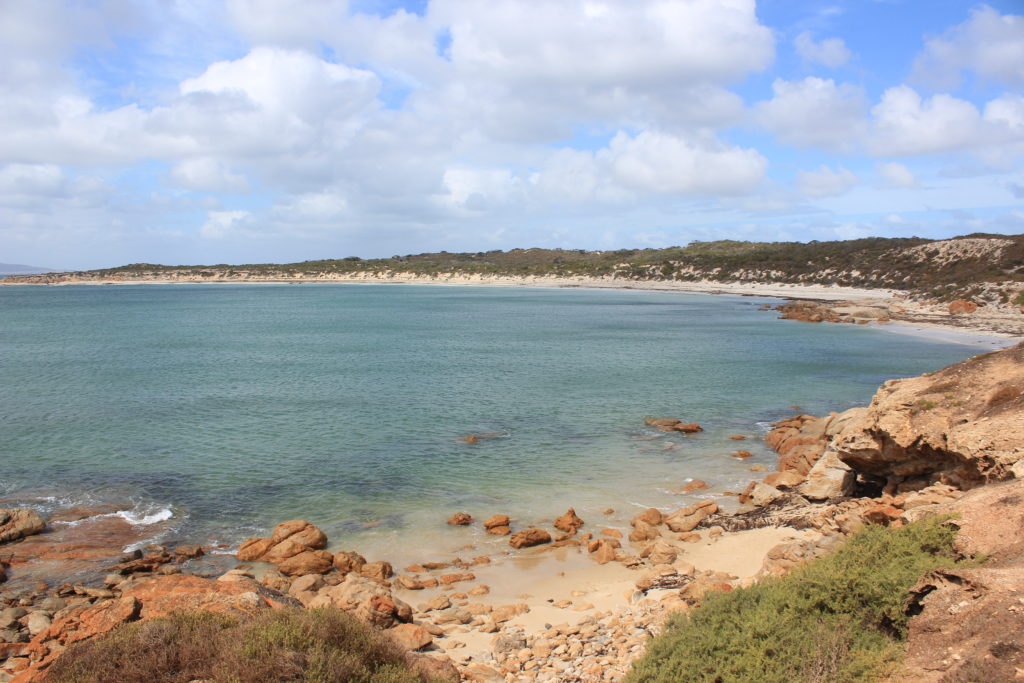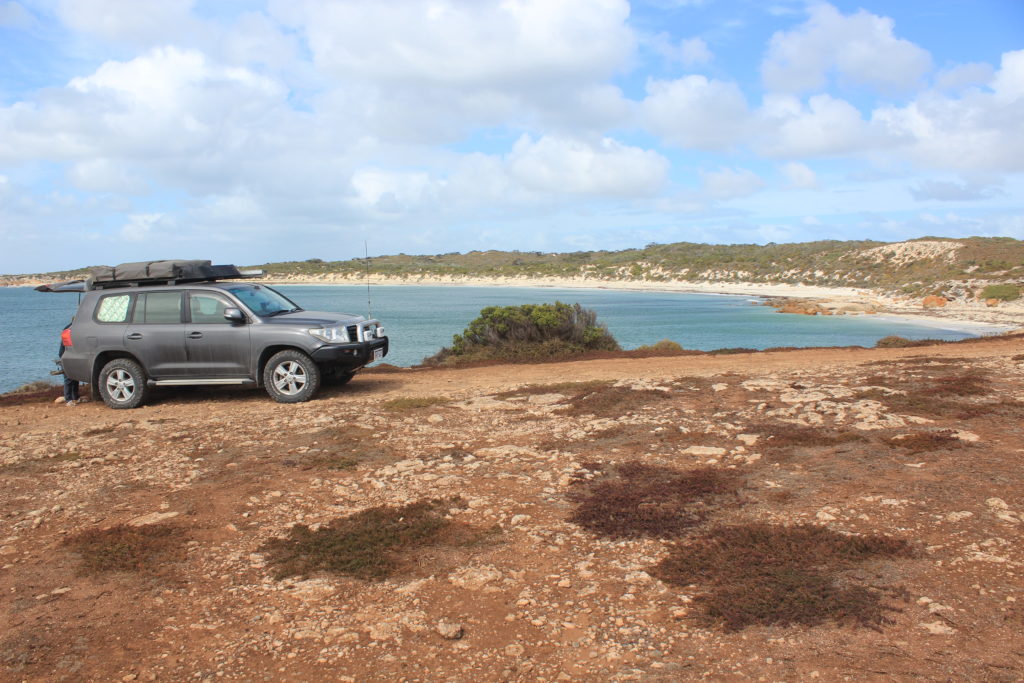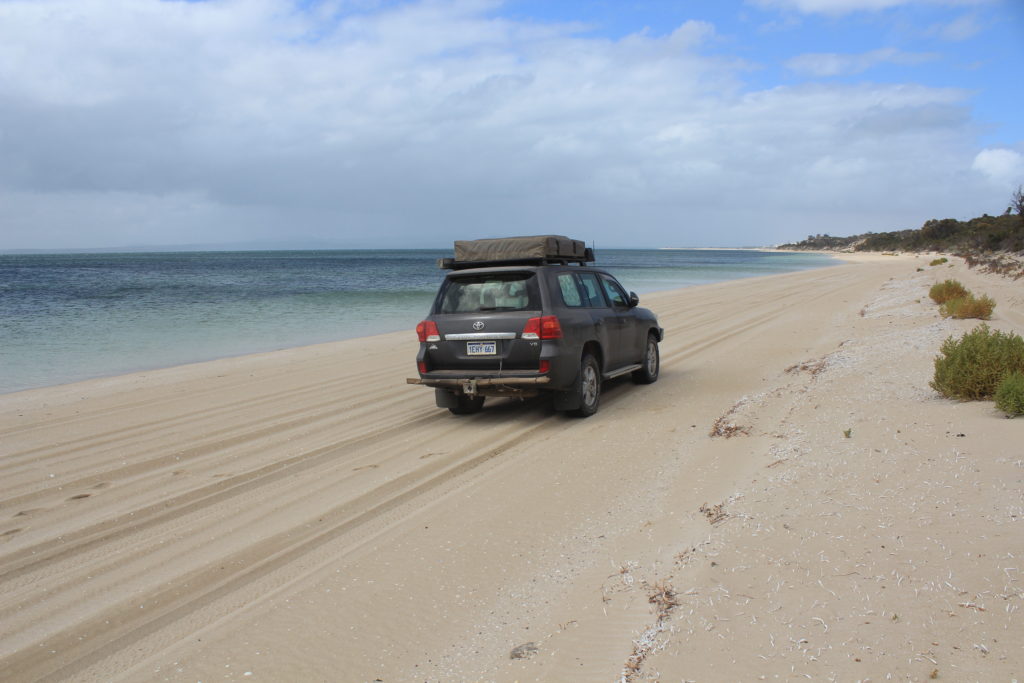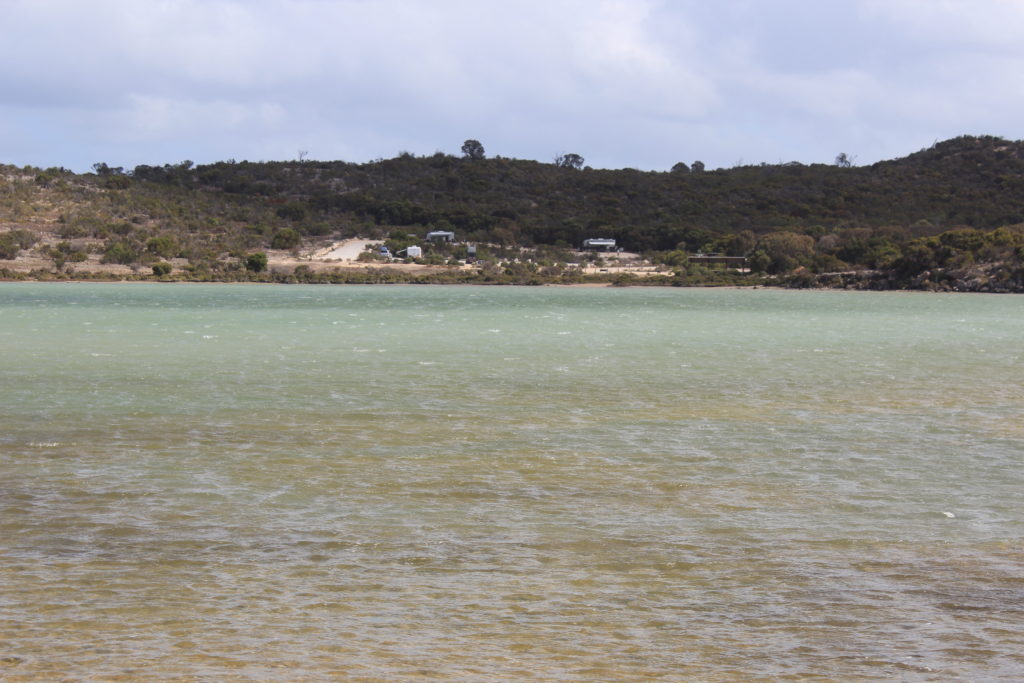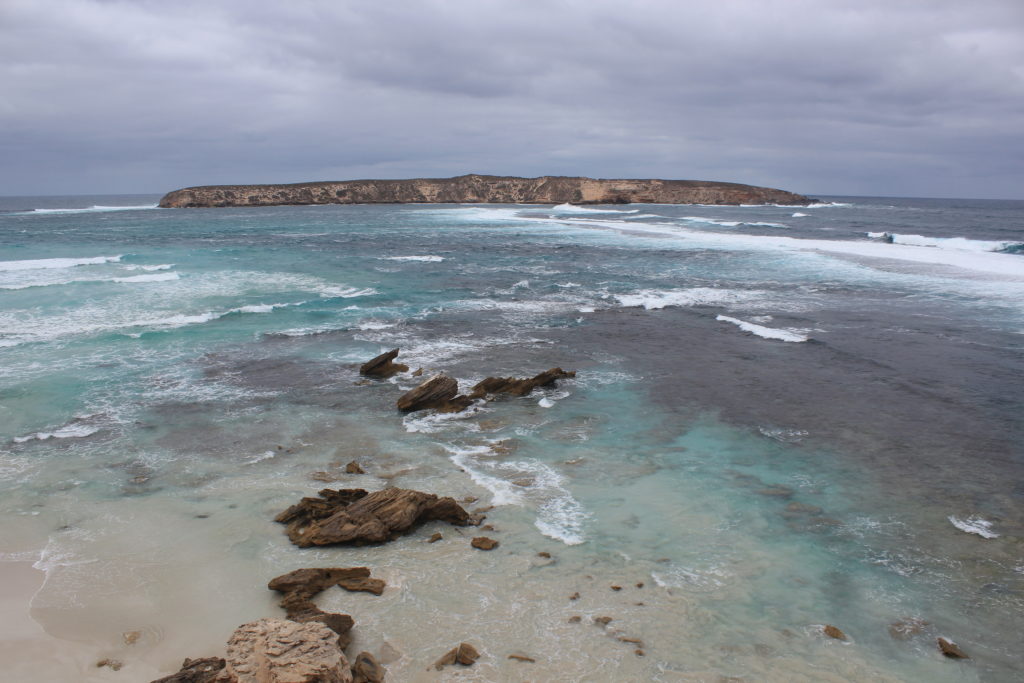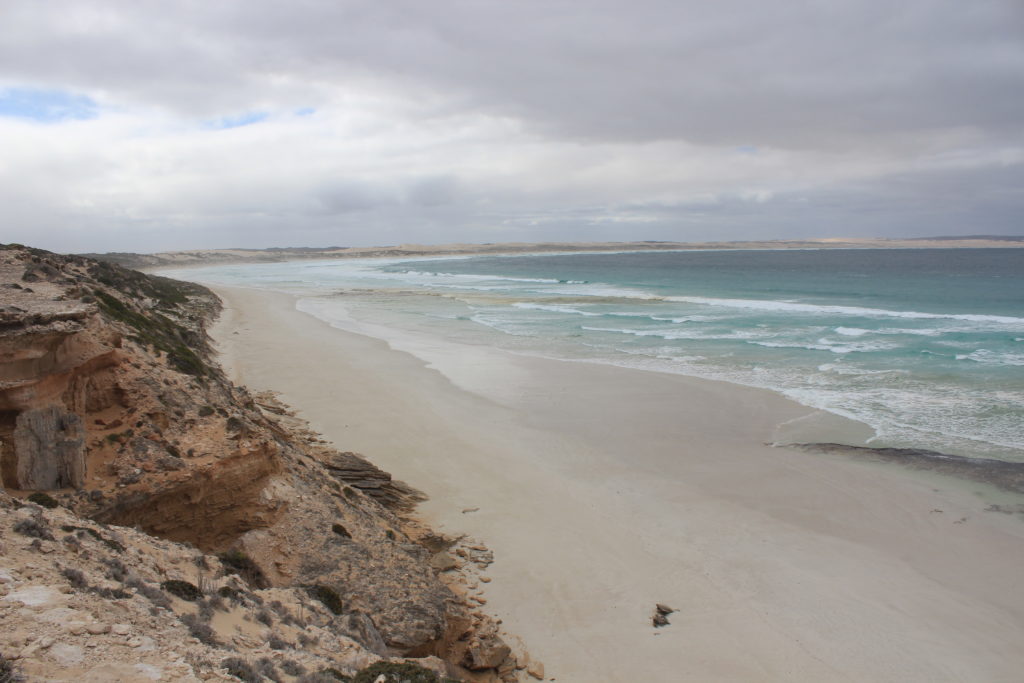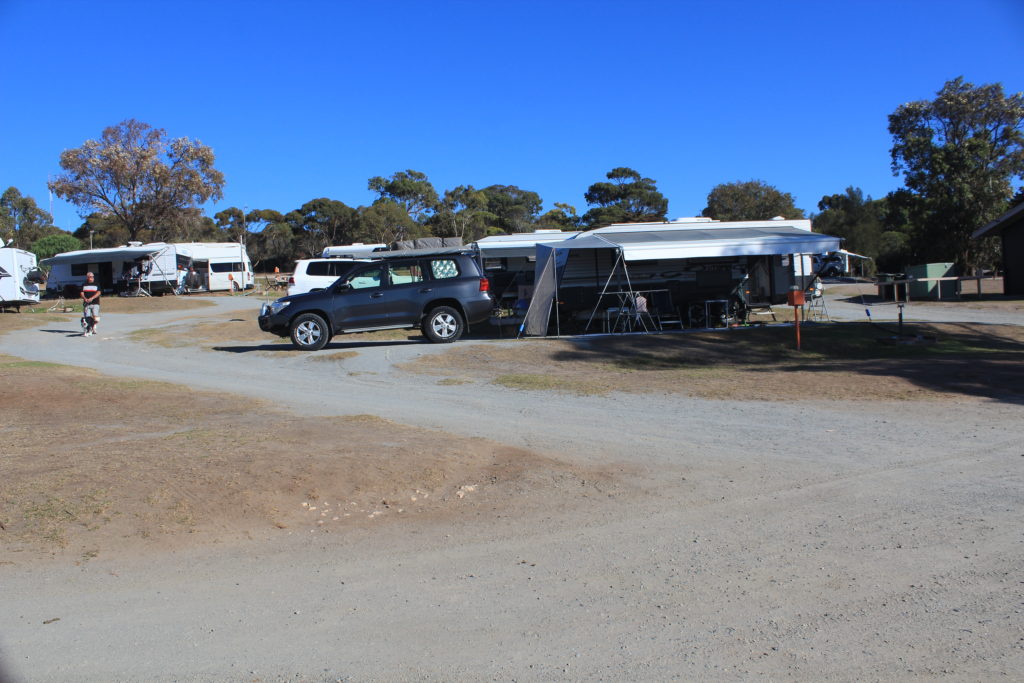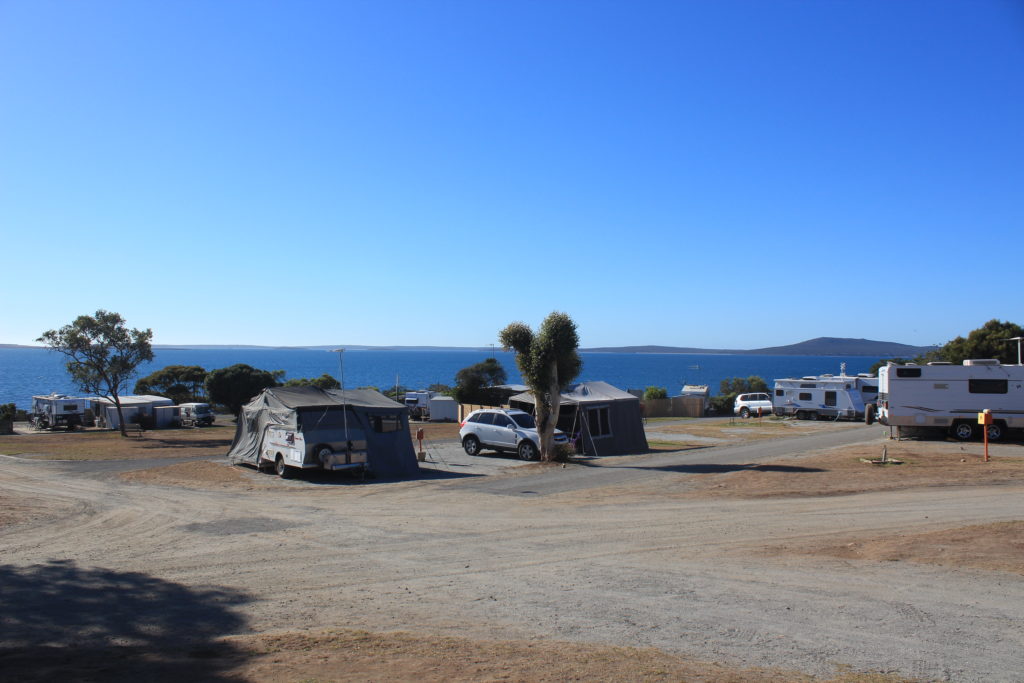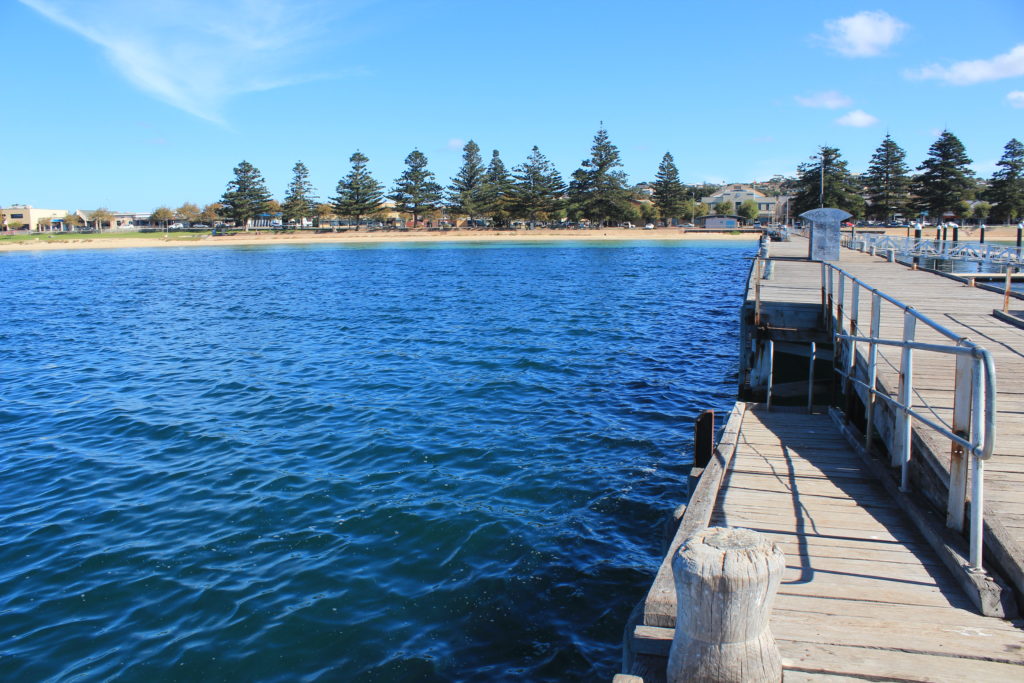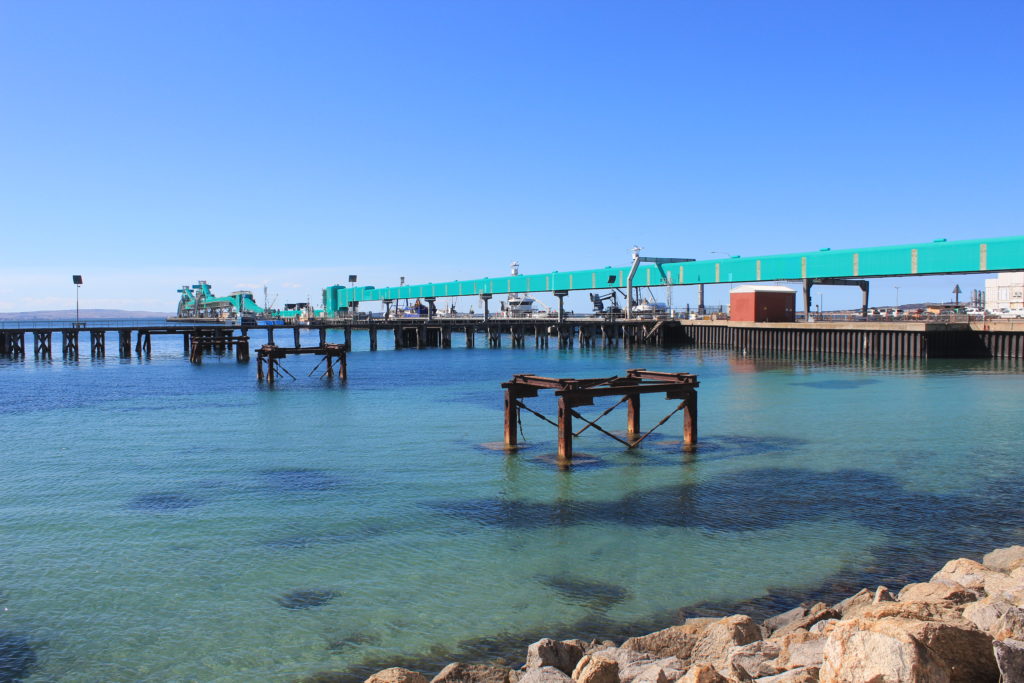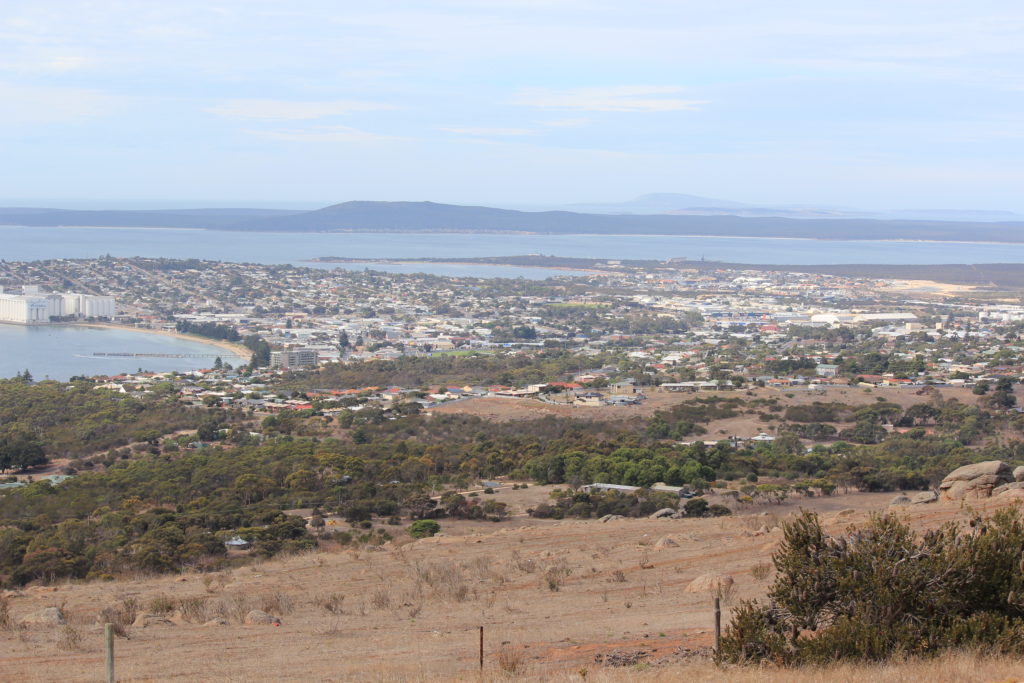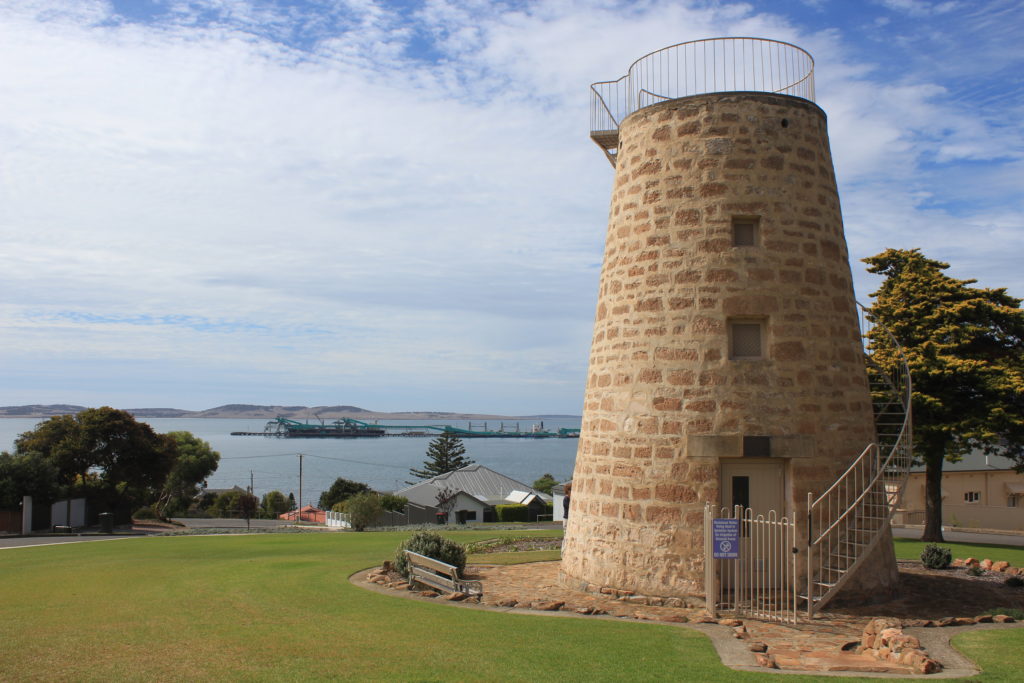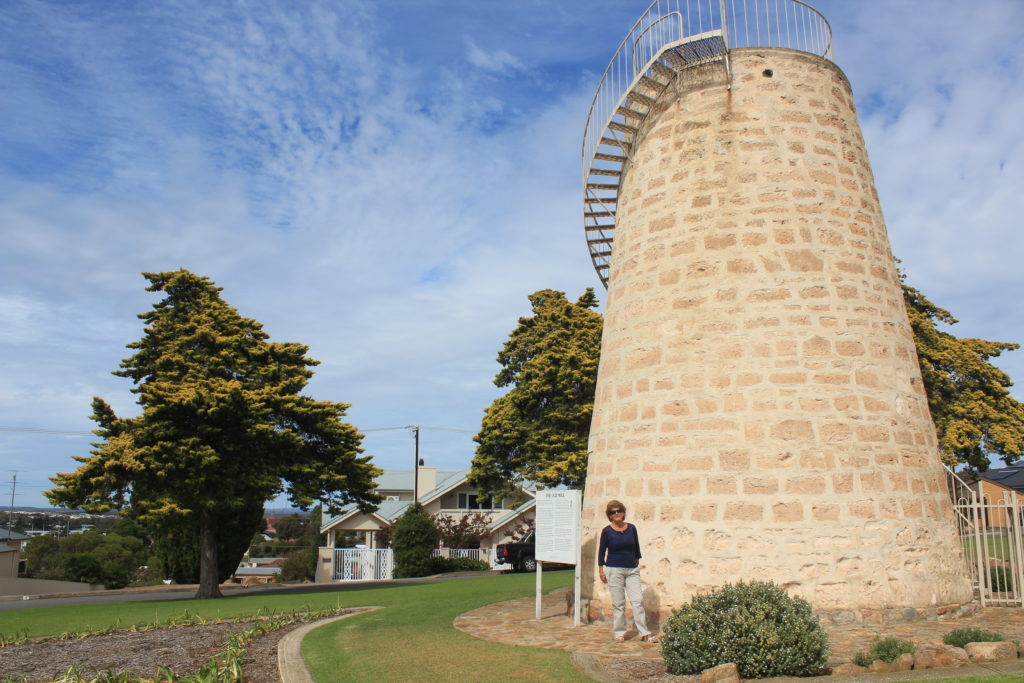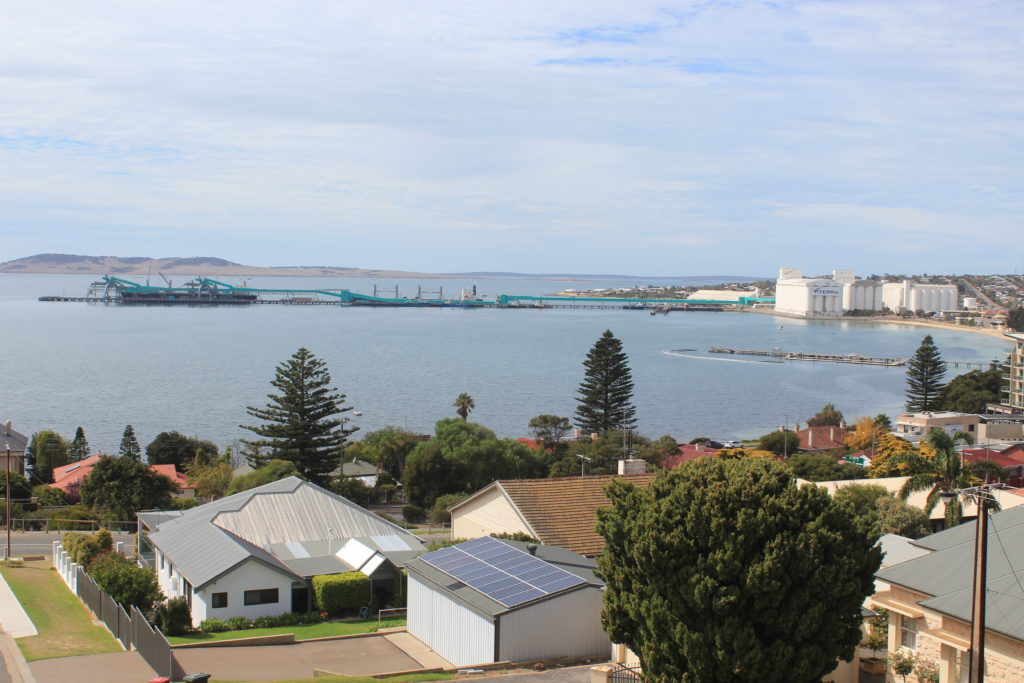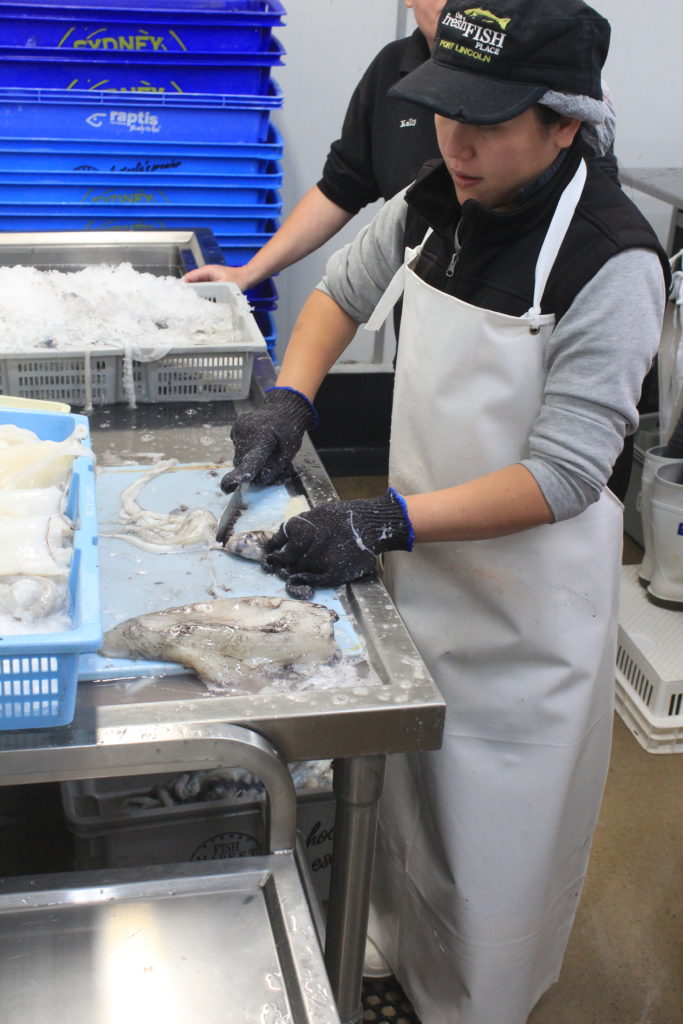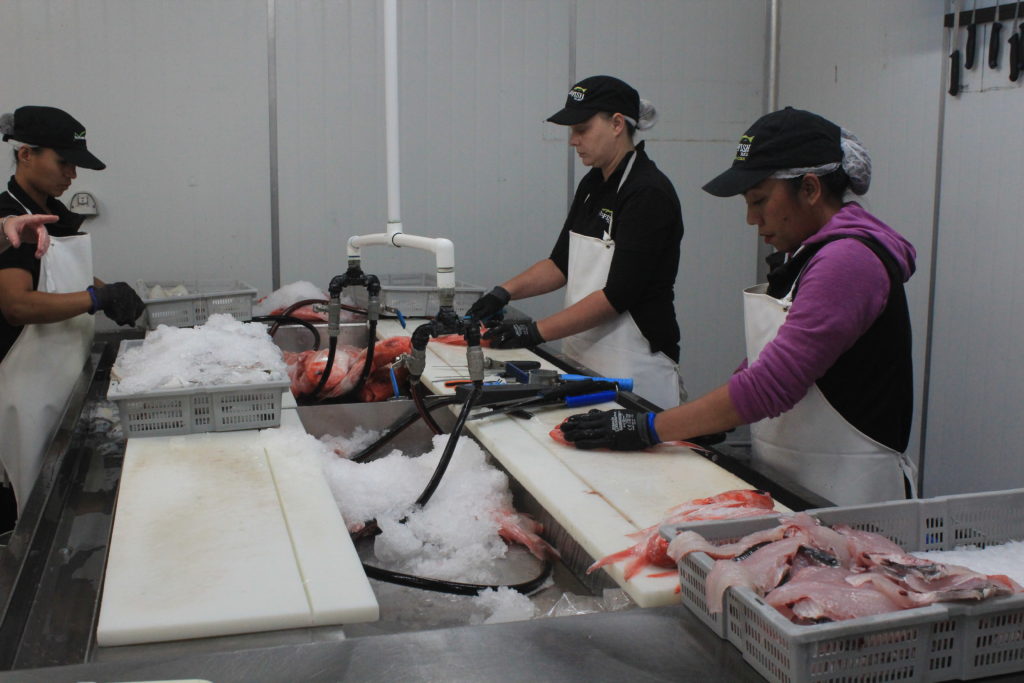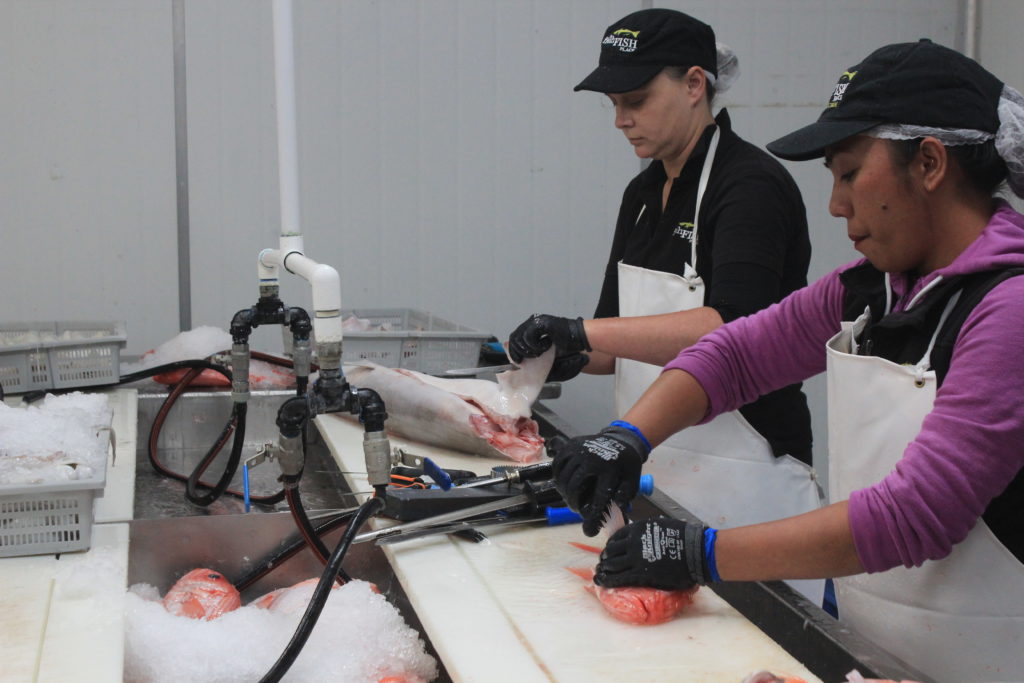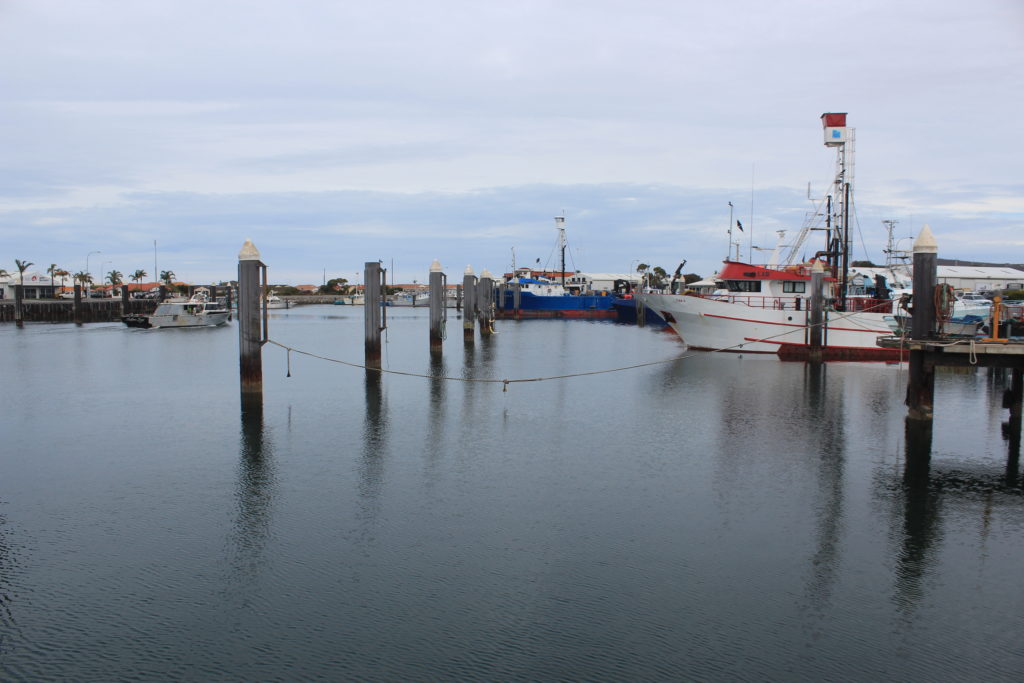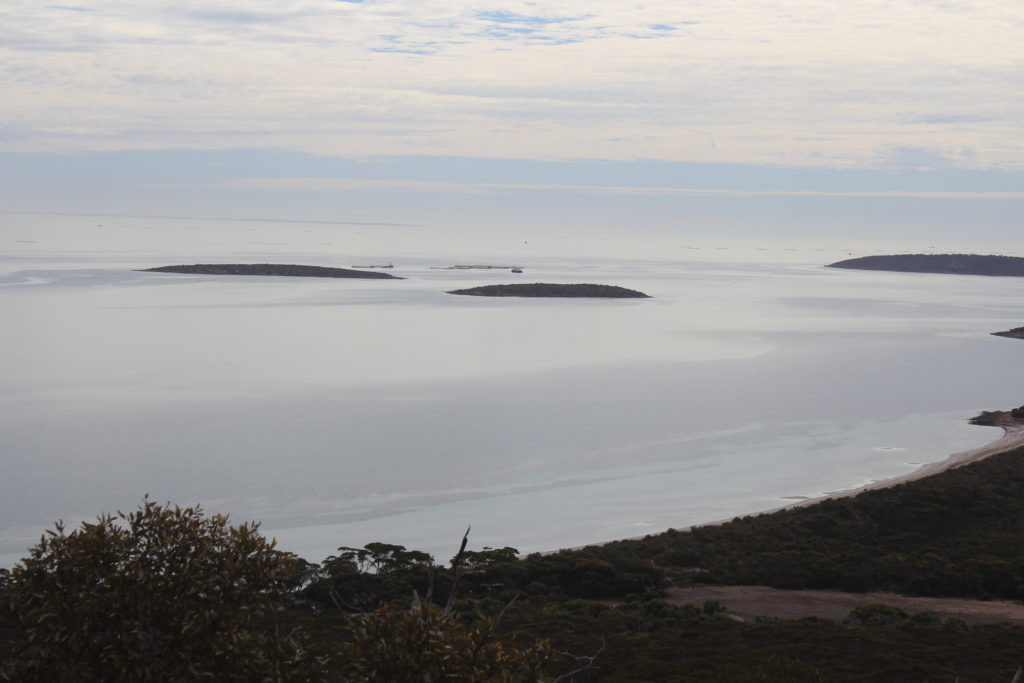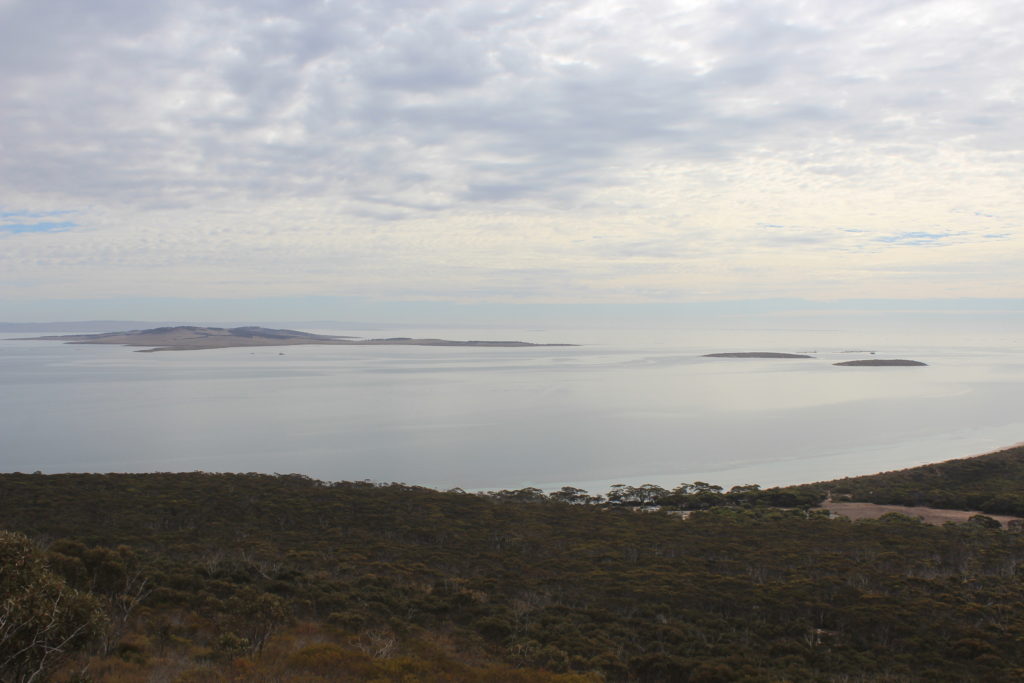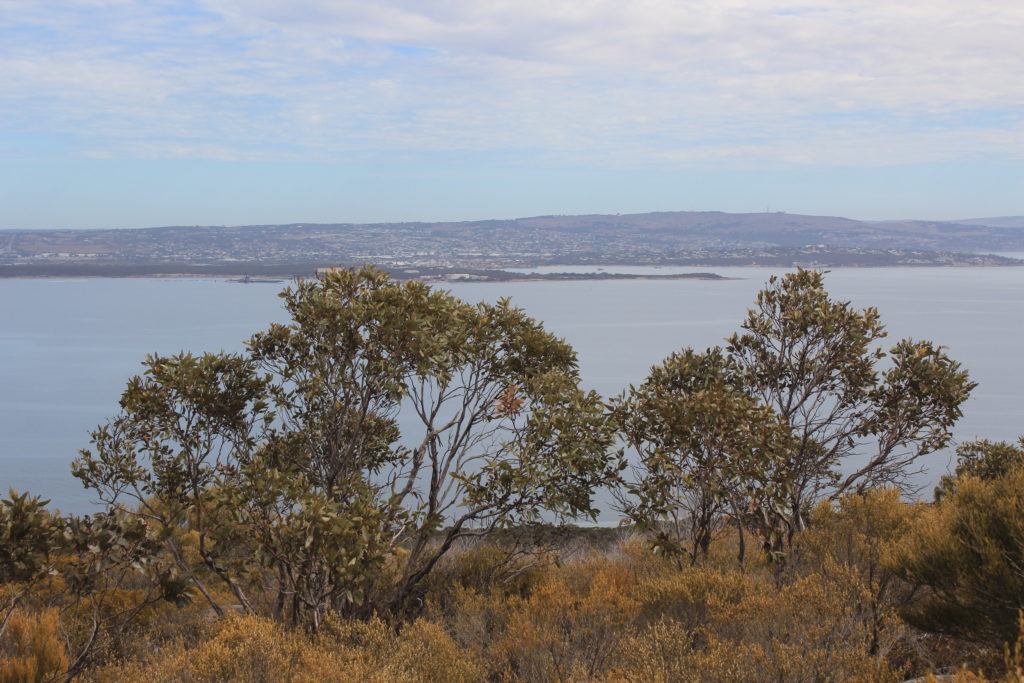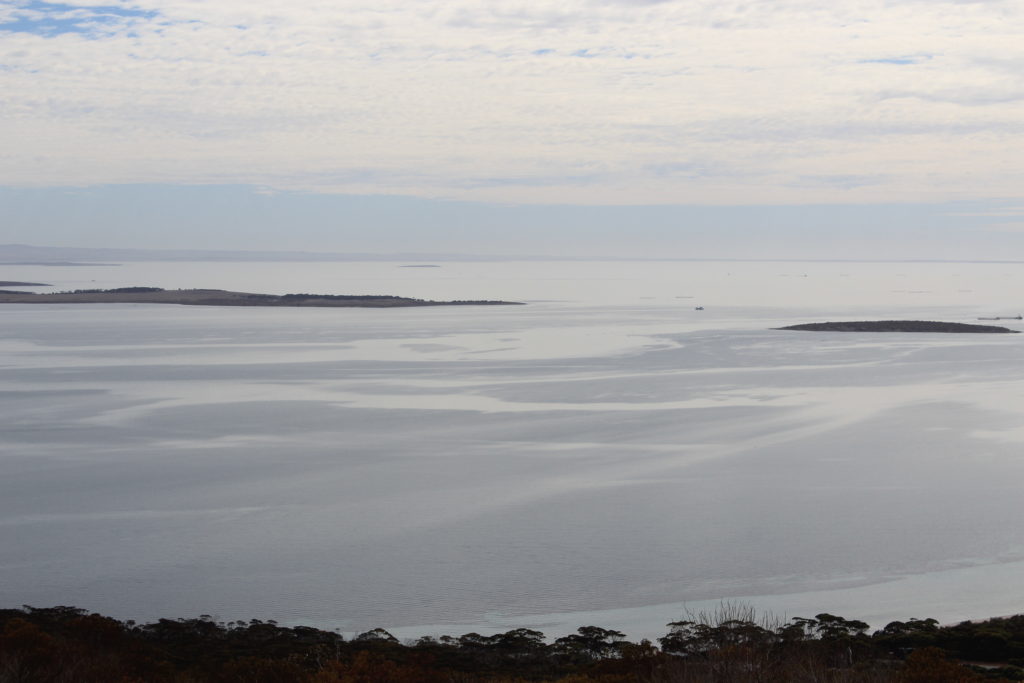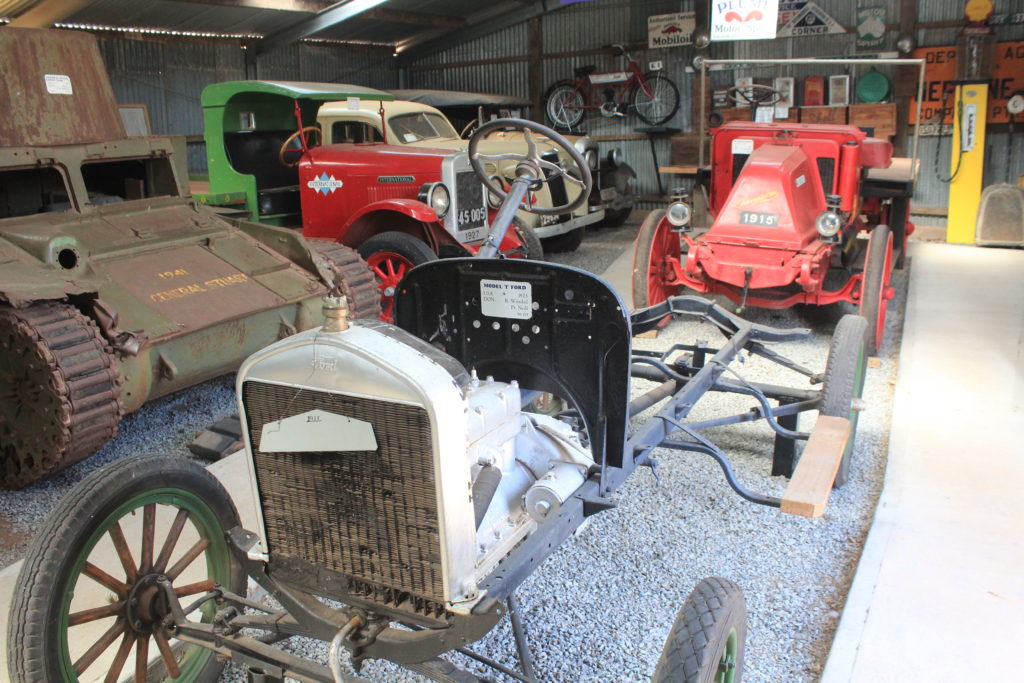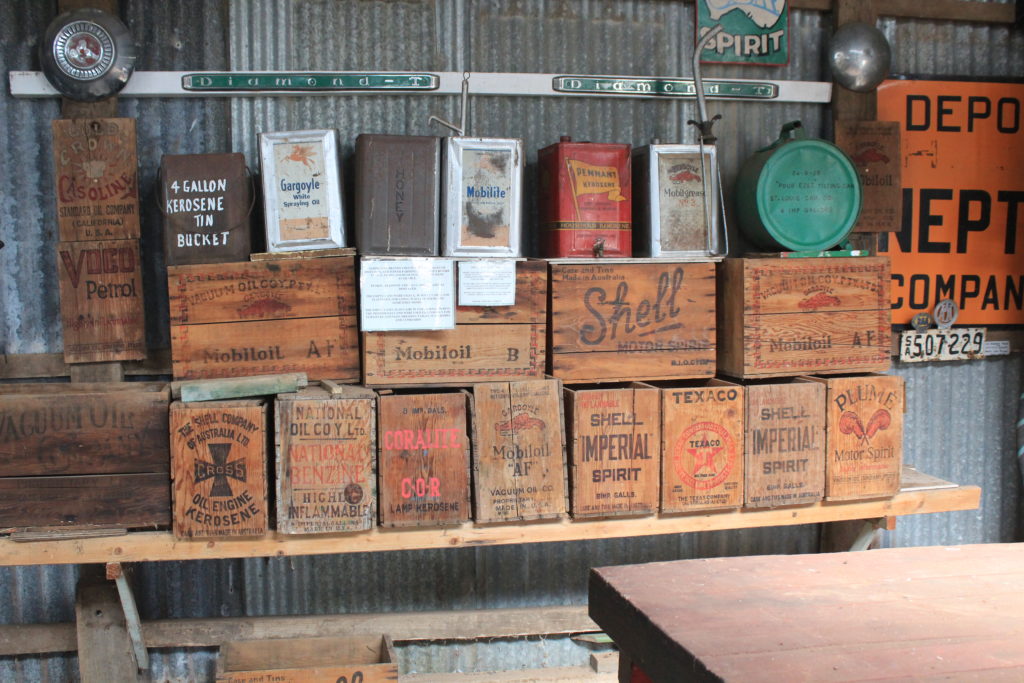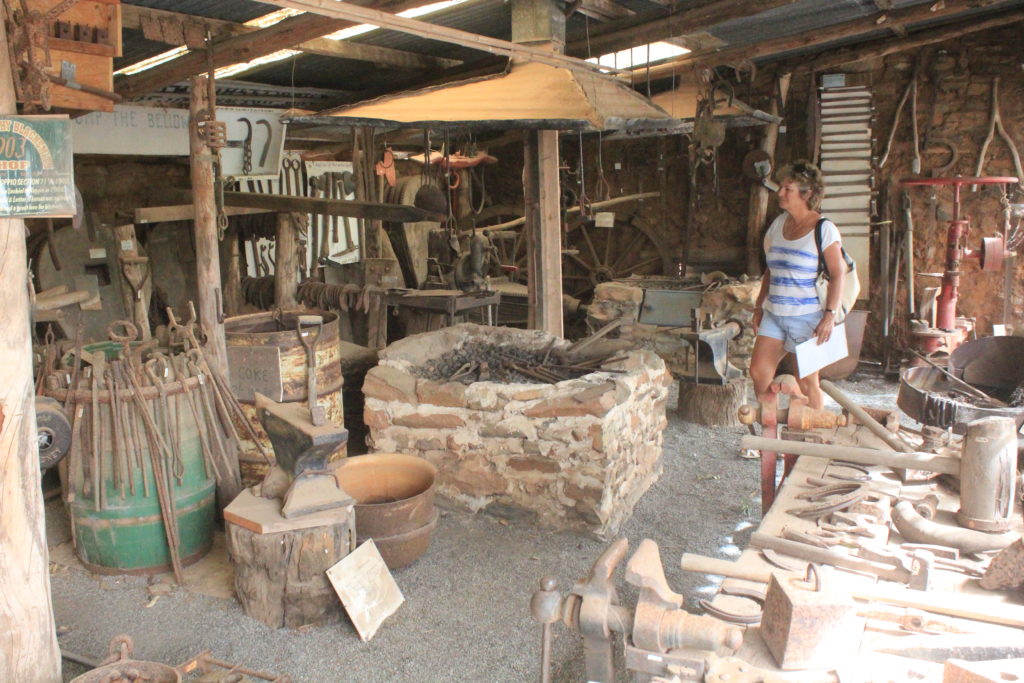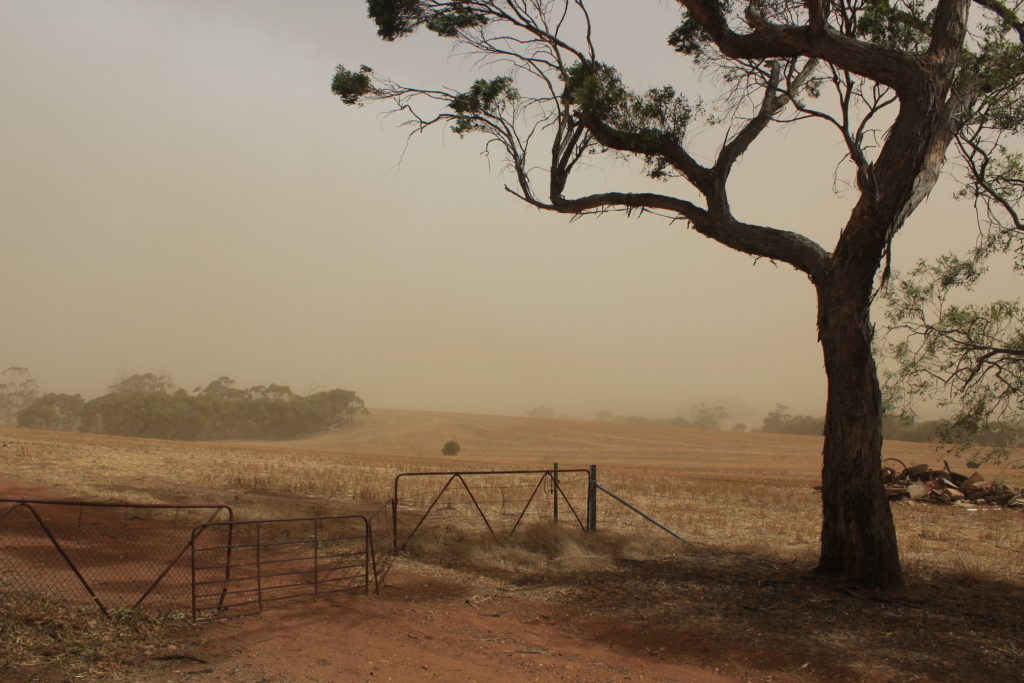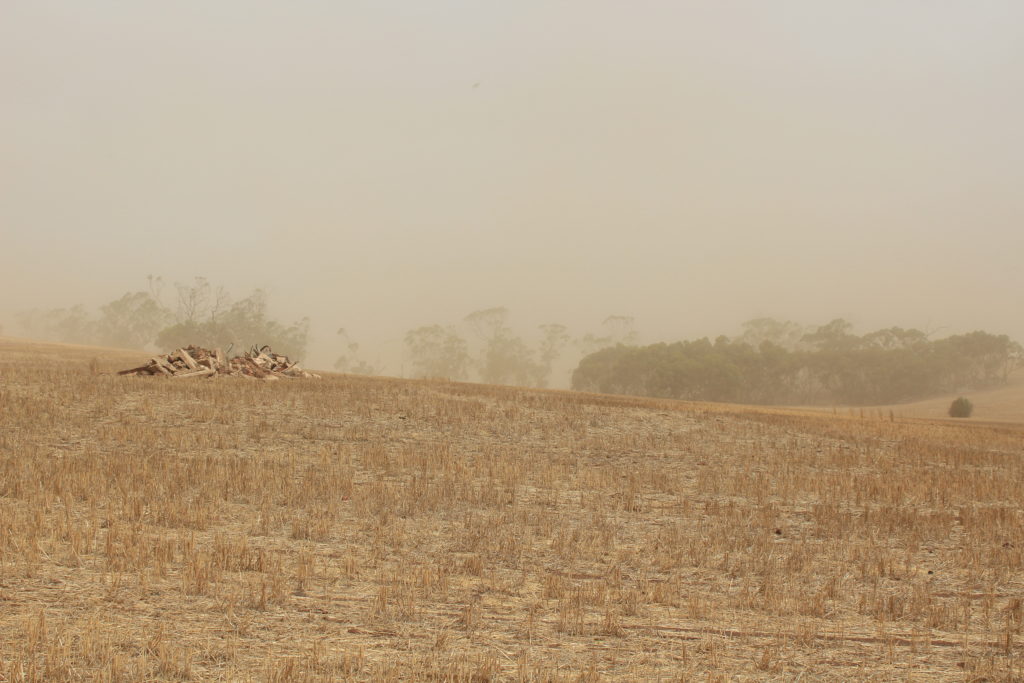Leaving Windorah was the start of our slow trip back towards Goondiwindi. Quilpie was our next destination for a couple of days. After seeing all the traffic in Windorah heading for Birdsville, we certainly copped a lot more on the way to Quilpie. It is a single lane bitumen road to Quilpie and its a pity some people don’t know how to pass on these roads. Lots of drivers get completely off the road and spray rocks every where. It was a 250km trip to Quilpie and we must have passed over 150 caravans and campers heading towards Birdsville in that distance.

We booked into the Channel Country Tourist Park in Quilpie. They had a deal for a three day stay so we took advantage of the offer. They had no regular powered sites left and gave us one at the back on some grass. It was probably one of the best sites in the park as we had no neighbours and grass. The regular sites just had dirt and concrete slabs. We weren’t complaining at all.
Quilpie has a few sites to see if you want to spend the time looking around. They have an excellent small military museum that has some great displays. Quilpie is also known as the “end of the line”. Quilpie was proclaimed a town in 1917 due to the arrival of the rail from Charleville. This was where the rail line finished and to this day is still known as the “end of the line”. We did a sunset drive out to Baldy Top Lookout and had the obligatory wine while the sun set. Considering how busy the town was with tourists we were the only ones out there which did surprise us.
Quilpie is also known as the “Jewel of the Outback”. This is where they find the boulder opal. You can buy lots of souvenirs around the town as well as find some at the fossicking area just out of town. St Finbarr’s Church in the town has a altar covered in the opals. It mustn’t be a really valuable type of opal though because when we arrived at the caravan park to book in there was a wheelbarrow full of rocks with the opal in it that you could just help yourself to. We also did the Bulloo River Walk on the edge of town that was OK but could do with an upgrade to make it a bit more walker friendly.









Charleville was next on our destination list. We stayed a few kilometres out of town at the Charleville Bush Camp. This is a no smoking/no pets caravan park. It was nice to stay somewhere for a change and not have dogs toileting everywhere. I even got offered a job there as a gardener when we pulled up to book in but all they offered was free accommodation and nothing else, so I very politely declined.
Charleville is quite a large town for the area and does offer good shopping and facilities. You can do a tour of the airport that unfortunately we missed out on that tells quite a remarkable story of the Second World War. During WW11 the USAAF had around 3500 personnel in Charleville and this is where they assembled their bombers for the Pacific War Campaign. Charleville was selected because of is remote location and was too far for enemy planes to reach before running out of fuel on there return flight home. They were also testing a new highly secret bomb siting instrument on the bombers that would provide more accurate bomb drops.
There is also the Charleville Bilby Centre to visit as well. We had never seen bilby’s before so were looking forward to this. They had about six bilby’s in their little nocturnal house to look at. They have a good breeding program going and release them into the bush quite often. Just a pity the light in the compound wasn’t a little bit easier to see them though.
Another interesting Charleville story is around 1902 when a well known meteorologist named Clement Wragge came to Charleville in the time of a severe drought in the hope to make it rain. He used some “cannons” called Stiger Vortex Cannons that would shoot air up to clouds and hopefully make rain. These were a European design that supposedly had been used successfully in Europe. Needless to say the experiment wasn’t a success. Clement Wragge was also the founder of the Meteorological Society of Australia and was also the first person in the world to give names to cyclones.
The day we arrived in Charleville the town had got together to try and break the record for the worlds longest damper. They used to hold it before some nasty Europeans broke the record and made one about 111 metres long. We got there not long after the damper had been cooked and they did set a new world record. The new record is now 153.002 mtrs. Mustn’t forget the all important 2mm at the end. Any way well done Charleville and we also got a piece of the damper to take home, cant beat that.













Mitchell was our next one night stop. This was just a small town that had a great butcher. Recommend this place if you need some meat supplies when passing through. From Mitchell it was onto Roma and the Roma Gun Club for one night. As we had been through Roma previously on our other travels we didn’t really want to stay any longer than one night. A trip to Woollies’ and a top up with fuel was the extent of our Roma visit.
From Roma our next stop over was a very small place called Meandarra. They have great little caravan park in Meandarra that is only $10 pn with power and water. Why would you free camp at those prices. We did a walk from the caravan park into the town centre which wasn’t very long at all. In the main street we saw the Meandarra ANZAC Memorial Museum so decided to go in for a look. What an excellent display they have. The local community have really done an impressive job with the display and collection.

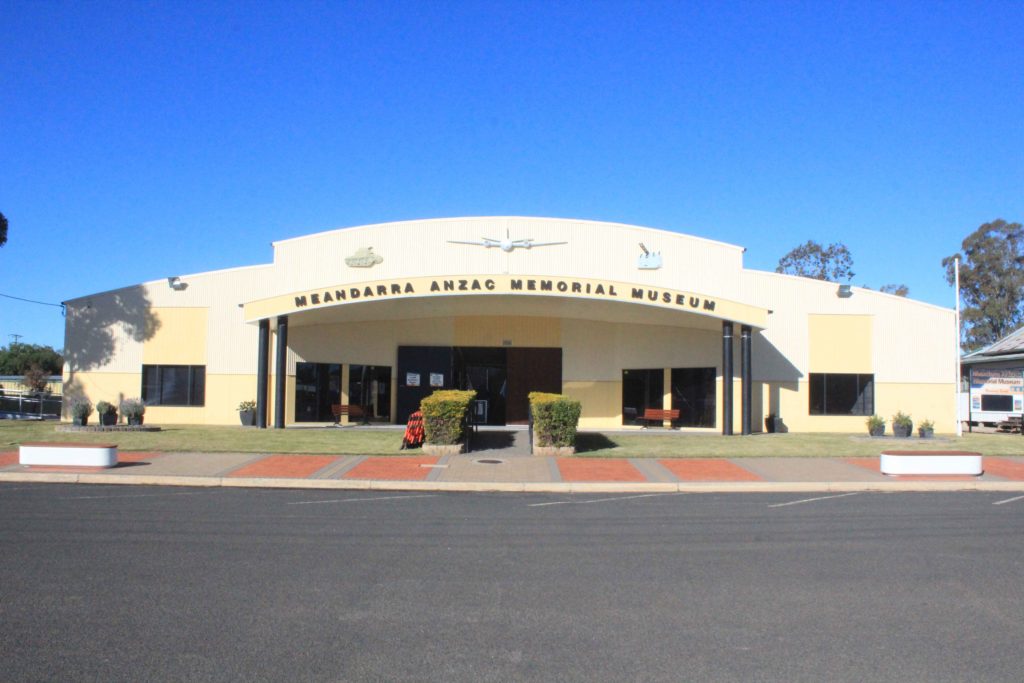
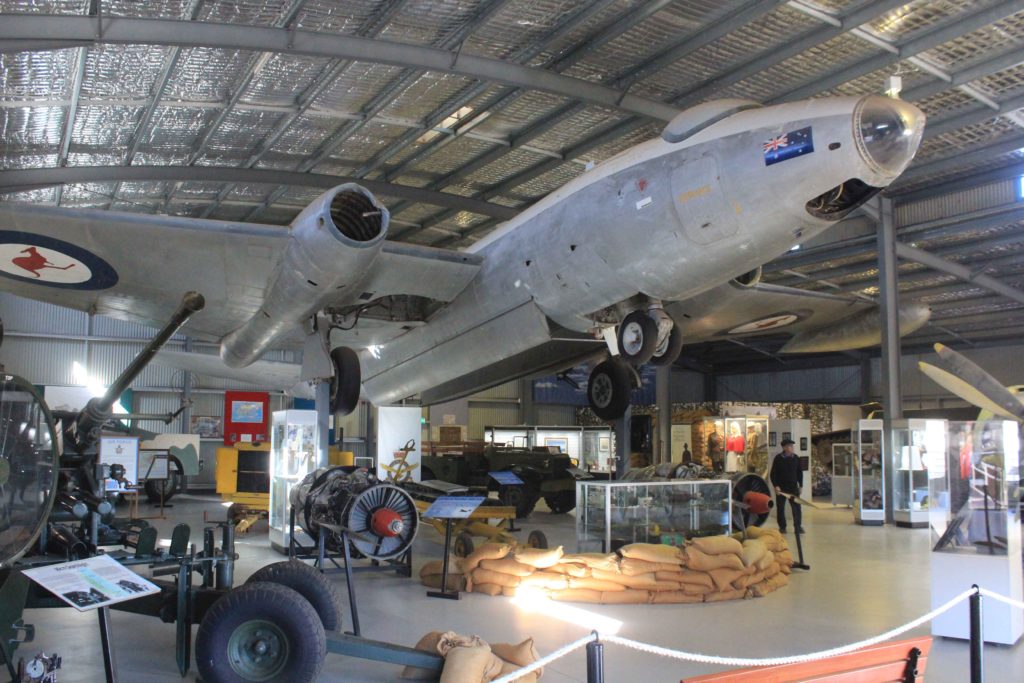





Our next stop is back to Goondiwindi again. We seem to be regular visitors to this town. We are meeting up with Jade and the boys for a week of camping. Jade wants to get away from the cold Canberra weather for a while. I hope the weather is good enough as we think its pretty bloody cold here at the moment. Should be good fun as we have a farm stay organised.

























